Brother XL-6040: ПОЖАЛУЙСТА, ПРОЧИТАЙТЕ ПЕРЕД НАЧАЛОМ ЭКСПЛУАТАЦИИ МАШИНЫ
ПОЖАЛУЙСТА, ПРОЧИТАЙТЕ ПЕРЕД НАЧАЛОМ ЭКСПЛУАТАЦИИ МАШИНЫ: Brother XL-6040

ПОЖАЛУЙСТА, ПРОЧИТАЙТЕ ПЕРЕД НАЧАЛОМ ЭКСПЛУАТАЦИИ МАШИНЫ
В целях безопасности
1. Всегда следите за иглой во время шитья. Не прикасайтесь к маховику, механизму подтягивания нитки, игле или
иным движущимся деталям машины.
2. Помните о необходимости выключить выключатель питания и отсоединить шнур питания от розетки в следующих
случаях:
• Когда Вы закончили работу на машине
• Когда Вы меняете или снимаете иглу или иные детали
• Когда произошел сбой питания во время работы машины
• Когда Вы проводите обслуживание машины
• Когда Вы оставляете машину без присмотра
3. Запрещается хранить любые предметы на ножном контроллере.
4. Подключайте шнур питания непосредственно к стенной розетке. Не пользуйтесь удлинителями.
Для продления срока службы машины
1. При хранении машины избегайте мест, подверженных воздействию прямых солнечных лучей и повышенной
влажности. Не храните машину рядом с обогревателями, галогенными лампами или иными горячими предметами.
2. Для чистки корпуса машины используйте только нейтральные мыльные или моющие средства. Запрещается
применение бензола, растворителя, или чистящих порошков - они могут повредить корпус машины.
3. Не роняйте машину и избегайте механических ударов.
4. При замене или установке любых узлов машины, нажимной лапки, иглы или иных деталей всегда обращайтесь
к инструкциям руководства по эксплуатации для обеспечения правильности установки.
Для проведения ремонтных работ или регулировок
В случае возникновения неисправности или в случае необходимости проведения регулировок сначала обратитесь
к таблице возможных неисправностей в конце руководства по эксплуатации для проведения самостоятельного
осмотра и регулировки. Если неисправность не устраняется, обратитесь к Вашему уполномоченному дилеру.

KNOWING YOUR SEWING MACHINE
PRINCIPAL PARTS ......................................................... 1
ACCESSORIES ............................................................... 3
Optional Accessories .............................................. 3
OPERATING YOUR SEWING MACHINE ....................... 5
Connecting Plugs ................................................... 5
Main Power/Sewing Light Switch ........................... 7
Foot Controller ........................................................ 8
Checking the Needle .............................................. 9
Replacing the Needle ............................................. 9
Changing the Presser Foot .................................. 11
Flat Bed Attachment ............................................. 12
VARIOUS CONTROLS .................................................. 13
Pattern Selection Dial ........................................... 13
Recommended Lengths for Stitches .................... 15
Stitch Length Dial ................................................. 24
Reverse Sewing Lever ......................................... 26
Converting to Free-arm Style ............................... 27
THREADING THE MACHINE ........................................ 28
Winding the Bobbin .............................................. 28
Lower Threading ................................................... 31
Upper Threading ................................................... 33
Drawing Up Lower Thread .................................... 35
Twin Needle Sewing ............................................. 36
Thread Tension .................................................... 38
FABRIC/THREAD/NEEDLE COMBINATIONS .............. 39
STRAIGHT AND ZIGZAG STITCHING
PLEASE READ BEFORE SEWING ............................... 41
Straight Stitching .................................................. 42
Zigzag Stitching .................................................... 45
BUILT-IN STITCHES
Blind Hem Stitching .............................................. 46
Shell Tuck Stitching .............................................. 47
Elastic Stitching .................................................... 48
Double Action Stitching ........................................ 49
Scallop Stitching ................................................... 50
Decorative Stitching .............................................. 51
Patchwork ............................................................. 52
Overedge Stitching ............................................... 53
Feather Stitching .................................................. 54
Triple Zigzag Stretch Stitching .............................. 54
TABLE OF CONTENTS
BUTTONHOLE AND BUTTON SEWING
Making a Buttonhole (For 1-step BH Type) .......... 55
Odd-shaped buttons that do not fit into the button
holder plate ........................................................... 57
Making a Buttonhole (For 4-step BH Type ) ......... 58
Buttonhole Fine Adjustment ................................. 61
Button Sewing ...................................................... 64
USING ATTACHMENTS AND APPLICATIONS
Zipper Insertion ..................................................... 65
Gathering .............................................................. 65
Darning ................................................................. 67
Appliqués .............................................................. 68
Monogramming and Embroidering ....................... 69
OPTIONAL ACCESSORIES
Using the Walking Foot ........................................ 71
Using the Spring-action Quilting Foot ................... 73
Using the 1/4-Inch Quilting Foot ........................... 75
MAINTENANCE
Changing the Light Bulb ....................................... 77
Cleaning ............................................................... 79
Performance Check List ....................................... 81
Repacking the Machine ........................................ 87
INDEX

KENNENLERNEN IHRER MASCHINE
HAUPTBESTANDTEILE ........................................................ 2
ZUBEHÖR ................................................................................ 4
Optionales Zubehör ........................................................ 4
BEDIENUNG IHRER NÄHMASCHINE ................................ 6
Kabelanschlüsse .............................................................. 6
Netz- und Nählichtschalter ............................................. 7
Fußanlasser ..................................................................... 8
Nadel prüfen ................................................................. 10
Nadel austauschen ......................................................... 10
Nähfuß wechseln ........................................................... 11
Anschiebetisch (mit Zubehörfach) ................................ 12
VERSCHIEDENE REGLER .................................................. 14
Stichmuster-Einstellrad ................................................. 14
Empfohlene einstellwerte ............................................. 18
Stichlängen-Einstellrad ................................................. 25
Rückwärtstaste .............................................................. 26
Umbau auf Freiarm ....................................................... 27
FADENFÜHRUNG ................................................................ 28
Aufspulen ...................................................................... 28
Unterfadenführung ........................................................ 32
Oberfadenführung ......................................................... 34
Heraufholen des Unterfadens ........................................ 35
Nähen mit Doppelnadel ................................................ 36
Fadenspannung ............................................................. 38
STOFF-/FADEN-/NADELKOMBINATIONEN ................... 39
GERAD- UND ZICKZACKSTICH
BITTE VOR DEM NÄHEN LESEN ...................................... 41
Geradstich ..................................................................... 42
Zickzackstich ................................................................ 45
VERFÜGBARE STICHMUSTER
Blindsaumstich ............................................................. 46
Biesenstich .................................................................... 47
Elastikstich .................................................................... 48
Elastische Schrittnaht .................................................... 49
Bogennaht ..................................................................... 50
Dekorstiche ................................................................... 51
Patchwork ..................................................................... 52
Ketteln & Versäubern ................................................... 53
Grätenstich .................................................................... 54
Dreifach-Zickzackstich ................................................. 54
INHALT
KNOPFLÖCHER UND KNÖPFE NÄHEN
Knopfloch nähen
(Für 1-Stufen-Knopfloch BH-Typ) ............................... 56
Knöpfe die nicht in den Halter passen .......................... 57
Knopfloch nähen
(Für 4-Stufen-Knopfloch BH-Typ) ............................... 58
Knopfloch-Feineinstellung ........................................... 62
Knöpfe annähen ............................................................ 64
HEFTEN UND APPLIZIEREN
Einnähen eines Reißverschlusses .................................. 66
Reffen ........................................................................... 66
Stopfen .......................................................................... 67
Applizieren ................................................................... 68
Monogramme und Stickarbeiten ................................... 70
OPTIONALES ZUBEHÖR
Einsatz des Obertransporteurs ...................................... 72
Einsatz des Stopffußes .................................................. 74
Einsatz des Patchworkfuß ............................................. 76
WARTUNG
Nählichtlampe auswechseln .......................................... 78
Reinigung ...................................................................... 80
Checkliste ..................................................................... 83
Maschine verpacken ..................................................... 87
INDEX

КРАТКОЕ ТЕХНИЧЕСКОЕ ОПИСАНИЕ МАШИНЫ
ОСНОВНЫЕ ЧАСТИ МАШИНЫ .................................... 2
ПРИНАДЛЕЖНОСТИ ..................................................... 4
Дополнительные принадлежности ..................... 4
ПОЛЬЗОВАНИЕ МАШИНОЙ ......................................... 6
Соединительные штепсели ................................. 6
Главный выключатель питания
/ освещения зоны строчки ................................... 7
Ножной контроллер ............................................. 8
Проверка иглы .................................................... 10
Замена иглы ........................................................ 10
Замена нажимной лапки .................................... 11
Платформа-приставка ....................................... 12
ОРГАНЫ НАСТРОЙКИ ................................................ 14
Ручка выбора типа стежка ................................ 14
РЕКОМЕНДУЕМАЯ ДЛИНА СТЕЖКА .............. 21
Ручка регулирования длины стежка ................ 25
Рычаг реверсирования строчки ........................ 26
Переключение на режим"Free-arm" ................. 27
ЗАПРАВКА НИТОК ...................................................... 28
Намотка ниток на шпульку ................................ 28
Заправка нижней нитки ..................................... 32
Заправка верхней нитки .................................... 34
Вытягивание нижней нитки ............................... 35
Двухигольная строчка ........................................ 36
Натяжение ниток ............................................... 38
ТАБЛИЦА КОМБИНАЦИЙ ТКАНЕЙ/НИТОК/ИГЛ ...... 40
НОРМАЛЬНАЯ ПРЯМАЯ И ЗИГЗАГООБРАЗНАЯ СТРОЧКА
ПОЖАЛУЙСТА, ПРОЧИТАЙТЕ ДО НАЧАЛА ШИТЬЯ ......... 41
Прямой стежок ................................................... 42
Зигзагообразный стежок ................................... 45
ФИГУРНЫЕ СТРОЧКИ
Потайной подрубочный шов .............................. 46
Подшивочная строчка ....................................... 47
Эластичная строчка ........................................... 48
Стежок с двойным эффектом .......................... 49
Строчка-елочка .................................................. 50
Декоративный стежок ....................................... 51
Лоскутное шитье ................................................ 52
Обметочный стежок ........................................... 53
Перистый стежок ............................................... 54
Тройная трикотажная строчка «зигзаг» .......... 54
ОГЛАВЛЕНИЕ
ОБМЕТЫВАНИЕ ПЕТЕЛЬ И ПРИШИВАНИЕ ПУГОВИЦ
Обметывание петель
(Для 1-ступенчатого обметывания петли) ....... 56
Пуговицы нестандартной формы,
не входящие в пуговичный зажим ........................ 57
Обметывание петель
(Для 4-ступенчатого обметывания петли) ....... 58
Тонкая настройка для обметывания петель ... 62
Пришивание пуговиц .......................................... 64
ИСПОЛЬЗОВАНИЕ ПРИСПОСОБЛЕНИЙ И ИЗГОТОВЛЕНИЕ АППЛИКАЦИЙ
Вшивание застежек-молний ............................. 66
Обработка сборок .............................................. 66
Штопка ................................................................ 67
Аппликации ......................................................... 68
Изготовление монограмм и вышивание ........... 70
ДОПОЛНИТЕЛЬНЫЕ ПРИНАДЛЕЖНОСТИ
Использование шагающей лапки ...................... 72
Использование лапки штопки-вышивки .......... 74
Использование направляющей
лапки 1/4 дюйма (6,5 мм) ...................................... 76
ТЕХНИЧЕСКОЕ ОБСЛУЖИВАНИЕ
Замена лампочки освещения ............................ 78
Чистка машины ................................................... 80
ТАБЛИЦА ВОЗМОЖНЫХ НЕИСПРАВНОСТЕЙ ....... 85
Переупаковка машины ...................................... 87
УКАЗАТЕЛЬ

1
KNOWING YOUR SEWING MACHINE
KENNENLERNEN IHRER MASCHINE
КРАТКОЕ ТЕХНИЧЕСКОЕ ОПИСАНИЕ МАШИНЫ
4
2
1
9
3
8
7
5
6
0
B
C
D
F
A
G
E
PRINCIPAL PARTS
1
BOBBIN WINDER (Page 28)
Winds the thread onto the bobbin to be used for the lower thread.
2
STITCH LENGTH DIAL (Page 13, 24)
Controls the length of the stitches.
3
SPOOL PIN AND SPOOL CAP (Page 28, 33)
4
UPPER TENSION CONTROL DIAL (Page 38)
Controls the tension of the upper thread.
5
BUTTONHOLE LEVER (Page 55)
* Not available on models XL-6040, XL-6041, XL-6042, and XL-
6043.
6
FLAT BED ATTACHMENT WITH ACCESSORY COMPART-
MENT (Page 12, 27)
7
ZIGZAG PRESSER FOOT (Page 3, 11)
8
REVERSE SEWING LEVER (Page 26)
Push for stitching in the reverse direction.
9
PATTERN INDICATION WINDOW (Page 13)
Shows the stitch number to be performed.
:
HOLE FOR VERTICAL SPOOL PIN (Page 37)
Used to hold a second spool of thread for twin needle sewing.
A
BALANCE WHEEL
B
PATTERN SELECTION DIAL (Page 13)
Turn in either direction to select the desired stitch.
C
MAIN POWER/SEWING LIGHT SWITCH (Page 7)
Turn on/off the main power/sewing light switch.
D
FOOT CONTROLLER JACK (Page 5)
Insert the foot controller plug for operation and connect the
machine to the power supply.
E
BUTTONHOLE FINE ADJUSTMENT SCREW (Page 61)
F
PRESSER FOOT LEVER (Page 33)
G
FOOT CONTROLLER (Page 8)
Used to control sewing speed/start and stop.
*

2
KNOWING YOUR SEWING MACHINE
KENNENLERNEN IHRER MASCHINE
КРАТКОЕ ТЕХНИЧЕСКОЕ ОПИСАНИЕ МАШИНЫ
ОСНОВНЫЕ ЧАСТИ МАШИНЫ
1
1
1
1
1
МЕХАНИЗМ НАМОТКИ ШПУЛЬКИ (Стр. 28)
Наматывает на шпульку нитку, используемую в качестве
нижней.
2
2
2
2
2
РУЧКА РЕГУЛИРОВАНИЯ ДЛИНЫ СТЕЖКА (Стр. 14, 25)
Регулирует длину стежка.
3
3
3
3
3
КАТУШЕЧНЫЙ СТЕРЖЕНЬ И КАТУШЕЧНЫЙ КОЛПАЧОК
(Стр. 28, 34)
4
4
4
4
4
РЕГУЛЯТОР НАТЯЖЕНИЯ ВЕРХНЕЙ НИТКИ (Стр. 38)
Для настройки натяжения верхней нитки.
5
5
5
5
5
РЫЧАГ МЕХАНИЗМА ОБМЕТЫВАНИЯ ПЕТЕЛЬ (Стр. 56)
* Отсутствует на моделях XL-6040, XL-6041, XL-6042 и XL-
6043.
6
6
6
6
6
ПЛАТФОРМА-ПРИСТАВКА С ОТДЕЛЕНИЕМ ДЛЯ
ПРИНАДЛЕЖНОСТЕЙ (Стр. 12, 27)
7
7
7
7
7
НАЖИМНАЯ ЛАПКА ДЛЯ СТРОЧКИ ЗИГЗАГ (Стр. 4, 11)
8
8
8
8
8
РЫЧАГ РЕВЕРСИРОВАНИЯ СТРОЧКИ (Стр. 26)
Нажмите на данный рычаг для осуществления строчки в
обратном направлении.
9
9
9
9
9
ОКОШКО ИНДИКАЦИИ ТИПА СТЕЖКА (Стр. 14)
Показывает номер стежка, которым будет выполнена
строчка.
0
0
0
0
0
ОТВЕРСТИЕ ДЛЯ ВЕРТИКАЛЬНОГО КАТУШЕЧНОГО
СТЕРЖНЯ (Стр. 37)
Используется для удерживания второй катушки ниток при
выполнении двухигольной строчки.
A
A
A
A
A
МАХОВИК
B
B
B
B
B
РУЧКА ВЫБОРА ТИПА СТЕЖКА (Стр. 14)
Осуществляет выбор требуемого узора строчки при
вращении в любом направлении.
C
C
C
C
C
ГЛАВНЫЙ ВЫКЛЮЧАТЕЛЬ ПИТАНИЯ/ОСВЕЩЕНИЯ
ЗОНЫ СТРОЧКИ (Стр. 7)
Используется для включения/выключения питания/
лампочки освещения зоны строчки.
D
D
D
D
D
ГНЕЗДО ПОДКЛЮЧЕНИЯ НОЖНОГО КОНТРОЛЛЕРА (Стр. 6)
Вставив в данный разъем штепсель ножного контроллера,
управляющего работой машины, подсоедините машину к
сети питания.
E
E
E
E
E
ВИНТ ТОНКОЙ НАСТРОЙКИ ДЛЯ ОБМЕТЫВАНИЯ
ПЕТЕЛЬ (Стр. 62)
F
F
F
F
F
РЫЧАГ НАЖИМНОЙ ЛАПКИ (Стр. 34)
G
G
G
G
G
НОЖНОЙ КОНТРОЛЛЕР (Стр. 8)
Для управления скоростью строчки, пуском и остановкой
машины.
HAUPTBESTANDTEILE
1
1
1
1
1
SPULER
(Seite 28)
Spult den Faden auf die Unterfadenspule.
2
2
2
2
2
STICHLÄNGEN-EINSTELLRAD (Seite 14, 25)
Stellt die Stichlänge ein.
3
3
3
3
3
GARNROLLENSTIFT UND -HALTER (Seite 28, 34)
4
4
4
4
4
OBERFADENSPANNUNG (Seite 38)
Stellt die Spannung des Oberfadens ein.
5
5
5
5
5
AUTOMATISCHER EINFÄDLER (Seite 56)
* Nicht bei den Modellen XL-6040, XL-6041, XL-6042 und XL-6043
erhältlich.
6
6
6
6
6
ANSCHIEBETISCH & ZUBEHÖRFACH (Seite 12, 27)
7
7
7
7
7
ZICKZACKNÄHFUSS (Seite 4, 11)
8
8
8
8
8
RÜCKWÄRTSTASTE (Seite 26)
Drücken Sie diese Taste zum Rückwärtsnähen.
9
9
9
9
9
STICHMUSTERANZEIGE (Seite 14)
Zeigt die Nummer des eingestellten Stichmusters an.
0
0
0
0
0
ÖFFNUNG FÜR VERTIKALEN GARNROLLENHALTER (Seite 37)
Hier kann zum Nähen mit Doppelnadel eine zweite Garnrolle aufge-
steckt werden.
A
A
A
A
A
HANDRAD
B
B
B
B
B
STICHMUSTER - EINSTELLRAD (Seite 14)
Wählen Sie hier den gewünschten Stich durch Drehen in eine Richtung.
C
C
C
C
C
NETZ-/NÄHLICHTSCHALTER (Seite 7)
Hiermit schalten Sie die Maschine und das Nählicht ein und aus.
D
D
D
D
D
FUßANLASSERBUCHSE (Seite 6)
Schließen Sie hier den Stecker des Fußanlassers an und verbinden Sie
die Maschine mit dem Stromnetz.
E
E
E
E
E
SCHRAUBE FÜR KNOPFLOCHFEINSTELLUNG (Seite 62)
F
F
F
F
F
NÄHFUßHEBEL (Seite 34)
G
G
G
G
G
FUßANLASSER (Seite 8)
Start/Stopp und Regelung der Nähgeschwindigkeit.

3
KNOWING YOUR SEWING MACHINE
KENNENLERNEN IHRER MASCHINE
КРАТКОЕ ТЕХНИЧЕСКОЕ ОПИСАНИЕ МАШИНЫ
1
X59370-051
2
SA156
XA5539-051
3
X57117-051
4
X57521-001
5
XA4911-151
(XL-6060, XL-6061, XL-6062,
XL-6063, XL-6050, XL-6051,
XL-6052, XL-6053)
X59369-251
(XL-6040, XL-6041,
XL-6042, XL-6043)
6
130012-054
7
130013-054
8
X59476-051
9
130920-051
:
X55467-051
A
X54243-001
1
SA107
XA8319-002
2
SA129
X81021-002
ACCESSORIES
1
Zipper Foot (1 pc.)
2
Bobbin (3 pcs.)
SA156 (For U.S.A)
XA5539-051 (For other countries)
Replacements (10-piece set)
3
Needle Pack (Regular Single Needle No. 14) (3 pcs.)
4
Twin Needle (1 pc.)
5
Buttonhole Foot (1 pc.)
6
Spool Cap (Large) (1 pc.)
7
Spool Cap (Small) (1 pc.)
8
Cleaning Brush (1 pc.)
9
Extra Spool Pin (1 pc.)
:
Screwdriver (1 pc.)
A
Seam Ripper (1 pc.)
B
Darning Plate (1pc.)
C
Dust Cover (1pc.)
Parts Code for Zigzag Presser Foot: X51953-051
Parts Code for Spool Cap (Medium): X55260-153
Foot Controller: Model N
Parts Code: J00360-051
(110/120V Area)
XA6400-051
(220/240V Area)
XA6402-051
(U.K.)
XA6404-051
(Australia, New Zealand)
XA6434-051
(110/220V Dual Ara)
NOTE (For U.S.A. only):
Foot Controller: Model N
Parts Code: J00360-051 (110/120V Area)
This foot controller can be used for Model XL-6060, XL-6061, XL-
6062, XL-6063, XL-6050, XL-6051, XL-6052, XL-6053, XL-6040,
XL-6041, XL-6042, XL-6043.
The above accessories are stored in the flat bed attachment. These
accessories have been designed to help complete most sewing
tasks.
C
X53984-054
3
SA125
X80980-002
B
XA3442-151
Optional Accessories
1
Walking Foot
SA107 (For U.S.A)
XA8319-002 (For other countries)
2
Springaction Quilting Foot
SA129 (For U.S.A)
X81021-002 (For other countries)
3
1/4-Inch Quilting Foot
SA125 (For U.S.A)
X80980-002 (For other countries)
NOTE:
The content of accessories depends on model.

4
KNOWING YOUR SEWING MACHINE
KENNENLERNEN IHRER MASCHINE
КРАТКОЕ ТЕХНИЧЕСКОЕ ОПИСАНИЕ МАШИНЫ
ПРИНАДЛЕЖНОСТИ
1
Лапка для вшивания застежек-молний (1 шт.)
2
Шпулька (3 шт.)
SA156 (Для США)
XA5539-051 (Для других стран)
Запасные шпульки (Комплект из 10 шт.)
3
Комплект игл (Нормальные иглы No. 14) (3 шт.)
4
Двойная игла (1 шт.)
5
Лапка для обметывания петель (1 шт.)
6
Катушечный колпачок (Большой) (1 шт.)
7
Катушечный колпачок (Малый) (1 шт.)
8
Щетка для чистки (1 шт.)
9
Вставной катушечный стержень (1 шт.)
0
Отвертка (1 шт.)
A
Нож для распарывания швов (1 шт.)
B
Пластина для штопки (1 шт.)
C
Пылезащитный чехол (1 шт.)
Кодовый номер нажимной лапки для строчки зигзаг: X51953-051
Кодовый номер катушечного колпачка (Средний): X55260-153
Ножной контроллер:Модель N
Кодовый номер:J00360-051
(для стран с напряжением сети 110/120В)
XA6400-051
(для стран с напряжением сети 220/240В)
XA6402-051
(для Великобритании)
XA6404-051
(для Австралии и Новой Зеландии)
XA6434-051
(для стран с двойным напряжением сети 110/220В)
ПРИМЕЧАНИЕ (Только для США):
Ножной контроллер:Модель N
Кодовый номер: J00360-051 (для стран с напряжением сети 110/120В)
Данный ножной контроллер применим для моделей XL-6060,
XL-6061, XL-6062, XL-6063, XL-6050, XL-6051, XL-6052, XL-
6053, XL-6040, XL-6041, XL-6042, XL-6043.
Вышеперечисленные принадлежности упакованы в платформе-
приставке. Данные принадлежности предназначены для
расширения возможностей швейной машины и выполнения
широкой гаммы швейных операций.
ZUBEHÖR
1
Reißverschlußfuß (1 St.)
2
Spule (3 St.)
SA156 (für die USA)
XA5539-051 (andere Länder)
Ersatzteile (10-teiliges Set)
3
Nadel-Set (Normale Einfach-Nadel Nr. 14) (3 St.)
4
Doppelnadel (1 St.)
5
Knopflochfuß (1 St.)
6
Garnrollenkappe (Groß) (1 St.)
7
Garnrollenkappe (Klein) (1 St.)
8
Bürste (1 St.)
9
Zusätzlicher Garnrollenstift (1 St.)
0
Schraubendreher (1 St.)
A
Knopflochschneider (1 St.)
B
Stopfplatte (1 St.)
C
Staubabdeckung (1 St.)
Ersatzteilnummer des Zickzack-Nähfußes: X51953-051
Ersatzteilnummer des Garnrollenkappe (mittel): X55260-153
Fußanlasser: Modell N
Teilenummer:
J00360-051
(Länder m. 110/120 V)
XA6400-051
(Länder m. 220/240 V)
XA6402-051
(U.K.)
XA6404-051
(Australien, Neuseeland)
XA6434-051
(Länder m. 110 und 220 V)
NOTIZEN (nur für USA):
Fußanlasser: Modell N
Teilenummer: J00360-051 (Länder m. 110/120 V)
Dieser Fußanlasser kann mit dem Nähmaschinenmodellen XL-6060, XL-
6061, XL-6062, XL-6063, XL-6050, XL-6051, XL-6052, XL-6053, XL-
6040, XL-6041, XL-6042, XL-6043 benutzt werden.
Das aufgeführte Zubehör wird im Anschiebetisch aufbewahrt. Das Zube-
hör reicht für die meisten Nähanwendungen aus.
Optionales Zubehör
1
Obertransportfuß
SA107 (für die USA)
XA8319-002 (andere Länder)
2
Stopf/Quiltfuß
SA129 (für die USA)
X81021-002 (andere Länder)
3
Patchworkfuß
SA125 (für die USA)
X80980-002 (andere Länder)
NOTIZEN:
Das beiliegende Zubehör ist je nach Modell unterschiedlich.
Дополнительные принадлежности
1
Шагающая лапка
SA107 (Для США)
XA8319-002 (Для других стран)
2
Лапка штопки-вышивки
SA129 (Для США)
X81021-002 (Для других стран)
3
Направляющая лапка 1/4 дюйма (6,5 мм)
SA125 (Для США)
X80980-002 (Для других стран)
ПРИМЕЧАНИЕ:
Содержание комплекта принадлежностей зависит от модели.

5
KNOWING YOUR SEWING MACHINE
KENNENLERNEN IHRER MASCHINE
КРАТКОЕ ТЕХНИЧЕСКОЕ ОПИСАНИЕ МАШИНЫ
OPERATING YOUR
SEWING MACHINE
Connecting Plugs
1. Connect the power cord plug into the machine.
2. Connect the power supply plug into a wall outlet.
CAUTION
1. When leaving the machine unattended, the main switch of
the machine should be switched off or the plug must be
removed from the socket-outlet.
2. When servicing the machine, or when removing covers or
changing bulbs, the machine or the electrical set must be
unplugged.
3. For U.S.A. only
This appliance has a polarized plug (one blade wider than
the other). To reduce the risk of electric shock, this plug is
intended to fit in a polarized outlet only one way. If the plug
does not fit fully in the outlet, reverse the plug.
If it still does not fit, contact a qualified electrician to install
the proper outlet. Do not modify the plug in any way.
WARNING
•
Use only regular household electricity for the power
source. Using other power sources may result in fire,
electric shock, or damage to the machine.
•
Turn off the main power and remove the plug in the
following circumstances:
-
When you are away from the machine
-
After using the machine
-
When the power fails during use
-
When the machine does not operate correctly due to
a bad connection or a disconnection
-
During electrical storms
CAUTION
•
Do not use extension cords or multi-plug adapters with
many other appliances plugged in to them. Fire or
electric shock may result.
•
Do not touch the plug with wet hands. Electric shock
may result.
•
When unplugging the machine, always turn off the main
power first. Always grasp the plug to remove it from the
outlet. Pulling on the cord may damage the cord, or lead
to fire or electric shock.
•
Do not allow the power cord to be cut, damaged, modi-
fied, forcefully bent, pulled, twisted, or bundled. Do not
place heavy objects on the cord. Do not subject the cord
to heat. These things may damage the cord and cause
fire or electric shock. If the cord or plug is damaged, take
the machine to your authorized dealer for repairs before
continuing use.
•
Unplug the power cord if the machine is not to be used
for a long period of time. Otherwise a fire may result.

6
KNOWING YOUR SEWING MACHINE
KENNENLERNEN IHRER MASCHINE
КРАТКОЕ ТЕХНИЧЕСКОЕ ОПИСАНИЕ МАШИНЫ
ПОЛЬЗОВАНИЕ МАШИНОЙ
Соединительные штепсели
1. Вставьте штепсель ножного контроллера, расположенный
на участке шнура между ножным контроллером и
штепселем шнура питания, в разъем на швейной машине.
2. Вставьте штепсель шнура питания в стенную розетку.
ПРЕДОСТЕРЕЖЕНИЕ
1. Если Вы оставляете машину без присмотра, выключите
главный выключатель питания на машине или
отсоедините штепсель шнура питания от розетки.
2. При проведении работ по техническому обслуживанию
швейной машины, а также при снятии защитных крышек
или при замене осветительной лампочки отсоедините
шнур питания машины от стенной розетки.
3. Только для США
Данное изделие оснащено полярным штепселем (один контакт
шире другого). В целях снижения риска поражения
электрическим током такой штепсель можно вставить в
полярную розетку только в одном положении. Если при
подсоединении штепсель не полностью вставляется в розетку,
поверните его.
Если и после этого штепсель не вставляется в розетку,
необходимо вызвать электрика и заменить розетку.
Запрещается любая самостоятельная модернизация штепселя.
ПРЕДУПРЕЖДЕНИЕ
• Подключайте машину только к стандартной бытовой
электросети. Использование иных источников
электропитания может привести к возникновению
пожара, поражению электрическим током или
повреждению машины.
• Отключите электропитание и отсоедините шнур
питания от розетки в следующих случаях:
-
Когда Вы оставляете машину без присмотра
-
После окончания работы на машине
-
При сбое электропитания во время работы машины
-
Если машина работает неправильно вследствие
ослабленного подсоединения или отсоединения
от сети питания
-
Во время грозы
ПРЕДОСТЕРЕЖЕНИЕ
• Не используйте удлинители или мульти-штепсельные
адаптеры, к которым подключено несколько электроприборов.
Это может привести к возникновению пожара или поражению
электрическим током.
• Не прикасайтесь к штепселю мокрыми руками. Это
может привести к поражению электрическим током.
• При отсоединении шнура питания от розетки всегда
предварительно выключайте питание на швейной машине.
При отсоединении шнура питания от розетки всегда
беритесь за штепсель. Если Вы будете тянуть за сам шнур
питания, Вы можете повредить его или вызвать пожар
или поражение электрическим током.
•
Не допускайте обрезания, повреждения, модификации и
сгибания шнура питания. Не тяните за шнур, не скручивайте
и не заматывайте его в бухту. Не ставьте тяжелые предметы
на шнур питания. Не подвергайте шнур питания воздействию
тепла. Все вышеперечисленные действия могут повредить
шнур питания и вызвать пожар или поражение электрическим
током. Если шнур питания или штепсель повреждены, не
пользуйтесь швейной машиной и незамедлительно
обратитесь к Вашему уполномоченному дилеру.
•
Если Вы не собираетесь пользоваться машиной долгое
время, отсоедините шнур питания. В противном случае
возможно возникновение пожара.
BEDIENUNG IHRER
NÄHMASCHINE
Kabelanschlüsse
1. Schließen Sie das Netzkabel an der Maschine an.
2. Stecken Sie den Netzstecker in eine Netzsteckdose.
VORSICHT
1. Schalten Sie die Maschine mit dem Netzschalter aus oder ziehen
Sie den Netzstecker aus der Steckdose, wenn Sie die Nähmaschine
nicht benutzen oder unbeaufsichtigt lassen.
2 Ziehen Sie den Netzstecker aus der Steckdose, wenn Sie Wartungs-
arbeiten ausführen, Abdeckungen entfernen oder eine Glühlam-
pe auswechseln wollen.
3. Nur für USA
Dieses Gerät ist mit einem polarisierten Stecker ausgestattet (ein
Kontakt ist breiter als der andere). Um das Risiko eines elektri-
schen Schlages zu verringern, kann dieser Stecker nur in eine
Richtung in eine polarisierte Steckdose gesteckt werden. Wenn
der Stecker nicht in die Steckdose paßt, drehen Sie den Stecker
um. Wenn der Stecker dann immer noch nicht paßt, wenden Sie
sich an einen qualifizierten Techniker, der die richtige Steckdose
installieren kann. Verändern Sie auf keinen Fall den Stecker.
ACHTUNG
•
Als Stromquelle darf nur gewöhnlicher Haushaltsstrom ver-
wendet werden. Das Verwenden andersartiger Stromquellen
kann Brand, elektrischen Schlag und Beschädigung der Ma-
schine zur Folge haben.
•
Schalten Sie die Maschine in den folgenden Situationen am
Netzschalter aus und ziehen Sie den Stecker aus der Steckdose:
-
Wenn Sie die Maschine unbeaufsichtigt stehen lassen
-
Wenn Sie die Maschine nicht länger benutzen
-
Wenn während der Benutzung ein Stromausfall auftritt
-
Wenn die Maschine aufgrund eines schlechten oder nicht
vorhandenen Anschlusses nicht richtig funktioniert
-
Bei Gewittern
VORSICHT
•
Benutzen Sie diese Maschine nicht mit Verlängerungskabeln
oder Mehrfachsteckdosen, da dies Brandgefahr oder die Ge-
fahr eines elektrischen Schlags in sich birgt.
•
Ziehen Sie den Stecker nicht mit nassen Händen aus der
Steckdose, da dies zu elektrischem Schlag führen kann.
•
Bevor Sie den Stecker aus der Steckdose ziehen, schalten Sie
den Netzschalter der Maschine aus und ziehen Sie dann den
Stecker aus der Steckdose. Das Ziehen am Netzkabel kann zu
Beschädigungen desselben sowie zu Brand und elektrischem
Schlag führen.
•
Das Netzkabel darf keinesfalls durchtrennt, beschädigt, ver-
ändert, gewaltsam verbogen, gezogen, verdreht oder aufge-
rollt werden. Darüber hinaus dürfen keine schweren Gegen-
stände auf das Kabel gestellt werden, oder das Kabel hohen
Temperaturen ausgesetzt werden, da dies zu Beschädigungen
des Kabels und infolge dessen zu Brand und elektrischem
Schlag führen kann. Wenden Sie sich bei Beschädigungen des
Netzkabels oder –Steckers umgehend an einen Vertragshändler
oder ein autorisiertes Kundendienstzentrum in Ihrer Nähe.
•
Wenn die Maschine längere Zeit nicht benutzt werden soll,
ziehen Sie den Stecker aus der Steckdose, da sonst Brandge-
fahr besteht.

7
KNOWING YOUR SEWING MACHINE
KENNENLERNEN IHRER MASCHINE
КРАТКОЕ ТЕХНИЧЕСКОЕ ОПИСАНИЕ МАШИНЫ
2
1
Main Power/Sewing
Light Switch
This switch turns the main power/sewing light on or off.
1
Turn on (toward the “I” mark)
2
Turn off (toward the “O” mark)
Главный выключатель питания /
освещения зоны строчки
Данный выключатель предназначен для включения или
выключения питания и освещения зоны строчки.
1
Включено (с символом “I”)
2
Выключено (с символом “O”)
Netz- und Nählichtschalter
Dieser Schalter schaltet die Stromversorgung sowie das Nählicht ein und aus.
1
Einschalten (in Richtung des Symbols “I”)
2
Ausschalten (in Richtung des Symbols “O”)

8
KNOWING YOUR SEWING MACHINE
KENNENLERNEN IHRER MASCHINE
КРАТКОЕ ТЕХНИЧЕСКОЕ ОПИСАНИЕ МАШИНЫ
Foot Controller
When the foot controller is depressed lightly, the machine will run
at a low speed. When the pressure on the foot controller is
increased, the machine’s speed will increase. When pressure on
the foot controller is released, the machine will stop. Care should be
taken that nothing is placed on the foot controller when the machine
is not in use.
1
Foot controller
CAUTION
Do not allow fabric pieces and dust to collect in the foot
controller. Doing so could cause a fire or an electric shock.
NOTE (For U.S.A. only):
Foot Controller: Model N
This foot controller can be used for Model XL-6060, XL-6061, XL-
6062, XL-6063, XL-6050, XL-6051, XL-6052, XL-6053, XL-6040,
XL-6041, XL-6042, XL-6043.
1
Ножной контроллер
При легком нажатии на педаль контроллера маховик машины начинает
вращаться с малой скоростью. Дальнейшее нажатие на педаль
приводит соответственно к увеличению скорости. После прекращения
воздействия на педаль машина останавливается. Необходимо следить
за тем, чтобы на педаль контроллера не попал какой-либо посторонний
предмет, когда машина не используется.
1
Ножной контроллер
ПРЕДОСТЕРЕЖЕНИЕ
Не допускайте скопления на ножном контроллере
кусочков ткани и пыли. Это может привести к
возникновению пожара или поражению электрическим
током.
ПРИМЕЧАНИЕ (Только для США):
Ножной контроллер:Модель N
Данный ножной контроллер применим для моделей XL-6060,
XL-6061, XL-6062, XL-6063, XL-6050, XL-6051, XL-6052, XL-
6053, XL-6040, XL-6041, XL-6042, XL-6043.
Fußanlasser
Wenn der Fußanlasser leicht gedrückt wird, läuft die Maschine mit
geringer Geschwindigkeit. Wenn der Fußanlasser weiter nach unten
gedrückt wird, erhöht sich die Nähgeschwindigkeit. Wenn Sie den Fuß-
anlasser loslassen, stoppt die Maschine. Achten Sie darauf, daß sich nichts
auf dem Fußanlasser befindet, wenn die Maschine nicht in Gebrauch ist.
1
Fußanlasser
VORSICHT
Achten Sie darauf, dass sich im Fußanlasser keine Fusseln, Staub
und Stoffreste ansammeln. Dies kann zu Brand und Stomschlag
führen.
NOTIZEN (nur für USA):
Fußanlasser: Modell N
Dieser Fußanlasser kann mit dem Nähmaschinenmodellen XL-6060, XL-
6061, XL-6062, XL-6063, XL-6050, XL-6051, XL-6052, XL-6053, XL-
6040, XL-6041, XL-6042, XL-6043 benutzt werden.

9
KNOWING YOUR SEWING MACHINE
KENNENLERNEN IHRER MASCHINE
КРАТКОЕ ТЕХНИЧЕСКОЕ ОПИСАНИЕ МАШИНЫ
2
3
4
Checking the Needle
The sewing needle must always be straight and sharp for smooth
sewing.
To Check the Needle Correctly:
To check the needle, place the flat side of the needle on a flat
surface. Check the needle from the top and the sides. Throw away
any bent needles.
1
Parallel space
2
Level surface (bobbin cover, glass, etc.)
*
Place a level surface under the needle.
Replacing the Needle
CAUTION
•
Turn the main power switch to OFF before changing the
needle. If the main power is left on and foot controller is
stepped on, the machine will start and injury may result.
•
Use only sewing machine needles for home use. Other
needles may bend or break and cause injury.
•
Never sew with a bent needle. A bent needle will easily
break and cause injury.
1. Remove the power supply plug from the outlet.
2. Raise the needle bar to its highest position.
3. Lower the presser foot.
4. Remove the needle by loosening the needle clamp screw.
1
Presser foot lever
CAUTION
Do not loosen or tighten the needle clamp screw with a strong
force, otherwise it may be damaged.
5. With the flat side of the needle facing the back, insert the new
needle all the way to the top of the needle stopper (viewing
window) in the needle clamp. Use a screwdriver to securely
tighten the needle clamp screw.
2
Needle stopper
3
Hole for setting needle
4
Flat side of needle
CAUTION
Be sure to push in the needle until it touches the stopper,
and securely tighten the needle clamp screw with a screw-
driver. If the needle is not completely inserted or the needle
clamp screw is loose, the needle may break or the machine
may be damaged.
1
2
1

10
KNOWING YOUR SEWING MACHINE
KENNENLERNEN IHRER MASCHINE
КРАТКОЕ ТЕХНИЧЕСКОЕ ОПИСАНИЕ МАШИНЫ
Nadel prüfen
Die Nähnadel muß für problemloses Nähen immer gerade und spitz sein.
Richtiges Überprüfen der Nadel:
Um die Nadel zu überprüfen, legen Sie sie mit der abgeflachten Seite auf
eine plane Oberfläche. Überprüfen Sie die Nadel von oben und an allen
Seiten. Verbogene Nadeln müssen entsorgt werden und dürfen keinesfalls
verwendet werden.
1
Paralleler Abstand
2
Plane Oberfäche (Stichplatte, Glas, etc.)
* Legen Sie die Nadel auf eine plane Oberfläche.
Nadel austauschen
VORSICHT
•
Schalten Sie die Maschine am Netzschalter AUS, bevor Sie die
Nadel auswechseln. Wird bei eingeschaltetem Strom verse-
hentlich der Fußanlasser betätigt beginnt die Maschine zu
nähen, und es kann zu Verletzungen kommen.
•
Benutzen Sie nur Nadeln des Systems 130/705 H.
Andere Nadeln können abbrechen und zu Verletzungen führen.
•
Verwenden Sie zum Nähen keine verbogenen Nadeln. Verbo-
gene Nadeln können leicht abbrechen und Verletzungen zur
Folge haben.
1. Ziehen Sie den Netzstecker aus der Steckdose.
2. Drehen Sie den Nadelhalter auf die höchste Position.
3. Senken Sie den Nähfuß ab.
4. Nehmen Sie die Nadel heraus, nachdem Sie die Nadelschraube gelöst
haben.
1
Nähfusshebel
VORSICHT
Lösen oder befestigen Sie die Schraube des Nadelhalters nicht mit zu
hoher Kraft. Dies könnte zudes Nadelhalters der Nadel oder der
Maschine führen.
5. Stecken Sie die Nadel mit der abgeflachten Seite nach hinten gerichtet
bis zum Nadelanschlag hinein. Ziehen Sie die Schraube mit Hilfe eines
Schraubendrehers fest an.
2
Nadelanschlag
3
Nadelkanal
4
Abgeflachte Seite der Nadel
VORSICHT
Achten Sie darauf, daß Sie die Nadel bis zum Anschlag eingeführt
und die Nadelklemmschraube fest mit einem Schraubendreher
angezogen haben. Wurde die Nadel nicht richtig eingeführt oder
die Schraube nicht fest genug angezogen, kann die Nadel abbre-
chen oder die Maschine beschädigt werden.
Проверка иглы
Во избежание проблем в процессе шитья швейная игла всегда
должна быть строго прямолинейной и остро заточенной.
Для того, чтобы правильно проверить состояние иглы:
Для проверки иглы положите ее на ровную поверхность
плоской стороной вниз. Проверьте иглу, осмотрев ее сверху и
с боков. Выбросьте изогнутые иглы.
1
Параллельное расположение
2
Ровная поверхность (крышка шпульки, стекло, и т.д.)
*
Положите иглу на ровную поверхность.
Замена иглы
ПРЕДОСТЕРЕЖЕНИЕ
• Перед заменой иглы обязательно установите
выключатель питания в положение «ВЫКЛЮЧЕНО».
Если выключатель питания оставить во включенном
состоянии, то при случайном нажатии на педаль
контроллера машина включится, и Вы можете
получить травму.
• Для бытового использования рекомендуем
применять только швейные иглы для швейных
машин. Использование иных типов игл может
привести к их поломке, изгибам или к получению
травмы.
• Никогда не шейте изогнутой иглой. Изогнутые иглы
легко ломаются, что приводит к травмам.
1. Отсоедините штепсель шнура питания от розетки.
2. Поднимите игловодитель в крайнее верхнее положение.
3. Опустите нажимную лапку.
4. Снимите иглу, освободив крепежный винт на игловодителе.
1
Рычаг нажимной лапки
ПРЕДОСТЕРЕЖЕНИЕ
Не применяйте излишних усилий при отвинчивании или
затягивании крепежного винта на игловодителе во
избежание его повреждений.
5. Сориентировав новую иглу плоской стороной назад,
вставьте ее до упора вверх (см. окошко на рисунке).
Надежно затяните крепежный винт отверткой.
2
Игольный упор
3
Отверстие для установки иглы
4
Плоская сторона иглы
ПРЕДОСТЕРЕЖЕНИЕ
Обязательно вставьте иглу до упора и затяните
крепежный винт отверткой. Если игла вставлена не
полностью, или если крепежный винт ослаблен, игла
может сломаться или повредить швейную машину.

11
KNOWING YOUR SEWING MACHINE
KENNENLERNEN IHRER MASCHINE
КРАТКОЕ ТЕХНИЧЕСКОЕ ОПИСАНИЕ МАШИНЫ
Changing the Presser Foot
CAUTION
•
Always turn off the power before changing the presser
foot. If the power is on and controller is stepped on, the
machine will start and may cause injury.
•
Always use the correct presser foot for the selected
stitch pattern. If the wrong presser foot is used, the
needle may strike the presser foot and bend or break,
and may cause injury.
•
Only use presser feet for this machine. Using other
presser feet may lead to accident or injury.
It may be necessary to change the presser foot according to your
sewing needs.
SNAP-ON TYPE
1. Raise the needle to its highest position by turning the balance
wheel toward you (counter clockwise) and raise the presser foot
lever.
2. Release the foot by raising the lever located at the back of the
holder.
3. Place a different presser foot on the needle plate so that the bar
on the presser foot is in line with the slot on the shank.
4. Lower the presser foot lever and fix the presser foot onto the
shank. If the presser foot is in the correct location, the bar should
snap in.
Nähfuß wechseln
VORSICHT
•
Schalten Sie die Maschine immer am Netzschalter aus, bevor
Sie den Nähfuß auswechseln. Wird bei eingeschaltetem Strom
versehentlich der Fußanlasser betätigt beginnt die Maschine
zu nähen, und es kann zu Verletzungen kommen.
•
Benutzen Sie immer den richtigen Nähfuß für das jeweilige
Stichmuster. Wird der falsche Nähfuß benutzt, kann die Nadel
auf den Nähfuß treffen und sich dadurch verbiegen oder
abbrechen, so daß es zu Verletzungen kommen kann.
•
Benutzen Sie nur Nähfüße speziell für diese Maschine. Die
Verwendung anderer Nähfüße kann Unfälle und Verletzun-
gen zur Folge haben.
Es kann nötig sein, den Nähfuß zu wechseln, je nachdem, was Sie nähen
möchten.
SCHNAPPVERSCHLUSS
1. Bringen Sie die Nadel auf die höchste Position, indem Sie das Handrad
auf sich zu bewegen (entgegen dem Uhrzeigersinn). Heben Sie dann
den Nähfußhebel an.
2. Lösen Sie den Fuß, indem Sie den Hebel an der Rückseite des
Nähfußhalters anheben.
3. Setzen Sie einen anderen Nähfuß auf die Stichplatte, so daß der
Querbalken auf dem Nähfuß unter dem Schlitz des Halters sitzt.
4. Senken Sie den Nähfußhebel und fixieren Sie den Nähfuß auf den
Nähfußhalter. Wenn der Nähfuß richtig ausgerichtet ist, sollte der
Querbalken einrasten.
Замена нажимной лапки
ПРЕДОСТЕРЕЖЕНИЕ
• Перед заменой нажимной лапки всегда отключайте
питание. Если питание не выключено, то при
случайном нажатии на педаль контроллера машина
включится, и Вы можете получить травму.
• Всегда используйте нужный тип нажимной лапки
для выполнения выбранного Вами вида строчки.
При использовании неправильной нажимной лапки
игла может ударить нажимную лапку, изогнуться
или сломаться, и Вы можете получить травму.
• Используйте
только
нажимные
лапки,
предназначенные для данной модели швейной
машины. Использование других нажимных лапок
может привести к несчастному случаю или
получению травмы.
В зависимости от характера выполняемой строчки может
возникнуть необходимость в замене нажимной лапки.
ЛАПКИ С ПРУЖИННОЙ ЗАЩЕЛКОЙ
1. Поднимите иглу в крайнее верхнее положение вращением
маховика на себя (против часовой стрелки при виде с
торца) и поднимите рычаг нажимной лапки.
2. Освободите лапку подъемом рычага, находящегося в
задней части механизма держателя лапки.
3. Разместите новую лапку на игольной пластине таким
образом, чтобы ось лапки располагалась на одной линии с
прорезью на механизме держателя лапки.
4. Опустите рычаг нажимной лапки и зафиксируйте лапку в
держателе. При правильном позиционировании лапки
пружинный фиксатор автоматически защелкнется.

12
KNOWING YOUR SEWING MACHINE
KENNENLERNEN IHRER MASCHINE
КРАТКОЕ ТЕХНИЧЕСКОЕ ОПИСАНИЕ МАШИНЫ
Flat Bed Attachment
The accessories are stored in a compartment under the flat bed
attachment cover, which can be opened by flipping it toward you.
Anschiebetisch (mit Zubehörfach)
Das Zubehör wird in einem Fach unter der Abdeckung des Anschiebe-
tisches aufbewahrt. Die Abdeckung kann nach vorne aufgeklappt werden
(siehe Abbildung).
Платформа-приставка
Принадлежности хранятся в специальном отделении,
расположенном под крышкой платформы-приставки,
открывающейся на себя.

13
KNOWING YOUR SEWING MACHINE
KENNENLERNEN IHRER MASCHINE
КРАТКОЕ ТЕХНИЧЕСКОЕ ОПИСАНИЕ МАШИНЫ
VARIOUS CONTROLS
Pattern Selection Dial
CAUTION
When you use the Pattern Selection Dial to select a pattern,
turn the balance wheel to the front (counter-clockwise) by
hand to set the needle in the highest position before selecting
the pattern. If the needle is in the down position when the
Pattern Selection Dial is turned, the needle, presser foot, or
fabric may be damaged.
To select a stitch, simply turn the Pattern Selection Dial, located on
the right side of the machine. The Pattern Selection Dial may be
turned in either direction. The recommended lengths and the preset
widths for each stitch are shown on the following page.
1
Pattern selection dial
2
Pattern number
The stitches that are available depend on the Stitch Length Dial
setting. If the Stitch Length Dial is set between 0 and 4, any of the
stitches in the top row can be selected. If the Stitch Length Dial is
set to SS, any of the stitches in the bottom row can be selected.
3
Stitch length dial
(Model XL-6060, XL-6061, XL-6062, XL-6063, XL-6050, XL-
6051, XL-6052, XL-6053)
NOTE:
Since the Pattern Selection Dial is not a continuous dial, it cannot
be turned directly from the last stitch to the first one or from the first
stitch to the last one. To select the first stitch when the last one is
displayed or to select the last stitch when the first one is displayed,
turn the Pattern Selection Dial in the opposite direction until the
desired stitch is displayed.
3
2
1
4
2
3
F
1
SS
3
3
·
·
·
XL-6060
XL-6061
XL-6062
XL-6063
20
21
22
23
24
25
26
27
28
29
30
31
32
33
34
35
36
37
1
2
3
4
5
6
7
8
9
10
11
12
13
14
15
16
17
18
19
37

14
KNOWING YOUR SEWING MACHINE
KENNENLERNEN IHRER MASCHINE
КРАТКОЕ ТЕХНИЧЕСКОЕ ОПИСАНИЕ МАШИНЫ
VERSCHIEDENE REGLER
Stichmuster-Einstellrad
VORSICHT
Wenn Sie das Stichmuster-Einstellrad verwenden, um ein Muster zu
wählen, drehen Sie das Handrad mit der Hand nach vorne (gegen den
Uhrzeigersinn), um die Nadel in die höchste Position zu bringen,
bevor Sie das Muster wählen. Wenn die Nadel in abgesenkter Position
ist, wenn das Stichmuster-Einstellrad gedreht wird, können die Na-
del, der Nähfuß oder der Stoff beschädigt werden.
Für die Auswahl eines Stichs drehen Sie einfach das Stichmuster-Ein-
stellrad, der sich auf der rechten Seite der Maschine befindet. Die
Stichmuster-Einstellung kann in jeder Richtung gedreht werden. Die
empfohlenen Längen und die Vorgabebreite für jeden Stich sind auf der
folgenden Seite aufgeführt.
1
Stichmuster-Einstellrad
2
Nummer des Stichmusters
Die Anzahl der verfügbaren Stichmuster hängt von der Einstellung der
Stichlänge ab. Wenn das Stichlängen-Einstellrad zwischen 0 und 4
eingestellt ist, können die Stiche der oberen Reihe gewählt werden. Wenn
das Stichlängen-Einstellrad auf SS eingestellt ist, können die Stiche der
unteren Reihe gewählt werden.
3
Stichlängen-Einstellrad
(Modell XL-6060, XL-6061, XL-6062, XL-6063, XL-6050, XL-6051,
XL-6052, XL-6053)
NOTIZEN:
Das Stichmuster-Einstellrad kann nicht über den letzten Stich hinaus auf
den ersten Stich (oder umgekehrt) gedreht werden. Drehen Sie das
Stichmuster-Einstellrad in diesem Fall ganz in die entgegengesetzte
Richtung, bis der gewünschte Stich angezeigt wird.
ОРГАНЫ НАСТРОЙКИ
Ручка выбора типа стежка
ПРЕДОСТЕРЕЖЕНИЕ
Когда Вы используете ручку выбора типа стежка для
выбора требуемого рисунка шва, рукой поверните маховик
на себя (против часовой стрелки) для того, чтобы поднять
иглу в крайнее верхнее положение. Выбирайте тип стежка
только после выполнения данной операции. Если при
повороте ручки выбора типа стежка игла опущена, то Вы
можете повредить иглу, нажимную лапку или ткань.
Для выбора требуемого рисунка шва поверните ручку выбора
типа стежка, расположенную в правой части машины. Ручку
можно поворачивать в любом направлении. Рекомендуемые
значения длины стежков и настройки ширины стежков для
отдельных типов стежков приводятся на следующей странице.
1
Ручка выбора типа стежка
2
Номер стежка
Имеющиеся типы стежка определяются установками ручки
регулирования длины стежка. Если ручка регулирования
длины стежка установлена в пределах от 0 до 4, то Вы
сможете выбрать любой тип стежка верхнего ряда. Если
ручка регулирования длины стежка установлена на SS, то Вы
сможете выбрать любой тип стежка нижнего ряда.
3
Ручка регулирования длины стежка
(Модели XL-6060, XL-6061, XL-6062, XL-6063, XL-6050,
XL-6051, XL-6052, XL-6053)
ПРИМЕЧАНИЕ:
Так как ручка выбора типа стежка имеет ограничения по
круговому вращению, Вы не сможете поворотом на одно
деление повернуть ее с последнего типа стежка на первый
или с первого на последний. Для переключения на первый тип
стежка с последнего или на последний тип стежка с первого,
последовательно поворачивайте ручку выбора типа стежка в
противоположном направлении, пока не будет установлен
нужный Вам тип стежка.
XL-6050
XL-6051
XL-6052
XL-6053
15
16
17
18
19
20
21
22
23
24
25
26
27
1
2
3
4
5
6
7
8
9
10
11
12
13
14
XL-6040
XL-6041
XL-6042
XL-6043
10
11
12
13
14
15
16
17
2
3
1
4
5
6
7
8
9

15
KNOWING YOUR SEWING MACHINE
KENNENLERNEN IHRER MASCHINE
КРАТКОЕ ТЕХНИЧЕСКОЕ ОПИСАНИЕ МАШИНЫ
RECOMMENDED LENGTHS FOR STITCHES
(Model XL-6060, XL-6061, XL-6062, XL-6063)
PATTERN
STITCH NAME
PRESET WIDTH
RECOMMENDED
INSTRUCTION
[mm(inch)]
LENGTH [mm(inch)]
MANUAL PAGE
1-STEP AUTOMATIC
5
F-1.5
55
BUTTONHOLE
(3/16)
(1/64-1/16)
STRAIGHT STITCH
—
1-4
42, 65, 67
(Left Needle Position)
(1/16-3/16)
STRAIGHT STITCH
—
1-4
42, 65, 67
(Center Needle Position)
(1/16-3/16)
ZIGZAG STITCH
1.5
F-4
45, 64, 68, 69
(1/16)
(1/64-3/16)
ZIGZAG STITCH
3.5
F-4
45, 64, 68, 69
(1/8)
(1/64-3/16)
ZIGZAG STITCH
5
F-4
45, 64, 68, 69
(3/16)
(1/64-3/16)
BLIND HEM STITCH
3
F-2
46
(1/8)
(1/64-1/16)
SHELL TUCK STITCH
5
F-3
47
(3/16)
(1/64-1/8)
ELASTIC STITCH
5
F-2.5
48
(3/16)
(1/64-3/32)
STRETCH BLIND HEM STITCH
4
F-1.5
46
(3/16)
(1/64-1/16)
SCALLOP STITCH
5
F-1.5
50
(3/16)
(1/64-1/16)
DOUBLE ACTION STITCH
5
F-3
BRIDGING STITCH
49
RAMPART STITCH
(3/16)
(1/64-1/8)
ELASTIC SHELL TUCK STITCH
5
F-3
53
(3/16)
(1/64-1/8)
BEAD STITCH
51
ARROWHEAD STITCH
5
F-1
PARALLELOGRAM STITCH
(3/16)
(1/64-1/16)
TRIANGLE STITCH
TRIPLE STRETCH STITCH
—
SS
Fixed
42
(Left Needle Position)
2.5 (3/32)
TRIPLE STRETCH STITCH
—
SS
Fixed
42
(Center Needle Position)
2.5 (3/32)
TRIPLE ZIGZAG
1.5
SS
Fixed
54
STRETCH STITCH
(1/16)
2.5 (3/32)
TRIPLE ZIGZAG
3.5
SS
Fixed
54
STRETCH STITCH
(1/8)
2.5 (3/32)
TRIPLE ZIGZAG
5
SS
Fixed
54
STRETCH STITCH
(3/16)
2.5 (3/32)
ELASTIC OVERLOCK STITCH
3
SS
Fixed
53
(1/8)
2.5 (3/32)
ELASTIC OVERLOCK STITCH
5
SS
Fixed
53
(3/16)
2.5 (3/32)
FEATHER STITCH
5
SS
Fixed
54
(3/16)
2.5 (3/32)
COMB STITCH
4
SS
Fixed
53
(3/16)
2.5 (3/32)
DECORATIVE STITCH
5
SS
Fixed
51
(3/16)
2.5 (3/32)
FAGOTING STITCH
5
SS
Fixed
52
(3/16)
2.5 (3/32)
DECORATIVE STITCH
5
SS
Fixed
51
(3/16)
2.5 (3/32)
DECORATIVE HEM STITCH
5
SS
Fixed
49
(3/16)
2.5 (3/32)
DECORATIVE STITCH
5
SS
Fixed
51
(3/16)
2.5 (3/32)

16
KNOWING YOUR SEWING MACHINE
KENNENLERNEN IHRER MASCHINE
КРАТКОЕ ТЕХНИЧЕСКОЕ ОПИСАНИЕ МАШИНЫ
RECOMMENDED LENGTHS FOR STITCHES
(Model XL-6050, XL-6051, XL-6052, XL-6053)
PATTERN
STITCH NAME
PRESET WIDTH
RECOMMENDED
INSTRUCTION
[mm(inch)]
LENGTH [mm(inch)]
MANUAL PAGE
1-STEP AUTOMATIC
5
F-1.5
55
BUTTONHOLE
(3/16)
(1/64-1/16)
STRAIGHT STITCH
—
1-4
42, 65, 67
(Left Needle Position)
(1/16-3/16)
STRAIGHT STITCH
—
1-4
42, 65, 67
(Center Needle Position)
(1/16-3/16)
ZIGZAG STITCH
1.5
F-4
45, 64, 68, 69
(1/16)
(1/64-3/16)
ZIGZAG STITCH
3.5
F-4
45, 64, 68, 69
(1/8)
(1/64-3/16)
ZIGZAG STITCH
5
F-4
45, 64, 68, 69
(3/16)
(1/64-3/16)
BLIND HEM STITCH
3
F-2
46
(1/8)
(1/64-1/16)
SHELL TUCK STITCH
5
F-3
47
(3/16)
(1/64-1/8)
ELASTIC STITCH
5
F-2.5
48
(3/16)
(1/64-3/32)
STRETCH BLIND HEM STITCH
4
F-1.5
46
(3/16)
(1/64-1/16)
SCALLOP STITCH
5
F-1.5
50
(3/16)
(1/64-1/16)
DOUBLE ACTION STITCH
5
F-3
BRIDGING STITCH
49
RAMPART STITCH
(3/16)
(1/64-1/8)
TRIPLE STRETCH STITCH
—
SS
Fixed
42
(Left Needle Position)
2.5 (3/32)
TRIPLE STRETCH STITCH
—
SS
Fixed
42
(Center Needle Position)
2.5 (3/32)
TRIPLE ZIGZAG
1.5
SS
Fixed
54
STRETCH STITCH
(1/16)
2.5 (3/32)
TRIPLE ZIGZAG
3.5
SS
Fixed
54
STRETCH STITCH
(1/8)
2.5 (3/32)
TRIPLE ZIGZAG
5
SS
Fixed
54
STRETCH STITCH
(3/16)
2.5 (3/32)
ELASTIC OVERLOCK STITCH
3
SS
Fixed
53
(1/8)
2.5 (3/32)
ELASTIC OVERLOCK STITCH
5
SS
Fixed
53
(3/16)
2.5 (3/32)
FEATHER STITCH
5
SS
Fixed
54
(3/16)
2.5 (3/32)
COMB STITCH
4
SS
Fixed
53
(3/16)
2.5 (3/32)
DECORATIVE STITCH
5
SS
Fixed
51
(3/16)
2.5 (3/32)
FAGOTING STITCH
5
SS
Fixed
52
(3/16)
2.5 (3/32)
DECORATIVE STITCH
5
SS
Fixed
51
(3/16)
2.5 (3/32)
DECORATIVE HEM STITCH
5
SS
Fixed
49
(3/16)
2.5 (3/32)

17
KNOWING YOUR SEWING MACHINE
KENNENLERNEN IHRER MASCHINE
КРАТКОЕ ТЕХНИЧЕСКОЕ ОПИСАНИЕ МАШИНЫ
RECOMMENDED LENGTHS FOR STITCHES
(Model XL-6040, XL-6041, XL-6042, XL-6043)
PATTERN
STITCH NAME
PRESET WIDTH
RECOMMENDED
INSTRUCTION
[mm(inch)]
LENGTH [mm(inch)]
MANUAL PAGE
4-STEP AUTOMATUC
5
F-1.5
58
BUTTONHOLE
(3/16)
(1/64-1/16)
STRAIGHT STITCH
—
1-4
42, 65, 67
(Left Needle Position)
(1/16-3/16)
STRAIGHT STITCH
—
1-4
42, 65, 67
(Center Needle Position)
(1/16-3/16)
ZIGZAG STITCH
1.5
F-4
45, 64, 68, 69
(1/16)
(1/64-3/16)
ZIGZAG STITCH
3.5
F-4
45, 64, 68, 69
(1/8)
(1/64-3/16)
ZIGZAG STITCH
5
F-4
45, 64, 68, 69
(3/16)
(1/64-3/16)
BLIND HEM STITCH
3
F-2
46
(1/8)
(1/64-1/16)
SHELL TUCK STITCH
5
F-3
47
(3/16)
(1/64-1/8)
ELASTIC STITCH
5
F-2.5
48
(3/16)
(1/64-3/32)
TRIPLE STRETCH STITCH
—
SS
Fixed
42
(Left Needle Position)
2.5 (3/32)
TRIPLE STRETCH STITCH
—
SS
Fixed
42
(Center Needle Position)
2.5 (3/32)
TRIPLE ZIGZAG
1.5
SS
Fixed
54
STRETCH STITCH
(1/16)
2.5 (3/32)
TRIPLE ZIGZAG
3.5
SS
Fixed
54
STRETCH STITCH
(1/8)
2.5 (3/32)
TRIPLE ZIGZAG
5
SS
Fixed
54
STRETCH STITCH
(3/16)
2.5 (3/32)
SLANT OVERLOCK STITCH
3
SS
Fixed
53
(1/8)
2.5 (3/32)
ELASTIC OVERLOCK STITCH
5
SS
Fixed
53
(3/16)
2.5 (3/32)
FEATHER STITCH
5
SS
Fixed
54
(3/16)
2.5 (3/32)

18
KNOWING YOUR SEWING MACHINE
KENNENLERNEN IHRER MASCHINE
КРАТКОЕ ТЕХНИЧЕСКОЕ ОПИСАНИЕ МАШИНЫ
EMPFOHLENE EINSTELLWERTE
(Modell XL-6060, XL-6061, XL-6062, XL-6063)
STICHMUSTER
STICHNAME
VOREINGESTELLTE
EMPFOHLENE
SEITE IN DER
BREITE [mm (Zoll)]
LÄNGE [mm (Zoll)]
ANLEITUNG
1-STUFEN-
5
F-1,5
56
KNOPFLOCHAUTOMATIK
(3/16)
(1/64-1/16)
GERADSTICH
—
1-4
42, 66, 67
(Nadelposition links)
(1/16-3/16)
GERADSTICH
—
1-4
42, 66, 67
(Nadelposition Mitte)
(1/16-3/16)
ZICKZACKSTICH
1,5
F-4
45, 64, 68, 70
(1/16)
(1/64-3/16)
ZICKZACKSTICH
3,5
F-4
45, 64, 68, 70
(1/8)
(1/64-3/16)
ZICKZACKSTICH
5
F-4
45, 64, 68, 70
(3/16)
(1/64-3/16)
BLINDSAUMSTICH
3
F-2
46
(1/8)
(1/64-1/16)
BIESENSTICH
5
F-3
47
(3/16)
(1/64-1/8)
ELASTIKSTICH
5
F-2,5
48
(3/16)
(1/64-3/32)
ELASTISCHER BLINDSTICH
4
F-1,5
46
(3/16)
(1/64-1/16)
BOGENNAHT
5
F-1,5
50
(3/16)
(1/64-1/16)
ELASTISCHE SCHRITTNAHT
5
F-3
BRÜCKENSTICH
49
PALISADENSTICH
(3/16)
(1/64-1/8)
ELASTIK-MUSCHELSTICH
5
F-3
53
(3/16)
(1/64-1/8)
PERLZIERSTICH
51
PFEILSPITZENSTICH
5
F-1
PARALLELOGRAMMSTICH
(3/16)
(1/64-1/16)
DREIECKSSTICH
STRETCH-GERADSTICH
—
SS
Fixiert
42
(Nadelposition links)
2,5 (3/32)
STRETCH-GERADSTICH
—
SS
Fixiert
42
(Nadelposition Mitte)
2,5 (3/32)
DREIFACH-
1,5
SS
Fixiert
54
ZICKZACKSTICH
(1/16)
2,5 (3/32)
DREIFACH-
3,5
SS
Fixiert
54
ZICKZACKSTICH
(1/8)
2,5 (3/32)
DREIFACH-
5
SS
Fixiert
54
ZICKZACKSTICH
(3/16)
2,5 (3/32)
ÜBERWENDLINGNAHT
3
SS
Fixiert
53
(1/8)
2,5 (3/32)
ÜBERWENDLINGNAHT
5
SS
Fixiert
53
(3/16)
2,5 (3/32)
GRÄTENSTICH
5
SS
Fixiert
54
(3/16)
2,5 (3/32)
KAMMSTICH
4
SS
Fixiert
53
(3/16)
2,5 (3/32)
DEKORATIVER STICH
5
SS
Fixiert
51
(3/16)
2,5 (3/32)
HEXENSTICH
5
SS
Fixiert
52
(3/16)
2,5 (3/32)
DEKORATIVER STICH
5
SS
Fixiert
51
(3/16)
2,5 (3/32)
FLACHNAHT
5
SS
Fixiert
49
(3/16)
2,5 (3/32)
DEKORATIVER STICH
5
SS
Fixiert
51
(3/16)
2,5 (3/32)
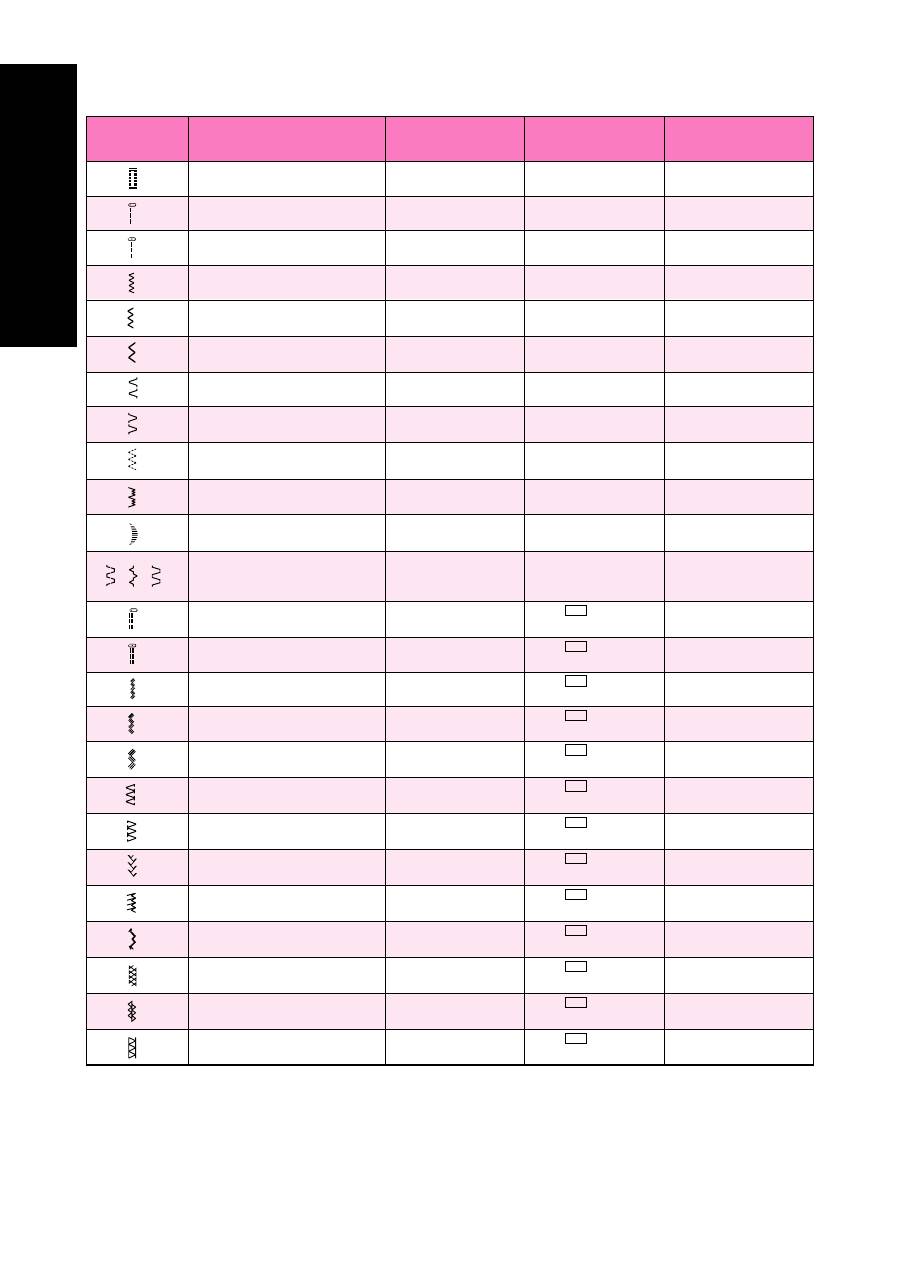
19
KNOWING YOUR SEWING MACHINE
KENNENLERNEN IHRER MASCHINE
КРАТКОЕ ТЕХНИЧЕСКОЕ ОПИСАНИЕ МАШИНЫ
EMPFOHLENE EINSTELLWERTE
(Modell XL-6050, XL-6051, XL-6052, XL-6053)
STICHMUSTER
STICHNAME
VOREINGESTELLTE
EMPFOHLENE
SEITE IN DER
BREITE [mm (Zoll)]
LÄNGE [mm (Zoll)]
ANLEITUNG
1-STUFEN-
5
F-1,5
56
KNOPFLOCHAUTOMATIK
(3/16)
(1/64-1/16)
GERADSTICH
—
1-4
42, 66, 67
(Nadelposition links)
(1/16-3/16)
GERADSTICH
—
1-4
42, 66, 67
(Nadelposition Mitte)
(1/16-3/16)
ZICKZACKSTICH
1,5
F-4
45, 64, 68, 70
(1/16)
(1/64-3/16)
ZICKZACKSTICH
3,5
F-4
45, 64, 68, 70
(1/8)
(1/64-3/16)
ZICKZACKSTICH
5
F-4
45, 64, 68, 70
(3/16)
(1/64-3/16)
BLINDSAUMSTICH
3
F-2
46
(1/8)
(1/64-1/16)
BIESENSTICH
5
F-3
47
(3/16)
(1/64-1/8)
ELASTIKSTICH
5
F-2,5
48
(3/16)
(1/64-3/32)
ELASTISCHER BLINDSTICH
4
F-1,5
46
(3/16)
(1/64-1/16)
BOGENNAHT
5
F-1,5
50
(3/16)
(1/64-1/16)
ELASTISCHE SCHRITTNAHT
5
F-3
BRÜCKENSTICH
49
PALISADENSTICH
(3/16)
(1/64-1/8)
STRETCH-GERADSTICH
—
SS
Fixiert
42
(Nadelposition links)
2,5 (3/32)
STRETCH-GERADSTICH
—
SS
Fixiert
42
(Nadelposition Mitte)
2,5 (3/32)
DREIFACH-
1,5
SS
Fixiert
54
ZICKZACKSTICH
(1/16)
2,5 (3/32)
DREIFACH-
3,5
SS
Fixiert
54
ZICKZACKSTICH
(1/8)
2,5 (3/32)
DREIFACH-
5
SS
Fixiert
54
ZICKZACKSTICH
(3/16)
2,5 (3/32)
ÜBERWENDLINGNAHT
3
SS
Fixiert
53
(1/8)
2,5 (3/32)
ÜBERWENDLINGNAHT
5
SS
Fixiert
53
(3/16)
2,5 (3/32)
GRÄTENSTICH
5
SS
Fixiert
54
(3/16)
2,5 (3/32)
KAMMSTICH
4
SS
Fixiert
53
(3/16)
2,5 (3/32)
DEKORATIVER STICH
5
SS
Fixiert
51
(3/16)
2,5 (3/32)
HEXENSTICH
5
SS
Fixiert
52
(3/16)
2,5 (3/32)
DEKORATIVER STICH
5
SS
Fixiert
51
(3/16)
2,5 (3/32)
FLACHNAHT
5
SS
Fixiert
49
(3/16)
2,5 (3/32)
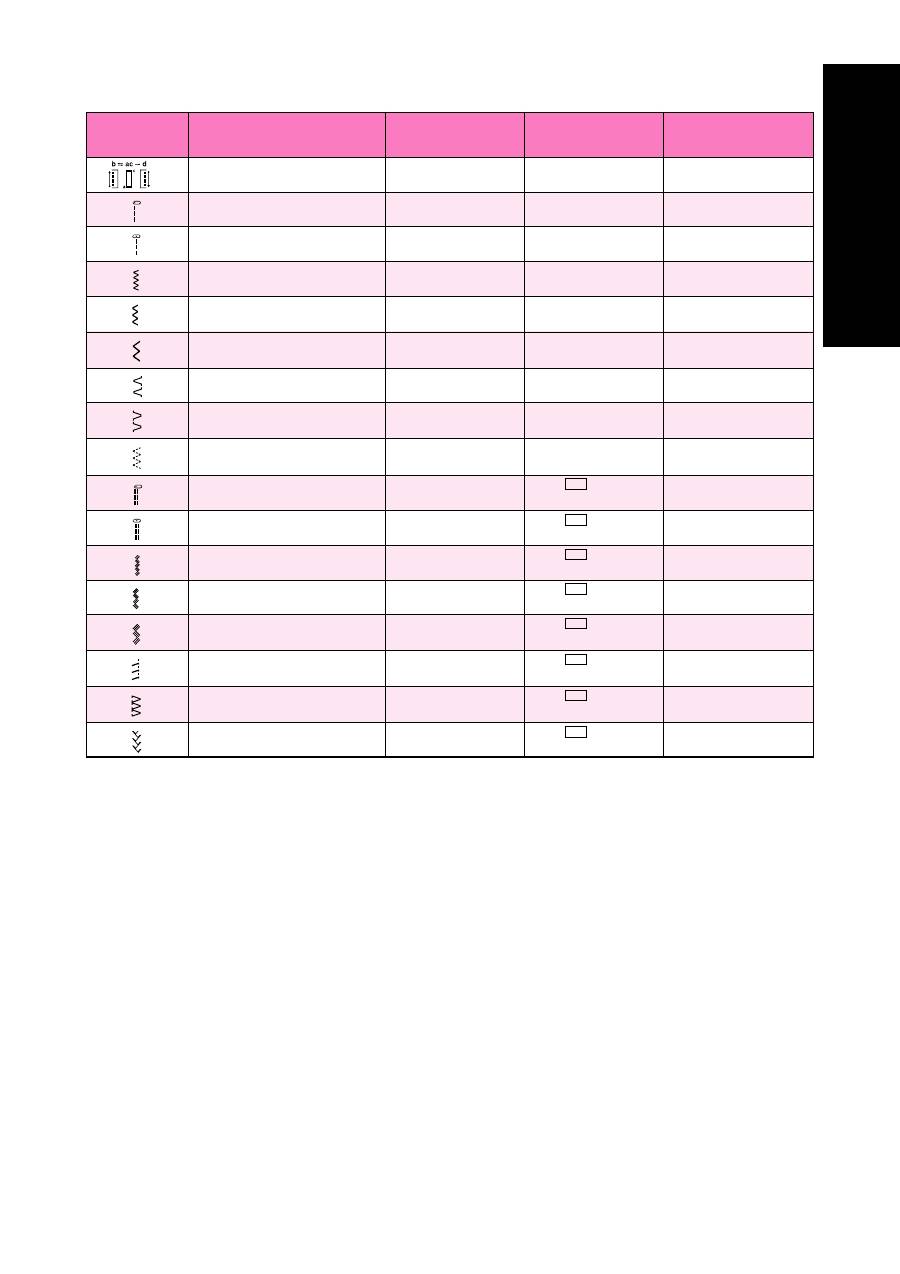
20
KNOWING YOUR SEWING MACHINE
KENNENLERNEN IHRER MASCHINE
КРАТКОЕ ТЕХНИЧЕСКОЕ ОПИСАНИЕ МАШИНЫ
EMPFOHLENE EINSTELLWERTE
(Modell XL-6040, XL-6041, XL-6042, XL-6043)
STICHMUSTER
STICHNAME
VOREINGESTELLTE
EMPFOHLENE
SEITE IN DER
BREITE [mm (Zoll)]
LÄNGE [mm (Zoll)]
ANLEITUNG
4-STUFEN-
5
F-1,5
58
KNOPFLOCHAUTOMATIK
(3/16)
(1/64-1/16)
GERADSTICH
—
1-4
42, 66, 67
(Nadelposition links)
(1/16-3/16)
GERADSTICH
—
1-4
42, 66, 67
(Nadelposition Mitte)
(1/16-3/16)
ZICKZACKSTICH
1,5
F-4
45, 64, 68, 70
(1/16)
(1/64-3/16)
ZICKZACKSTICH
3,5
F-4
45, 64, 68, 70
(1/8)
(1/64-3/16)
ZICKZACKSTICH
5
F-4
45, 64, 68, 70
(3/16)
(1/64-3/16)
BLINDSAUMSTICH
3
F-2
46
(1/8)
(1/64-1/16)
BIESENSTICH
5
F-3
47
(3/16)
(1/64-1/8)
ELASTIKSTICH
5
F-2,5
48
(3/16)
(1/64-3/32)
STRETCH-GERADSTICH
—
SS
Fixiert
42
(Nadelposition links)
2,5 (3/32)
STRETCH-GERADSTICH
—
SS
Fixiert
42
(Nadelposition Mitte)
2,5 (3/32)
DREIFACH-
1,5
SS
Fixiert
54
ZICKZACKSTICH
(1/16)
2,5 (3/32)
DREIFACH-
3,5
SS
Fixiert
54
ZICKZACKSTICH
(1/8)
2,5 (3/32)
DREIFACH-
5
SS
Fixiert
54
ZICKZACKSTICH
(3/16)
2,5 (3/32)
OVERLOCK-SCHRÄGSTICH
3
SS
Fixiert
53
(1/8)
2,5 (3/32)
ÜBERWENDLINGNAHT
5
SS
Fixiert
53
(3/16)
2,5 (3/32)
GRÄTENSTICH
5
SS
Fixiert
54
(3/16)
2,5 (3/32)

21
KNOWING YOUR SEWING MACHINE
KENNENLERNEN IHRER MASCHINE
КРАТКОЕ ТЕХНИЧЕСКОЕ ОПИСАНИЕ МАШИНЫ
РЕКОМЕНДУЕМАЯ ДЛИНА СТЕЖКА
(Модели XL-6060, XL-6061, XL-6062, XL-6063)
СТРОЧКА
НАИМЕНОВАНИЕ СТЕЖКА
ЗАДАННАЯ ШИРИНА
РЕКОМЕНДУЕМАЯ ДЛИНА
НОМЕР СТРАНИЦЫ
[мм(дюймы)]
[ мм(дюймы)]
РУКОВОДСТВА
1-СТУПЕНЧАТОЕ АВТОМАТИЧЕСКОЕ
5
F-1,5
56
ОБМЕТЫВАНИЕ ПЕТЛИ
(3/16)
(1/64-1/16)
ПРЯМОЙ СТЕЖОК
—
1-4
42, 66, 67
(Левое положение иглы)
(1/16-3/16)
ПРЯМОЙ СТЕЖОК
—
1-4
42, 66, 67
(
Ц
ентральное положение иглы)
(1/16-3/16)
ЗИГЗАГООБРАЗНЫЙ СТЕЖОК
1,5
F-4
45, 64, 68, 70
(1/16)
(1/64-3/16)
ЗИГЗАГООБРАЗНЫЙ СТЕЖОК
3,5
F-4
45, 64, 68, 70
(1/8)
(1/64-3/16)
ЗИГЗАГООБРАЗНЫЙ СТЕЖОК
5
F-4
45, 64, 68, 70
(3/16)
(1/64-3/16)
ПОТАЙНОЙ ПОДРУБОЧНЫЙ ШОВ
3
F-2
46
(1/8)
(1/64-1/16)
ПОДШИВОЧНАЯ СТРОЧКА
5
F-3
47
(3/16)
(1/64-1/8)
ЭЛАСТИЧНАЯ СТРОЧКА
5
F-2,5
48
(3/16)
(1/64-3/32)
ПОДШИВОЧНАЯ ТРИКОТАЖНАЯ СТРОЧКА
4
F-1,5
46
(3/16)
(1/64-1/16)
СТРОЧКА-ЕЛОЧКА
5
F-1,5
50
(3/16)
(1/64-1/16)
СТЕЖОК С ДВОЙНЫМ ЭФФЕКТОМ
5
F-3
СТРОЧКА-МОСТИК
49
СТЕЖОК РАМПАРТ
(3/16)
(1/64-1/8)
ЭЛАСТИЧНАЯ ПОДШИВОЧНАЯ СТРОЧКА
5
F-3
53
(3/16)
(1/64-1/8)
БИСЕРНЫЙ СТЕЖОК
51
СТРЕЛОВИДНЫЙ СТЕЖОК
5
F-1
СТРОЧКА-ПАРАЛЛЕЛОГРАММ
(3/16)
(1/64-1/16)
ТРЕУГОЛЬНЫЙ СТЕЖОК
ТРОЙНАЯ ТРИКОТАЖНАЯ СТРОЧКА
—
SS
Фиксир.
42
(Левое положение иглы)
2,5 (3/32)
ТРОЙНАЯ ТРИКОТАЖНАЯ СТРОЧКА
—
SS
Фиксир.
42
(Центральное положение иглы)
2,5 (3/32)
ТРОЙНАЯ ТРИКОТАЖНАЯ СТРОЧКА
1,5
SS
Фиксир.
54
«ЗИГЗАГ»
(1/16)
2,5 (3/32)
ТРОЙНАЯ ТРИКОТАЖНАЯ СТРОЧКА
3,5
SS
Фиксир.
54
«ЗИГЗАГ»
(1/8)
2,5 (3/32)
ТРОЙНАЯ ТРИКОТАЖНАЯ СТРОЧКА
5
SS
Фиксир.
54
«ЗИГЗАГ»
(3/16)
2,5 (3/32)
ЭЛАСТИЧНАЯ ОВЕРЛОЧНАЯ
3
SS
Фиксир.
53
СТРОЧКА
(1/8)
2,5 (3/32)
ЭЛАСТИЧНАЯ ОВЕРЛОЧНАЯ
5
SS
Фиксир.
53
СТРОЧКА
(3/16)
2,5 (3/32)
ПЕРИСТРЫЙ СТЕЖОК
5
SS
Фиксир.
54
(3/16)
2,5 (3/32)
СТРОЧКА «ГРЕБЕШОК»
4
SS
Фиксир.
53
(3/16)
2,5 (3/32)
ДЕКОРАТИВНЫЙ СТЕЖОК
5
SS
Фиксир.
51
(3/16)
2,5 (3/32)
СОЕДИНИТЕЛЬНЫЙ СТЕЖОК
5
SS
Фиксир.
52
(3/16)
2,5 (3/32)
ДЕКОРАТИВНЫЙ СТЕЖОК
5
SS
Фиксир.
51
(3/16)
2,5 (3/32)
ДЕКОРАТИВНЫЙ ПОДРУБОЧНЫЙ СТЕЖОК
5
SS
Фиксир.
49
(3/16)
2,5 (3/32)
ДЕКОРАТИВНЫЙ СТЕЖОК
5
SS
Фиксир.
51
(3/16)
2,5 (3/32)

22
KNOWING YOUR SEWING MACHINE
KENNENLERNEN IHRER MASCHINE
КРАТКОЕ ТЕХНИЧЕСКОЕ ОПИСАНИЕ МАШИНЫ
РЕКОМЕНДУЕМАЯ ДЛИНА СТЕЖКА
(Модели XL-6050, XL-6051, XL-6052, XL-6053)
СТРОЧКА
НАИМЕНОВАНИЕ СТЕЖКА
ЗАДАННАЯ ШИРИНА
РЕКОМЕНДУЕМАЯ ДЛИНА
НОМЕР СТРАНИЦЫ
[мм(дюймы)]
[мм(дюймы)]
РУКОВОДСТВА
1-СТУПЕНЧАТОЕ АВТОМАТИЧЕСКОЕ
5
F-1,5
56
ОБМЕТЫВАНИЕ ПЕТЛИ
(3/16)
(1/64-1/16)
ПРЯМОЙ СТЕЖОК
—
1-4
42, 66, 67
(Левое положение иглы)
(1/16-3/16)
ПРЯМОЙ СТЕЖОК
—
1-4
42, 66, 67
(
Ц
ентральное положение иглы)
(1/16-3/16)
ЗИГЗАГООБРАЗНЫЙ СТЕЖОК
1,5
F-4
45, 64, 68, 70
(1/16)
(1/64-3/16)
ЗИГЗАГООБРАЗНЫЙ СТЕЖОК
3,5
F-4
45, 64, 68, 70
(1/8)
(1/64-3/16)
ЗИГЗАГООБРАЗНЫЙ СТЕЖОК
5
F-4
45, 64, 68, 70
(3/16)
(1/64-3/16)
ПОТАЙНОЙ ПОДРУБОЧНЫЙ ШОВ
3
F-2
46
(1/8)
(1/64-1/16)
ПОДШИВОЧНАЯ СТРОЧКА
5
F-3
47
(3/16)
(1/64-1/8)
ЭЛАСТИЧНАЯ СТРОЧКА
5
F-2,5
48
(3/16)
(1/64-3/32)
ПОДШИВОЧНАЯ ТРИКОТАЖНАЯ СТРОЧКА
4
F-1,5
46
(3/16)
(1/64-1/16)
СТРОЧКА-ЕЛОЧКА
5
F-1,5
50
(3/16)
(1/64-1/16)
СТЕЖОК С ДВОЙНЫМ ЭФФЕКТОМ
5
F-3
СТРОЧКА-МОСТИК
49
СТЕЖОК РАМПАРТ
(3/16)
(1/64-1/8)
ТРОЙНАЯ ТРИКОТАЖНАЯ СТРОЧКА
—
SS
Фиксир.
42
(Левое положение иглы)
2,5 (3/32)
ТРОЙНАЯ ТРИКОТАЖНАЯ СТРОЧКА
—
SS
Фиксир.
42
(Центральное положение иглы)
2,5 (3/32)
ТРОЙНАЯ ТРИКОТАЖНАЯ СТРОЧКА
1,5
SS
Фиксир.
54
«ЗИГЗАГ»
(1/16)
2,5 (3/32)
ТРОЙНАЯ ТРИКОТАЖНАЯ СТРОЧКА
3,5
SS
Фиксир.
54
«ЗИГЗАГ»
(1/8)
2,5 (3/32)
ТРОЙНАЯ ТРИКОТАЖНАЯ СТРОЧКА
5
SS
Фиксир.
54
«ЗИГЗАГ»
(3/16)
2,5 (3/32)
ЭЛАСТИЧНАЯ ОВЕРЛОЧНАЯ
3
SS
Фиксир.
53
СТРОЧКА
(1/8)
2,5 (3/32)
ЭЛАСТИЧНАЯ ОВЕРЛОЧНАЯ
5
SS
Фиксир.
53
СТРОЧКА
(3/16)
2,5 (3/32)
ПЕРИСТРЫЙ СТЕЖОК
5
SS
Фиксир.
54
(3/16)
2,5 (3/32)
СТРОЧКА «ГРЕБЕШОК»
4
SS
Фиксир.
53
(3/16)
2,5 (3/32)
ДЕКОРАТИВНЫЙ СТЕЖОК
5
SS
Фиксир.
51
(3/16)
2,5 (3/32)
СОЕДИНИТЕЛЬНЫЙ СТЕЖОК
5
SS
Фиксир.
52
(3/16)
2,5 (3/32)
ДЕКОРАТИВНЫЙ СТЕЖОК
5
SS
Фиксир.
51
(3/16)
2,5 (3/32)
ДЕКОРАТИВНЫЙ ПОДРУБОЧНЫЙ СТЕЖОК
5
SS
Фиксир.
49
(3/16)
2,5 (3/32)

23
KNOWING YOUR SEWING MACHINE
KENNENLERNEN IHRER MASCHINE
КРАТКОЕ ТЕХНИЧЕСКОЕ ОПИСАНИЕ МАШИНЫ
РЕКОМЕНДУЕМАЯ ДЛИНА СТЕЖКА
(Модели XL-6040, XL-6041, XL-6042, XL-6043)
СТРОЧКА
НАИМЕНОВАНИЕ СТЕЖКА
ЗАДАННАЯ ШИРИНА
РЕКОМЕНДУЕМАЯ ДЛИНА
НОМЕР СТРАНИЦЫ
[мм(дюймы)]
[ мм(дюймы)]
РУКОВОДСТВА
4-СТУПЕНЧАТОЕ АВТОМАТИЧЕСКОЕ
5
F-1,5
58
ОБМЕТЫВАНИЕ ПЕТЛИ
(3/16)
(1/64-1/16)
ПРЯМОЙ СТЕЖОК
—
1-4
42, 66, 67
(Левое положение иглы)
(1/16-3/16)
ПРЯМОЙ СТЕЖОК
—
1-4
42, 66, 67
(
Ц
ентральное положение иглы)
(1/16-3/16)
ЗИГЗАГООБРАЗНЫЙ СТЕЖОК
1,5
F-4
45, 64, 68, 70
(1/16)
(1/64-3/16)
ЗИГЗАГООБРАЗНЫЙ СТЕЖОК
3,5
F-4
45, 64, 68, 70
(1/8)
(1/64-3/16)
ЗИГЗАГООБРАЗНЫЙ СТЕЖОК
5
F-4
45, 64, 68, 70
(3/16)
(1/64-3/16)
ПОТАЙНОЙ ПОДРУБОЧНЫЙ ШОВ
3
F-2
46
(1/8)
(1/64-1/16)
ПОДШИВОЧНАЯ СТРОЧКА
5
F-3
47
(3/16)
(1/64-1/8)
ЭЛАСТИЧНАЯ СТРОЧКА
5
F-2,5
48
(3/16)
(1/64-3/32)
ТРОЙНАЯ ТРИКОТАЖНАЯ СТРОЧКА
—
SS
Фиксир.
42
(Левое положение иглы)
2,5 (3/32)
ТРОЙНАЯ ТРИКОТАЖНАЯ СТРОЧКА
—
SS
Фиксир.
42
(Центральное положение иглы)
2,5 (3/32)
ТРОЙНАЯ ТРИКОТАЖНАЯ СТРОЧКА
1,5
SS
Фиксир.
54
«ЗИГЗАГ»
(1/16)
2,5 (3/32)
ТРОЙНАЯ ТРИКОТАЖНАЯ СТРОЧКА
3,5
SS
Фиксир.
54
«ЗИГЗАГ»
(1/8)
2,5 (3/32)
ТРОЙНАЯ ТРИКОТАЖНАЯ СТРОЧКА
5
SS
Фиксир.
54
«ЗИГЗАГ»
(3/16)
2,5 (3/32)
НАКЛОННАЯ ОВЕРЛОЧНАЯ
3
SS
Фиксир.
53
СТРОЧКА
(1/8)
2,5 (3/32)
ЭЛАСТИЧНАЯ ОВЕРЛОЧНАЯ
5
SS
Фиксир.
53
СТРОЧКА
(3/16)
2,5 (3/32)
ПЕРИСТРЫЙ СТЕЖОК
5
SS
Фиксир.
54
(3/16)
2,5 (3/32)
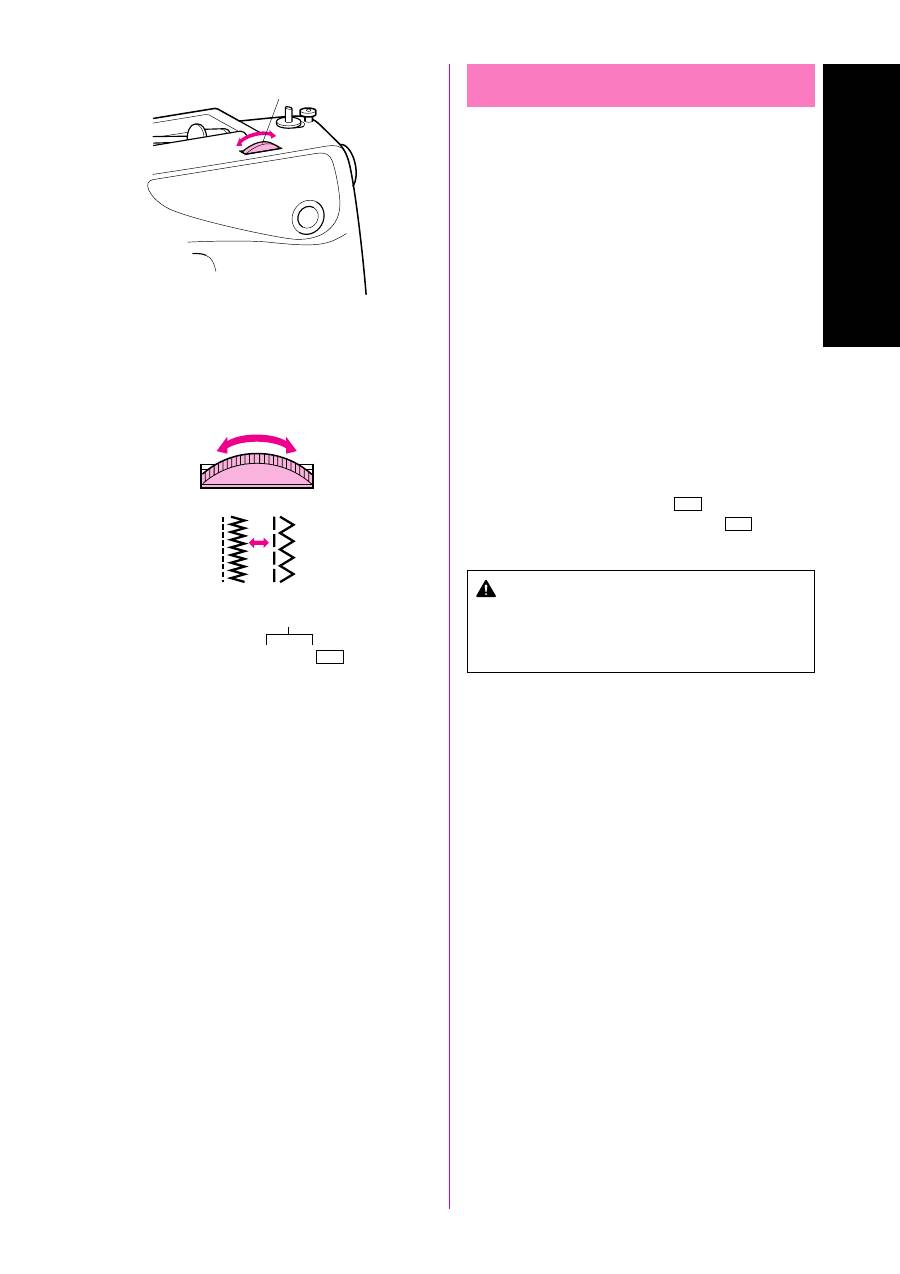
24
KNOWING YOUR SEWING MACHINE
KENNENLERNEN IHRER MASCHINE
КРАТКОЕ ТЕХНИЧЕСКОЕ ОПИСАНИЕ МАШИНЫ
1
3
2
1
2
3
4
·
·
4 · 3 · 2 · 1 · F · 0 .................... SS
A
A
A
A
A
Stitch Length Dial
Depending on your selected stitch, you may need to adjust the stitch
length for best results.
The numbers marked on the Stitch Length Dial represent the length
of the stitch in millimeters (mm).
THE HIGHER THE NUMBER, THE LONGER THE STITCH.
The “0” setting does not feed the material. This is used for sewing
on a button.
The “F” area is used for making a Satin Stitch (a dense zigzag stitch)
which can be used in making buttonholes and decorative stitches.
The position needed for making the Satin Stitch varies according to
the material and thread being used. To determine the exact dial
position, you should first test the stitch and length settings on a
scrap of fabric to observe the feeding of the material.
1
Stitch length dial
2
Length
3
Fine
→
SS
4
Coarse
CAUTION
Do not set the Stitch Length Dial in the range shown by
A
A
A
A
A
. If
the machine is started while the dial is set in the range shown
by
A
A
A
A
A
, the fabric will not feed correctly and the fabric or
machine may be damaged.
Turn the dial to the left past “0” for the SS position.
SS (Fixed 2.5)
CAUTION
If the stitches get bunched together, lengthen the stitch
length and continue sewing. Do not continue sewing with-
out lengthening the stitch length, otherwise the needle may
break and cause injury.
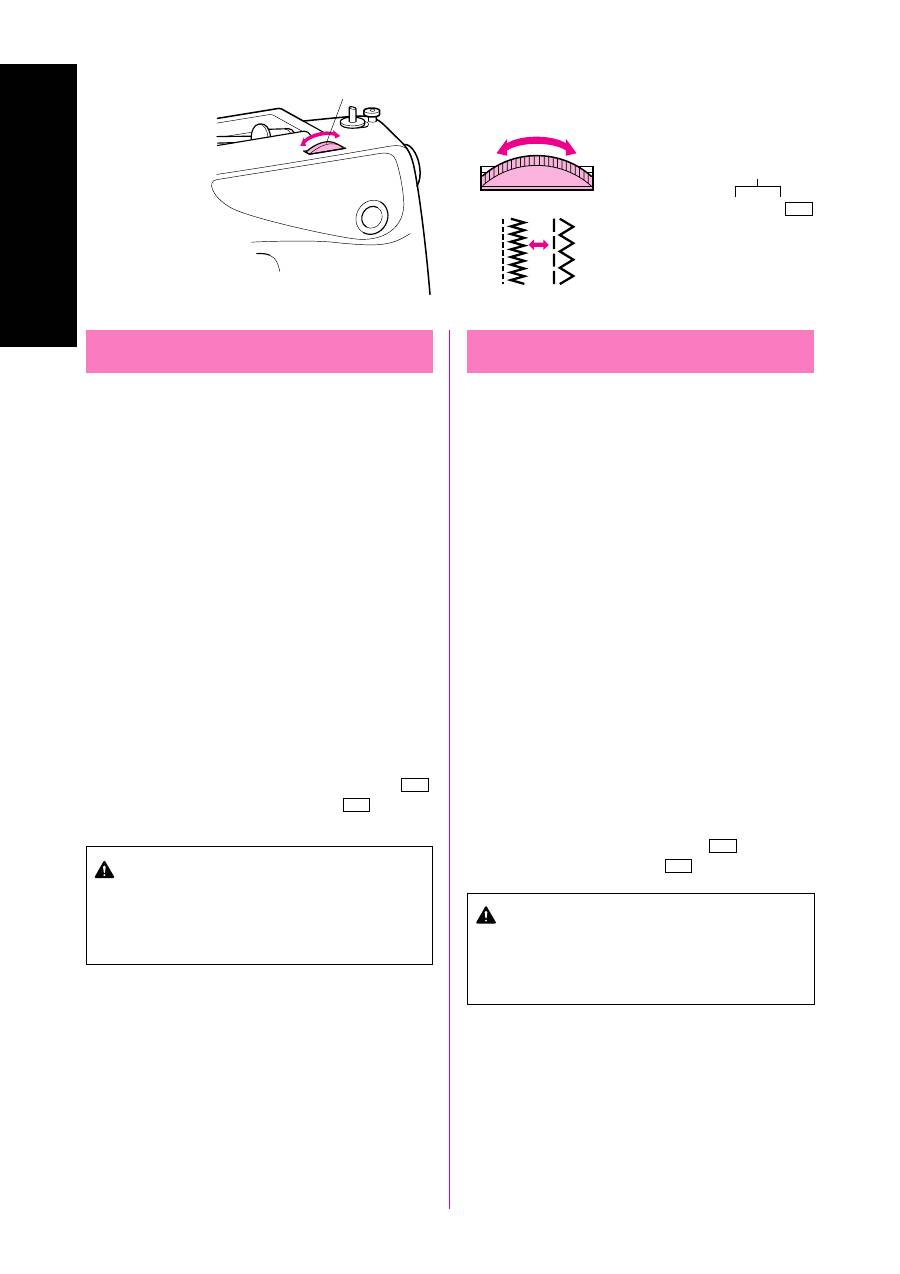
25
KNOWING YOUR SEWING MACHINE
KENNENLERNEN IHRER MASCHINE
КРАТКОЕ ТЕХНИЧЕСКОЕ ОПИСАНИЕ МАШИНЫ
Stichlängen-Einstellrad
Abhängig vom gewählten Stich kann es sein, daß Sie für beste Ergebnisse
die Stichlänge ändern müssen.
Die auf dem Stichlängen-Einstellrad aufgedruckten Zahlen repräsentie-
ren die Stichlänge in Millimetern (mm).
JE HÖHER DIE ZAHL, DESTO LÄNGER DER STICH.
Bei der Einstellung “0” wird das Material nicht transportiert. Damit
können Sie z. B. einen Knopf annähen.
Der Bereich “F” wird für den Satinstich benutzt (ein enger Zickzackstich).
Dieser Stich wird für Knopflöcher und für dekorative Ausführungen
benutzt. Die Stellung des Rades für den Satinstich variiert mit dem
Material und dem verwendeten Faden. Um die genaue Position des Rades
zu bestimmen, sollten Sie zunächst die Stichmuster und -längen auf einem
Stück Stoff ausprobieren, um den Transport des Materials zu beobachten.
1
Stichlängen-Einstellrad
2
Stichlänge
3
Fein
→
SS
4
Grob
VORSICHT
Stellen Sie nicht den Stichlängen-Einstellrad in dem in
A
A
A
A
A
gezeigten
Bereich ein. Wenn die Maschine gestartet wird, während das Ein-
stellrad auf den in
A
A
A
A
A
gezeigten Bereich gestellt ist, wird der Stoff nicht
richtig transportiert, und der Stoff oder die Maschine können beschä-
digt werden.
Drehen Sie das Stichlängen-Einstellrad über “0” hinaus auf die Position
SS
.
SS
(Fixiert 2,5)
VORSICHT
Wenn die Stiche sich zusammenziehen, wählen Sie eine größere
Stichlänge, bevor Sie weiternähen. Nähen Sie nicht weiter, ohne
eine größere Stichlänge gewählt zu haben, da die Nadel sonst
abbrechen und Verletzungen verursachen kann.
Ручка регулирования длины стежка
В зависимости от типа выбранного Вами шва для обеспечения
наилучших результатов может возникнуть необходимость в
регулировании длины стежка.
Цифры, указанные на ручке регулирования длины стежка,
представляют длину стежка в миллиметрах (мм).
ЧЕМ БОЛЬШЕ ЧИСЛО, ТЕМ ДЛИННЕЕ СТЕЖОК.
При установке на
“0”
продвижение ткани отключается. Данный
режим применяется для пришивания пуговиц.
Область, обозначенная символом“F”, предназначена для
«сатинового» шва (мелкие зигзагообразные стежки), который
может использоваться для обметывания петель, а также для
декоративной обработки ткани. Задаваемая в данной области
величина выбирается в зависимости от типа прошиваемой
ткани и применяемой нитки. Для получения оптимального
результата сначала рекомендуется сделать пробную строчку
на лоскутке и проследить за продвижением ткани.
1
Ручка регулирования длины стежка
2
Длина
3
Частые
→
SS
4
Редкие
ПРЕДОСТЕРЕЖЕНИЕ
Не устанавливайте ручку регулирования длины стежка в
пределах, обозначенных символом
A
A
A
A
A
. Если ручка
регулирования длины стежка установлена в пределах
A
A
A
A
A
на момент включения швейной машины, возможно
неправильное продвижение ткани и повреждение
материала или машины.
Поверните ручку влево за“0”на позицию
SS
.
SS
(Фиксированная 2,5)
ПРЕДОСТЕРЕЖЕНИЕ
При наложении стежков друг на друга увеличьте длину
стежка и продолжите строчку. Не продолжайте строчку
без удлинения стежка - в противном случае игла может
сломаться, и Вы можете получить травму.
1
3
2
1
2
3
4
·
·
4 · 3 · 2 · 1 · F · 0 ....................
SS
A
A
A
A
A
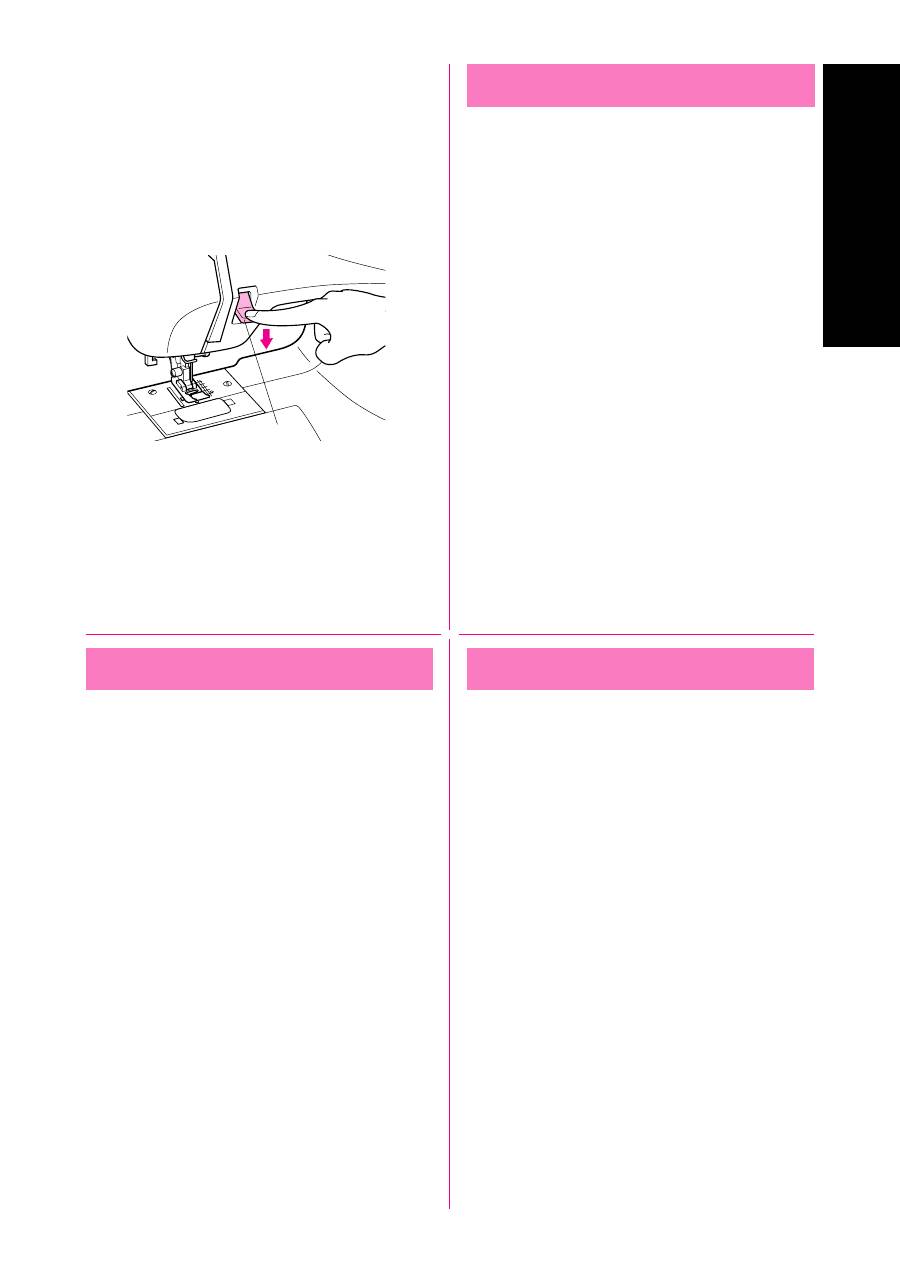
26
KNOWING YOUR SEWING MACHINE
KENNENLERNEN IHRER MASCHINE
КРАТКОЕ ТЕХНИЧЕСКОЕ ОПИСАНИЕ МАШИНЫ
1
Reverse Sewing Lever
Reverse sewing is used for back tacking and reinforcing seams.
To sew in reverse, push the Reverse Sewing Lever in as far as
possible and hold in that position while pressing lightly on the foot
pedal. To sew forward, release the Reverse Sewing Lever. The
machine will then sew forward.
1
Reverse sewing lever
Rückwärtstaste
Rückwärtsnähen wird zum Befestigen von Nähten und zur Verstärkung
von Säumen benutzt.
Zum Rückwärtsnähen drücken Sie die Rückwärtstaste soweit wie mög-
lich und halten die Taste in dieser Position, während Sie leicht auf das
Fußpedal drücken. Zum Vorwärtsnähen lassen Sie die Rückwärtstaste los.
1
Rückwärtstaste
Рычаг реверсирования строчки
Реверсирование направления строчки применяется для
фиксации конца швов и их усиления.
Для реверсирования направления строчки как можно сильнее
нажмите на рычаг реверсирования строчки и, удерживая его
в нажатом состоянии, слегка надавите на педаль ножного
контроллера. Для продолжения строчки в прямом направлении
отпустите рычаг реверсирования строчки. Машина начнет
шов в прямом направлении.
1
Рычаг реверсирования строчки
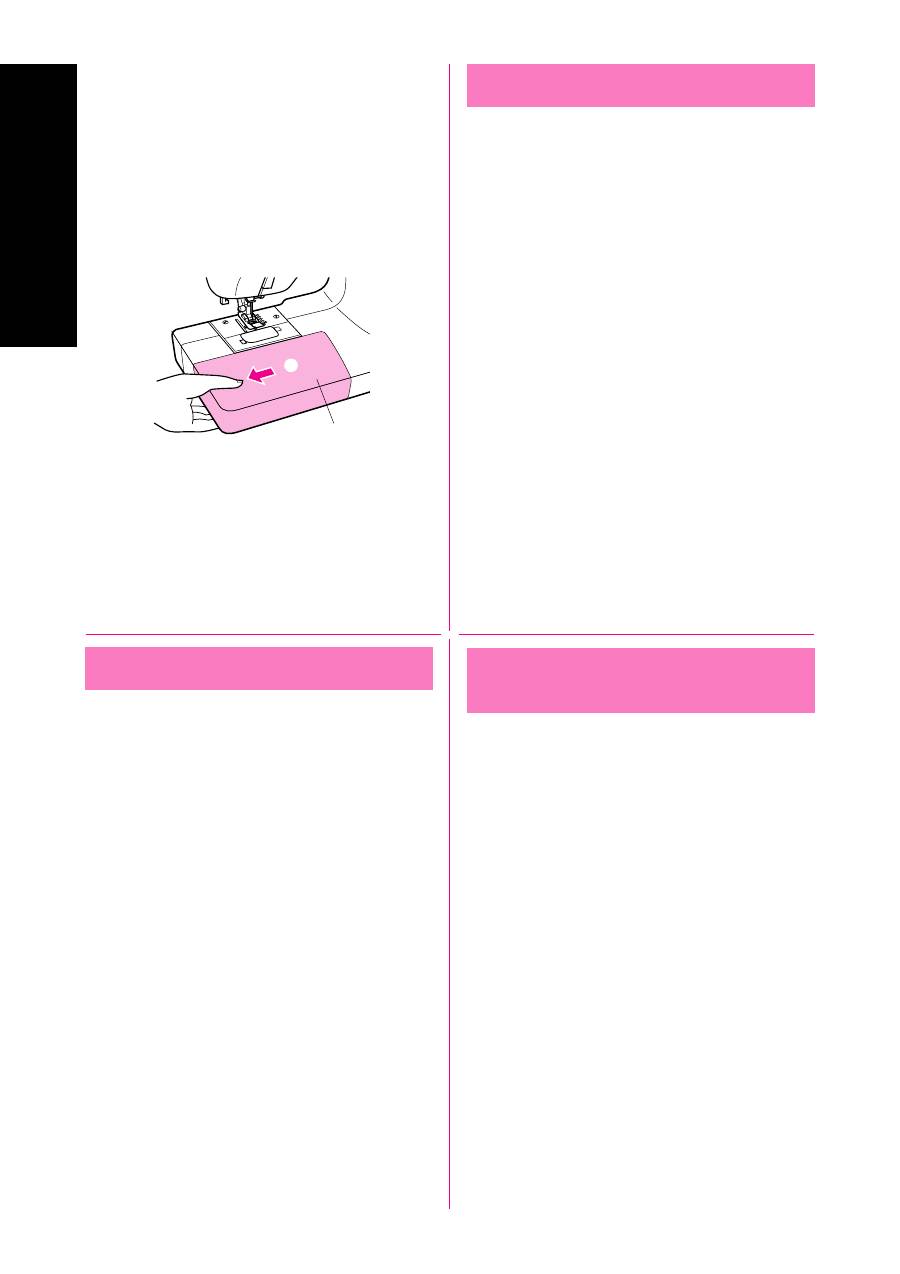
27
KNOWING YOUR SEWING MACHINE
KENNENLERNEN IHRER MASCHINE
КРАТКОЕ ТЕХНИЧЕСКОЕ ОПИСАНИЕ МАШИНЫ
1
1
Converting to Free-arm Style
Free-arm sewing is convenient for sewing tubular and hard-to-
reach areas on a garment. To change your machine to the free-arm
style, simply lift out the flat bed attachment.
1
Slide the flat bed attachment to the left.
1
Flat bed attachment
Переключение на режим
"Free-arm"
Данный режим удобен для обработки прошиваемых деталей
трубчатой формы или труднодоступных участков предметов
одежды. Для переключения машины на этот режим, поднятием
снимите платформу-приставку.
1
Сдвиньте платформу-приставку.
1
Платформа-приставка
Umbau auf Freiarm
Das Nähen mit Freiarm ist praktisch, wenn Sie röhrenförmige und schwer
zu erreichende Stellen eines Kleidungsstückes nähen müssen. Für den
Umbau Ihrer Maschine zur Freiarmmaschine nehmen Sie einfach den
Anschiebetisch heraus.
1
Schieben Sie den Anschiebetisch nach links.
1
Anschiebetisch (Zubehörfach)
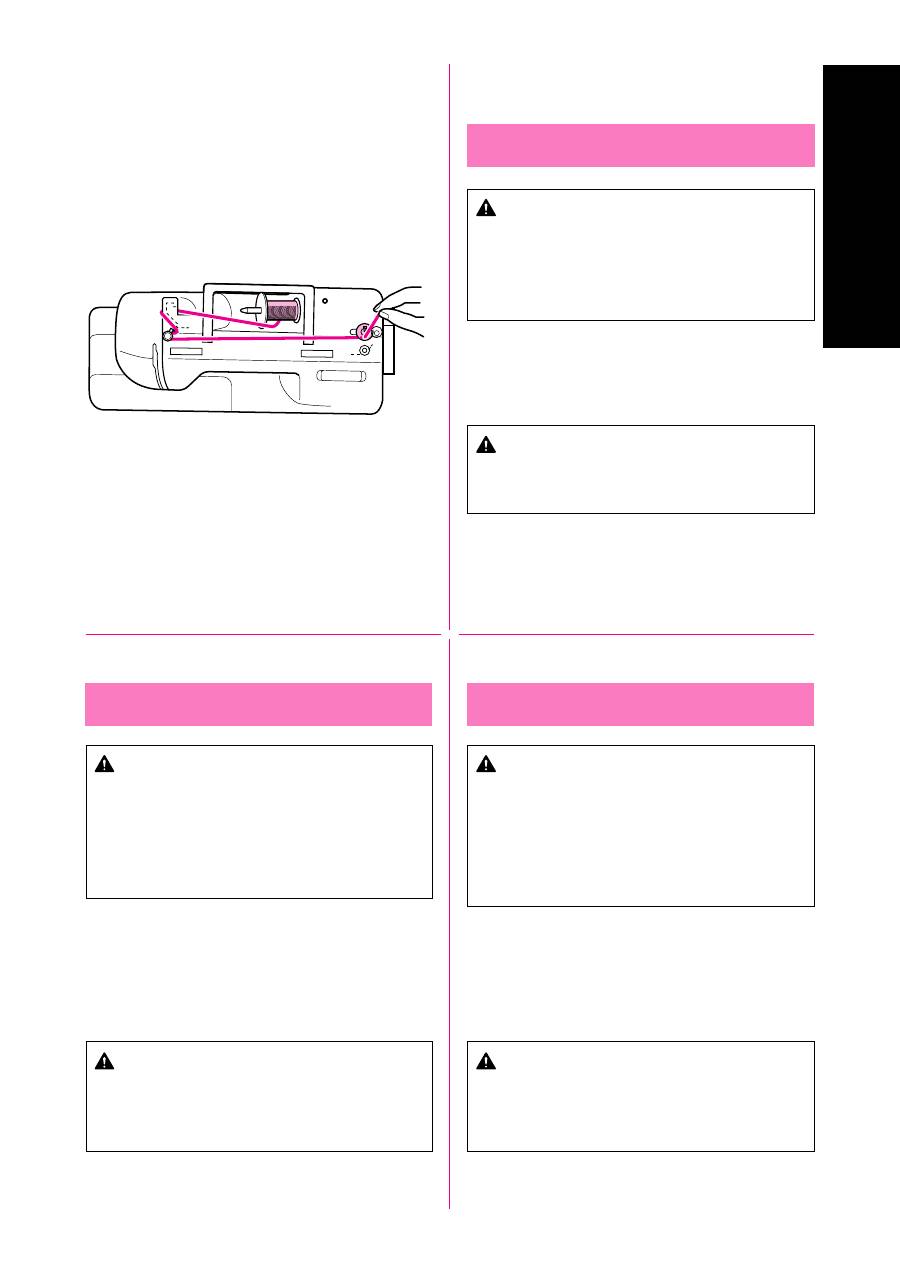
28
KNOWING YOUR SEWING MACHINE
KENNENLERNEN IHRER MASCHINE
КРАТКОЕ ТЕХНИЧЕСКОЕ ОПИСАНИЕ МАШИНЫ
THREADING
THE MACHINE
Winding the Bobbin
CAUTION
•
If the thread spool and/or spool cap are set incorrectly,
the thread may tangle on the spool pin.
•
Use the spool cap (large, medium, or small) that is
closest in size to the thread spool. If a spool cap smaller
than the thread spool is used, the thread may become
caught in the slit on the end of the spool.
1. Place the spool of thread on the horizontal spool pin and firmly
hold it with a spool cap so that the spool of thread will not turn.
Pass the thread through the thread guide as shown following the
dotted line on the machine.
CAUTION
Use only bobbins recommended by the manufacturer of
this machine (see page 3). Using other bobbins may result
in damage or injury.
1
2
3
ЗАПРАВКА НИТОК
Намотка ниток на шпульку
ПРЕДОСТЕРЕЖЕНИЕ
• Если катушка с нитками и/или катушечный колпачок
установлены неправильно, нитка может запутаться
на катушечном стержне.
• Используйте катушечный колпачок (большой,
малый, средний), наиболее подходящий к катушке
по размеру. Если катушечный колпачок меньше
используемой катушки, нитка может зацепиться в
прорези на торце катушки.
1. Установите катушку с нужной ниткой на горизонтальный
катушечный стержень и плотно зафиксируйте ее
катушечным колпачком таким образом, чтобы катушка с
ниткой не поворачивалась. Пропустите конец нитки через
нитенаправитель вдоль пунктирной линии, обозначенной
на машине.
ПРЕДОСТЕРЕЖЕНИЕ
Используйте только шпульки, рекомендованные к
применению заводом-изготовителем данной швейной
машины (см. стр. 4). Применение шпулек других типов
может привести к повреждению машины или травме.
FADENFÜHRUNG
Aufspulen
VORSICHT
•
Inkorrektes Aufsetzen der Garnrolle bzw. Garnrollenkappe
kann dazu führen, daß der Faden sich auf dem Garnrollenstift
verwickelt.
•
Verwenden Sie eine Garnrollenkappe (groß, mittel oder klein),
die in ihrer Größe am besten zur Garnrolle paßt. Ist die
Garnrollenkappe kleiner als die Garnrolle, kann der Faden
sich in dem Schlitz am Rand der Garnrolle verfangen.
1. Setzen Sie die Garnrolle auf den horizontalen Garnrollenstift und
halten Sie sie mit einer Garnrollenkappe fest, so daß die Garnrolle
nicht drehen kann. Führen Sie den Faden durch die Fadenführung
entlang der gepunkteten Linie auf der Maschine.
VORSICHT
Benutzen Sie nur die vom Hersteller für diese Maschine empfoh-
lenen Spulen (Siehe Seite 4). Wenn Sie andere Spulen verwenden,
kann dies zu Beschädigungen der Maschine und Verletzungen
führen.
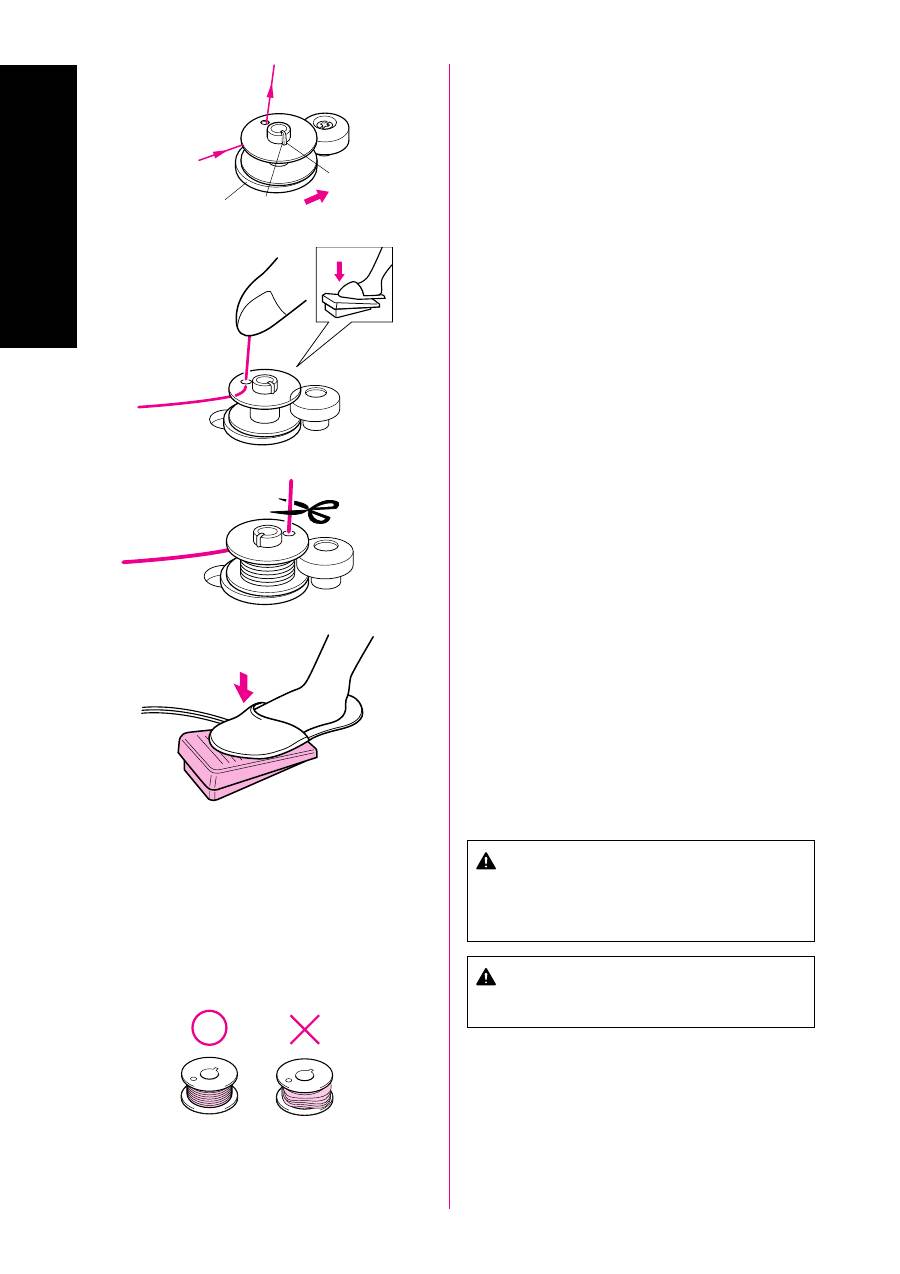
29
KNOWING YOUR SEWING MACHINE
KENNENLERNEN IHRER MASCHINE
КРАТКОЕ ТЕХНИЧЕСКОЕ ОПИСАНИЕ МАШИНЫ
1
3
2
2. Pass the end of the thread through the hole on the bobbin from
the inside.
Place the bobbin onto the bobbin winder shaft and slide the
bobbin winder shaft to the right. Turn the bobbin clockwise, by
hand, until the spring on the shaft slides into the groove of the
bobbin.
1
Spring on the shaft
2
Groove of the bobbin
3
Bobbin winder seat
3. While holding the end of the thread, gently depress the foot
controller to wind the thread around the bobbin a few times.
Then stop the machine.
Trim the excess thread above the bobbin.
4. Step down on the foot controller to start.
5. After the machine stops automatically when the bobbin is full,
take your foot off of the foot controller.
CAUTION
When removing the bobbin, do not pull on the bobbin winder
seat. Doing so could loosen or remove the bobbin winder seat,
resulting in damage to the machine.
6. Cut the thread, slide the bobbin winder shaft to the left and
remove the bobbin.
NOTE:
The needle bar does not move when the bobbin winding shaft is slid
to the right.
Immediately after winding the bobbin, it is normal to hear the sound
of the clutch engaging when beginning to sew or manually turning
the balance wheel.
CAUTION
Be sure to follow the process described. If the thread is not
cut completely, and the bobbin is wound, when the thread
runs low it may tangle around the bobbin and cause the
needle to break.
CAUTION
Setting the bobbin improperly may cause the thread ten-
sion to loosen, breaking the needle and resulting in injury.
1
Wound evenly
2
Wound poorly
1
2
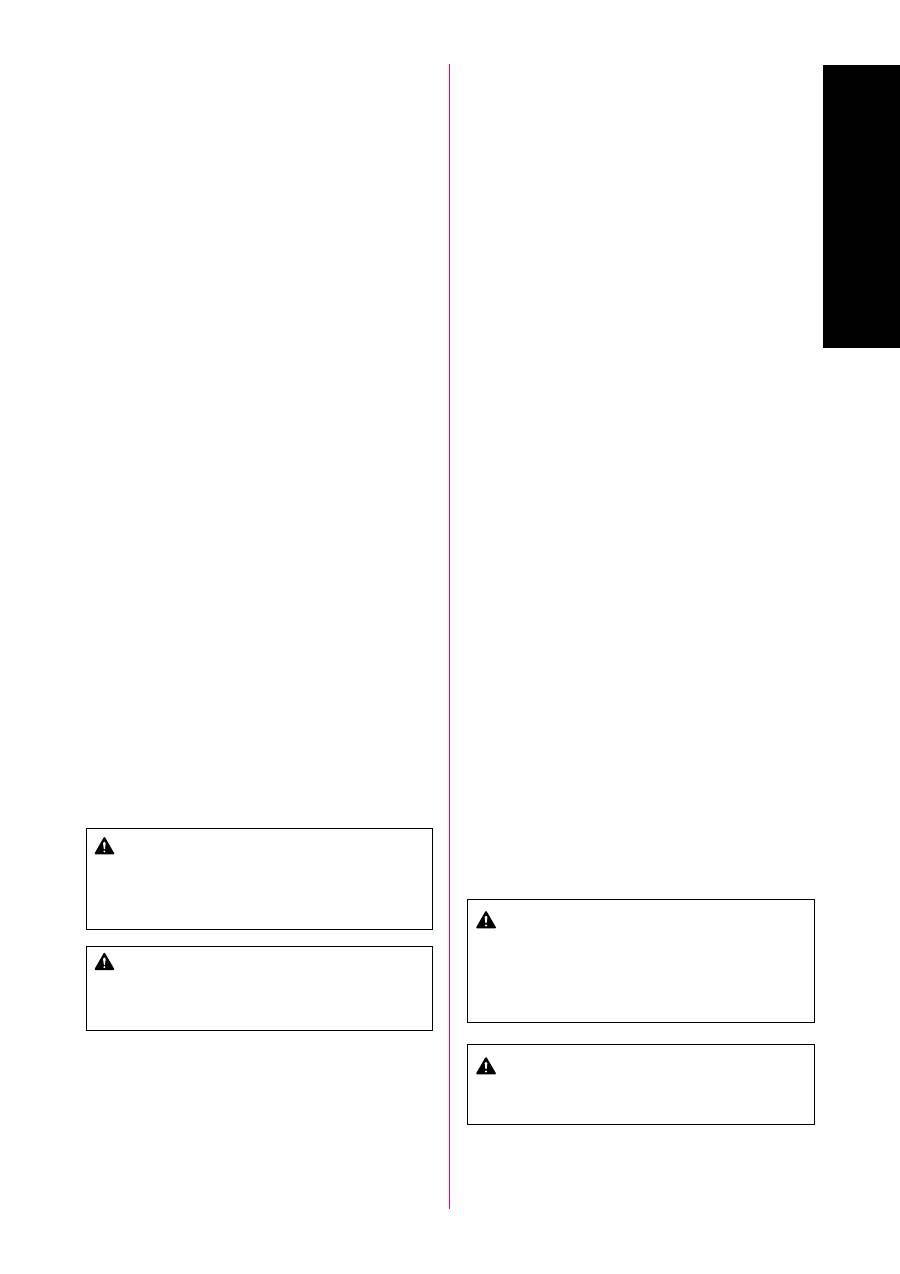
30
KNOWING YOUR SEWING MACHINE
KENNENLERNEN IHRER MASCHINE
КРАТКОЕ ТЕХНИЧЕСКОЕ ОПИСАНИЕ МАШИНЫ
2. Führen Sie den Faden durch das Loch in der Spule von innen.
Setzen Sie die Spule auf den Spuler und schieben Sie den Spuler nach
rechts. Drehen Sie die Spule im Uhrzeigersinn, mit der Hand, bis die
Schaftfeder in der Kerbe in der Spule einrastet.
1
Schaftfeder
2
Kerbe
3
Spulenträgerplatte
3. Während Sie das Fadenende halten, drücken Sie leicht den Fuß-
anlasser, um den Faden einige Male um die Spule zu wickeln. Dann
stoppen Sie die Maschine.
Schneiden Sie den überschüssigen Faden über der Spule ab.
4. Betätigen Sie den Fußanlasser, um die Maschine zu starten.
5. Sobald die Maschine automatisch gestoppt hat, nehmen Sie Ihren Fuß
vom Pedal.
VORSICHT
Ziehen Sie beim Abnehmen der Spule nicht zu fest an der Spulen-
trägerplatte. Dies kann zum Lösen oder Entfernen des Spulenträger-
platte, was Schäden an der Maschine verursacht.
6. Schneiden Sie den Faden ab, schieben Sie den Spuler zurück nach links
und entnehmen Sie die volle Spule.
NOTIZEN:
Das Nähwerk ist abgeschaltet, wenn die Spulerwelle nach rechts gescho-
ben wird.
Direkt nach dem Aufspulen ist das Geräusch der Kupplung zu hören,
sobald Sie zu nähen beginnen oder das Handrad von Hand bewegen.
VORSICHT
Halten Sie sich unbedingt an den oben beschriebenen Vorgang.
Wenn der Faden nicht vollständig abgeschnitten wird, kann der
Faden sich während des Aufspulens auf der Spule verwickeln, was
dazu führen kann, daß die Nadel beim Nähen abbricht.
VORSICHT
Fehlerhaftes Einsetzen der Spule kann zur Folge haben, dass die
Fadenspannung zu locker ist und die Nadel hierdurch abbricht,
was zu Verletzungen führen kann.
1
Gleichmäßig gewickelt
2
Ungleichmäßig gewickelt
2. Пропустите конец нитки изнутри наружу сквозь отверстие
в шпульке.
Установите шпульку на вал мотального механизма и
сместите этот вал вправо. Поверните шпульку рукой по
часовой стрелке, чтобы пружина вала вошла в прорезь
шпульки.
1
Пружина вала
2
Прорезь шпульки
3
Седло мотального механизма
3. Придерживая конец нитки, слегка надавите на педаль
ножного контроллера и на малой скорости несколько раз
намотайте нитку на шпульку. Затем остановите машину.
Отрежьте лишний конец нитки, торчащий из верхней части
шпульки.
4. Нажав на педаль ножного контроллера, запустите машину.
5. После полной намотки шпульки машина остановится
автоматически - в этот момент снимите ногу с педали
ножного контроллера.
ПРЕДОСТЕРЕЖЕНИЕ
При снятии шпульки не тяните за седло мотального
механизма. Это может ослабить или сломать седло
мотального механизма, что приведет к поломке швейной
машины.
6. Отрежьте нитку, сдвиньте вал мотального механизма влево
и снимите шпульку со стержня.
ПРИМЕЧАНИЕ:
При сдвиге вала мотального механизма вправо иглодержатель
недвижим.
Непосредственно вслед за намоткой нитки на шпульку обычно
слышен звук срабатывания механизма свободного хода
маховика при начале выполнения строчки или при ручном
повороте маховика. Это нормальное явление.
ПРЕДОСТЕРЕЖЕНИЕ
Строго следуйте последовательности вышеописанных
операций. Если нитка не обрезана полностью, а шпулька
намотана, то во время использования последнего
отрезка шпулечной нити возможно запутывание нити
вокруг шпульки и поломка иглы.
ПРЕДОСТЕРЕЖЕНИЕ
Неправильная установка шпульки может привести к
ослаблению натяжения нити, поломке иглы и травме.
1
Ровная намотка
2
Неправильная намотка
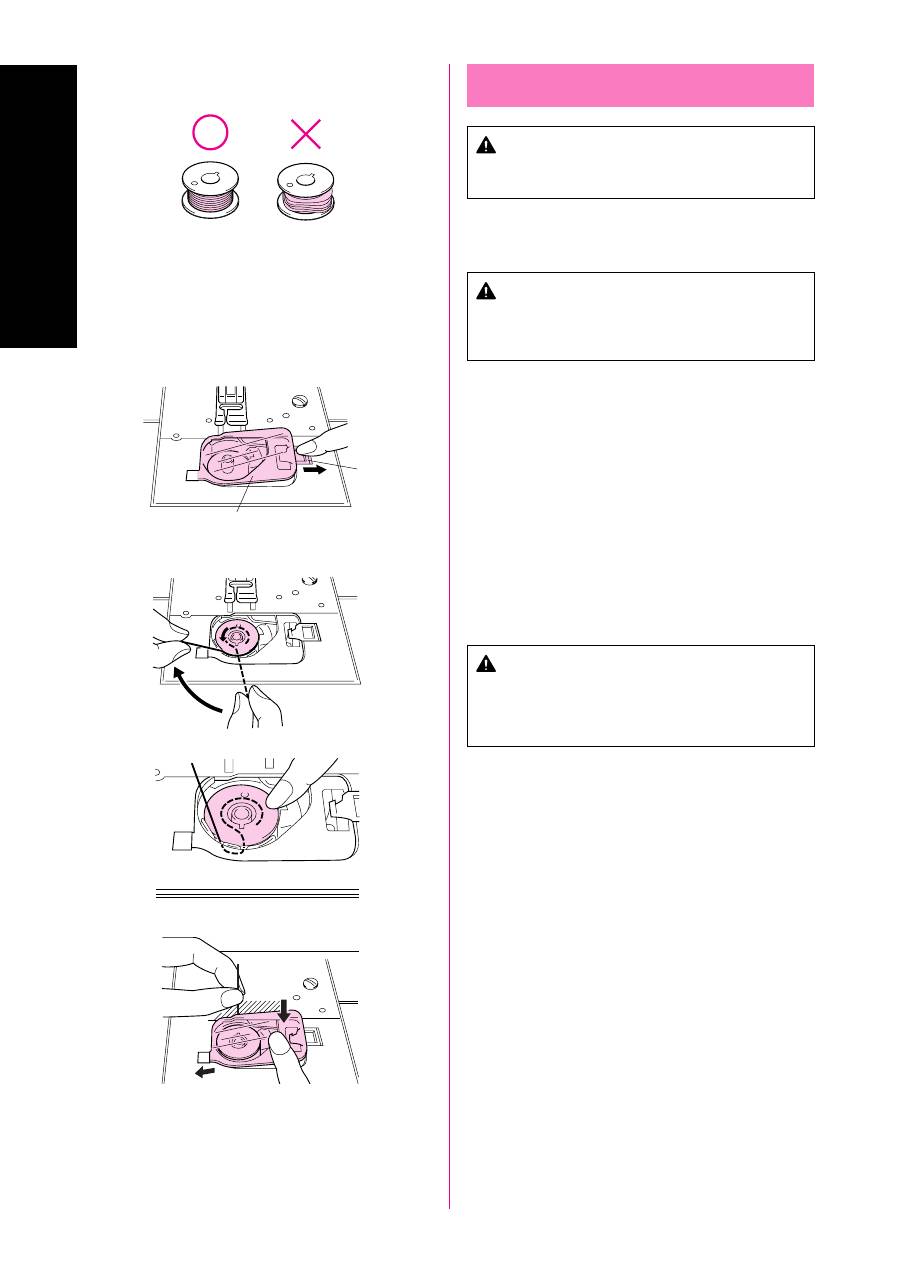
31
KNOWING YOUR SEWING MACHINE
KENNENLERNEN IHRER MASCHINE
КРАТКОЕ ТЕХНИЧЕСКОЕ ОПИСАНИЕ МАШИНЫ
2
1
2
1
Lower Threading
CAUTION
Setting the bobbin improperly may cause the thread ten-
sion to loosen, breaking the needle and resulting in injury.
1
Wound evenly
2
Wound poorly
CAUTION
Be sure to turn off the power. If you accidentally step on the
foot controller and the machine begins to operate, injury
could result.
1. Raise the needle to its highest position by turning the balance
wheel toward you (counterclockwise) and raise the presser foot
lever.
2. Slide the button and open the cover.
1
Slide button
2
Cover
3. Insert the bobbin so the thread comes out in the direction shown
by the arrow.
*
Use bobbins intended for use with this machine.
CAUTION
Be sure the bobbin is set so the thread unrolls in the correct
direction. If the thread unrolls in the wrong direction, it may
cause the thread tension to be incorrect or the needle to
break.
Hold the thread end, push the bobbin down with your finger, and
pass the thread securely through the thread cutting groove.
4. Replace the bobbin cover. Place the left tab in place (see arrow
1 at left), then press lightly on the right side (see arrow 2 at left)
until the cover clicks into place.
*
Insert the cover so that the end of the thread comes out from the
back of the cover (as shown by the slanted line in the illustration
at the left).
1
2
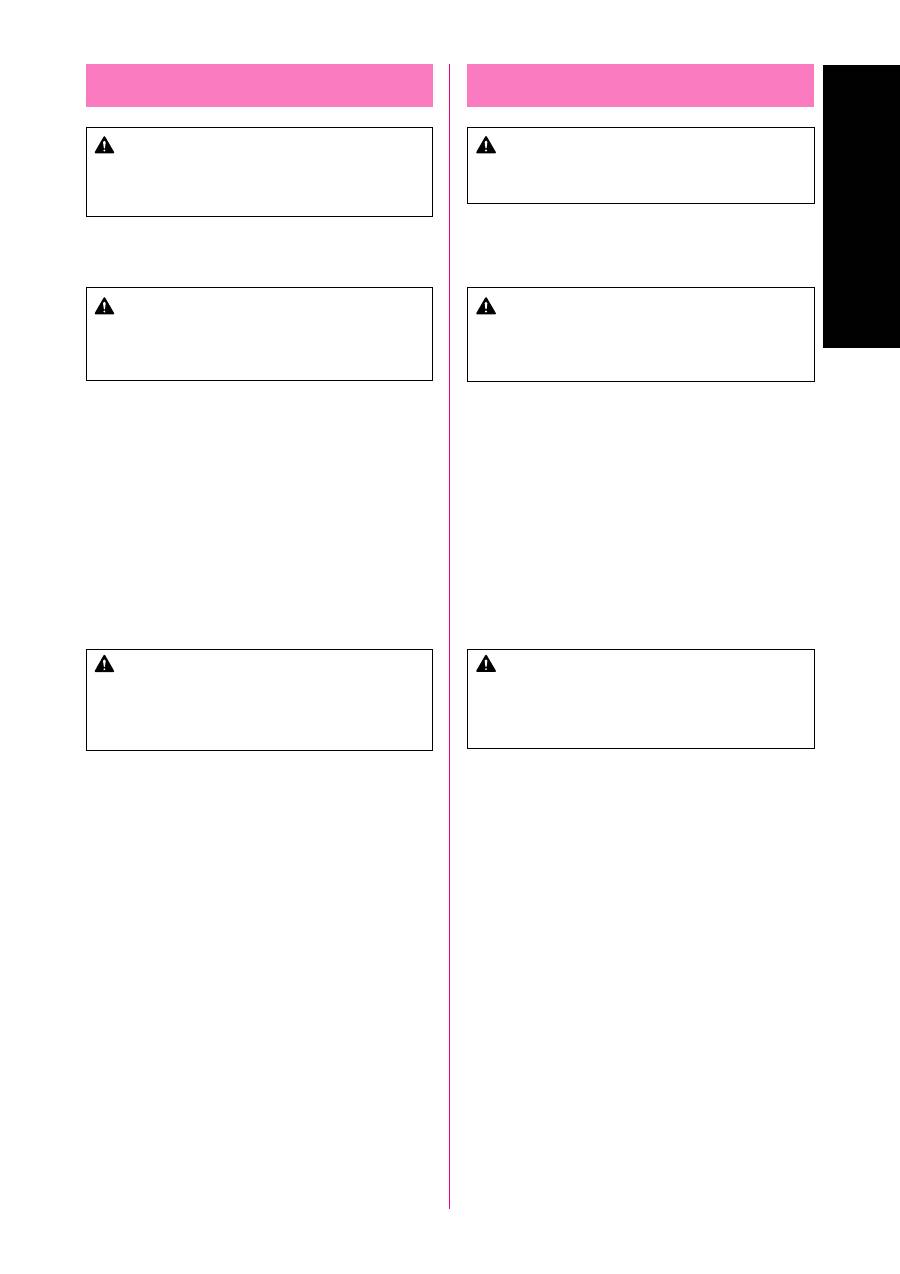
32
KNOWING YOUR SEWING MACHINE
KENNENLERNEN IHRER MASCHINE
КРАТКОЕ ТЕХНИЧЕСКОЕ ОПИСАНИЕ МАШИНЫ
Заправка нижней нитки
ПРЕДОСТЕРЕЖЕНИЕ
Неправильная установка шпульки может привести к
ослаблению натяжения нити, поломке иглы и травме.
1
Ровная намотка
2
Неправильная намотка
ПРЕДОСТЕРЕЖЕНИЕ
Обязательно отключите питание. Если Вы случайно
наступите на педаль ножного контроллера и запустите
швейную машину, Вы можете получить травму.
1. Установите иглу в крайнее верхнее положение, вращая
маховик на себя (против часовой стрелки при виде с торца
машины) и поднимите рычаг нажимной лапки.
2. Сдвиньте кнопку и откройте крышку.
1
Скользящая кнопка
2
Крышка
3. Вставьте шпульку, сориентировав конец нитки в
направлении, указанном стрелкой.
*
Используйте шпульки, предназначенные для использования
с данной швейной машиной.
ПРЕДОСТЕРЕЖЕНИЕ
Убедитесь в том, что шпулька установлена таким образом,
что нитка разматывается в правильном направлении. Если
нитка разматывается в неправильном направлении, это может
привести к нарушению натяжения нити или поломке иглы.
Придерживая конец нитки, надавите на шпульку пальцем, а
затем пропустите нитку сквозь прорезь обрезания нити.
4. Установите на место крышку шпульки. Сначала вставьте
на место левое ушко (см. стрелку 1 слева), а затем слегка
надавите на правую часть крышки (см. стрелку 2 слева),
пока крышка не встанет на место со щелчком.
*
Вставляйте крышку таким образом, чтобы конец нитки
торчал из-под задней части крышки (как показано
наклонным штрихом на рисунке слева).
Unterfadenführung
VORSICHT
Fehlerhaftes Einsetzen der Spule kann zur Folge haben, dass die
Fadenspannung zu locker ist und die Nadel hierdurch abbricht,
was zu Verletzungen führen kann.
1
Gleichmäßig gewickelt
2
Ungleichmäßig gewickelt
VORSICHT
Immer die Maschine ausschalten. Falls Sie versehentlich auf den
Fußanlasser treten und die Maschine zu arbeiten beginnt, besteht
sonst Verletzungsgefahr.
1. Bringen Sie die Nadel auf die höchste Position, indem Sie das Handrad
auf sich zu bewegen (entgegen dem Uhrzeigersinn). Heben Sie dann
den Nähfußhebel an.
2. Schieben Sie den Knopf zur Seite und öffnen Sie die Abdeckung.
1
Knopf wegschieben
2
Abdeckung
3. Die Spule so einsetzen, daß der Faden in der mit dem Pfeil markierten
Richtung herauskommt.
* Nur für diese Maschine geeignete Spulen verwenden.
VORSICHT
Achten Sie darauf, daß die Spule so eingesetzt ist, daß der Faden
sich in die richtige Richtung abwickelt. Wenn der Faden sich in die
falsche Richtung abwickelt, kann dies zur Folge haben, daß die
Fadenspannung zu locker ist und die Nadel hierdurch abbricht.
Das Fadenende halten, die Spule mit dem Finger eindrücken, und den
Faden sicher durch die Fadenschneidrille führen.
4. Bringen Sie den Abdeckung wieder an. Führen Sie die linke Lasche an
entsprechender Stelle ein (siehe Pfeil 1 links) und drücken Sie sie der
rechten Seite leicht nach unten (siehe Pfeil 2 links), bis die Abdeckung
einrastet.
* Die Abdeckung so einsetzen, daß das Fadenende aus der Rückseite der
Abdeckung herauskommt (wie durch die geneigte Linie in der Abbil-
dung links gezeigt).
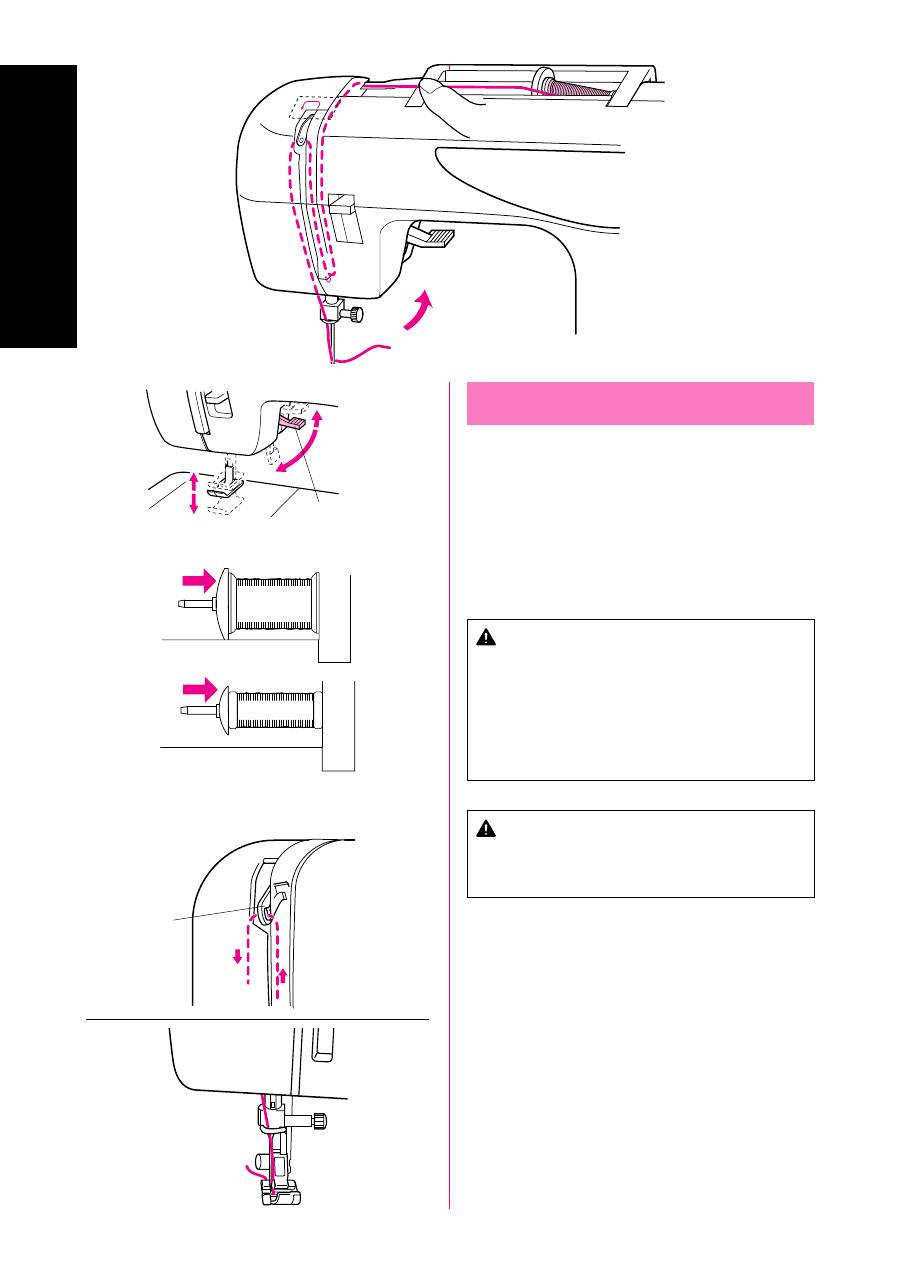
33
KNOWING YOUR SEWING MACHINE
KENNENLERNEN IHRER MASCHINE
КРАТКОЕ ТЕХНИЧЕСКОЕ ОПИСАНИЕ МАШИНЫ
Upper Threading
1. Raise the presser foot using the Presser Foot Lever.
2. Raise the needle to its highest position by turning the balance
wheel toward you (counterclockwise).
1
Presser foot lever
3. Place a spool of thread on the horizontal spool pin and press a
spool cap onto the spool pin to hold the thread spool firmly in
place.
The thread end should come from the bottom front of the spool.
CAUTION
•
If the thread spool and/or spool cap are set incorrectly,
the thread may tangle on the spool pin and cause the
needle to break.
•
Use the spool cap (large, medium or small) that is
closest in size to the thread spool. If a spool cap smaller
than the thread spool is used, the thread may become
caught in the slit on the end of the spool and cause the
needle to break.
CAUTION
Be sure to thread the machine properly. Improper threading
can cause the thread to tangle and break the needle, leading
to injury.
4. Deliver the upper thread as shown in this diagram.
5. Make sure to guide the thread through the thread take-up lever
from the right to the left.
2
Thread take-up lever
6. Place thread behind the guide above the needle.
7. Thread the needle from front to back leaving a thread tail of
about 5 cm (2").
NOTE:
If the thread take-up lever is lowered, the upper thread can not be
wrapped around the thread take-up lever. Be sure to raise the
Presser Foot Lever and the thread take-up before feeding the upper
thread.
Incorrectly feeding the thread may cause sewing problems.
1
2
5
1
2
4
3
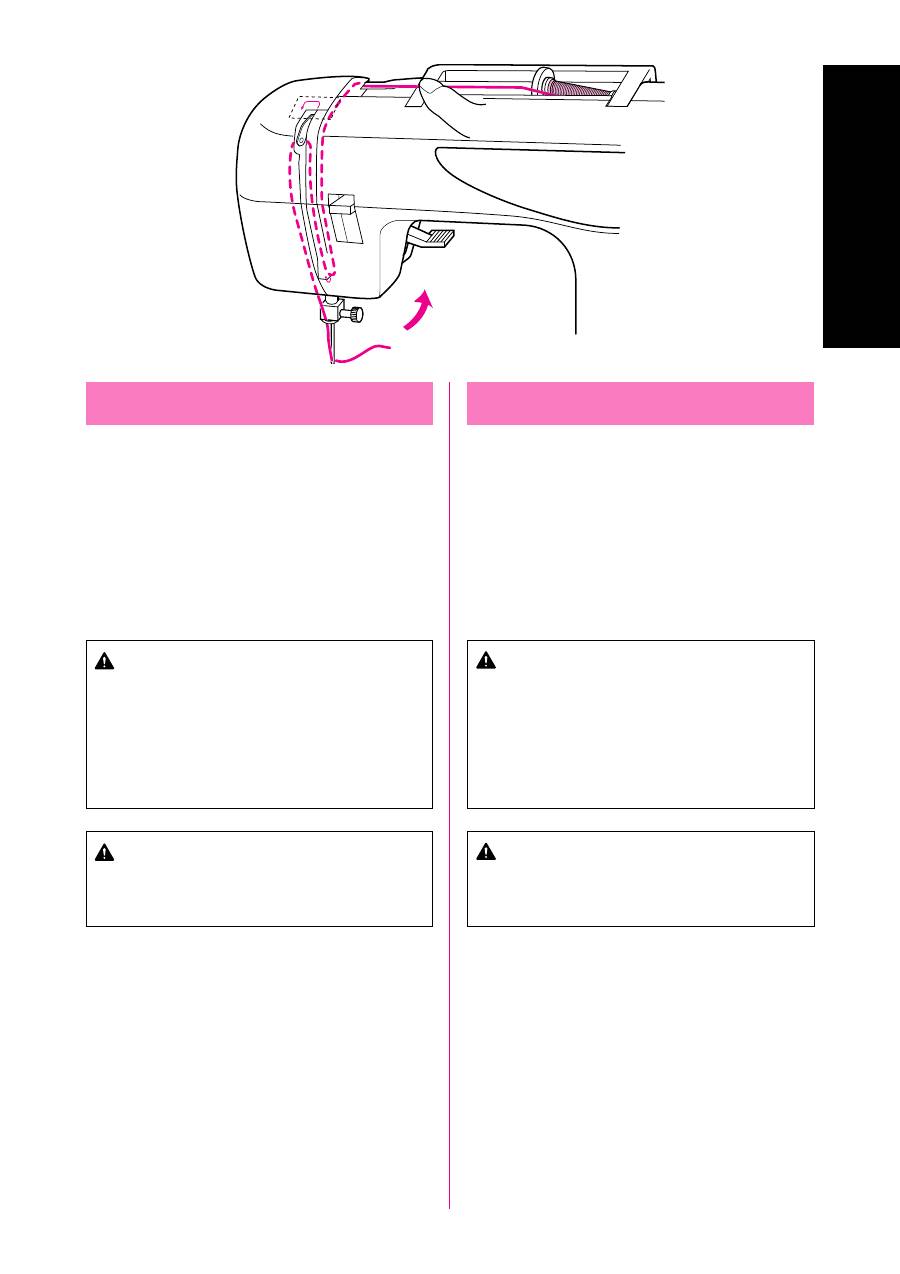
34
KNOWING YOUR SEWING MACHINE
KENNENLERNEN IHRER MASCHINE
КРАТКОЕ ТЕХНИЧЕСКОЕ ОПИСАНИЕ МАШИНЫ
Заправка верхней нитки
1. С помощью рычага нажимной лапки поднимите нажимную
лапку.
2. Установите иглу в крайнее верхнее положение, вращая
маховик на себя (против часовой стрелки при виде с торца машины).
1
Рычаг нажимной лапки
3. Установите катушку с нитками на горизонтальный катушечный
стержень и нажатием закрепите катушечный колпачок на катушечном
стержне. Катушка с нитками должна плотно удерживаться на стержне.
Конец нитки должен выступать из нижней передней части катушки.
ПРЕДОСТЕРЕЖЕНИЕ
• Если катушка с нитками и/или катушечный колпачок
установлены неправильно, нитка может запутаться на
катушечном стержне, и это может привести к поломке иглы.
•
Используйте катушечный колпачок (большой, малый,
средний), наиболее подходящий к катушке по размеру. Если
катушечный колпачок меньше используемой катушки, нитка
может зацепиться в прорези на торце катушки, и это
может привести к поломке иглы.
ПРЕДОСТЕРЕЖЕНИЕ
Обязательно следите за правильностью заправки нитки.
Неверная заправка может привести к запутыванию нитки, а это
может привести к поломке иглы и, как следствие, - к травме.
4. Пропустите верхнюю нитку, как показано на диаграмме.
5. Обязательно протягивайте нитку через рычаг подтягивания нитки
справа налево.
2
Рычаг подтягивания нитки
6. Заправьте нитку за нитенаправитель, расположенный над иглой.
7. Вставьте нитку в игольное ушко с передней стороны по
направлению от себя и вытяните ее свободный конец длиной
примерно 5 см (2 дюйма).
ПРИМЕЧАНИЕ:
Если рычаг подтягивания нитки опущен, пропустить верхнюю нитку вокруг
рычага подтягивания нитки невозможно. Перед протягиванием верхней
нитки необходимо обязательно поднять рычаг подтягивания нитки.
Неверная заправка нитки может привести к проблемам во время выполнения
швейных операций.
Oberfadenführung
1. Heben Sie den Nähfuß mit dem Nähfußhebel.
2. Bringen Sie die Nadel auf die höchste Position, indem Sie das Handrad
auf sich zu bewegen (entgegen dem Uhrzeigersinn).
1
Nähfußhebel
3. Platzieren Sie eine Garnrolle auf den waagerechten Garnrollenstift
und fixieren sie mit einem Spulenhalter, so daß die Garnrolle fest sitzt.
Das Fadenende sollte von der Unterseite der Rolle nach vorne heraushängen.
VORSICHT
•
Inkorrektes Einsetzen der Garnrolle bzw. Garnrollenkappe
kann dazu führen, daß der Faden sich auf dem Garnrollenstift
verwickelt und die Nadel dadurch abbricht.
•
Verwenden Sie eine Garnrollenkappe (groß, mittel oder klein),
die in ihrer Größe am besten zur Garnrolle paßt. Ist die
Garnrollenkappe kleiner als die Garnrolle, kann der Faden
sich in dem Schlitz am Rand der Garnrolle verfangen, was
dazu führen kann, daß die Nadel abbricht.
VORSICHT
Achten Sie darauf, daß der Faden richtig eingefädelt ist. Fehlerhafte
Fadenführung kann dazu führen, daß der Faden sich verwickelt und die
Nadel abbricht, wodurch Verletzungen entstehen können.
4. Führen Sie den Oberfaden, wie in der Abbildung gezeigt.
5. Achten Sie darauf, daß der Faden von rechts nach links durch den
Fadenhebel verläuft.
2
Fadenhebel
6. Fädeln Sie den Faden hinter die Führung oberhalb der Nadel.
7. Fädeln Sie die Nadel von vorne nach hinten um etwa 5 cm durch.
NOTIZEN:
Wenn der Fadenhebel abgesenkt ist, kann es sein, daß der obere Faden
nicht um den Fadenhebel gewickelt ist.
Achten Sie darauf, daß der
Nähfußhebel sowie der Fadenhebel in der oberen Position sind, bevor Sie
den Oberfaden einfädeln.
Falsches Einfädeln kann zu Problemen beim Nähen führen.
5
1
2
4
3
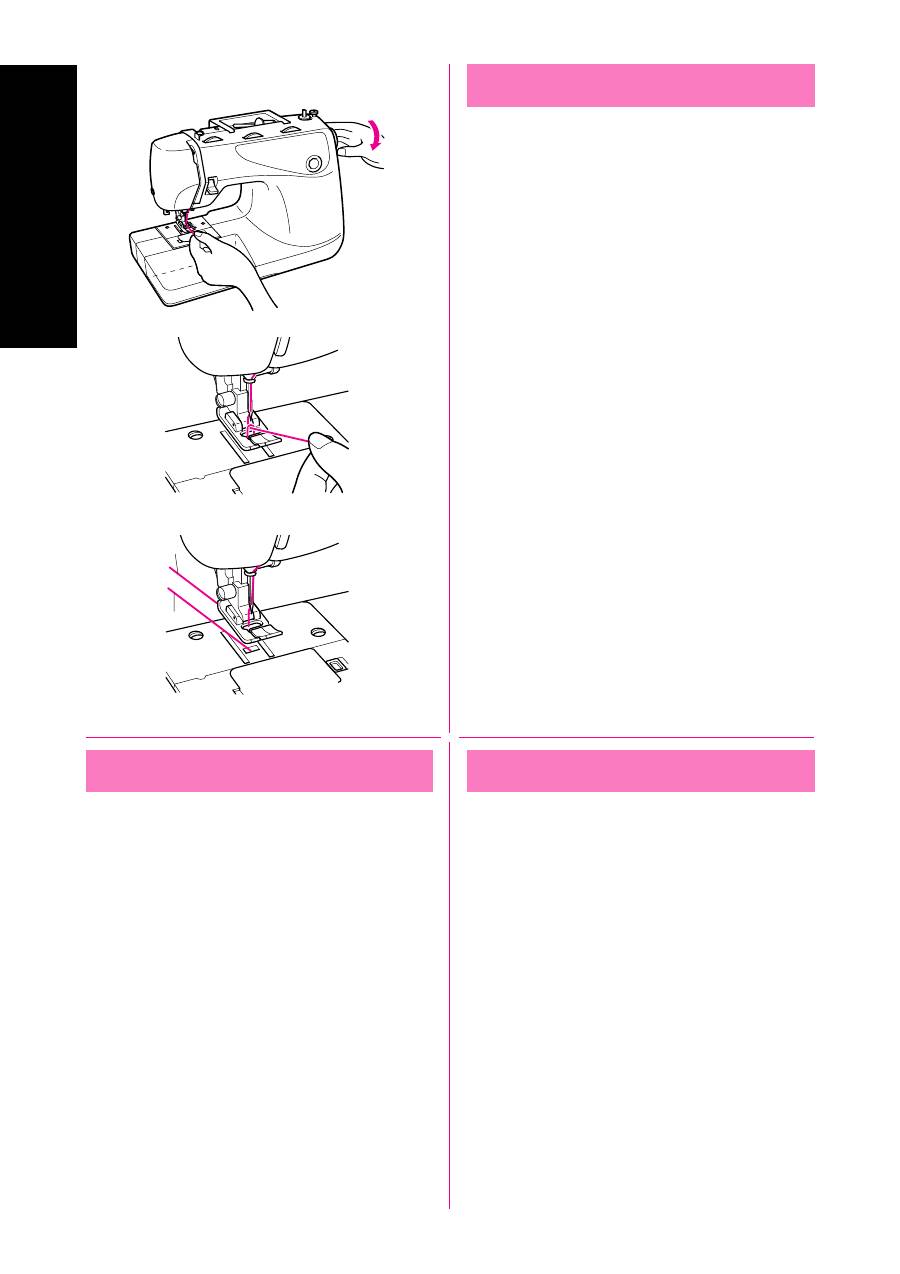
35
KNOWING YOUR SEWING MACHINE
KENNENLERNEN IHRER MASCHINE
КРАТКОЕ ТЕХНИЧЕСКОЕ ОПИСАНИЕ МАШИНЫ
Drawing Up Lower Thread
1. While lightly holding the end of the upper thread, slowly turn the
balance wheel to the front (counterclockwise) once by hand to
lower and then raise the needle.
2. Pull on the upper thread to draw up the lower thread.
3. Pull out about 10 cm (4") of both threads and place them toward
the back of the machine under the presser foot.
1
Upper thread
2
Lower thread
1
2
txt_Sp
Вытягивание нижней нитки
1. Слегка придерживая конец верхней нитки, медленно
поверните маховик на себя (против часовой стрелки) на
один оборот так, чтобы игла опустилась в нижнее
положение, а затем вновь поднялась в крайнее верхнее
положение.
2. Потяните верхнюю нитку на себя для того, чтобы вытянуть
нижнюю нитку.
3. Вытяните свободные концы обеих ниток приблизительно
на 10 см (4 дюйма) и, направив назад, пропустите их под
язычки нажимной лапки.
1
Верхняя нитка
2
Нижняя нитка
Heraufholen des Unterfadens
1. Während Sie das Ende des Oberfadens locker festhalten, drehen Sie
langsam am Handrad nach vorne (entgegen dem Uhrzeigersinn), bis
die Nadel ganz angehoben ist.
2. Ziehen Sie am Oberfaden, um den Unterfaden heraufzuholen.
3. Ziehen Sie beide Fäden etwa 10 cm durch den Schlitz des Nähfußes
nach hinten heraus.
1
Oberfaden
2
Unterfaden
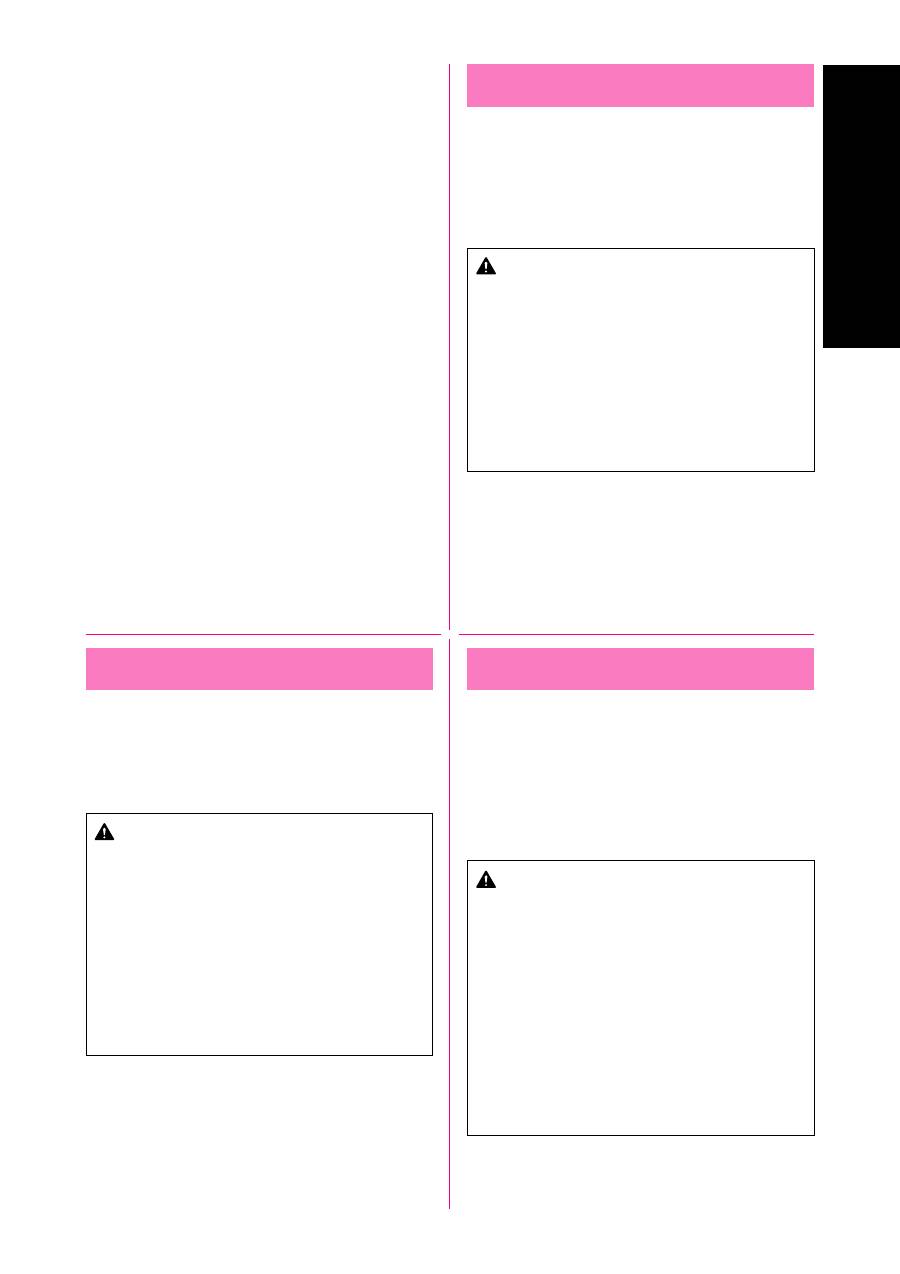
36
KNOWING YOUR SEWING MACHINE
KENNENLERNEN IHRER MASCHINE
КРАТКОЕ ТЕХНИЧЕСКОЕ ОПИСАНИЕ МАШИНЫ
Twin Needle Sewing
Your machine is designed for twin needle sewing, which allows you
to sew with two top threads. You can use the same color or two
different colors of thread for making decorative stitches. Twin
needle sewing works well with the following stitches: the Straight
Stitch (Center Needle Position), the Zigzag Stitch (1.5 mm), the
Triple Stretch Stitch (Center Needle Position), and the Triple Zigzag
Stretch Stitch (1.5 mm).
CAUTION
•
Use only twin needles made for this machine (part code
X57521-001). Other needles could break, resulting in
damage.
•
The twin needle should only be used with the Straight
Stitch (Center Needle Position), the Zigzag Stitch (1.5
mm), the Triple Stretch Stitch (Center Needle Position),
and the Triple Zigzag Stretch Stitch (1.5 mm). Do not use
the twin needle with any other stitch.
•
Do not sew with bent needles. The needle could break
and cause injury.
•
When using the twin needle, be sure to use zigzag
presser foot only.
txt_Sp
Двухигольная строчка
В данной машине предусмотрена возможность выполнения
строчки одновременно двумя верхними нитками. При этом
можно использовать нитки как одного цвета, так и разных
цветов для выполнения декоративных швов. Двухигольная
строчка особенно эффективна в комбинации со следующими
строчками: прямой стежок (центральное положение иглы),
зигзагообразный стежок (1,5 мм), тройная трикотажная
строчка (центральное положение иглы) и тройная трикотажная
строчка зигзаг (1,5 мм).
ПРЕДОСТЕРЕЖЕНИЕ
• Используйте только двойные иглы, специально
предназначенные для данной швейной машины (код
детали X57521-001). Другие иглы могут сломаться и
повредить швейную машину.
• Используйте двойную иглу только для выполнения
прямого стежка (центральное положение иглы),
зигзагообразного стежка (1,5 мм), тройной
трикотажной строчки (центральное положение
иглы) и тройной трикотажной строчки зигзаг (1,5
мм). Не используйте двойную иглу для выполнения
других строчек.
• Не шейте гнутыми иглами. Игла может сломаться и
нанести травму.
• При использовании двойной иглы применяйте
только нажимную лапку зигзаг.
Nähen mit Doppelnadel
Ihre Nähmaschine wurde für das Nähen mit Doppelnadel konstruiert,
wodurch Ihre Maschine mit zwei Oberfäden nähen kann. Sie können die
gleiche oder aber – für dekorative Zwecke – verschiedene Farben für die
Oberfäden wählen. Zwillingsnadel-Nähen funktioniert mit den folgenden
Stichen: Geradstich (Nadelposition Mitte), Zickzackstich (1,5 mm), Stretch-
Geradstich (Nadelposition Mitte) und Dreifach-Zickzackstich (1,5 mm).
VORSICHT
•
Benutzen Sie nur Zwillingsnadeln, die speziell für diese Ma-
schine hergestellt wurden (Best.-Nr. X57521-001). Andere
Nadeln könnten abbrechen, was zu Schäden an der Maschine
führen kann.
•
Die Zwillingsnadel soll nur mit dem Geradstich (Nadelposition
Mitte), dem Zickzackstich (1,5 mm), dem Stretch-Geradstich
(Nadelposition Mitte) und dem Dreifach-Zickzackstich (1,5
mm) verwendet werden. Nicht die Zwillingsnadel mit anderen
Stichen verwenden.
•
Verwenden Sie keine verbogenen Nadeln. Die Nadel könnte
sonst abbrechen und Sie könnten sich dadurch verletzen.
•
Bei Benutzung der Zwillingsnadel kann nur der Zickzack-
Nähfuß benutzt werden.
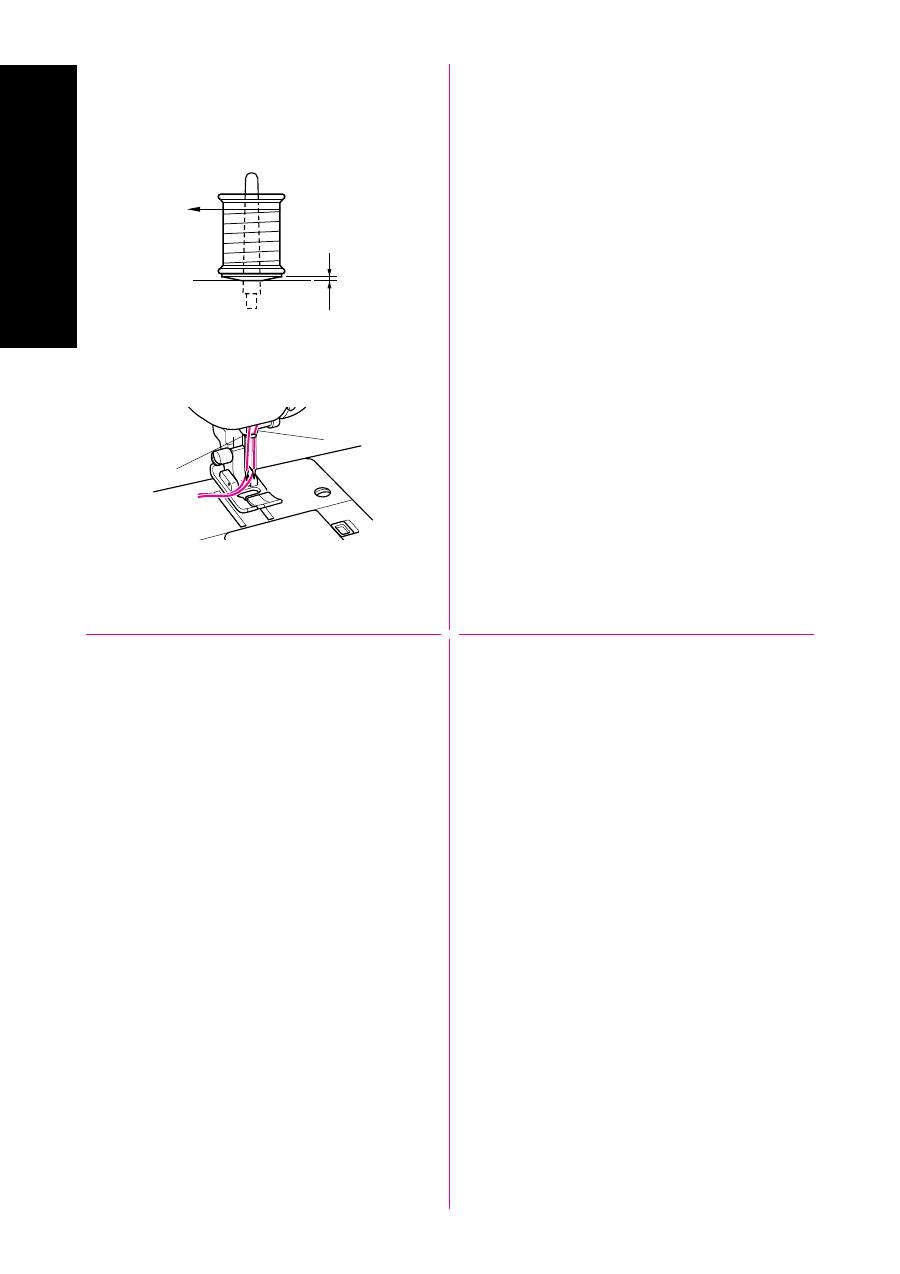
37
KNOWING YOUR SEWING MACHINE
KENNENLERNEN IHRER MASCHINE
КРАТКОЕ ТЕХНИЧЕСКОЕ ОПИСАНИЕ МАШИНЫ
A
B
1
2
INSERTING THE TWIN NEEDLE
Insert in the same way a single needle is inserted (refer to page 9).
The flat side of the needle should face toward the back and the
rounded side should face toward you.
PLACING THE EXTRA SPOOL PIN
Place the vertical spool pin in the hole found on top of the machine
near the horizontal spool pin. Place the second spool of thread onto
the vertical spool pin as shown in
fig. A
.
TWIN NEEDLE THREADING
Each needle should be threaded separately.
1. Threading the Right Needle
Follow the same instructions for single needle threading using
the thread from the spool on the extra spool pin. See page 33 for
more details.
2. Threading the Left Needle
Thread the left needle in the same manner that the right needle
was threaded, but do not pass the thread through the thread
guide above the needle before passing it through the eye of the
left needle as shown below in
fig. B
.
1
Right needle thread passes through this guide.
2
Left needle thread passes in front of this guide.
DOPPELNADEL EINSETZEN
Setzen Sie die Doppelnadel genau wie eine einfache Nadel ein (lesen Sie
dazu Seite 10). Die flache Seite der Nadel sollte nach hinten weisen, und
die runde Seite nach vorn.
SENKRECHTEN GARNROLLENSTIFT ANBAUEN
Setzen Sie den senkrechten Garnrollenstift in die Öffnung in der Nähe des
waagrechten Garnrollenstifts oben auf der Maschine. Setzen Sie die
zweite Garnrolle auf den senkrechten Garnrollenstift, wie in
Abb. A
gezeigt.
NÄHEN MIT DOPPELNADEL
Jede Nadel sollte einzeln eingefädelt werden.
1. Fadenführung rechte Nadel
Befolgen Sie die Anweisungen, die für das Nähen mit einem Ober-
faden gelten, benutzen Sie jedoch den Faden vom senkrechten
Garnrollenstift. Siehe Seite 34 für weitere Einzelheiten.
2. Fadenführung linke Nadel
Führen Sie den Faden für die linke Nadel auf die gleiche Weise wie für
den ersten Faden, der zweite Faden soll jedoch nicht durch die
Fadenführung über der Nadel laufen, bevor Sie den Faden durch das
Öhr der linken Nadel fädeln; siehe
Abb. B
.
1
Faden der rechten Nadel passiert die Führung.
2
Faden der linken Nadel läuft vor der Führung.
УСТАНОВКА ДВОЙНОЙ ИГЛЫ
Данная операция выполняется так же, как и операция
установки нормальной швейной иглы (см, стр. 10). Плоская
сторона иглы должна быть обращена назад, а цилиндрическая
часть - вперед.
УСТАНОВКА ДОПОЛНИТЕЛЬНОГО ВСТАВНОГО КАТУШЕЧНОГО СТЕРЖНЯ
Вставьте вертикальный катушечный стержень в специальное
гнездо, расположенное в верхней части машины рядом с
горизонтальным катушечным стержнем. Установите на
вертикальный стержень вторую катушку с нитками, как
показано на
рис. А
.
ЗАПРАВКА НИТОК В ДВОЙНУЮ ИГЛУ
Операция выполняется для каждой иглы отдельно.
1. Заправка правой иглы
Выполните те же операции, что и для заправки обычной
иглы, но при этом заправляйте иглу ниткой со вставного
катушечного стержня. Подробное описание заправки иглы
приводится на странице 34.
2. Заправка левой иглы
Операция выполняется аналогично операции заправки
правой иглы с той лишь разницей, что данная нитка минует
нитенаправитель, расположенный непосредственно над
иглой, и направляется сразу в игольное ушко левой иглы,
как это показано на
рис. В
.
1
Правая игольная нитка проходит через данный
нитенаправитель.
2
Левая игольная нитка проходит спереди
данного нитенаправителя.

38
KNOWING YOUR SEWING MACHINE
KENNENLERNEN IHRER MASCHINE
КРАТКОЕ ТЕХНИЧЕСКОЕ ОПИСАНИЕ МАШИНЫ
Thread Tension
Thread tension will affect the quality of your stitches. It may need to
be adjusted when you change fabric or thread type.
NOTE:
It is recommended that a test sample be made on a fabric scrap
before sewing on your project.
Possible misadjustments and their results.
Upper tension is too tight. (Fig. A)
Locks appear on the surface of the fabric.
<Solution>
Decrease the tension by turning the Upper Tension Control
Dial to a lower number.
Upper tension is too loose. (Fig. B)
Locks appear on the reverse side of the fabric.
<Solution>
Increase the tension by turning the Upper Tension Control Dial
to a higher number.
Correct tension (Fig. C)
Correct tension is important since too much or too little tension
will weaken your seams or cause puckers on your fabric.
1
Surface
2
Reverse side
3
Upper thread
4
Lower thread
5
Locks appear on surface of fabric
6
Locks appear on reverse side of fabric
4
3
5 ~
~
4
3
5 ~
~
txt_Sp
1
2
3
4
1
2
3
4
5
1
2
3
4
6
Натяжение ниток
Натяжение ниток имеет большое значение для качественного выполнения
любой строчки. Возможно, Вам придется регулировать натяжение ниток
при смене типа прошиваемой ткани или типа используемых ниток.
ПРИМЕЧАНИЕ:
Рекомендуем перед началом строчки на обрабатываемом
изделии произвести пробную строчку на лоскутке ткани с
целью коррекции параметров.
Возможные ошибки регулировки натяжения ниток и
способы их устранения.
Слишком сильное натяжение верхней нитки. <Рис.A>
На лицевой поверхности ткани образуются петли.
<Решение проблемы>
Вы можете снизить натяжение нитки повернув регулятор
натяжения верхней нитки в сторону уменьшения числовых величин.
Слишком слабое натяжение верхней нитки.<Рис.B>
На изнаночной стороне ткани образуются петли.
<Решение проблемы>
Вы можете повысить натяжение нитки повернув регулятор
натяжения верхней нитки в сторону увеличения числовых величин.
ПРАВИЛЬНОЕ НАТЯЖЕНИЕ<Рис.C>
Правильное натяжение имеет большое значение, так как слишком
сильное или слишком слабое натяжение ослабит шов и приведет к
образованию складок на ткани.
1
Лицевая сторона
2
Обратная сторона
3
Верхняя нитка
4
Нижняя нитка
5
На лицевой поверхности ткани образуются петли
6
На обратной стороне ткани образуются петли
Fadenspannung
Die Fadenspannung beeinflußt die Qualität Ihrer Stiche. Die Spannung
muß ggf. eingestellt werden, wenn Sie einen anderen Stoff oder anderen
Faden benutzen.
HINWEIS:
Es wird empfohlen, zum Test einen Stoffrest zu nähen, bevor Sie Ihr
Vorhaben beginnen.
Mögliche Fehleinstellungen und deren Ergebnisse.
Oberfadenspannung ist zu hoch. (Abb. A)
Die obere Stoffbahn wellt sich.
<Lösung>
Verringern Sie die Spannung, indem Sie die Oberfaden-spannung
auf eine niedrigere Zahl stellen.
Oberfadenspannung ist zu niedrig. (Abb. B)
Die untere Stoffbahn wellt sich.
<Lösung>
Erhöhen Sie die Spannung, indem Sie die Oberfadenspannung auf
eine höhere Zahl stellen.
Korrekte Spannung (Abb. C)
Die richtige Fadenspannung ist sehr wichtig, da zu geringe oder zu
hohe Spannung Ihre Nähte zu locker werden läßt, oder Wellen in den
Stoff näht.
1
Oberseite
2
Unterseite
3
Oberfaden
4
Unterfaden
5
Schlingen sind an der Vorderseite des Stoffes sichtbar
6
Schlingen sind an der Rückseite des Stoffes sichtbar
A
B
C
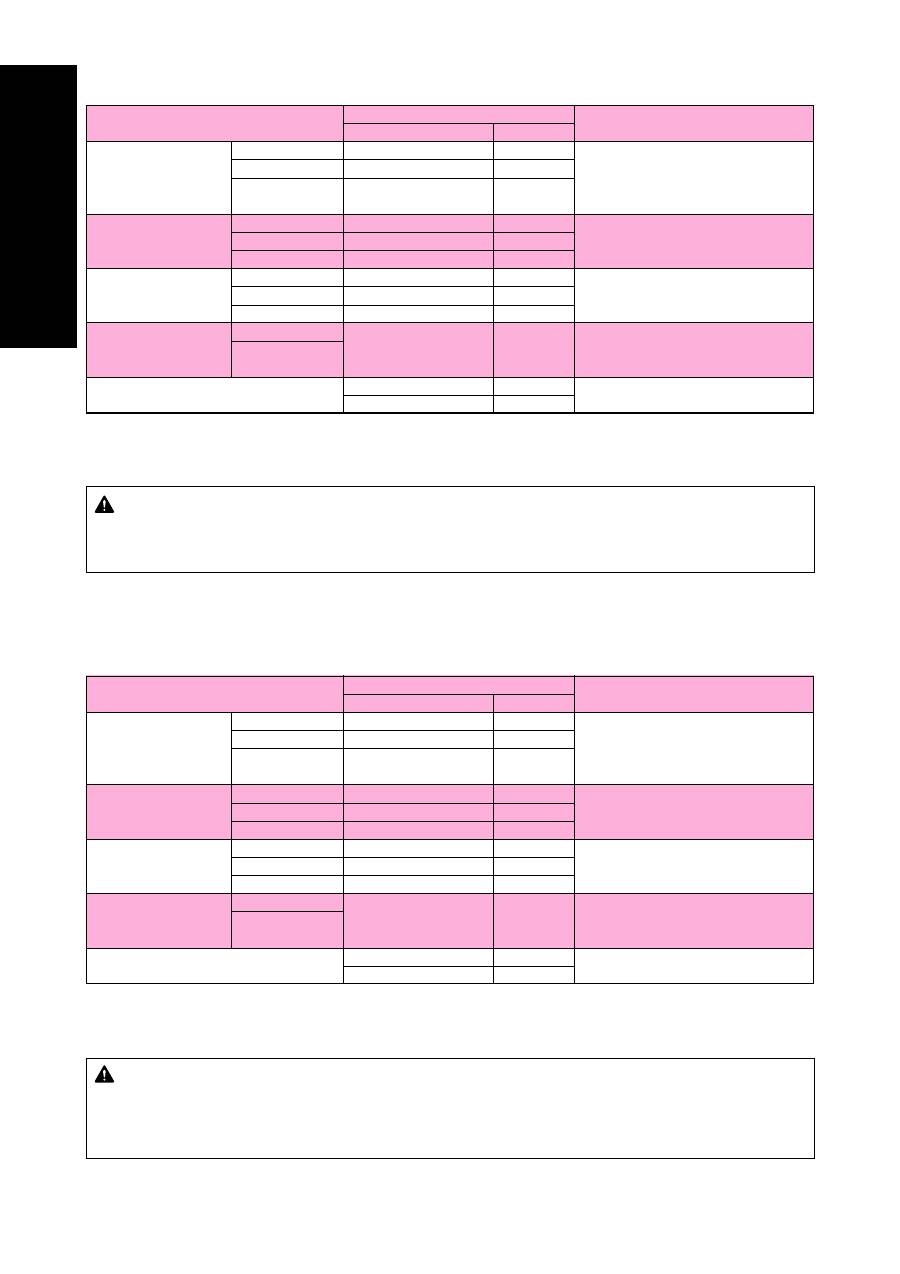
39
KNOWING YOUR SEWING MACHINE
KENNENLERNEN IHRER MASCHINE
КРАТКОЕ ТЕХНИЧЕСКОЕ ОПИСАНИЕ МАШИНЫ
FABRIC/THREAD/NEEDLE COMBINATIONS
NOTE:
1. For transparent nylon thread, always use needle 90/14 - 100/16.
2. The same thread is usually used for the bobbin thread and upper threading.
CAUTION
Be sure to follow the needle, thread, and fabric combinations listed in the table. Using an improper combination, especially a
heavyweight fabric (i.e., denim) with a small needle (i.e., 65/9 - 75/11), may cause the needle to bend or break, and lead to injury.
Also, the seam may be uneven, the fabric may pucker, or the machine may skip stitches.
Medium weight fabric
Lightweight fabric
Heavyweight fabric
Stretch fabric
For top stitching
Cotton
Synthetic mercerized
Silk or silk finished
Cotton
Synthetic mercerized
Silk
Cotton
Synthetic mercerized
Silk
Thread for knits
Synthetic mercerized
Silk
Fabric
Broadcloth
Taffeta
Flannel,
Gabardine
Lawn, Batiste
Georgette
Challis, Satin
Denim
Corduroy
Tweed
Jersey
Tricot
60 - 80
60 - 80
50 - 80
60 - 80
60 - 80
50 - 80
30 - 50
50
50
50 - 60
30
30
75/11 - 90/14
65/9 - 75/11
90/14 - 100/16
Ball point needle (golden colored)
75/11 - 90/14
90/14 - 100/16
Size
Thread
Size of needle
Type
STOFF-/FADEN-/NADELKOMBINATIONEN
NOTIZEN:
1. Benutzen Sie bei transparentem Nylonfaden immer eine Nadel 90/14 - 100/16.
2. Für Ober- und Unterfaden wird im Allgemeinen das gleiche Garn benutzt.
VORSICHT
Halten Sie sich bitte an die in der Tabelle aufgeführten Nadel-, Faden- und Stoffkombinationen. Eine unsachgemäße Kombination, wie z.B.
ein dicker Stoff (z.B. Jeansstoff) und eine dünne Nadel (z.B. 65/9 - 75/11), kann dazu führen, daß die Nadel sich verbiegt oder abbricht, was
Verletzungen zur Folge haben kann. Außerdem kann es zu ungleichmäßigen Nähten führen, der Stoff kann Falten werfen oder die Maschine
kann Stiche überspringen.
Stoffe mittleren
Gewichts
Dünne Stoffe
Dicke Stoffe
Stretch-Stoffe
Zum Nähen auf Stoffoberseite
Baumwolle
Synthetik mercerisiert
Seide oder Seidebeschichtung
Baumwolle
Synthetik mercerisiert
Seide
Baumwolle
Synthetik mercerisiert
Seide
Garne für Stretchstoffe
Synthetik mercerisiert
Seide
Stoffe
Grobes Tuch
Taft
Flanell,
Gabardine
Linon, Batist
Georgette
Challis, Satin
Jeansstoff
Kord
Tweed
Jersey
Trikot
60 - 80
60 - 80
50 - 80
60 - 80
60 - 80
50 - 80
30 - 50
50
50
50 - 60
30
30
75/11 - 90/14
65/9 - 75/11
90/14 - 100/16
Goldfarbene Nadel mit Kugelspitze
75/11 - 90/14
90/14 - 100/16
Größe
Faden
Nadelstärke (System 130/705 H)
Typ
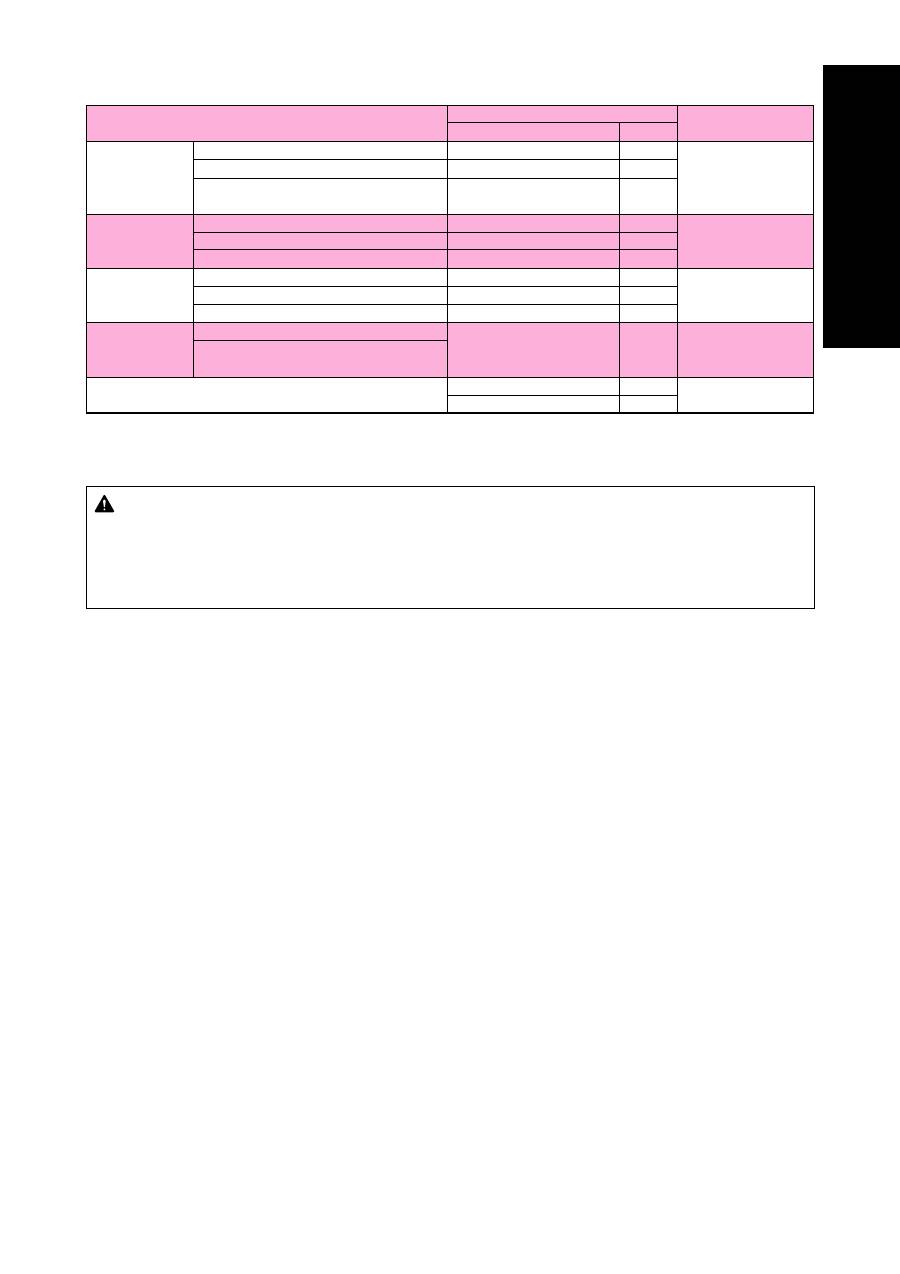
40
KNOWING YOUR SEWING MACHINE
KENNENLERNEN IHRER MASCHINE
КРАТКОЕ ТЕХНИЧЕСКОЕ ОПИСАНИЕ МАШИНЫ
Швейная нитка
ТАБЛИЦА КОМБИНАЦИЙ ТКАНЕЙ/НИТОК/ИГЛ
ПРИМЕЧАНИЕ:
1. При пошиве прозрачными нейлоновыми нитками всегда используйте иглу 90/14 - 100/16.
2. Обычно используется шпулечная и верхняя нитка одного номера.
ПРЕДОСТЕРЕЖЕНИЕ
Обязательно следуйте рекомендациям по подбору комбинаций тканей, игл и ниток, изложенным в соответствующей
таблице. Использование неверной комбинации, в особенности использование тонких игл (то есть, 65/9 - 75/11) для
пошива тяжелых тканей (например, джинсовой ткани) может привести к сгибанию иглы или ее поломке и, как
следствие, к травме. Кроме того, это может сказаться на ровности шва, привести к образованию складок на ткани или
к пропуску стежков внутри шва.
Ткани среднего веса
Легкие ткани
Тяжелые ткани
Трикотаж
Для обработки лицевой стороны ткани
Ткань
Тонкое сукно
Тафта
Фланель,
Габардин
Батист
Жоржет
Шелковая, Атласная
Хлопчатобумажная ткань с саржевым переплетением
Обычная ткань с продольным рубчиком
Твид
Джерси
Трико
60 - 80
60 - 80
50 - 80
60 - 80
60 - 80
50 - 80
30 - 50
50
50
50 - 60
30
30
75/11 - 90/14
65/9 - 75/11
90/14 - 100/16
Игла со сферическим
концом (золоченного
цвета)75/11 - 90/14
90/14 - 100/16
Номер
Номер иглы
Тип
Хлопковая
Синтетическая мерсеризованная
Шелк или
шелковая отделка
Хлопковая
Синтетическая мерсеризованная
Шелк
Хлопковая
Синтетическая мерсеризованная
Шелк
Нитка для вязания
Синтетическая мерсеризованная
Шелк
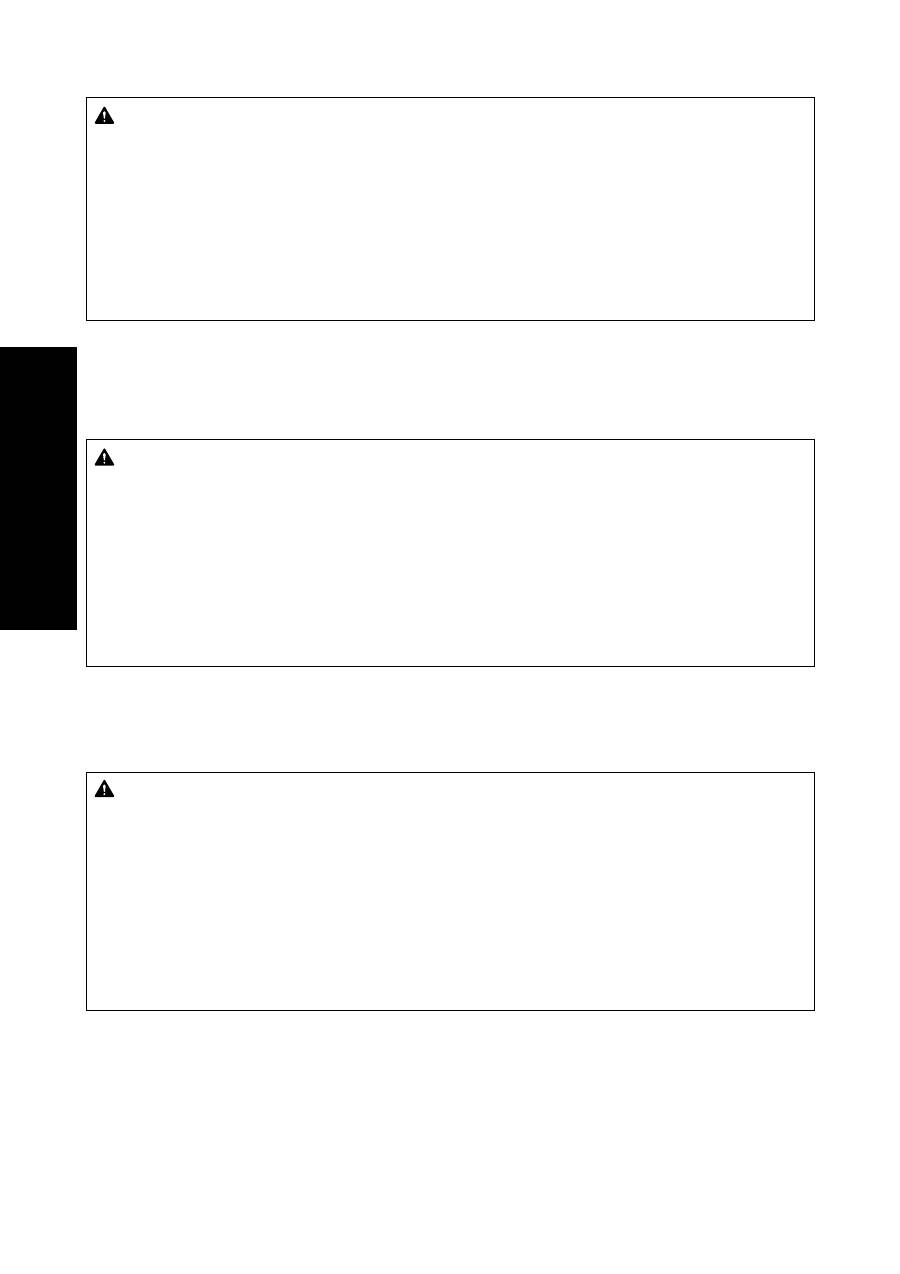
41
STRAIGHT AND ZIGZAG STITCHING
GERAD- UND ZICKZACKSTICH
НОРМАЛЬНАЯ ПРЯМАЯ И ЗИГЗАГООБРАЗНАЯ СТРОЧКА
PLEASE READ BEFORE SEWING
CAUTION
•
To avoid injury, pay special attention to the needle while the machine is in operation. Keep your hands away from moving
parts while the machine is in operation.
•
Do not stretch or pull the fabric during sewing. Doing so may lead to injury.
•
Do not use bent or broken needles. Doing so may lead to injury.
•
Take care that the needle does not strike basting pins or other objects during sewing. Otherwise, the needle may break and
cause injury.
•
If stitches become bunched, lengthen the stitch length setting before continuing sewing. Otherwise, the needle may break
and cause injury.
•
Always use the correct presser foot. If the wrong presser foot is used, the needle may strike the presser foot and bend or
break, resulting in injury.
•
When you turn the balance wheel by hand, always turn it to the front (counterclockwise). Turning it the other way may cause
the thread to tangle, and result in damage to the needle or fabric or injury.
ПОЖАЛУЙСТА, ПРОЧИТАЙТЕ ДО НАЧАЛА ШИТЬЯ
ПРЕДОСТЕРЕЖЕНИЕ
• Во избежание несчастного случая внимательно следите за иглой во время работы машины. Держите руки на
расстоянии от движущихся деталей во время работы машины.
• Не проталкивайте и не тяните за ткань во время шитья. Это может привести к травме.
• Не пользуйтесь погнутыми или сломанными иглами. Это может привести к травме.
• Следите за тем, чтобы в процессе выполнения строчки игла не ударила булавку или нечто подобное. В противном
случае возможна поломка иглы и нанесение травмы.
• При наложении стежков друг на друга увеличьте длину стежка и затем продолжите шов. В противном случае
возможны поломка иглы и нанесение травмы.
• Всегда пользуйтесь нажимной лапкой нужного типа. При использовании неправильной нажимной лапки игла
может ударить нажимную лапку, погнуться или сломаться, что, в свою очередь, может привести к травме.
• Когда Вы рукой поворачиваете маховик, всегда поворачивайте его на себя (против часовой стрелки при виде с
торца). Поворачивание маховика в обратном направлении может привести к запутыванию нитки и, как следствие,
- к повреждению иглы, ткани или к получению травмы.
BITTE VOR DEM NÄHEN LESEN
VORSICHT
•
Achten Sie während des Nähens immer darauf, wo die Nadel sich gerade befindet. Halten Sie die Hände während des Nähens fern von allen
beweglichen Teilen.
•
Ziehen oder zerren Sie den Stoff nicht beim Nähen. Die Nadel könnte abbrechen und Sie könnten sich dadurch verletzen.
•
Verwenden Sie keine verbogenen Nadeln. Diese könnten abbrechen und Sie könnten sich dadurch verletzen.
•
Achten Sie darauf, dass die Nähnadel während des Nähens keine Stecknadeln oder sonstige Objekte berührt. Die Nadel könnte sonst
abbrechen und Sie könnten sich dadurch verletzen.
•
Wenn die Stiche sich zusammenziehen, wählen Sie eine größere Stichlänge, bevor Sie weiternähen. Die Nadel könnte sonst abbrechen und
Sie könnten sich dadurch verletzen.
•
Benutzen Sie immer den richtigen Nähfuß. Wird der falsche Nähfuß benutzt, kann die Nadel auf den Nähfuß treffen und sich dadurch
verbiegen oder abbrechen, so dass es zu Verletzungen kommen kann.
•
Beim Drehen des Handrades mit der Hand dieses immer nach vorne drehen (entgegen dem Uhrzeigersinn). Drehen in die andere Richtung kann bewirken,
daß sich der Faden verfängt, was zu Beschädigung der Nadel oder des Stoffs oder zu Verletzungen führen kann.

42
STRAIGHT AND ZIGZAG STITCHING
GERAD- UND ZICKZACKSTICH
НОРМАЛЬНАЯ ПРЯМАЯ И ЗИГЗАГООБРАЗНАЯ СТРОЧКА
SS
SS
Straight Stitching
Pattern
Stitch Length
(Straight Stitch
1-4
(Left Needle Position))
(Straight Stitch
(Center Needle Position))
(Triple Stretch Stitch
(Left Needle Position))
(Triple Stretch Stitch
(Center Needle Position))
STARTING SEWING
1. Turn the Pattern Selection Dial to show your desired stitch in the
Pattern Indication Window. Setting the Pattern Selection Dial to
Straight Stitch or Triple Stretch Stitch is required.
2. Raise the needle to its highest position and lift the presser foot lever.
3. Pull the upper thread toward the back of the presser foot.
4. Place the fabric under the presser foot and position the needle
1 cm (3/8") from the edge of the fabric.
5. Lower the presser foot.
6. To backtack, push down the Reverse Sewing Lever as far as possible,
then step down on the foot controller to start reverse sewing.
7. Release the Reverse Sewing Lever and start sewing in the
forward direction by applying pressure to the foot controller.
*
Reverse sewing is used for locking the end of seams and where
reinforcement is needed.
CAUTION
Be sure the needle does not strike a basting pin, or any
other objects, during sewing. The thread could tangle or the
needle could break, causing injury.
Geradstich
Stichmuster
Stichlänge
(Geradstich
1-4
(Nadelposition links))
(Geradstich
(Nadelposition Mitte))
(Stretch-Geradstich
(Nadelposition links))
(Stretch-Geradstich
(Nadelposition Mitte))
NÄHBEGINN
1. Drehen Sie am Stichmuster-Einstellrad, bis der gewünschte Stich auf der
Stichmusteranzeige erscheint. Wählen Sie einen Geradstich oder einen Drei-
fach-Stretchstich.
2.
Bringen Sie die Nadel auf die höchste Position und heben Sie den Nähfußhebel.
3. Ziehen Sie den Oberfaden hinter den Nähfuß.
4. Legen Sie den Stoff unter den Nähfuß, so daß die Nadel ca. 1 cm innerhalb der
Stoffkante liegt.
5. Senken Sie den Nähfuß.
6. Zum verdeckten Zusammenheften die Rückwärts-Nähtaste so weit wie möglich
eindrücken und dann auf das Fußpedal treten, um das Rückwärtsnähen zu
beginnen.
7. Lassen Sie die Rückwärtstaste los und beginnen mit dem Nähen in Vorwärts-
richtung, indem Sie auf den Fußanlasser drücken.
*
Rückwärts-Nähen dient zum Sichern der Nahtenden und zum Nähen von Verstärkungen.
VORSICHT
Achten Sie darauf, dass die Nähnadel während des Nähens keine Reihnadeln oder
sonstige Objekte berührt. Der Faden könnte sich verwickeln und die Nadel könnte
abbrechen, was Verletzungen zur Folge haben könnte.
SS
Прямой стежок
Стежок
Длина стежка
(Прямой стежок
1-4
(Левое положение иглы))
(Прямой стежок
(Центральное положение иглы))
(Tройная трикотажная строчка
(Левое положение иглы))
(Tройная трикотажная строчка
(Центральное положение иглы))
Начало строчки
1. Вращая ручку выбора типа стежка, установите в окошке индикации типа стежка
требуемый тип строчки. Вам необходимо установить ручку выбора типа стежка на
«Прямой стежок» или на «Тройную трикотажную строчку» в зависимости от типа
стежка, который Вам нужен.
2. Установите иглу в крайнее верхнее положение и поднимите рычаг нажимной лапки.
3. Вытяните конец верхней нитки и расположите его позади лапки, направив его назад.
4. Положите прошиваемую ткань под нажимную лапку таким образом, чтобы игла
находилась на расстоянии примерно 1 см (3/8 дюйма) от кромки ткани.
5. Опустите нажимную лапку.
6. Для фиксации конца шва как можно сильнее нажмите на рычаг реверсирования строчки и слегка
надавите на педаль ножного контроллера, чтобы выполнить строчку в обратном направлении.
7. Для продолжения строчки в прямом направлении отпустите рычаг реверсирования
строчки и надавите на ножной контроллер.
*
Реверсирование строчки используется для фиксации конца швов и их усиления.
ПРЕДОСТЕРЕЖЕНИЕ
Следите за тем, чтобы в процессе выполнения строчки игла не ударила
булавку или иной предмет. В противном случае возможно запутывание нитки
или поломка иглы и нанесение травмы.
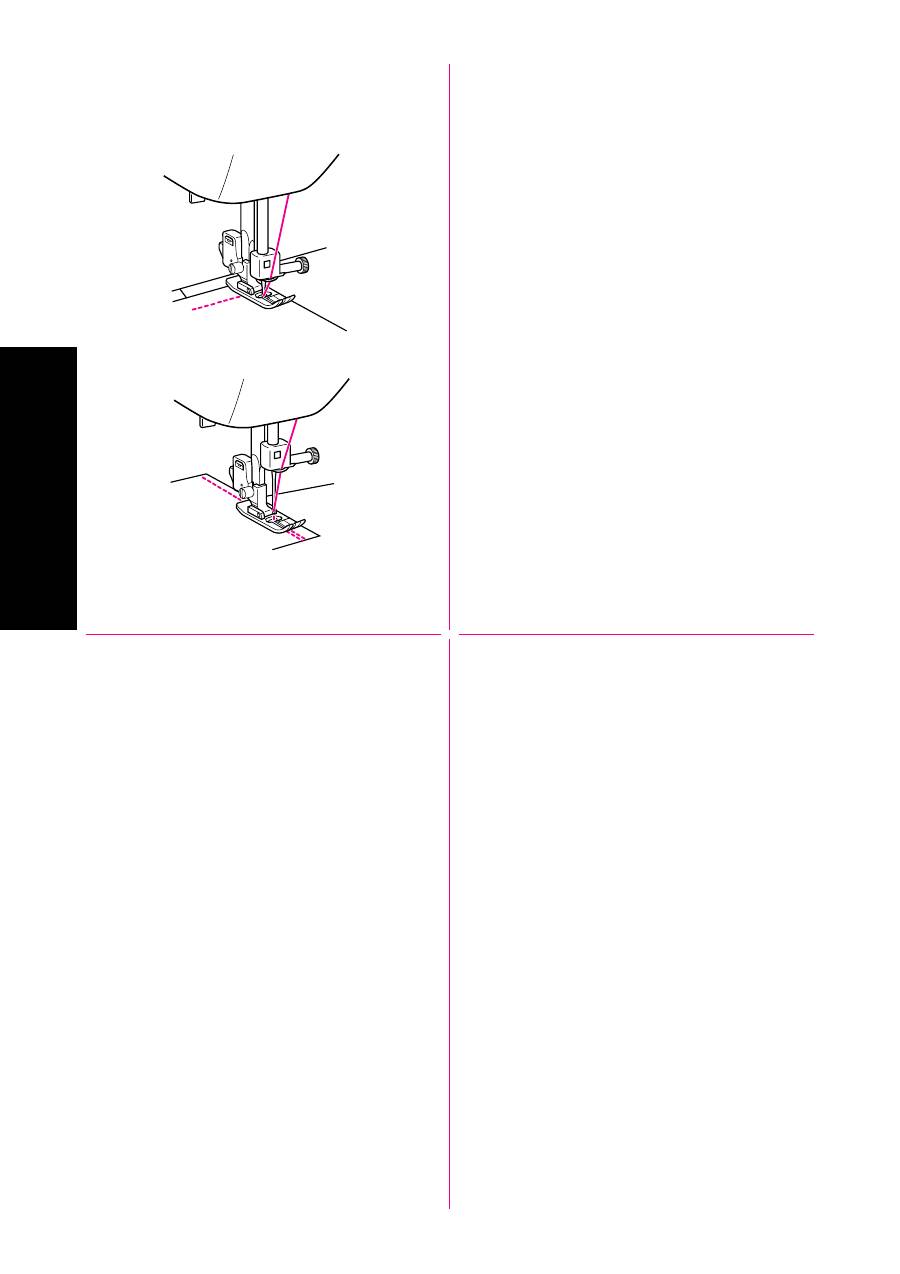
43
STRAIGHT AND ZIGZAG STITCHING
GERAD- UND ZICKZACKSTICH
НОРМАЛЬНАЯ ПРЯМАЯ И ЗИГЗАГООБРАЗНАЯ СТРОЧКА
CHANGING SEWING DIRECTION
1. Stop the machine at the point where you wish to change
direction with the needle still in the fabric.
2. Raise the presser foot and turn the fabric to line up its new
direction using the needle as a turning point.
3. Lower the presser foot and start sewing in the new direction.
FINISHING SEWING
Reverse stitching is used to lock the threads at the end of the seam
or wherever reinforcement is needed.
1. Stitch to the end of the seam and stop.
2. Push the Reverse Sewing Lever and stitch backwards for 1 cm
(3/8") from the end of the fabric.
NÄHRICHTUNG ÄNDERN
1. Stoppen Sie die Maschine dort, wo Sie die Nährichtung ändern
möchten, und so, daß sich die Nadel im Stoff befindet.
2. Heben Sie den Nähfuß und drehen den Stoff in die neue Richtung,
indem Sie die Nadel als Drehpunkt benutzen.
3. Senken Sie den Nähfuß und fahren Sie in der neuen Richtung mit dem
Nähen fort.
NÄHENDE
Nähen Sie am Ende der Naht nochmals rückwärts, um den Abschluß der
Naht zu verstärken.
1. Nähen Sie bis zum Ende der Naht und stoppen die Maschine.
2. Drücken Sie die Rückwärtstaste und nähen am Ende des Stoffes etwa
1 cm rückwärts.
ИЗМЕНЕНИЕ НАПРАВЛЕНИЯ СТРОЧКИ
1. Остановите машину в той точке шва, в которой необходимо
изменить направление строчки; игла при этом должна
оставаться в ткани.
2. Поднимите нажимную лапку и, используя иглу как центр
вращения, поверните ткань, сориентировав ее в нужном
направлении.
3. Опустите нажимную лапку и продолжите строчку в новом
направлении.
ЗАВЕРШЕНИЕ СТРОЧКИ
Реверсирование строчки используется для фиксации концов
нитки в конце шва и его усиления.
1. Доведите строчку до конца шва и остановите машину.
2. Нажмите рычаг реверсирования строчки и прошейте
обратную строчку н участке длиной примерно 1 см (3/8
дюйма) от края ткани.
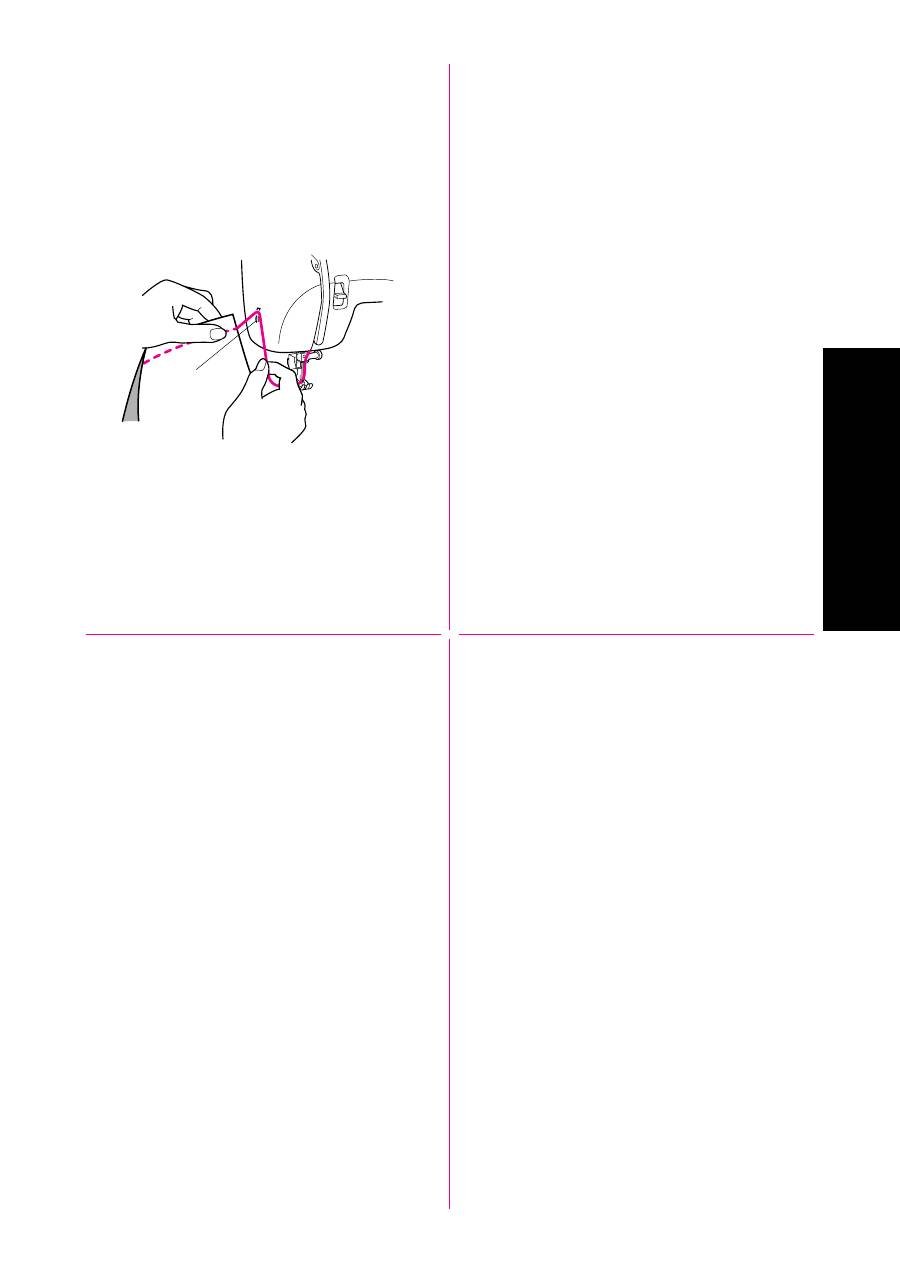
44
STRAIGHT AND ZIGZAG STITCHING
GERAD- UND ZICKZACKSTICH
НОРМАЛЬНАЯ ПРЯМАЯ И ЗИГЗАГООБРАЗНАЯ СТРОЧКА
REMOVING THE MATERIAL FROM THE MACHINE
1. Stop the machine.
Raise the needle to its highest position and make sure that the
thread take-up lever is also in its highest position.
2. Lift the presser foot and pull the fabric out gently to the left side.
3. Cut both threads with the thread cutter located on the left side of
the machine.
1
Thread cutter
4. To prepare the machine for the next seam, pull about 10 cm (4")
of thread through the toes of the presser foot toward the back of
the machine.
TOP STITCHING AND STRETCH MATERIALS
Straight Stitch is used for top stitching and sewing lightweight
fabrics.
Triple Stretch Stitch is used for stretch fabrics.
1
СНЯТИЕ ПРОШИТОЙ ТКАНИ С МАШИНЫ
1. Выключите машину.
Поднимите иглу в крайнее верхнее положение и убедитесь
в том, что рычаг подтягивания нитки при этом также
находится в крайней верхней позиции.
2. Поднимите нажимную лапку и плавно отведите ткань влево
из рабочей зоны иглы.
3. Обрежьте обе нитки с помощью ножа для обрезания ниток,
расположенного в левой части машины.
1
Нож для обрезания ниток
4. Чтобы подготовить машину к выполнению следующей
строчки, вытяните конец нитки через язычки нажимной
лапки назад на длину около 10 см (4 дюйма) и, направив
назад, расположите его позади лапки.
ВЕРХНИЙ СТЕЖОК И ЭЛАСТИЧНЫЕ МАТЕРИАЛЫ
Прямой стежок используется для верхних стежков и сшивания
легких тканей.
Тройная трикотажная строчка используется для сшивания
эластичных тканей.
STOFF AUS DER MASCHINE NEHMEN
1. Stoppen Sie die Maschine.
Heben Sie die Nadel auf die höchste Position und vergewissern Sie
sich, daß der Fadenhebel sich ebenfalls auf höchster Position befindet.
2. Heben Sie den Nähfuß und ziehen Sie den Stoff vorsichtig nach links
heraus.
3. Schneiden Sie beide Fäden mit dem Fadenabschneider links hinten an
der Maschine ab.
1
Fadenabschneider
4. Zur Vorbereitung der Maschine für die nächste Naht ziehen Sie etwa
10 cm Faden durch den Schlitz des Nähfußes nach hinten heraus.
APPLIZIEREN UND STRETCH-MATERIALIEN
Der Geradstich wird für Obernähte und zum Nähen leichter Stoffe
benutzt.
Der Stretch-Geradstich wird bei Stretch-Stoffen benutzt.
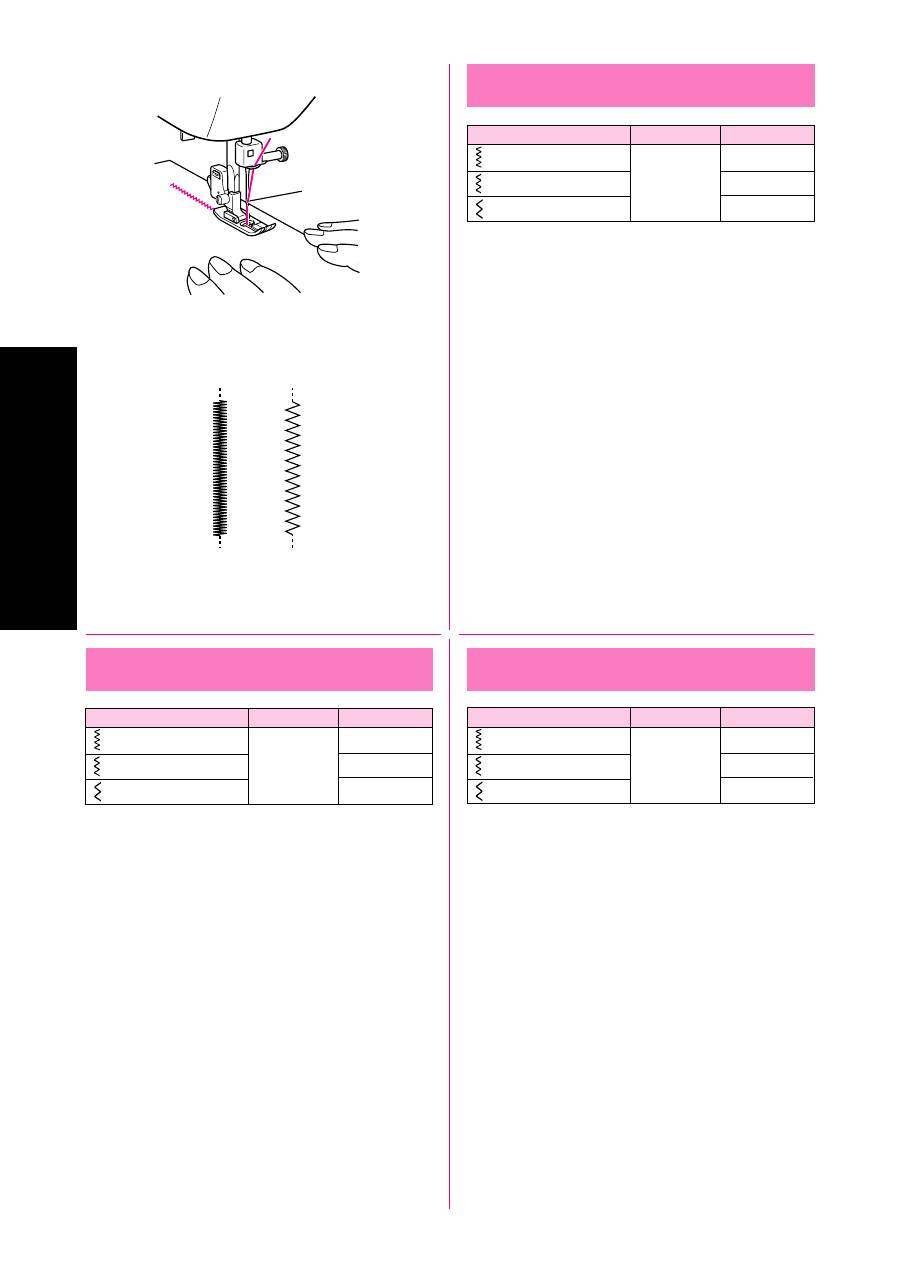
45
STRAIGHT AND ZIGZAG STITCHING
GERAD- UND ZICKZACKSTICH
НОРМАЛЬНАЯ ПРЯМАЯ И ЗИГЗАГООБРАЗНАЯ СТРОЧКА
Zigzag Stitching
Pattern
Stitch Length
Stitch Width
(Zigzag Stitch)
Fixed 1.5
(Zigzag Stitch)
F-4
Fixed 3.5
(Zigzag Stitch)
Fixed 5
ZIGZAG STITCH
Select the Zigzag Stitch using the Pattern Selection Dial. Then,
select the Stitch Length.
It is recommended to sew using the Straight Stitch at the beginning
and end of the Zigzag Stitches.
(This acts as a reinforcement stitch.)
SATIN STITCH
When the Zigzag Stitch length is set in the “F” range, it produces a
Satin Stitch (a dense Zigzag Stitch). The Satin Stitch can be used
for making decorative stitches. Select the pattern number accord-
ing to the desired stitch width. Then, set the stitch length in the “F”
range.
When sewing a satin stitch, use a slightly loose upper thread
tension to produce more beautiful stitches.
Зигзагообразный стежок
Стежок
Длина стежка Ширина стежка
(Зигзагообразный стежок)
Фиксир. 1,5
(Зигзагообразный стежок)
F-4
Фиксир. 3,5
(Зигзагообразный стежок)
Фиксир. 5
ЗИГЗАОГООБРАЗНЫЙ СТЕЖОК
Установите ручку выбора типа стежка на зигзагообразный
стежок. Затем установите длину стежка.
При данной строчке рекомендуется начало и конец шва
выполнять прямым стежком.
(Он служит для усиления шва.)
«САТИНОВЫЙ» СТЕЖОК
При установке длины зигзагообразного стежка в пределах
области с индексом“F”формируется так называемый
«сатиновый» стежок (мелкие зигзагообразные стежки).
Сатиновый стежок может использоваться для декоративной
обработки ткани. Установите ручку выбора типа стежка в
зависимости от требуемой ширины стежка. Затем установите
ручку регулирования длины стежка в пределах области с
индексом“F”.
Для получения красивого шва при прошивании ткани
сатиновым стежком слегка ослабьте натяжение верхней нити.
Zickzackstich
Stichmuster
Stichlänge
Stichbreite
(Zickzackstich)
Fixiert 1,5
(Zickzackstich)
F-4
Fixiert 3,5
(Zickzackstich)
Fixiert 5
ZICKZACKSTICH
Wählen Sie mit dem Stichmuster-Einstellrad den Zickzackstich. Wählen
Sie dann die Stichlänge.
Jeweils am Anfang und Ende von Zickzacknähten wird (zur Befestigung
und Verstärkung der Naht) der Geradstich empfohlen.
SATIN-STICH
Wenn die Länge des Zickzackstiches im Bereich “F” eingestellt ist, wird
ein Satin-Stich erzeugt (ein enger Zickzackstich). Der Satin-Stich kann für
dekorative Stiche benutzt werden. Wählen Sie die Nummer des Zickzack-
stiches der gewünschten Breite. Stellen Sie dann die Stichlänge in den
Bereich “F”.
Verringern Sie beim Nähen eines Satinstiches die Oberfadenspannung
etwas, um ein besseres Nahtbild zu erzielen.
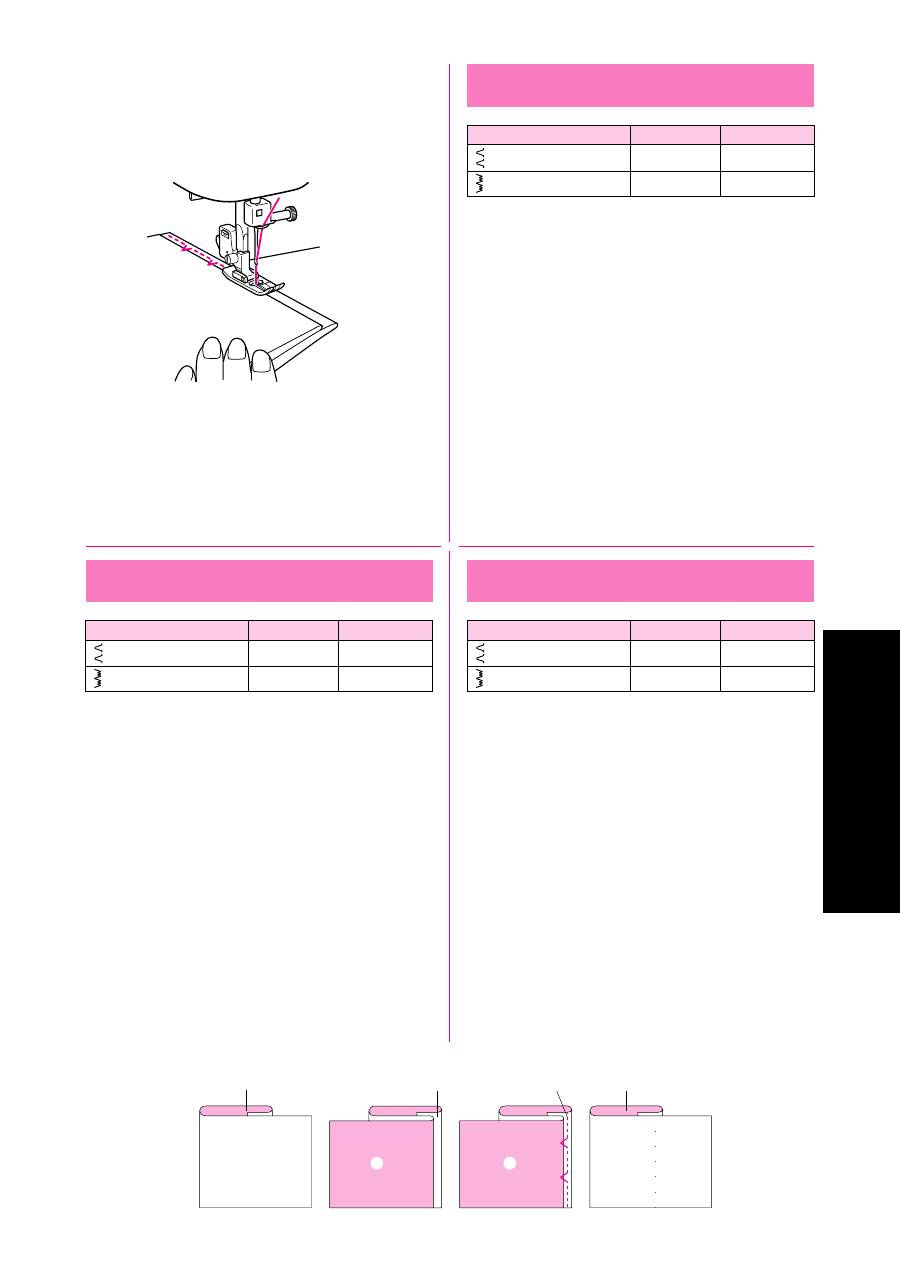
46
BUILT-IN STITCHES
VERF
Ü
GBARE STICHMUSTER
ФИГУРНЫЕ СТРОЧКИ
Blind Hem Stitching
Pattern
Stitch Length
Stitch Width
(Blind Hem Stitch)
F-2
Fixed 3
(Stretch Blind Hem Stitch)
F-1.5
Fixed 4
The Blind Hem Stitch is used to finish the edge of a project like the
hem of a pair of pants without the stitch showing. Use the Blind Hem
Stitch for any non-stretch fabrics and the Stretch Blind Hem Stitch
for stretch fabrics.
1. Both the threads should be the same color as the fabric.
2. Fold back the fabric to the desired location of the hem as shown
in
fig. A
. Then, fold the edge of the fabric as in
fig. B
. Leave a
6 mm (15/64") overlap at the edge.
3. Set the Pattern Selection Dial to Blind Hem Stitch or Stretch
Blind Hem Stitch and set the stitch length.
4. Sew on the fold as in
fig. C
.
5. When the fabric is unfolded you will have a Blind Stitch hem as
shown in
fig. D
.
1
Right side of fabric
2
Wrong side of fabric
NOTE:
The Stretch Blind Hem Stitch is useful for stretch fabrics.
A
B
C
D
1
2
1
1
1
2
2
2
Потайной подрубочный шов
Стежок
Длина стежка
Ширина стежка
(Потайной подрубочный шов)
F-2
Фиксир. 3
(Подшивочная трикотажная строчка)
F-1,5
Фиксир. 4
Потайной подрубочный шов используется для обработки кромки
деталей, например, низа брюк, когда необходимо, чтобы стежки шва
были невидимы. Для обработки неэластичных тканей следует
применять потайной подрубочный шов, а для эластичных
тканей - подшивочную трикотажную строчку.
1. Обе нитки должны быть одного цвета с обрабатываемой тканью.
2. Подогните ткань на изнаночную сторону в позиции, где должен
пройти шов, как показано на
рис. А
. Затем подогните ткань, как
показано на
рис. В
. Оставьте напуск на кромке около 6 мм
(15/64 дюйма).
3. Установите ручку выбора типа стежка на потайной подрубочный шов или
на подшивочную трикотажную строчку, а затем установите длину стежка.
4. Выполните строчку, как показано на
рис. С
.
5. После того, как материал будет расправлен, Вы получите невидимый с лицевой
поверхности ткани потайной подрубочный шов, как показано на
рис. D
.
1
Лицевая сторона ткани
2
Изнаночная сторона ткани
ПРИМЕЧАНИЕ:
Подшивочная трикотажная строчка применяется для
обработки эластичных тканей.
Blindsaumstich
Stichmuster
Stichlänge
Stichbreite
(Blindsaumstich)
F-2
Fixiert 3
(Elastischer blindstich)
F-1,5
Fixiert 4
Der Blindstich wird zum endgültigen Umnähen einer Stoffkante wie z. B.
der Unterkante einer Hose benutzt, wenn der Stich nicht zu sehen sein soll.
Benutzen Sie den Blindstich für alle Nicht-Stretch-Stoffe, und den Elasti-
schen Blindstich für Stretch-Stoffe.
1. Beide Fäden sollten die gleiche Farbe wie der Stoff besitzen.
2. Falten Sie den Stoff bis zur gewünschten Position des Hohlsaumes,
wie in
Abb. A
gezeigt. Falten Sie dann die Stoffkante wie in
Abb. B
.
Lassen Sie 6 mm überstehen.
3. Stellen Sie das Stichmuster-Einstellrad auf Blindsaumstich oder ela-
stischen Blindstich und stellen Sie die Stichlänge ein.
4. Nähen Sie auf der Falte, wie in
Abb. C
gezeigt.
5. Wenn der Stoff entfaltet ist, sehen Sie den Blindnaht-Saum wie in
Abb. D
.
1
Stoffvorderseite
2
Stoffrückseite
NOTIZEN:
Der Stretch-Blindstich eignet sich für Stretch-Stoffe.
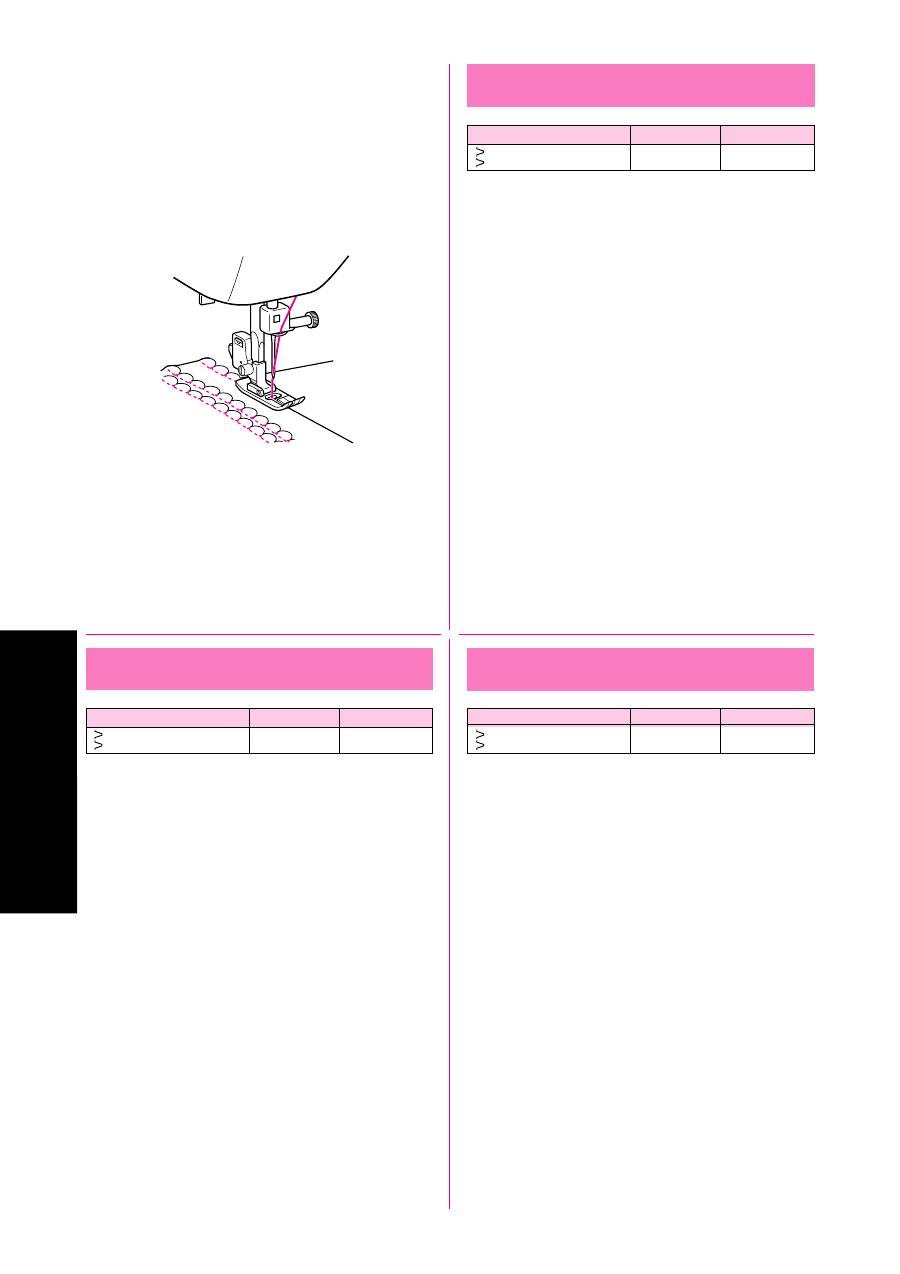
47
BUILT-IN STITCHES
VERF
Ü
GBARE STICHMUSTER
ФИГУРНЫЕ СТРОЧКИ
Shell Tuck Stitching
Pattern
Stitch Length
Stitch Width
(Shell Tuck Stitch)
F-3
Fixed 5
The Shell Tuck Stitch can be used to sew a picot (lace like) edge on
a lightweight fabric.
1. Set the Pattern Selection Dial to Shell Tuck Stitch.
2. Sew the fabric on the bias, placing it under the presser foot so
that the straight stitches are sewn on the seamline and the
zigzag stitches are sewn slightly over the folded edge.
3. This stitch requires a tighter thread tension than normal.
4. Sew at a slow speed.
Подшивочная строчка
Стежок
Длина стежка
Ширина стежка
(Подшивочная строчка)
F-3
Фиксир. 5
Подшивочная строчка предназначена для пришивания
кружевной полоски к кромке легкой ткани.
1. Установите ручку выбора типа стежка на подшивочную
строчку.
2. Прошейте обрабатываемую ткань, расположив ее под
нажимной лапкой таким образом, чтобы при смещении
ткани прямые стежки были направлены вдоль линии
формируемого шва, а зигзагообразные стежки слегка
перекрывали подогнутую кромку.
3. Данная строчка требует повышенного натяжения нитки.
4. Выполняйте строчку на малой скорости.
Biesenstich
Stichmuster
Stichlänge
Stichbreite
(Biesenstich)
F-3
Fixiert 5
Der Biesenstich kann als Kanten-Zierstich (ähnlich Spitzen) auf leichten
Stoffen benutzt werden.
1. Stellen Sie das Stichmuster-Einstellrad auf den Biesenstich ein.
2. Nähen Sie den Stoff schräg zum Fadenlauf, indem Sie den Stoff so
unter den Nähfuß legen, daß die geraden Stiche entlang des Saums
laufen und die Zickzackstiche leicht über die gefaltete Stoffkante
hinaus gehen.
3. Dieser Stich erfordert eine höhere Fadenspannung als normal.
4. Nähen Sie mit langsamer Geschwindigkeit.
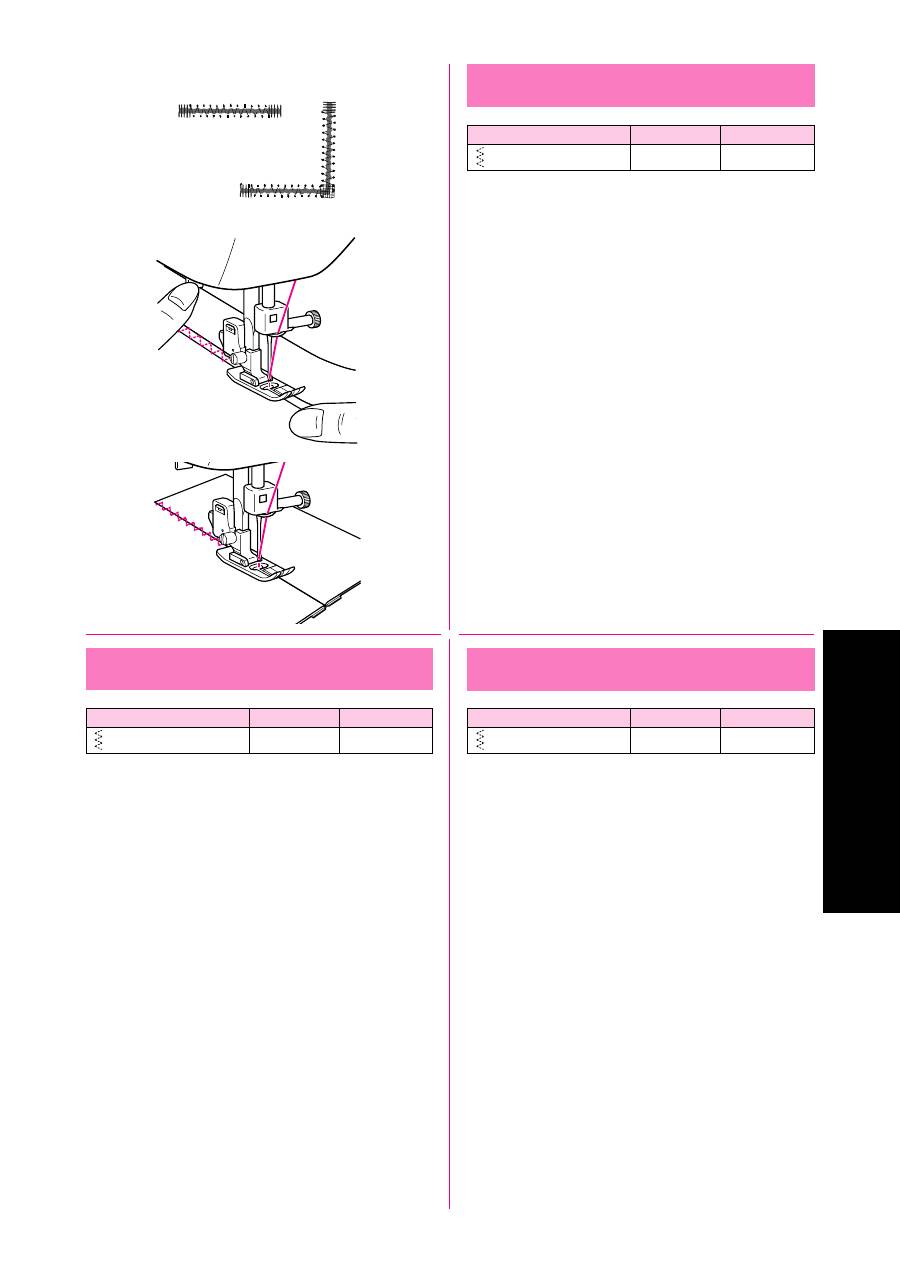
48
BUILT-IN STITCHES
VERF
Ü
GBARE STICHMUSTER
ФИГУРНЫЕ СТРОЧКИ
Elastic Stitching
Pattern
Stitch Length
Stitch Width
(Elastic Stitch)
F-2.5
Fixed 5
The Elastic Stitch can be used for 3 functions: mending, sewing
elastic or joining fabric. Each is explained below.
Set the Pattern Selection Dial to Elastic Stitch.
MENDING
1. Place the reinforcement fabric under area to be mended.
2. Following the line of the tear, sew using the Elastic Stitch as
illustrated in
fig. A
.
SEWING ELASTIC
1. Place the elastic on the fabric.
2. As you sew, stretch the elastic both in the front and behind the
presser foot as shown in
fig. B
.
JOINING FABRIC
The Elastic Stitch can be used to join two pieces of fabric together
and is very effective when sewing knitted fabrics. When nylon
thread is used, the stitch will not be visible.
1. Place the edge of the two pieces of fabric together and center
them under the presser foot.
2. Sew them together using the Elastic Stitch taking care to keep
the two fabric edges close together as shown in
fig. C
.
Эластичная строчка
Стежок
Длина стежка
Ширина стежка
(Эластичная строчка)
F-2,5
Фиксир. 5
Эластичная строчка может использоваться для трех целей: для
штопки порезов ткани, для пришивания резинки и для сшивания
кусков ткани. Каждый из указанных методов описан ниже.
Установите ручку выбора типа стежка на эластичную строчку.
ШТОПКА ПОРЕЗОВ ТКАНИ
1. Положите заплатку под порез, подлежащий ремонту.
2. Ориентируясь по направлению линии пореза ткани, выполните
шов эластичной строчкой, как показано на
рис. A
.
ПРИШИВАНИЕ РЕЗИНКИ
1. Наложите резинку на ткань.
2. Во время выполнения строчки растягивайте резинку как
спереди, так и сзади нажимной лапки, как показано на
рис. B
.
СШИВАНИЕ КУСКОВ ТКАНИ
Эластичная строчка может использоваться, когда необходимо
сшить вместе два куска ткани. В частности, она особо
эффективна для обработки трикотажных тканей. Если Вы
примените нейлоновые нитки, шов становится практически
невидим.
1. Поместите два куска ткани встык относительно друг друга
и так, чтобы линия стыка проходила под нажимной лапкой.
2. Сшейте их вместе эластичной строчкой, следя за тем,
чтобы в процессе продвижения ткани кромки обоих кусков
были плотно прижаты друг к другу, как показано на
рис. С
.
A
B
C
Elastikstich
Stichmuster
Stichlänge
Stichbreite
(Elastikstich)
F-2,5
Fixiert 5
Der Elastikstich kann für 3 Arbeiten benutzt werden: zum Flicken, zum
Nähen von Elastik oder zum Zusammennähen von Stoff. Alle drei
Arbeiten werden unten erklärt.
Stellen Sie das Stichmuster-Einstellrad auf den Elastikstich ein.
FLICKEN
1. Legen Sie ein Stück Stoff unter die zu flickende Stelle.
2. Folgen Sie der Rißlinie mit dem Elastikstich, wie in
Abb. A
gezeigt.
EINNÄHEN VON ELASTIKBÄNDERN
1. Legen Sie das Elastikband auf den Stoff.
2. Während Sie nähen, spannen Sie das Elastikband vor und hinter dem
Nähfuß, wie in
Abb. B
gezeigt.
STOFFE ZUSAMMENNÄHEN
Mit dem Elastischen Zickzack können Sie zwei Stoffstücke zusammennä-
hen. Der Stich ist auch für Strick besonders geeignet. Wenn Sie Nylon-
Faden benutzen, ist der Stich nicht sichtbar.
1. Legen Sie die Kanten der beiden Stoffstücke zusammen und mittig
unter den Nähfuß.
2. Nähen Sie die Stücke mit dem Elastischen Zickzack zusammen und
achten Sie darauf, daß Sie die Stoffkanten so dicht zusammenhalten,
wie in
Abb. C
gezeigt.
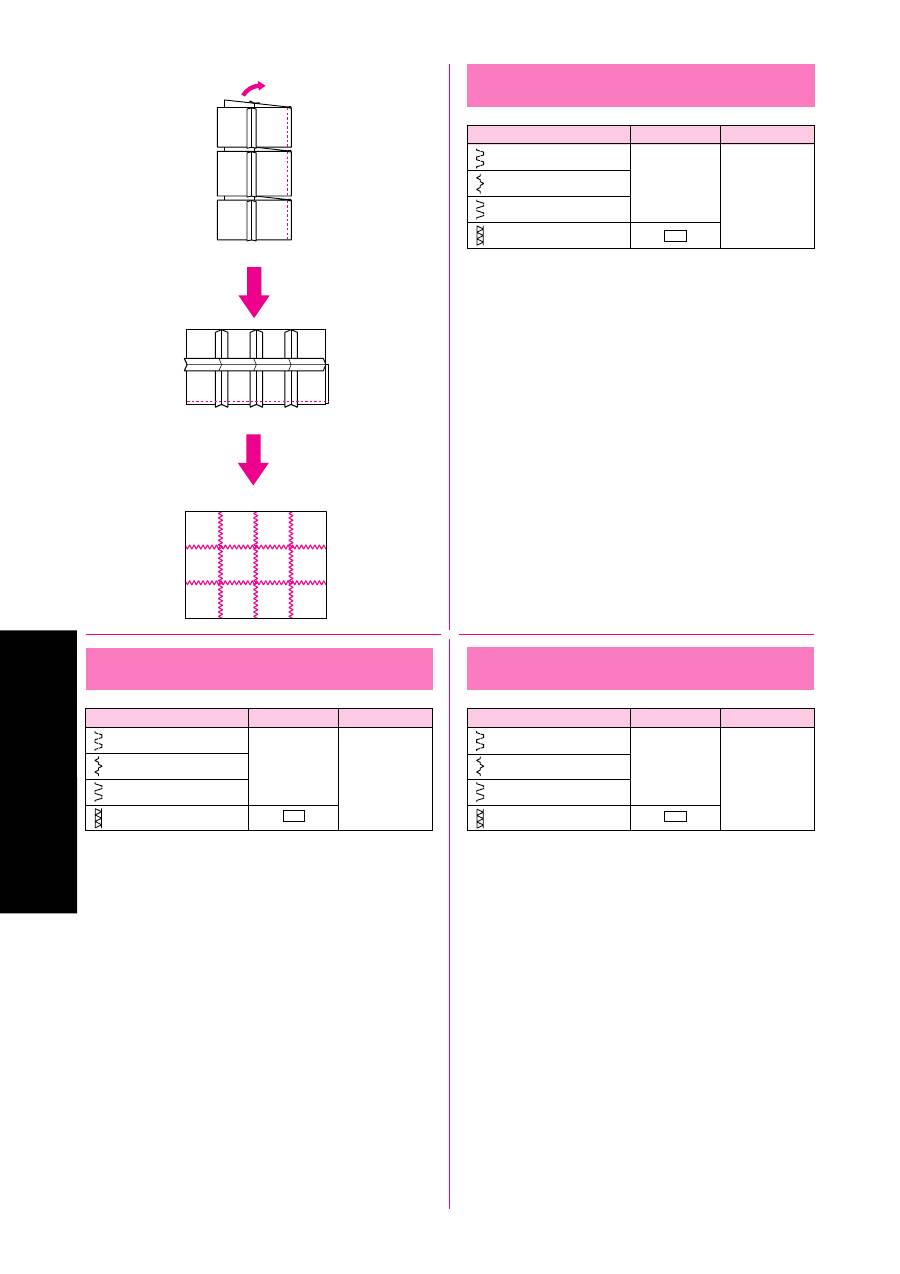
49
BUILT-IN STITCHES
VERF
Ü
GBARE STICHMUSTER
ФИГУРНЫЕ СТРОЧКИ
Double Action Stitching
Pattern
Stitch Length
Stitch Width
(Double Action Stitch)
(Bridging Stitch)
F-3
Fixed 5
(Rampart Stitch)
(Decorative hem Stitch)
SS
These stitches are used for joining two pieces of fabric, for example,
when making patchwork.
Set the Pattern Selection Dial to Double Action Stitch, Bridging
Stitch, etc.
Стежок с двойным эффектом
Стежок
Длина стежка Ширина стежка
(Стежок с двойным эффектом)
(Строчка-мостик)
F-3
Фиксир. 5
(Стежок рампарт)
(Декоративный подрубочный стежок)
SS
Данные типы стежка применяются для сшивания двух кусков
ткани, например, при лоскутном шитье.
Установите ручку выбора типа стежка на стежок с двойным
эффектом, строчка-мостик и т.д.
Elastische Schrittnaht
Stichmuster
Stichlänge
Stichbreite
(Elastische schrittnaht)
(Brückenstich)
F-3
Fixiert 5
(Palisadenstich)
(Flachnaht)
SS
Diese Stiche werden benutzt, um zwei Stoffteile zusammenzunähen, z.B.
für Patchwork.
Stellen Sie das Stichmuster-Einstellrad auf Elastische Schrittnaht oder
Brückenstich ein.
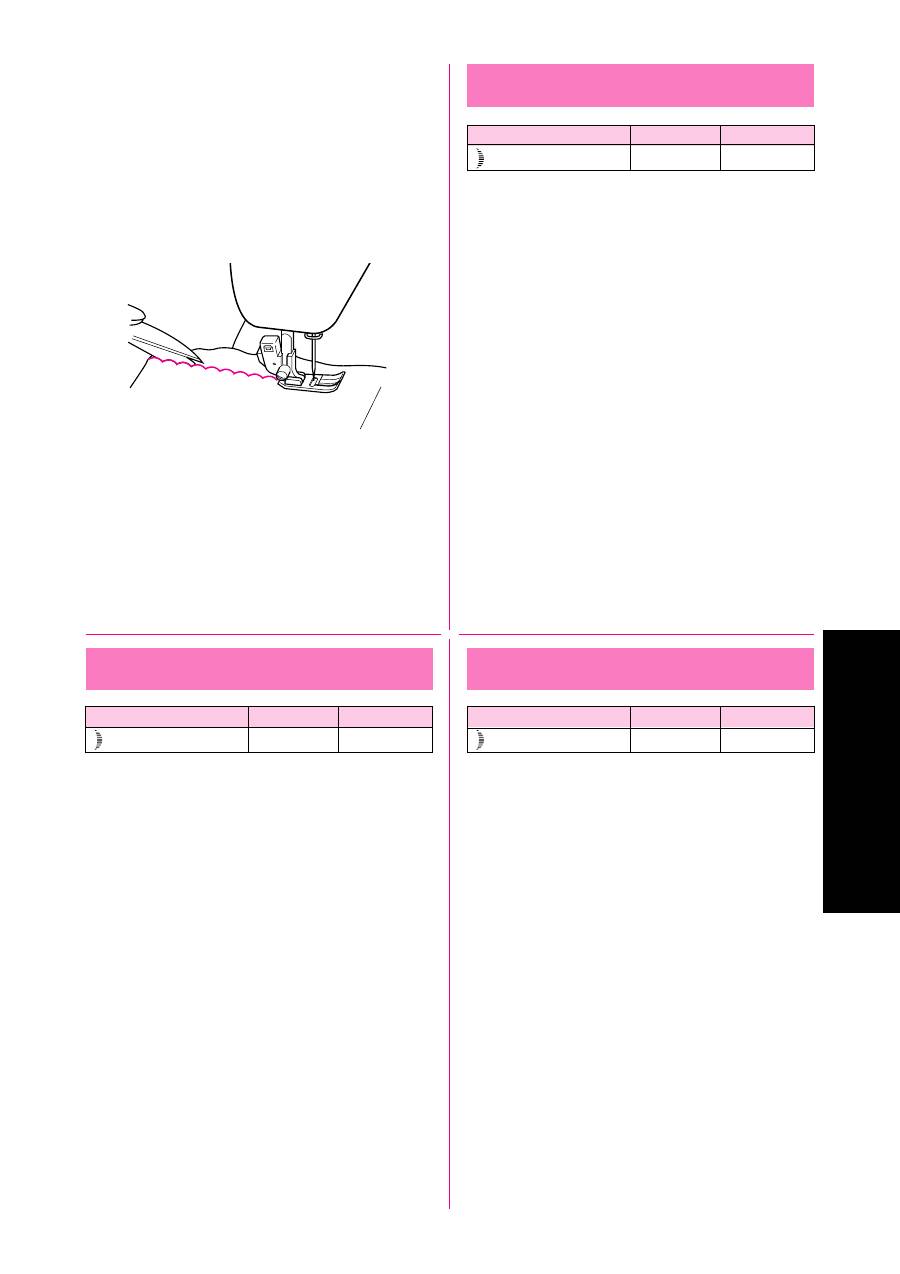
50
BUILT-IN STITCHES
VERF
Ü
GBARE STICHMUSTER
ФИГУРНЫЕ СТРОЧКИ
Scallop Stitching
Pattern
Stitch Length
Stitch Width
(Scallop Stitch)
F-1.5
Fixed 5
This machine automatically produces a Scallop Stitch which may
be used as a decorative edging.
1. Set the Pattern Selection Dial to Scallop Stitch.
2. Sew the Scallop Stitch along the edge of the material.
3. If desired, trim around the scallop with scissors to create a
scalloped edge. Be careful not to cut the thread.
Строчка-елочка
Стежок
Длина стежка
Ширина стежка
(Строчка-елочка)
F-1,5
Фиксир. 5
Данная машина выполняет строчку-елочку в автоматическом
режиме; строчка-елочка может использоваться для
декоративной обработки кромки ткани.
1. Установите ручку выбора типа стежка на строчку-елочку.
2. Произведите строчку вдоль кромки ткани.
3. При желании Вы можете ножницами обрезать ткань вдоль
контура полученного шва, следя за тем, чтобы не
перерезать при этом швейную нитку.
Bogennaht
Stichmuster
Stichlänge
Stichbreite
(Bogennaht)
F-1,5
Fixiert 5
Diese Maschine näht eine Bogennaht, die für dekorative Ränder verwen-
det werden kann.
1. Stellen Sie das Stichmuster-Einstellrad auf den Bogennaht ein.
2. Nähen Sie die Bogennaht entlang der Kante des Materials.
3. Schneiden Sie mit einer Schere entlang der Bögen, wenn Sie einen
Bogenrand wünschen. Achten Sie darauf, nicht in den Faden zu
schneiden.
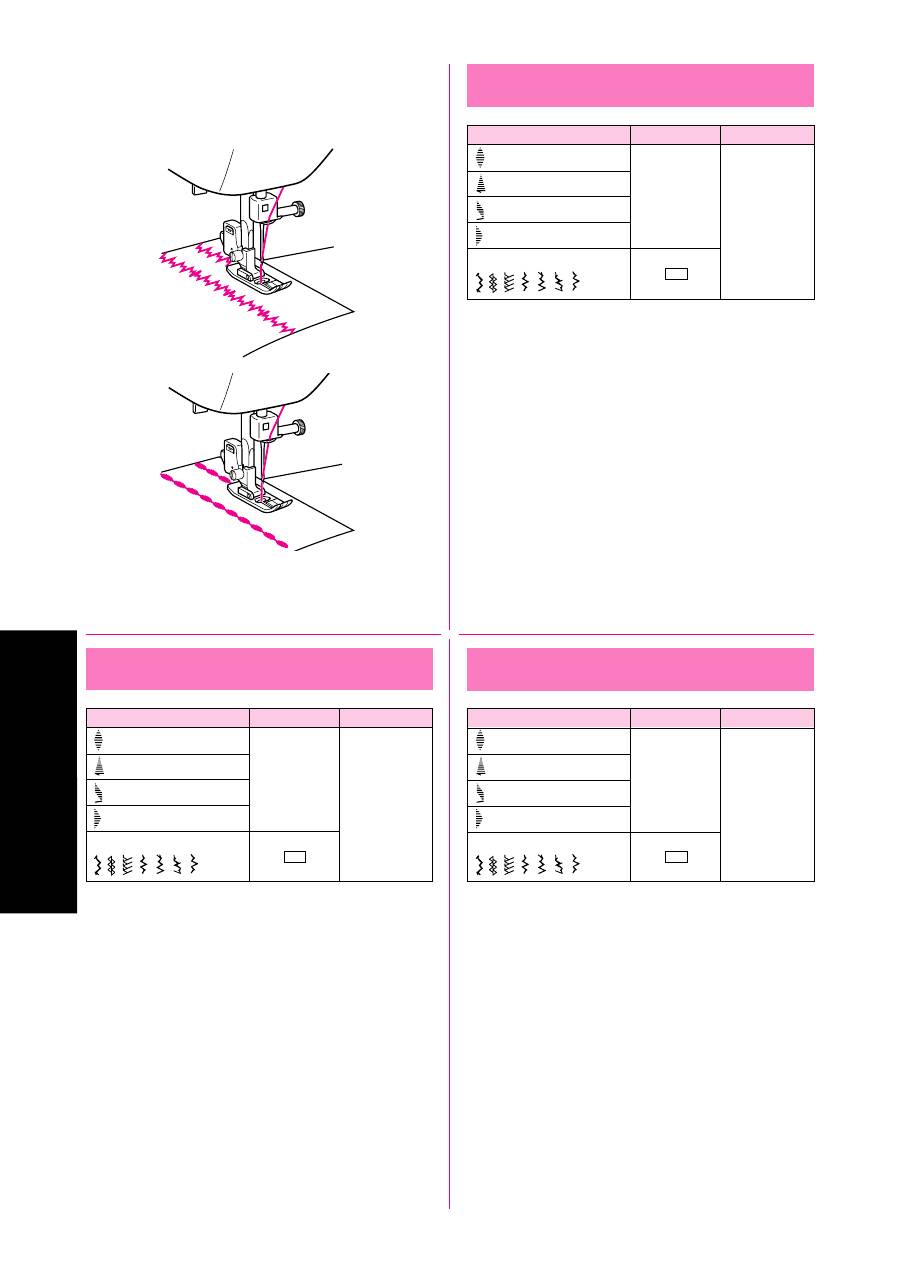
51
BUILT-IN STITCHES
VERF
Ü
GBARE STICHMUSTER
ФИГУРНЫЕ СТРОЧКИ
SS
SS
SS
Decorative Stitching
Pattern
Stitch Length
Stitch Width
(Bead Stitch)
(Arrowhead Stitch)
F-1
(Parallelogram Stitch)
Fixed 5
(Triangle Stitch)
(Decorative Stitch)
These stitches can be used for making decorative top stitching and
for smocking.
Set the Pattern Selection Dial to Triangle Stitch, Bead Stitch, etc.
Декоративный стежок
Стежок
Длина стежка
Ширина стежка
(Бисерный стежок)
(Стреловидный стежок)
(Строчка-параллелограмм)
F-1
Фиксир. 5
(Треугольный стежок)
(Декоративный стежок)
Данные строчки можно использовать для декоративной
отделки лицевой стороны ткани или для украшения изделия
сборками.
Установите ручку выбора типа стежка на треугольный стежок,
бисерный стежок и т.д.
Dekorstiche
Stichmuster
Stichlänge
Stichbreite
(Perlzierstich)
(Pfeilspitzenstich)
F-1
(Parallelogrammstich)
Fixiert 5
(Dreiecksstich)
(Dekorativer Stich)
Diese Stiche können für dekoratives Sticken und zum Smoken benutzt
werden.
Stellen Sie das Stichmuster-Einstellrad auf Dreiecks- oder Perlzierstich ein.
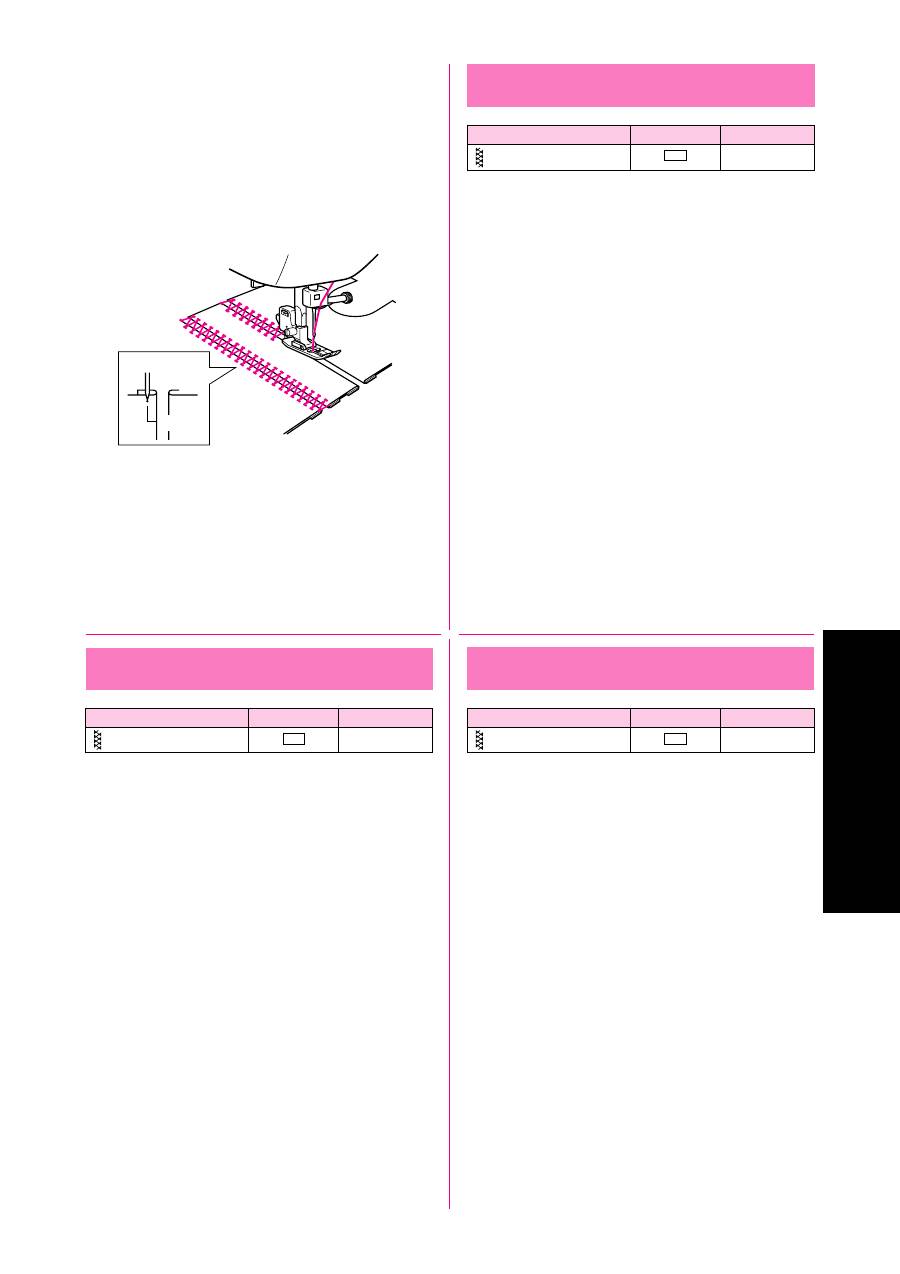
52
BUILT-IN STITCHES
VERF
Ü
GBARE STICHMUSTER
ФИГУРНЫЕ СТРОЧКИ
Patchwork
Pattern
Stitch Length
Stitch Width
(Fagoting Stitch)
SS
Fixed 5
This stitch is used to join two pieces of fabric while leaving a space
between their edges.
1. Fold over the edges of the two pieces of fabric for the hem and
baste the edges to a thin piece of paper leaving a small space
between them.
2. Set the Pattern Selection Dial to Fagoting Stitch.
3. Stitch along the edge, pulling both threads slightly when begin-
ning to sew.
•
Use thicker than normal threads for sewing.
4. After sewing, remove the basting and the paper. Finish by tying
knots on the reverse side at the beginning and the end of the
seams.
1
First needle drop
1.5 mm
1
Лоскутное шитье
Стежок
Длина стежка Ширина стежка
(Соединительный стежок)
SS
Фиксир. 5
Данный стежок предназначен для соединения двух кусков
ткани с определенным зазором между соединяемыми
кромками.
1. Подогните кромки обоих соединяемых кусков в месте
наложения шва и затем приметайте кромки к листу тонкой
бумаги, оставив между ними требуемый зазор.
2. Установите ручку выбора типа стежка на соединительный
стежок.
3. Выполните строчку вдоль кромок, слегка натягивая обе
нитки при формировании начальных стежков.
• Для выполнения данной строчки необходимо использовать
швейную нитку несколько большей толщины, чем обычно.
4. После окончания строчки удалите сметочную нить и бумагу.
В заключение свяжите концы швов обеих швейных ниток
в начале и конце шва с изнаночной стороны.
1
Позиция формирования первого стежка
Patchwork
Stichmuster
Stichlänge
Stichbreite
(Hexenstich)
SS
Fixiert 5
Dieser Stich wird benutzt, um zwei Stoffstücke flach aneinanderzunähen,
so daß zwischen ihnen eine Lücke bleibt.
1. Falten Sie die Kanten der beiden Stoffstücke für den Saum und heften
Sie beide Stücke mit einem geringen Abstand auf ein Stück dünnes
Papier.
2. Stellen Sie das Stichmuster-Einstellrad auf Hexenstich.
3. Nähen Sie entlang der Kante, während Sie beide Fäden zum Nähbeginn
leicht spannen.
•
Benutzen Sie zum Nähen dickere Fäden als gewöhnlich.
4. Entfernen Sie nach dem Nähen die Heftung und das Papier. Verriegeln
Sie die Naht durch Verknoten der Fäden auf der Unterseite am Anfang
und am Ende der Naht.
1
Erste Einstichstelle

53
BUILT-IN STITCHES
VERF
Ü
GBARE STICHMUSTER
ФИГУРНЫЕ СТРОЧКИ
A
B
C
Overedge Stitching
Pattern
Stitch Length
Stitch Width
(Elastic Shell Tuck Stitch)
F-3
Fixed 5
(Elastic Overlock Stitch)*
Fixed 3
(Elastic Overlock Stitch)
SS
Fixed 5
(Comb Stitch)
Fixed 4
(Slant Overlock Stitch)*
Fixed 3
These stitches are used to join together seams and finish them in
one operation. The Elastic Overlock Stitches are useful when
sewing stretch materials.
1. Set the Pattern Selection Dial to Comb Stitch, either Elastic
Overlock Stitch, or Elastic Shell Tuck Stitch.
2. Position the fabric under the presser foot so that the seamline (or
arrowhead point) is approximately 3 mm (1/8") to the left of the
center of the presser foot. This stitch works best with a seam
allowance of approximately 5 mm (3/16") as this allows the right
(zigzag) side of the stitch to overlock the cut edge of the fabric
as shown in
fig. A
.
3. If the seam allowance is wider than the stitch pattern, trim away
any excess fabric after stitching.
A finished Elastic Overlock Stitch is shown in
fig. B
.
*
When sewing the Elastic Overlock Stitch or Slant Overlock
Stitch, position the fabric so that its edge is on the left of the
needle. (See
fig. C
)
Обметочный стежок
Стежок
Длина стежка
Ширина стежка
(Эластичная подшивочная строчка)
F-3
Фиксир. 5
(Эластичная оверлочная строчка)*
Фиксир. 3
(Эластичная оверлочная строчка)
SS
Фиксир. 5
(Строчка «Гребешок»)
Фиксир. 4
(Наклонная оверлочная строчка)*
Фиксир. 3
Данные стежки предназначены для совмещения в одном шве
двух функций: формирования собственно шва и декоративной
отделки шва. Эластичные оверлочные строчки рекомендуется
применять для пошива эластичных тканей.
1. Установите ручку выбора типа стежка на строчку
«Гребешок», эластичную оверлочную строчку или
эластичную подшивочную строчку.
2. Расположите ткань под нажимной лапкой таким образом,
чтобы линия шва находилась на расстоянии примерно 3 мм
(1/8 дюйма) влево от центра нажимной лапки. Данные типы
строчки обеспечивают оптимальные результаты при
припуске примерно в 5 мм (3/16 дюйма), так как при этом
правая (зигзагообразная) часть шва формирует оверлок
на кромке ткани, как это видно на
рис. А
.
3. Если припуск ткани шире ширины шва, после завершения
строчки отрежьте выступающую кромку ткани.
На
рис. В
изображена эластичная оверлочная строчка.
*
При пошиве эластичной оверлочной строчкой или
наклонной оверлочной строчкой располагайте ткань таким
образом, чтобы ее кромка была слева от иглы. (См.
рис. С
)
Ketteln & Versäubern
Stichmuster
Stichlänge
Stichbreite
(Elastik-Muschelstich)
F-3
Fixiert 5
(Überwendlingnaht)*
Fixiert 3
(Überwendlingnaht)
SS
Fixiert 5
(Kammstich)
Fixiert 4
(Overlock-Schrägstich)*
Fixiert 3
Diese Stiche werden benutzt, um Säume in einem Arbeitsgang zusam-
menzunähen und zu versäubern. Die Überwendlingnaht und der offene
Overlockstich eignen sich sehr gut, um den Rand einer Decke zu vernähen,
während sich die Überwendlingnaht und der Federstich besonders für
Stretch-Materialien eignen.
1. Stellen Sie das Stichmuster-Einstellrad auf Kammstich, Überwendlingnaht
oder Elastik-Muschelstich.
2. Legen Sie den Stoff unter den Nähfuß, so daß die Spitze des Pfeils
ungefähr 3 mm links von der Mitte des Nähfußes zum liegen kommt.
Dieser Stich arbeitet am besten mit einem Überstand von 5 mm, da
hierbei die rechte (Zickzack-) Seite der Naht die Schnittkante des
Stoffes übernäht, wie in
Abb. A
gezeigt.
3. Wenn der Überstand breiter ist als das Stichmuster, schneiden Sie den
überstehenden Stoff nach dem Nähen ab.
Eine fertige Überwendlingnaht ist in
Abb. B
zu sehen.
* Beim Nähen der Überwendlingnaht oder des Overlock-Schrägstichs
den Stoff so legen, daß die Kante links ist. (Siehe
Abb. C
)
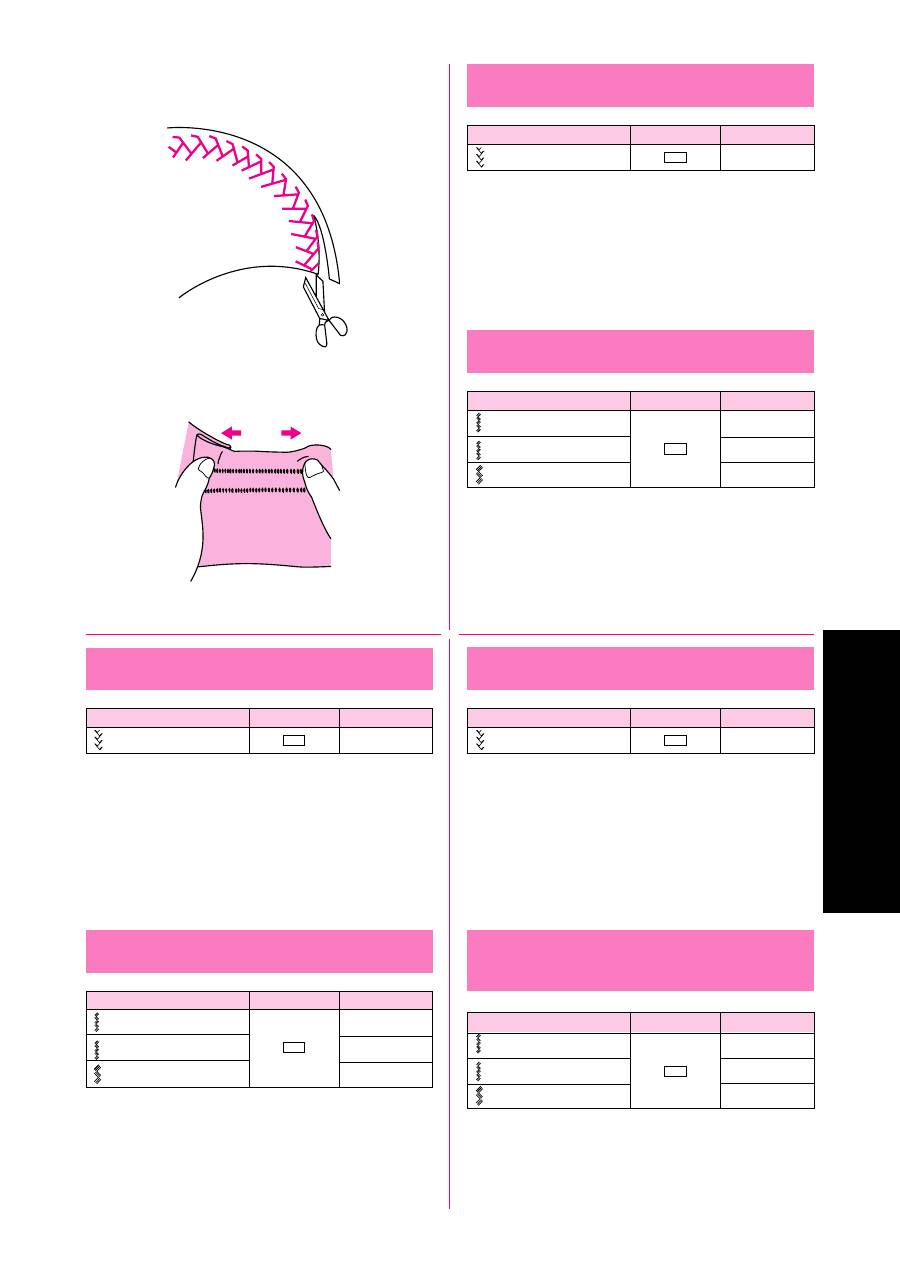
54
BUILT-IN STITCHES
VERF
Ü
GBARE STICHMUSTER
ФИГУРНЫЕ СТРОЧКИ
Feather Stitching
Pattern
Stitch Length
Stitch Width
(Feather Stitch)
SS
Fixed 5
Use the Feather Stitch as a decorative top stitch or when hemming
blankets, tablecloths or draperies or when embroidering.
1. Set the Pattern Selection Dial to Feather Stitch.
2. Place the fabric right side up and sew 1 cm (3/8") from the edge
of the fabric.
3. Trim close to the stitching.
This stitch will prevent the fabric from unravelling.
Triple Zigzag Stretch Stitching
Pattern
Stitch Length
Stitch Width
(Triple Zigzag Stretch Stitch)
Fixed 1.5
(Triple Zigzag Stretch Stitch)
SS
Fixed 3.5
(Triple Zigzag Stretch Stitch)
Fixed 5
This stitch can be used to sew heavyweight stretch fabrics wher-
ever a Zigzag Stitch could be used. The Triple Zigzag Stretch Stitch
can also be used as a decorative top stitch.
Set the Pattern Selection Dial to Triple Zigzag Stretch Stitch.
Grätenstich
Stichmuster
Stichlänge
Stichbreite
(Grätenstich)
SS
Fixiert 5
Benutzen Sie den Grätenstich als dekorativen Stich beim Sticken, oder
beim Säumen von Tüchern, Tischdecken oder Vorhängen.
1. Stellen Sie das Stichmuster-Einstellrad auf den Grätenstich ein.
2. Legen Sie den Stoff auf rechts und nähen in 1 cm Abstand von der
Stoffkante.
3. Schneiden Sie dicht an der Naht.
Dieser Stich verhindert das Aufreppeln des Stoffes.
Dreifach-Zickzackstich
Stichmuster
Stichlänge
Stichbreite
(Dreifach-Zickzackstich)
Fixiert 1,5
(Dreifach-Zickzackstich)
SS
Fixiert 3,5
(Dreifach-Zickzackstich)
Fixiert 5
Dieser Stich kann benutzt werden, um schwere Stretch-Stoffe zusammen-
zunähen, wann immer der Zickzackstich geeignet ist. Der Dreifach-
Zickzackstich kann auch als dekorativer Applikationsstich eingesetzt
werden.
Stellen Sie das Stichmuster-Einstellrad auf den Dreifach-Zickzack-stich ein.
Перистый стежок
Стежок
Длина стежка
Ширина стежка
(Перистый стежок)
SS
Фиксир. 5
Перистый стежок используется для декоративной отделки
лицевой стороны ткани или для подрубки одеял, скатертей
или драпировочных тканей, а также для вышивки.
1. Установите ручку выбора типа стежка на перистый стежок.
2. Поместите ткань в зону иглы лицевой стороной вверх и
произведите строчку на расстоянии примерно 1 см (3/8
дюйма) от края.
3. Обрежьте выступающую кромку ткани вдоль полученного шва.
Сформированные на кромке стежки предохранят ткань от коробления.
Тройная трикотажная строчка
«зигзаг»
Стежок
Длина стежка
Ширина стежка
(Тройная трикотажная строчка «зигзаг»)
Фиксир. 1,5
(Тройная трикотажная строчка «зигзаг»)
SS
Фиксир. 3,5
(Тройная трикотажная строчка «зигзаг»)
Фиксир. 5
Данная строчка может использоваться для обработки тяжелых
эластичных тканей, для которых применим обычный зигзагообразный
шов. Тройная трикотажная строчка «зигзаг» может быть также
использована для декоративной отделки лицевой стороны ткани.
Установите ручку выбора типа стежка на тройную трикотажную строчку «зигзаг».
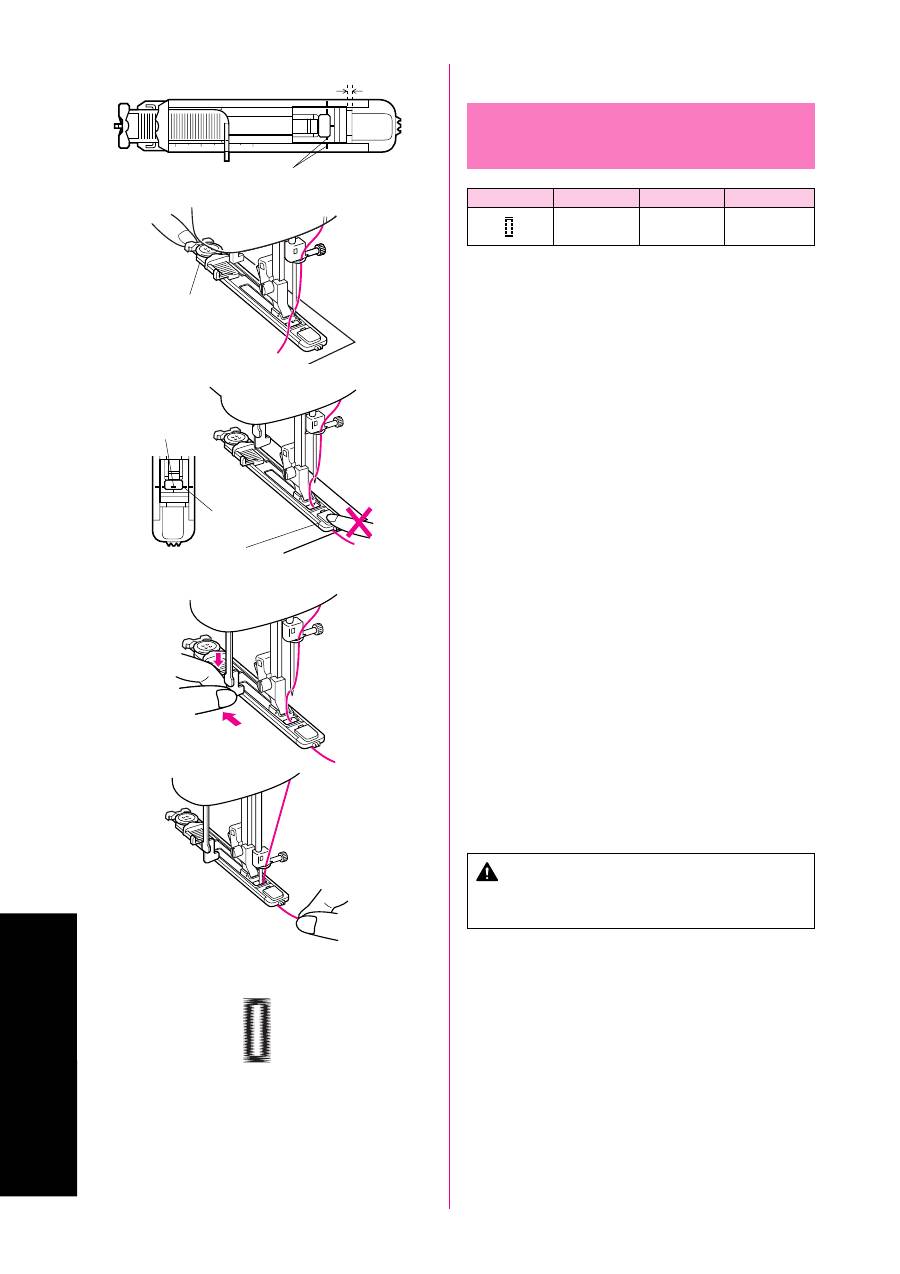
55
BUTTONHOLE AND BUTTON SEWING
KNOPFLÖCHER UND KNÖPFE NÄHEN
ОБМЕТЫВАНИЕ ПЕТЕЛЬ И ПРИШИВАНИЕ ПУГОВИЦ
(Model XL-6060, XL-6061, XL-6062, XL-6063, XL-6050, XL-
6051, XL-6052, XL-6053)
Making a Buttonhole
(For 1-step BH Type)
Pattern
Stitch Length
Stitch Width
Foot
F-1.5
Fixed 5
Buttonhole Foot
NOTE:
1. It is recommended to practice making a buttonhole on a scrap
piece of fabric before attempting it on the actual garment.
2. When making buttonholes on soft fabrics, place a stabilizer
material on the underside of the fabric.
One-step buttonhole-making is a simple process that provides
reliable results.
MAKING A BUTTONHOLE
1. Using tailor’s chalk, mark the position of the buttonhole on the
fabric.
2. Set the Pattern Selection Dial to Buttonhole.
3. Attach the buttonhole foot, pull open the button holder and insert
a button. (See
fig. B
)
*
The size of the buttonhole is determined by the button inserted
into the button holder.
4. Align the red line on the presser foot with the mark on the fabric,
then lower the Presser Foot Lever. Be sure to pass the thread
under the presser foot and pull it toward you. (See
fig. C
)
NOTE:
Do not lower the Presser Foot Lever while pushing in the area of the
presser foot marked
a
in
fig. C
. Otherwise the buttonhole will not be
sewn with the correct size.
1
Do not close this gap.(
Fig. A
)
2
Align the lines on the presser foot.
5. Pull down the buttonhole lever to its lowest position, then lightly
push it toward the back of the machine. (See
fig. D
)
3
Button holder
4
Mark on fabric
5
Line on presser foot
6. Hold the upper thread and step down on the foot controller to
begin sewing.
CAUTION
Pulling the thread too strongly may bend or break the
needle, and lead to injury.
7. Stitches
1
,
2
,
3
and
4
are sewn, then stop the machine.
A
D
5
4
a
B
3
1
A
2
3
2
4
1
C
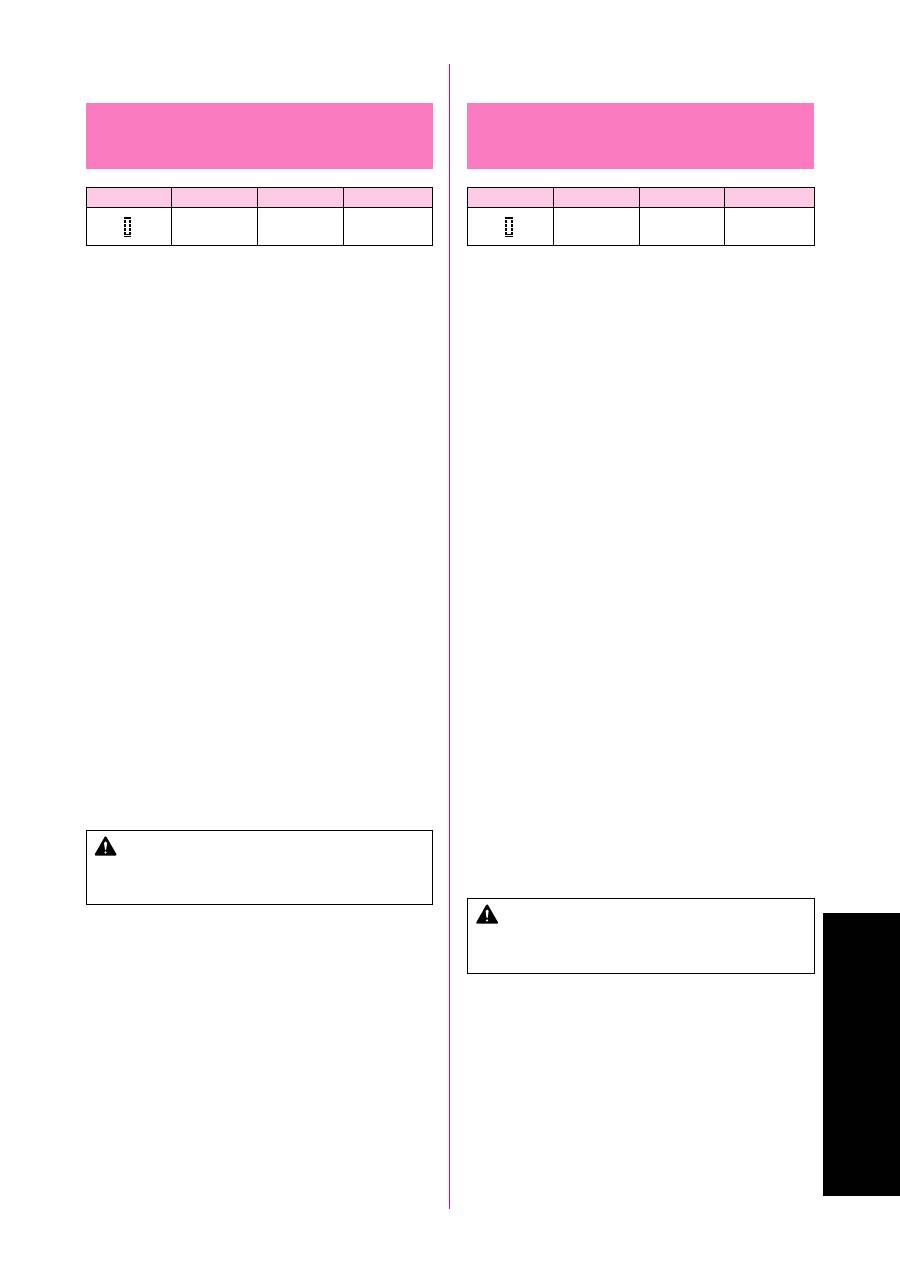
56
BUTTONHOLE AND BUTTON SEWING
KNOPFL
Ö
CHER UND KN
Ö
PFE N
Ä
HEN
ОБМЕТЫВАНИЕ ПЕТЕЛЬ И ПРИШИВАНИЕ ПУГОВИЦ
(Модели XL-6060, XL-6061, XL-6062, XL-6063, XL-6050, XL-
6051, XL-6052, XL-6053)
Обметывание петель
(Для 1-ступенчатого обметывания петли)
Стежок
Длина стежка Ши ина стежка
Лапка
F-1,5
Фикси . 5
Лапка для
обметывания петель
ПРИМЕЧАНИЕ:
1. Пе ед обметыванием петель на деталях одежды екомендуется
выполнить несколько п обных обметываний на лоскутках ткани.
2. П и об аботке петель на тонких тканях под ткань следует
подкладывать стабилизи ующий мате иал.
Одноступенчатое обметывание петли - п остая опе ация,
обеспечивающая надежные езультаты.
ОБРАБОТКА ПЕТЛИ
1. С помощью мелка пометьте на ткани положение будущей
петли.
2. Установите учку выбо а типа стежка на обметывание
петель.
3. П ик епите лапку для обметывания петель, отк ойте
пуговичный зажим и вставьте в него пуговицу. (См.
Рис. B
)
*
Разме петли оп еделяется азме ом пуговицы, установленной
в пуговичный зажим.
4. Совместите к асную линию на нажимной лапке с отметкой
на ткани и затем опустите ычаг нажимной лапки.
Обязательно вытяните нитку, п опущенную под нажимную
лапку, к себе. (См.
ис. C
)
ПРИМЕЧАНИЕ:
Не опускайте ычаг нажимной лапки в момент нажатия на
область нажимной лапки, обозначенную символом
a
на
ис.
С
. В п отивном случае петля получится неп авильного
азме а.
1
Не зак ывайте этот зазо . (
Рис.A
)
2
Совместите с линиями на нажимной лапке.
5. Опустите ычаг лапки для обметывания петель в к айнее
нижнее положение и затем слегка надавите на него в
напавлении от себя. (См.
ис. D
)
3
Пуговичный зажим
4
Метка на ткани
5
Линия на нажимной лапке
6. П иде живая ве хнюю нитку, нажмите на педаль ножного
конт олле а, чтобы начать ст очку.
ПРЕДОСТЕРЕЖЕНИЕ
Не тяните сильно за нитку - игла может погнуться или
сломаться и Вы можете получить т авму.
7. После выполнения ст очек,
1
,
2
,
3
и
4
, остановите машину.
(Modell XL-6060, XL-6061, XL-6062, XL-6063, XL-6050, XL-6051,
XL-6052, XL-6053)
Knopfloch nähen
(Für 1-Stufen-Knopfloch BH-Typ)
Stichmuster
Stichlänge
Stichbreite
Fuß
F-1,5
Fixiert 5
Knopflochfuß
NOTIZEN:
1. Es wird empfohlen, das Nähen eines Knopfloches auf einem Stoffrest auszu-
probieren, bevor Sie es auf dem zu nähenden Kleidungsstück anwenden.
2. Wenn Sie Knopflöcher auf weichen Stoffen anbringen möchten, legen
Sie Verstärkungsmaterial auf die Stoffunterseite.
Das Nähen von Knopflöchern in einem Durchgang ist ein einfacher
Vorgang mit zuverlässigen Ergebnissen.
KNOPFLOCH NÄHEN
1. Markieren Sie die Position des Knopfloches mit Schneiderkreide auf
dem Stoff.
2. Stellen Sie das Stichmuster-Einstellrad auf Knopfloch.
3. Bringen Sie den Knopflochnähfuß an, ziehen Sie den Knopfhalter auf
und legen Sie einen Knopf ein (siehe
Abb. B
).
* Die Größe des Knopfloches richtet sich nach dem eingelegten Knopf.
4. Richten Sie die rote Linie am Nähfuß auf die Marke auf dem Stoff aus
und senken Sie den Nähfußhebel. Achten Sie darauf, den Faden unter
dem Nähfuß nach vorne herauszuziehen (siehe
Abb. C
).
NOTIZEN:
Senken Sie den Nähfußhebel nicht, während Sie auf den mit
a
markierten
Bereich in
Abb. C
drücken. Es kann sonst passieren, daß das Knopfloch
nicht in der richtigen Größe genäht wird.
1
Schließen Sie diesen Spalt nicht. (
Abb. A
)
2
Richten Sie die Linien am Nähfuß aus.
5. Bringen Sie den Nähfußhebel auf die untere Position, und drücken Sie
ihn dann leicht nach hinten (siehe
Abb. D
).
3
Knopfhalter
4
Markierung auf dem Stoff
5
Linie auf dem Nähfuß
6. Halten Sie den Oberfaden und drücken Sie den Fußanlasser zum
Beginn des Nähens.
VORSICHT
Wenn Sie den Faden zu stramm ziehen, kann dies zum Abbrechen
der Nadel und zu Verletzungen führen.
7. Die Nähte
1
,
2
,
3
und
4
werden genäht, wonach die Maschine stoppt.
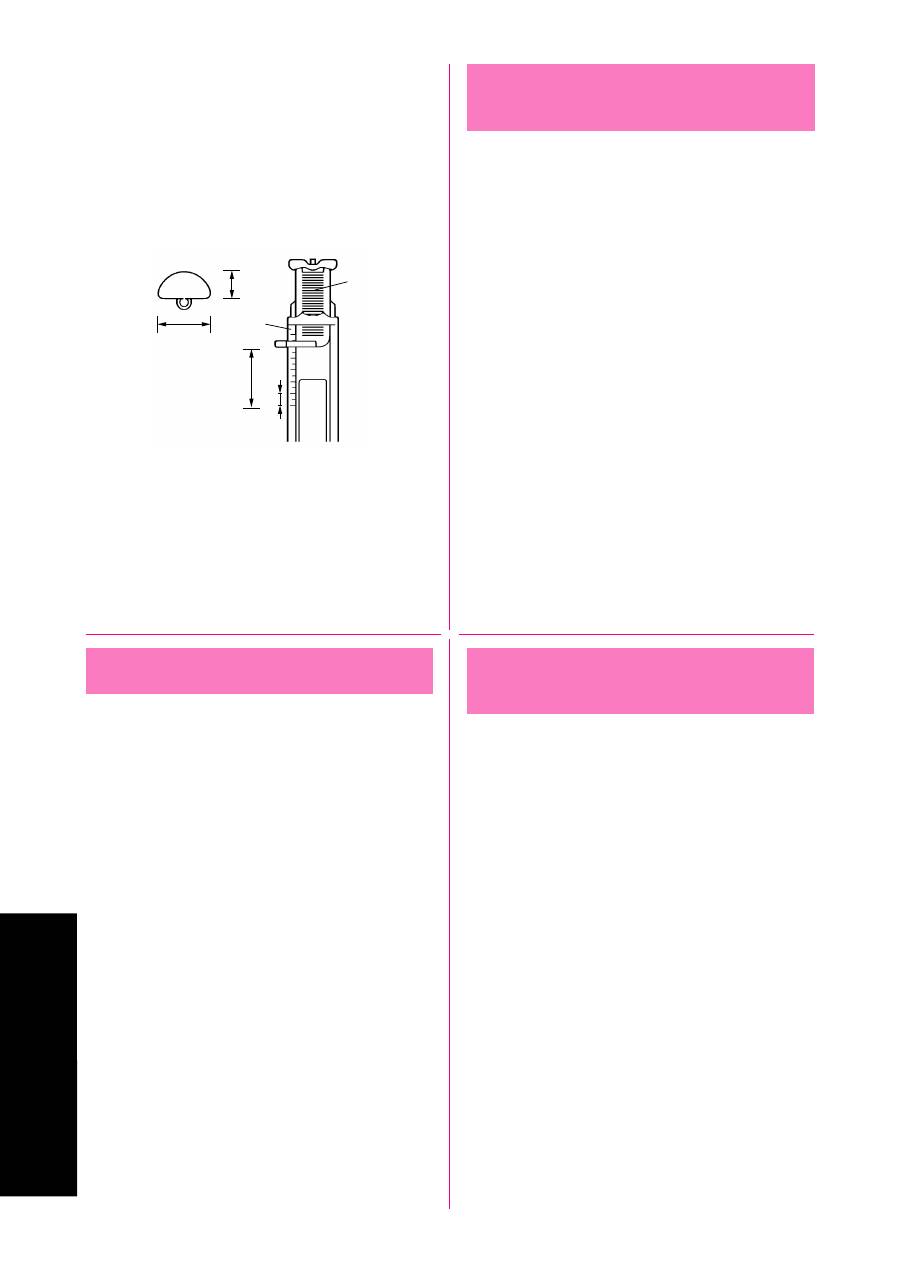
57
BUTTONHOLE AND BUTTON SEWING
KNOPFL
Ö
CHER UND KN
Ö
PFE N
Ä
HEN
ОБМЕТЫВАНИЕ ПЕТЕЛЬ И ПРИШИВАНИЕ ПУГОВИЦ
Knöpfe die nicht in den Halter passen
Addieren Sie die Höhe des Knopfes und den Durchmesser des Knopfes,
und stellen Sie den so erhaltenen Wert auf der Skala des Knopflochfußes
ein. Der Abstand zwischen zwei Linien auf der Skala beträgt 0,5 cm.
Beispiel:
Bei einem Knopf mit dem Durchmesser 1,5 cm und einer Höhe von 1 cm
sollte die Skala auf 2,5 cm eingestellt werden.
1
Höhe [1 cm]
2
Durchmesser [1,5 cm]
3
Knopfhalterplatte
4
Skala
5
Durchmesser + Höhe [2,5 cm]
6
0,5 cm
2
1
5
6
4
3
Odd-shaped buttons that do not
fit into the button holder plate
Add the button diameter to its thickness, then set the buttonhole
presser foot scale to this measurement. The distance in the scale
between two lines of the same length is 0.5 cm (3/16").
Example:
For a button with a diameter of 1.5 cm (9/16") and a thickness of
1 cm (3/8"), the scale should be set at 2.5 cm (1").
1
Thickness [1 cm (3/8")]
2
Diameter [1.5 cm (9/16")]
3
Button holder plate
4
Scale
5
Diameter + thickness [2.5 cm (1")]
6
0.5 cm (3/16")
Пуговицы нестанда тной фо мы,
не входящие в пуговичный зажим
П ибавьте значение диамет а пуговицы к значению толщины
пуговицы, и затем установите пуговичный зажим на отметку
шкалы, соответствующую значению полученной суммы.
Расстояние между двумя линиями одинаковой длины на шкале
пуговичного зажима авно 0,5 см (3/16 дюйма).
Нап име :
Для пуговицы диамет ом 1,5 см (9/16 дюйма) и толщиной 1 см
(3/8 дюйма) пуговичный зажим следует установить на отметку
шкалы 2,5 см (1 дюйм).
1
Толщина пуговицы [1 cм (3/8 дюйма)]
2
Диамет пуговицы [1,5 cм (9/16 дюйма)]
3
Пуговичный зажим
4
Шкала
5
Диамет + толщина [2,5 cм (1 дюйм)]
6
0,5 cм (3/16 дюйма)
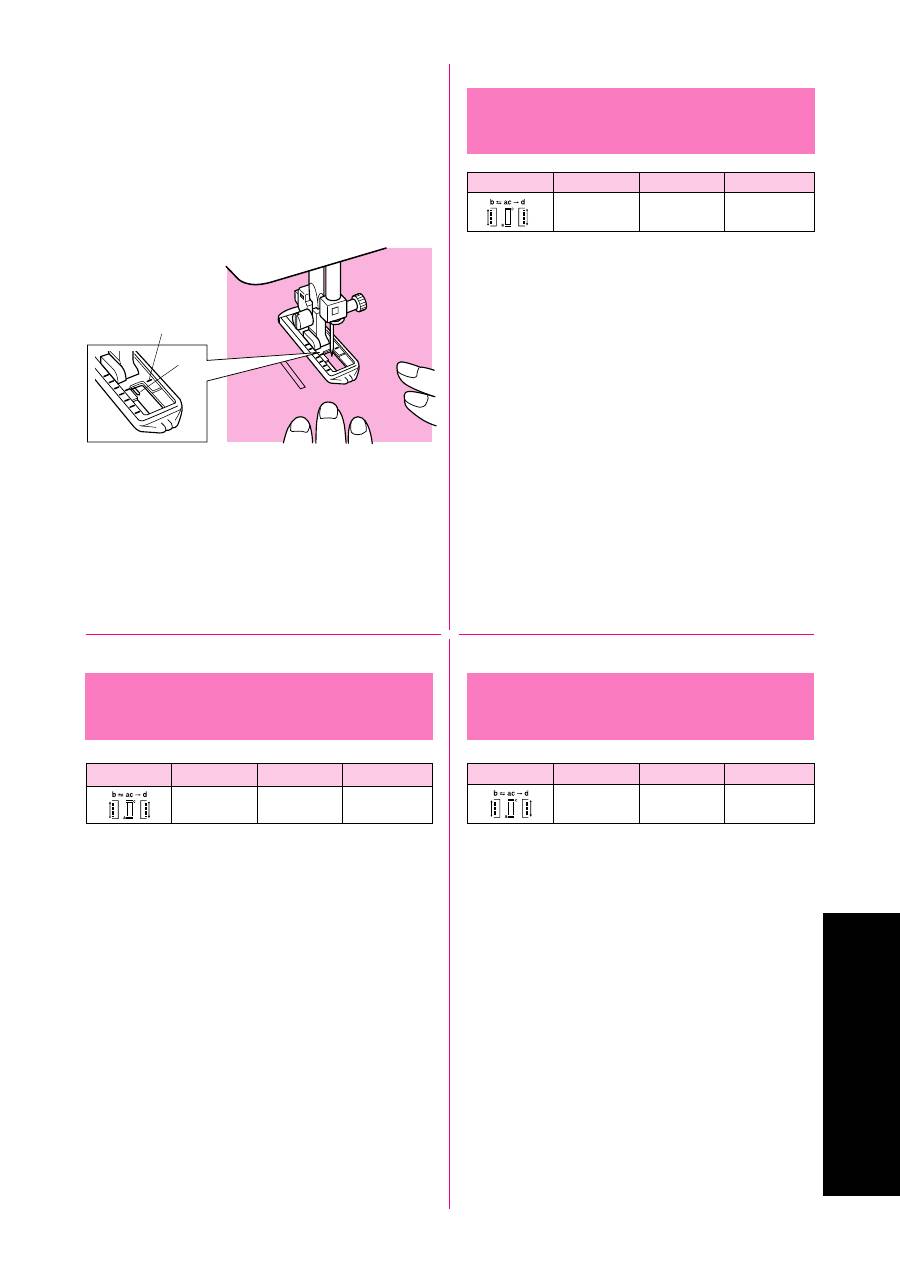
58
BUTTONHOLE AND BUTTON SEWING
KNOPFL
Ö
CHER UND KN
Ö
PFE N
Ä
HEN
ОБМЕТЫВАНИЕ ПЕТЕЛЬ И ПРИШИВАНИЕ ПУГОВИЦ
1
2
A
Лапка для
обметывания петель
(Model XL-6040, XL-6041, XL-6042, XL-6043)
Making a Buttonhole
(For 4-step BH Type )
Pattern
Stitch Length
Stitch Width
Foot
F-1.5
Fixed 5
Buttonhole Foot
NOTE:
1. It is recommended to practice making a buttonhole on a scrap
piece of fabric before attempting it on the actual garment.
2. When making buttonholes on soft fabrics, place a stabilizer
material on the underside of the fabric.
Buttonhole-making is a simple process that provides reliable
results.
MAKING A BUTTONHOLE
1. Using tailor’s chalk, mark the position and length of the button-
hole on the fabric.
2. Attach the buttonhole foot and push the frame back until it stops
with the plastic insert in the front of the frame.
3. The front bar tack will be sewn first. Place the fabric under the
presser foot so that the center of the front bar tack mark is
directly under the center of the presser foot and aligned with the
two red lines as shown in
fig. A
.
1
Front of chalk mark
2
Red lines
(Modell XL-6040, XL-6041, XL-6042, XL-6043)
Knopfloch nähen
(Für 4-Stufen-Knopfloch BH-Typ)
Stichmuster
Stichlänge
Stichbreite
Fuß
F-1,5
Fixiert 5
Knopflochfuß
NOTIZEN:
1. Es wird empfohlen, das Nähen eines Knopfloches auf einem Stoffrest
auszuprobieren, bevor Sie es auf dem zu nähenden Kleidungsstück
anwenden.
2. Wenn Sie Knopflöcher auf weichen Stoffen anbringen möchten, legen
Sie Verstärkungsmaterial auf die Stoffunterseite.
Das Nähen von Knopflöchern in einem Durchgang ist ein einfacher
Vorgang mit zuverlässigen Ergebnissen.
KNOPFLOCH NÄHEN
1. Markieren Sie die Position und Länge des Knopfloches mit Schneider-
kreide auf dem Stoff.
2. Montieren Sie den Knopflochfuß, und schieben Sie den äußeren
Rahmen nach hinten, bis der Einsatz vorne eingeführt ist.
3. Die vordere Raupe wird zuerst genäht. Legen Sie den Stoff unter den
Nähfuß, so daß die Mitte der Frontriegelmarkierung direkt unter der
Mitte des Nähfußes ist und mit den beiden roten Linien ausgerichtet ist,
wie in der
Abb. A
gezeigt.
1
Vordere Kreidemarkierung
2
Rote Linien
(Модели XL-6040, XL-6041, XL-6042, XL-6043)
Обметывание петель
(Для 4-ступенчатого обметывания петли)
Стежок
Длина стежка Ши ина стежка
Лапка
F-1,5
Фикси . 5
ПРИМЕЧАНИЕ:
1. Пе ед обметыванием петель на деталях одежды
екомендуется выполнить несколько п обных
обметываний на лоскутках ткани.
2. П и об аботке петель на тонких тканях под ткань следует
подкладывать стабилизи ующий мате иал.
Обметывание петли - п остая опе ация, обеспечивающая
надежные езультаты.
Обметывание петель
1. С помощью мелка пометьте на ткани положение и длину
будущей петли.
2. П ик епите лапку для обметывания петель и отодвиньте
амку назад, пока она не уп ется в пластмассовую вставку
в пе едней части амки.
3. Об аботка начнется с пе едней попе ечной планки петли.
Разместите ткань под нажимной лапкой таким об азом,
чтобы метка пе едней попе ечной планки петли
асполагалась непос едственно под цент ом нажимной
лапки и на одной линии с двумя к асными метками, как это
показано на
ис. A
.
1
Пе едняя часть меловой отметки
2
К асные линии
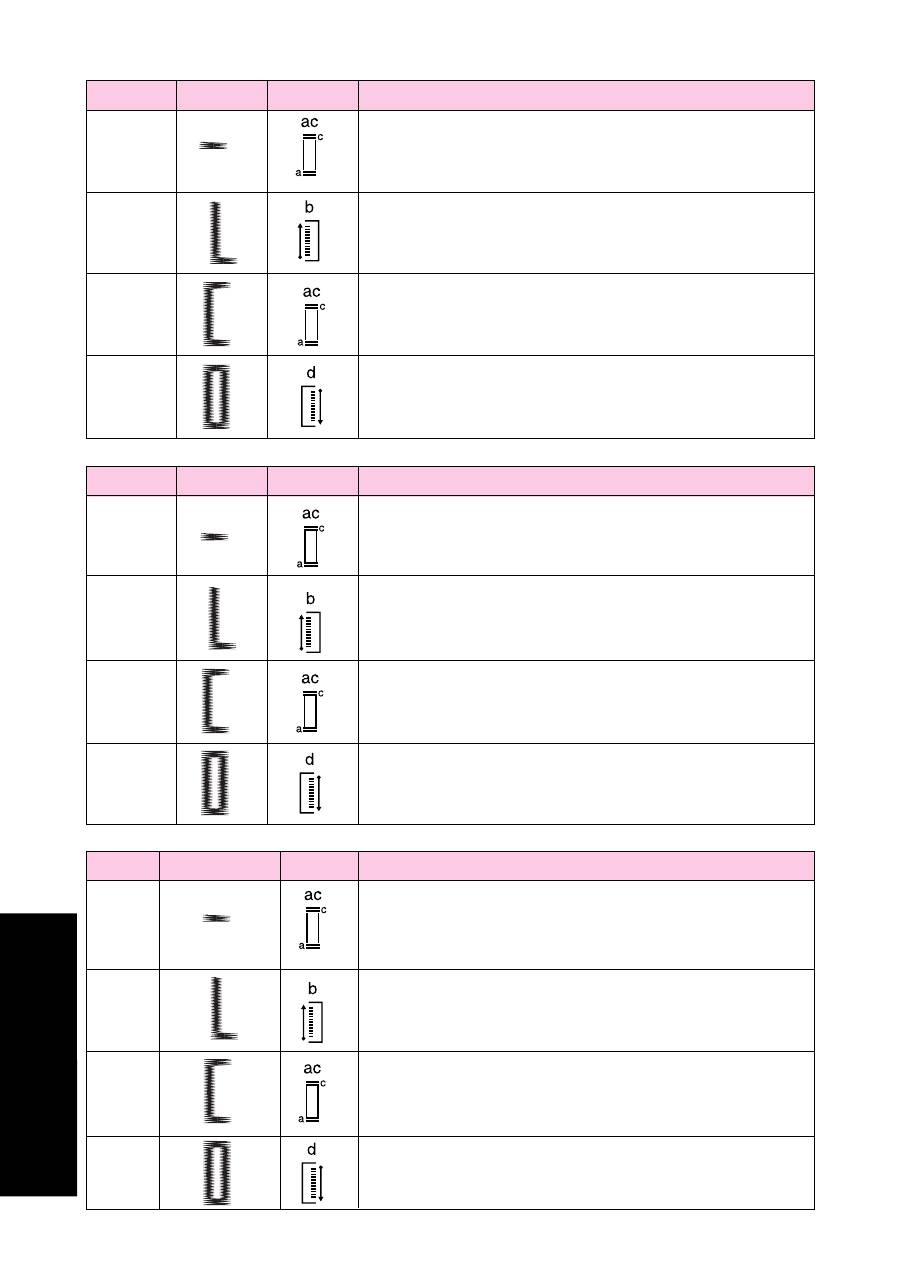
59
BUTTONHOLE AND BUTTON SEWING
KNOPFL
Ö
CHER UND KN
Ö
PFE N
Ä
HEN
ОБМЕТЫВАНИЕ ПЕТЕЛЬ И ПРИШИВАНИЕ ПУГОВИЦ
Step 2
(Left side)
Step 4
(Right side)
MAKING A BUTTONHOLE
Step
Sewn Portion
Pattern
How to Sew
1. Set the pattern selection dial to “a”.
2. Lower the presser foot and sew 5 to 6 stitches.
3. Stop the machine when the needle is at the left side of the stitches, then raise
the needle from the material.
1. Turn the pattern selection dial to “b”.
2. Sew the predetermined length of the tailor’s chalk line.
3. Stop the machine when the needle is at the left side of the stitch, then raise the
needle.
1. Turn the pattern selection dial to “c” (same position as in step 1).
2. Sew 5 to 6 stitches.
3. Stop the machine when the needle is at the right side of the stitch, then raise the
needle from the material.
1. Set the pattern selection dial to “d”.
2. Sew the right side until the needle reaches the stitches sewn in step 1.
Step 1
(Front bar
tack)
Step 3
(Back bar
tack)
b
c
d
txt_F
a
b
c
d
Шаг
1
(Пе едняя
планка
петли)
Шаг
2
(Левая
планка
петли)
Шаг
3
(Задняя
планка
петли)
Шаг
4
(П авая
планка
петли)
a
b
c
d
Schritt 2
(Linke Raupe)
Schritt 4
(Rechte
Raupe)
KNOPFLOCH NÄHEN
Schritt
Genähter Teil
Stichart
Nähablauf
Schritt 1
(Vorderer
Riegel)
Schritt 3
(Hinterer
Riegel)
1. Stellen Sie den Musterwähler auf “a”.
2. Senken Sie den Nähfuß und nähen Sie einige Stiche.
3. Stoppen Sie die Maschine, wenn die Nadel auf der linken Stichseite ist und drehen Sie die
Nadel aus dem Material.
1. Drehen Sie den Musterwähler auf “b”.
2. Nähen Sie die Raupe entlang der vorgezeichneten Kreidelinie.
3. Stoppen Sie die Maschine, wenn die Nadel auf der linken Stichseite ist und drehen Sie die
Nadel aus dem Material.
1. Drehen Sie den Musterwähler auf “c” (gleiche Position wie 1).
2. Senken Sie den Nähfuß und nähen Sie einige Stiche.
3. Stoppen Sie die Maschine, wenn die Nadel auf der rechten Stichseite ist und drehen Sie
die Nadel aus dem Material.
1. Stellen Sie den Musterwähler auf “d”.
2. Nähen Sie die rechte Raupe, bis die Nadel die in Schritt 1 erzeugten Stiche erreicht.
a
Обметывание петель
Обшиваемый элемент петли Тип стежка
Последовательность опе аций
1. Установите учку выбо а типа стежка в положение “a”.
2. Опустите нажимную лапку и сделайте 5-6 стежков.
3. Остановите машину, когда игла находится с левой сто оны стежка, после
чего поднимите ее над тканью.
1. Пове ните учку выбо а типа стежка в положение “b”.
2. Об аботайте участок по длине, помеченной мелом.
3. Остановите машину, когда игла находится с левой сто оны стежка, после
чего поднимите ее над тканью.
1. Пове ните учку выбо а типа стежка в положение “c”(та же позиция, что и в шаге1).
2. Сделайте 5-6 стежков.
3. Остановите машину, когда игла находится с павой сто оны стежка, п
осле
чего поднимите ее над тканью.
1. Установите учку выбо а типа стежка в положение “d”.
2. П оизводите обметывание до тех по , пока игла не достигнет стежков,
выполненных в шаге 1.
Шаг

60
BUTTONHOLE AND BUTTON SEWING
KNOPFL
Ö
CHER UND KN
Ö
PFE N
Ä
HEN
ОБМЕТЫВАНИЕ ПЕТЕЛЬ И ПРИШИВАНИЕ ПУГОВИЦ
(Model XL-6060, XL-6061, XL-6062, XL-6063, XL-6050, XL-
6051, XL-6052, XL-6053, XL-6040, XL-6041, XL-6042, XL-6043)
SECURING THE STITCHING AND CUTTING THE BUTTON-
HOLE
1. To secure the stitching, turn the material 90 degrees
counterclockwise and sew Straight Stitches to the end of the
front bar tack of the buttonhole.
2. Remove the material from the machine. It is recommended that
pins be placed across both ends of the buttonhole as protection
against cutting the stitches.
3. Cut an opening in the middle of the buttonhole with a seam ripper
tool. Be careful not to cut through any stitches.
CAUTION
When using the seam ripper to open the buttonhole, do not
put your hand or finger in the path of the ripper. The ripper
may slip and cause injury.
(Модели XL-6060, XL-6061, XL-6062, XL-6063, XL-6050, XL-
6051, XL-6052, XL-6053, XL-6040, XL-6041, XL-6042, XL-6043)
ЗАКРЕПЛЕНИЕ ШВА И ПРОРЕЗКА ПЕТЛИ
1. Для зак епления шва пове ните ткань на 90
π
потив
часовой ст елки и пошейте несколько пямых стежков
до конца пе едней планки петли.
2. Снимите об аботанную ткань с машины. После этого
екомендуется на обоих концах петли зафикси овать
булавки, чтобы не пов едить стежки п и п о езке.
3. П о ежьте ткань в се едине об аботанной петли с
помощью ножа для аспа ывания швов. Внимательно
следите за тем, чтобы не по езать стежки.
ПРЕДОСТЕРЕЖЕНИЕ
Используя нож для аспа ывания швов с целью
п о езания петли, бе егите уки и пальцы от попадания
под т аекто ию движения ножа. Нож может
соскользнуть с ткани и нанести т авму.
(Modell XL-6060, XL-6061, XL-6062, XL-6063, XL-6050, XL-6051,
XL-6052, XL-6053, XL-6040, XL-6041, XL6042, XL-6043)
STICHE SICHERN UND KNOPFLOCH AUFSCHNEIDEN
1. Zum Sichern der Naht drehen Sie das Material um 90 Grad nach links
und nähen Sie mit dem Geradstich bis zum Ende des vorderen
Knopflochriegels.
2. Nehmen Sie das Material aus der Maschine. Es wird empfohlen,
jeweils eine Nadel in den oberen und unteren Riegel zu stecken, damit
Sie nicht zu weit einschneiden.
3. Schneiden Sie mit einem Knopflochschneider eine Öffnung in die
Mitte des Knopfloches. Beschädigen Sie nicht den Faden.
VORSICHT
Achten Sie bei der Benutzung des Trennmessers darauf, dass Ihre
Hand oder Ihre Finger sich nicht in dessen Weg befinden. Das
Trennmesser könnte ausrutschen und Sie könnten sich dadurch
verletzen.
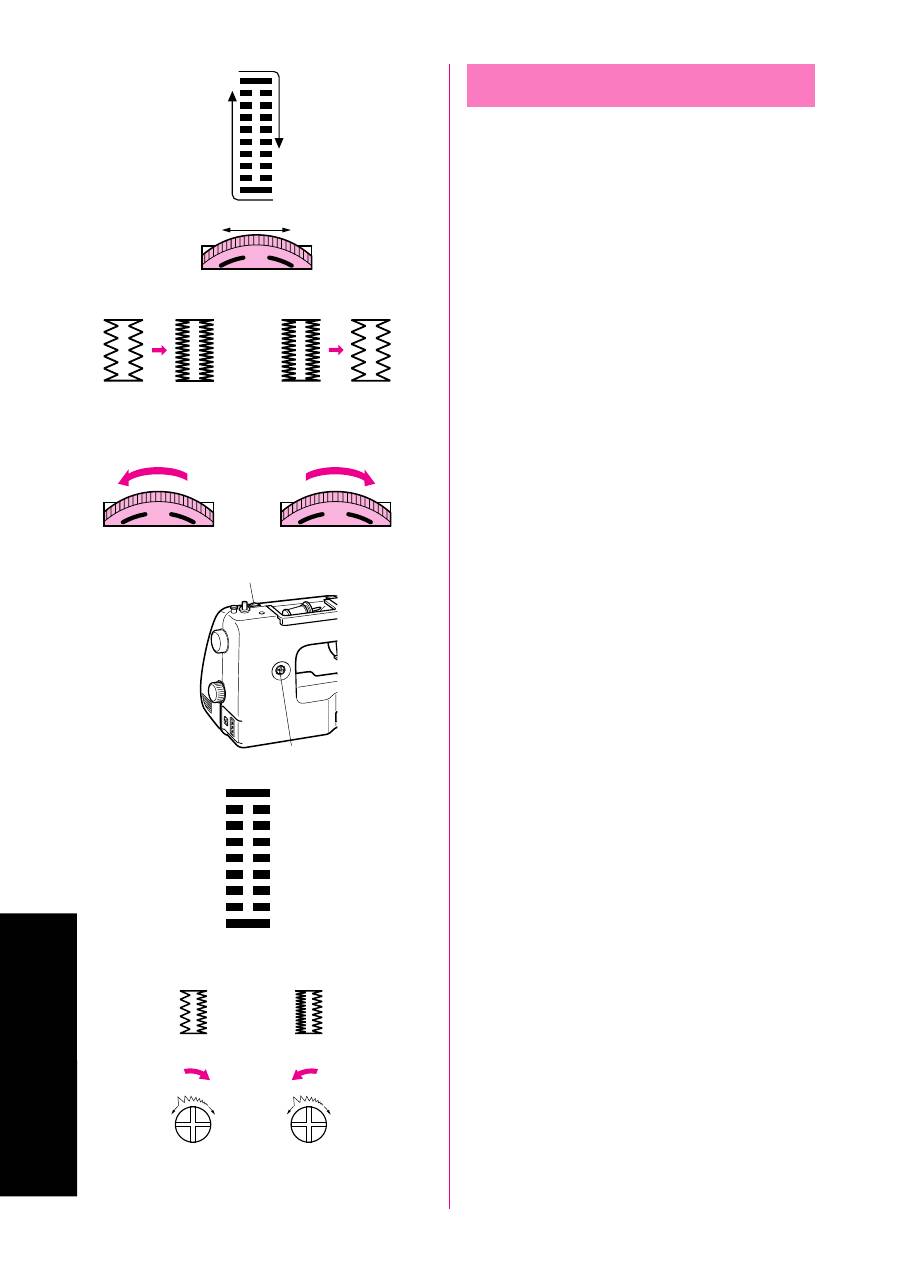
61
BUTTONHOLE AND BUTTON SEWING
KNOPFL
Ö
CHER UND KN
Ö
PFE N
Ä
HEN
ОБМЕТЫВАНИЕ ПЕТЕЛЬ И ПРИШИВАНИЕ ПУГОВИЦ
Buttonhole Fine Adjustment
If the stitching on the two sides of the buttonhole do not appear
uniform, the following adjustments can be made.
1. Set the Stitch Length Dial at “F-1.5” and stitch the right side of
the buttonhole on a scrap of fabric while observing how the
material is fed.
2. If the right side of the buttonhole is too coarse or fine, adjust the
feeding of the material with the Stitch Length Dial.
1
Right row
2
Stitch length
3
Shorter
4
Longer
5
Adjusted stitch
3. After obtaining a satisfactory feeding on the right side, stitch the
left side of the buttonhole and observe the feeding.
4. If the left side is too coarse or fine compared to the right side,
adjust the buttonhole fine adjustment screw as described below.
If the left side is too coarse, turn the screw with the enclosed
large screwdriver in the – direction.
If the left side is too fine, turn the screw with the enclosed large
screwdriver in the + direction.
This adjustment allows both sides of the buttonhole to appear
uniform.
6
Stitch length dial
7
Buttonhole fine adjusting screw
8
Right row
9
Adjusted stitch
2
3
4
F
1
F
5
F
5
7
6
8
+
–
9
9
+
–

62
BUTTONHOLE AND BUTTON SEWING
KNOPFL
Ö
CHER UND KN
Ö
PFE N
Ä
HEN
ОБМЕТЫВАНИЕ ПЕТЕЛЬ И ПРИШИВАНИЕ ПУГОВИЦ
Тонкая наст ойка для
обметывания петель
Если стежки с обеих сто он петли не идентичны по азме у,
то можно выполнить описанные ниже егули овки.
1. Установите учку егули ования длины стежка на отметку
“F-1,5” и поведите побное обметывание павой п
ланки
петли на лоскутке ткани, наблюдая п и этом за
подвижением ткани.
2. Если стежки на павой сто оне п
етли слишком едкие
или, наобо от, слишком частые, поизведите ко
екцию
механизма подачи ткани, используя учку егули ования
длины стежка.
1
П авая планка
2
Длина стежка
3
Ко оче
4
Длиннее
5
От егули ованная ст очка
3. После достижения т ебуемой подачи ткани на п авой
планке, п оведите аналогичное обметывание левой планки
петли, наблюдая п и этом за п одвижением ткани.
4. Если полученная обметка слишком едкая или, наобо от,
слишком частая в с авнении с п авой планкой петли,
п оизведите ко
екцию пово отом специального
егули овочного винта тонкой наст ойки механизма
обметывания петель, как описано ниже.
Если обметка левой планки петли слишком едкая,
пользуясь входящей в комплект отве ткой, пове ните
этот винт в нап авлении «
–
».
Если обметка левой планки петли слишком частая,
пользуясь входящей в комплект отве ткой, пове ните
этот винт в нап авлении «+».
Данная наст ойка позволяет от егули овать подачу ткани
таким об азом, что после об аботки обе планки петли будут
иметь сове шенно одинаковый вид.
6
Ручка егули ования длины стежка
7
Винт тонкой наст ойки для обметывания петель
8
П авая планка
9
От егули ованная ст очка
Knopfloch-Feineinstellung
Wenn die Stiche zu beiden Seiten des Knopfloches nicht einheitlich
erscheinen, können die folgenden Einstellungen vorgenommen werden.
1. Stellen Sie den Stichlängen-Einstellrad auf “F-1,5” und nähen Sie auf
einem Stoffrest die rechte Raupe des Knopfloches, während Sie
beobachten, wie das Material transportiert wird.
2. Wenn die rechte Raupe zu grob oder zu fein ist, stellen Sie den
Stofftransport mit dem Stichlängen-Einstellrad ein.
1
Rechte Raupe
2
Stichlänge
3
Kürzer
4
Länger
5
Einstellung des Stiches
3. Wenn der Stofftransport auf der rechten Seite zufriedenstellend ist,
nähen Sie die linke Raupe und beobachten Sie, wie das Material
transportiert wird.
4. Wenn die linke Raupe im Vergleich zur rechten zu grob oder zu fein
ist, stellen Sie die Schraube für die Knopfloch-Feineinstellung ein, wie
unten beschrieben.
Wenn die rechte Raupe zu grob ist, drehen Sie die Schraube mit dem
beiliegenden großen Schraubenzieher in die Richtung –.
Wenn die rechte Raupe zu fein ist, drehen Sie die Schraube mit dem
beiliegenden großen Schraubenzieher in die Richtung +.
Mit dieser Einstellung erreichen Sie, daß beide Seiten des Knopfloches
einheitlich aussehen.
6
Stichlängen-Einstellrad
7
Schraube für die Knopfloch-Feineinstellung
8
Rechte Raupe
9
Einstellung des Stiches
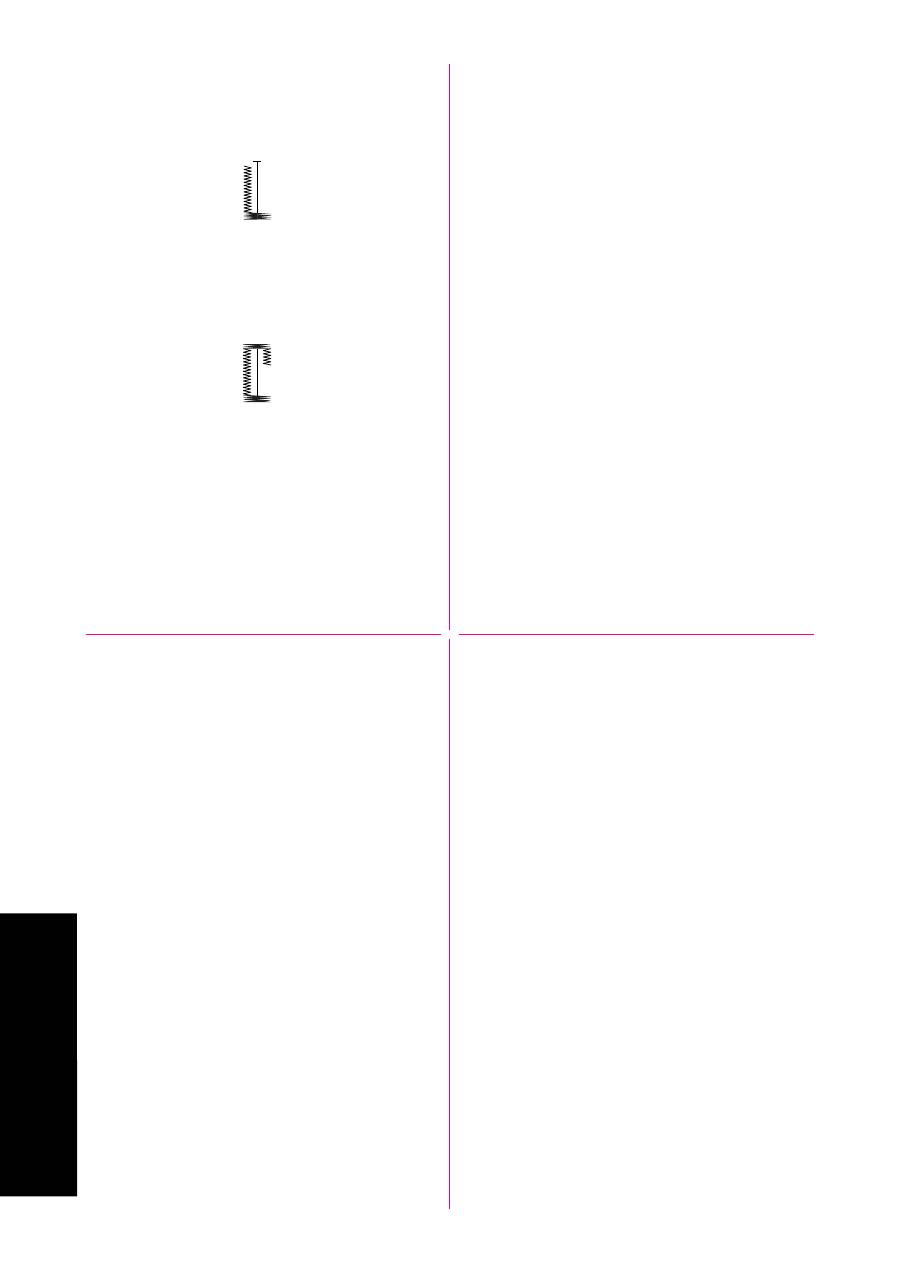
63
BUTTONHOLE AND BUTTON SEWING
KNOPFL
Ö
CHER UND KN
Ö
PFE N
Ä
HEN
ОБМЕТЫВАНИЕ ПЕТЕЛЬ И ПРИШИВАНИЕ ПУГОВИЦ
When the buttonhole is not sewn correctly:
There are two different procedures for correcting buttonhole
sewing, depending on which part of the buttonhole is not sewn
correctly.
Correction Procedure 1 (See
fig. A
)
1. Raise the Presser Foot Lever, then remove the fabric, upper
thread and lower thread.
2. Pull the buttonhole lever slightly toward you.
3. Sew about 10 stitches with no fabric, upper thread, or lower
thread in the machine.
4. Place the fabric under the presser foot, and set the upper and
lower thread again, then lightly push the buttonhole lever toward
the back of the machine and sew the buttonhole from the
beginning.
Correction Procedure 2 (See
fig. B
)
1. Raise the Presser Foot Lever, then remove the fabric and all of
the sewn thread.
2. Place the fabric under the presser foot again, then lightly push
the buttonhole lever toward the back of the machine and sew the
buttonhole from the beginning.
NOTE:
When you are finished sewing all buttonholes be sure to raise the
buttonhole lever.
If the buttonhole lever is pushed toward the back of the machine
while sewing any stitch other than a buttonhole, the buttonhole feed
will be used and the stitch will not be sewn correctly.
If the buttonhole lever is accidentally pushed when you are sewing
a stitch other than a buttonhole, remove the fabric and thread from
the machine, raise the buttonhole lever, and sew about 20 stitches.
Then sew the intended stitch.
A
B
Если обметывание петель выполняется некачественно:
Существует два способа ко
екции механизма обметывания
петель, в зависимости от того, какая планка петли
об абатывается некачественно.
Опе ация ко
екции 1 (См.
ис. A
)
1. Поднимите ычаг нажимной лапки, снимите с машины
ткань, а также ве хнюю и нижнюю нитки.
2. Слегка потяните ычаг лапки для обметывания петель на
себя.
3. П ошейте пиме но 10 стежков без запавленных в машину
ткани, ве хней и нижней нитки.
4. Положите ткань под нажимную лапку, вновь зап авьте
нижнюю и ве хнюю нитки, а затем, нажав на ычаг лапки
для обметывания петель в нап авлении от себя, вновь
начните обметывание петли.
Опе ация ко
екции 2 (См.
ис. B
)
1. Поднимите ычаг нажимной лапки, снимите с машины
ткань, а также всю пошитую ве хнюю и нижнюю нитки.
2. Вновь положите ткань под нажимную лапку и затем, нажав
на ычаг лапки для обметывания петель в нап авлении от
себя, вновь начните обметывание петли.
ПРИМЕЧАНИЕ:
После заве шения обметывания всех петель не забудьте
поднять ычаг лапки для обметывания петель.
Если ычаг лапки для обметывания петель нажат в
нап авлении от себя во в емя выполнения любых иных типов
ст очки, за исключением обметывания петель, получение
качественной ст очки невозможно.
Если Вы случайно нажали на ычаг лапки для обметывания
петель от себя во в емя выполнения любой иной ст очки, за
исключением обметывания петель, снимите ткань и нитки с
машины, поднимите ычаг лапки для обметывания петель и
пошейте пиме но 20 стежков. Затем вновь начните
выполнять т ебуемую ст очку.
Wenn das Knopfloch nicht richtig genäht wird:
Es gibt zwei verschiedene Methoden zur Korrektur von Knopflochnähten,
je nachdem, welcher Teil des Knopfloches nicht richtig genäht wird.
Methode 1 (siehe
Abb. A
)
1. Heben Sie den Nähfußhebel an, entfernen Sie den Stoff, den Ober-
faden und den Unterfaden.
2. Ziehen Sie den Knopflochhebel leicht in Ihre Richtung.
3. Nähen Sie etwa 10 Stiche ohne Stoff, Oberfaden und Unterfaden in der
Maschine.
4. Den Stoff unter den Nähfuß legen, und den Ober- und Unterfaden
erneut einsetzen. Dann leicht den Knopflochhebel zur Rückseite der
Maschine drücken, und das Knopfloch von Anfang an nähen.
Methode 2 (siehe
Abb. B
)
1. Heben Sie den Nähfußhebel, nehmen Sie Stoff- und Fadenreste
heraus.
2. Legen Sie den Stoff wieder unter den Nähfuß, drücken Sie dann den
Nähfußhebel leicht nach hinten und nähen Sie das Knopfloch von
Anfang an.
NOTIZEN:
Wenn Sie mit dem Nähen fertig sind, müssen Sie den Knopflochhebel anheben.
Wenn der Knopflochhebel nach hinten gedrückt wird, während ein
anderer Stich als der Knopflochstich genäht wird, wird der Knopfloch-
transport benutzt, und der Stich wird nicht richtig genäht.
Wenn der Knopflochhebel versehentlich gedrückt wird, während Sie
einen anderen Stich als ein Knopfloch nähen, entfernen Sie den Stoff und
Faden von der Maschine, heben Sie den Knopflochhebel an, und nähen Sie
etwa 20 Stiche. Dann nähen Sie den vorgesehenen Stich.

64
BUTTONHOLE AND BUTTON SEWING
KNOPFL
Ö
CHER UND KN
Ö
PFE N
Ä
HEN
ОБМЕТЫВАНИЕ ПЕТЕЛЬ И ПРИШИВАНИЕ ПУГОВИЦ
Button Sewing
Pattern
Stitch Length
Stitch Width
Foot
(Zigzag Stitch)
Fixed 1.5
(Zigzag Stitch)
0
Fixed 3.5
(Zigzag Stitch)
Fixed 5
1. Measure the distance between the buttonholes and set the
pattern selection dial to the Zigzag Stitch (1.5 mm, 3.5 mm or 5
mm) with the desired width.
2. Change the foot to the Zigzag presser foot.
3. Remove the power supply plug from the outlet. And place the
darning plate on the needle plate. Connect the power supply
plug into a wall outlet.
4. Place a button between the foot and the fabric and make sure
that the needle enters the holes without hitting the button. If it hits
see Step 1.
5. At a slow speed, sew approximately 10 stitches.
6. Remove the material from the machine. Cut the upper and lower
threads and tie both threads at the back of the material.
CAUTION
Make sure the needle does not strike the button during
sewing. The needle may break, leading to injury.
Zigzag
Presser Foot
Нажимная
лапка зигзаг
П ишивание пуговиц
Стежок
Длина стежка
Ши ина стежка
Лапка
(Зигзагооб азный стежок)
Фикси . 1,5
(Зигзагооб азный стежок) 0
Фикси . 3,5
(Зигзагооб азный стежок)
Фикси . 5
1. Изме ьте асстояние между цент ами отве стий на
пуговице и установите учку выбо а типа стежка на
зигзагооб азный стежок (1,5 мм, 3,5 мм или 5 мм) с
т ебуемой ши иной стежка.
2. Замените лапку на нажимную лапку зигзаг.
3. Отсоедините штепсель шну а питания от озетки. Затем
положите пластину для штопки на игольную пластину.
Подсоедините штепсель шну а питания к озетке.
4. Разместите пуговицу между лапкой и тканью и убедитесь в
том, что игла но мально входит в отве стия, не задевая
пуговицу. В п отивном случае см. Пункт 1.
5. На малой ско ости сделайте пиме но 10 стежков.
6. Снимите ткань с машины. Об ежьте ве хнюю и нижнюю
нитки и свяжите их концы узелком на изнаночной сто оне
ткани.
ПРЕДОСТЕРЕЖЕНИЕ
Убедитесь в том, что игла не задевает за пуговицу во
в емя шитья. Игла может сломаться и п ичинить
т авму.
Zickzack-Nähfuß
Knöpfe annähen
Stichmuster
Stichlänge
Stichbreite
Fuß
(Zickzackstich)
Fixiert 1,5
(Zickzackstich)
0
Fixiert 3,5
(Zickzackstich)
Fixiert 5
1. Messen Sie den Abstand zwischen den Löchern des Knopfes, und
stellen Sie den Musterwähler auf den Zickzackstich (1,5 mm, 3,5 mm
oder 5 mm) mit der dazu passenden Breite.
2. Tauschen Sie den Fuß gegen den Zickzack-Nähfuß.
3. Ziehen Sie den Netzstecker aus der Steckdose. Setzen Sie die Stopf-
platte auf die Nadelplatte. Stecken Sie den Netzstecker in eine Netz-
steckdose.
4. Legen Sie einen Knopf zwischen Fuß und Stoff und prüfen durch
manuelles Drehen, daß die Nadel ohne anzustreifen in die Befestigungs-
löcher einsticht. Wenn dies passiert, beachten Sie Schritt 1.
5. Nähen Sie mit langsamer Geschwindigkeit etwa 10 Stiche.
6. Nehmen Sie das Material aus der Maschine. Schneiden Sie Ober- und
Unterfaden großzügig ab und verknoten Sie beide Fäden an der
Stoffunterseite.
VORSICHT
Achten Sie darauf, dass die Nadel den Knopf während des Nähens
nicht berührt. Die Nadel könnte abbrechen und Sie könnten sich
dadurch verletzen.
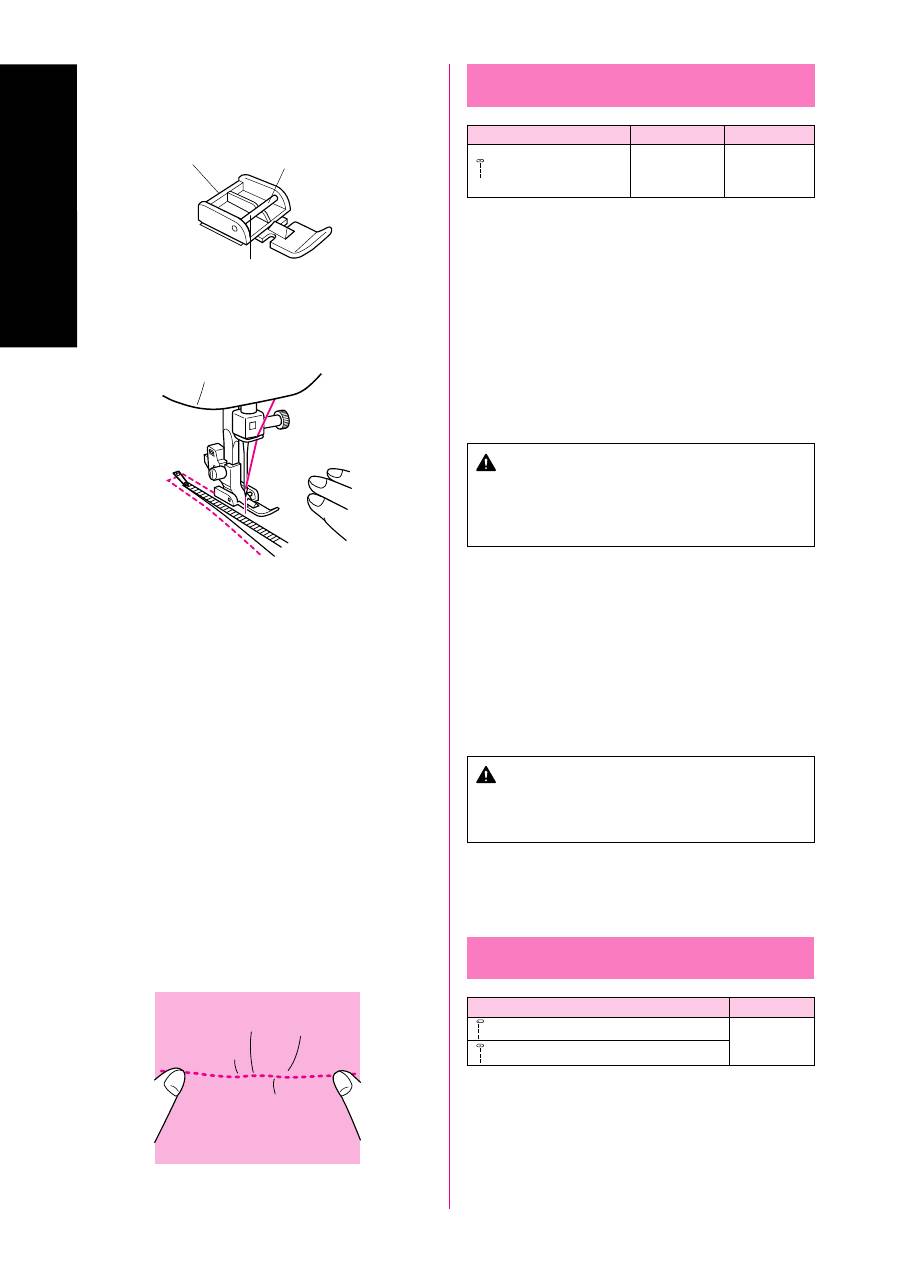
65
USING ATTACHMENTS AND APPLICATIONS
HEFTEN UND APPLIZIEREN
ИСПОЛЬЗОВАНИЕ ПРИСПОСОБЛЕНИЙ И ИЗГОТОВЛЕНИЕ АППЛИКАЦИЙ
Zipper Insertion
Pattern
Stitch Length
Foot
(Straight Stitch
2-3
Zipper Foot
(Center Needle Position))
The zipper foot is used to sew various types of zippers and can
easily be positioned to the right or left side of the needle.
When sewing the right side of the zipper, attach the shank to the left
pin of the zipper foot. When sewing the left side of the zipper, attach
the shank to the right pin of the zipper foot. (See
fig. A
)
1. Set the Pattern Selection Dial to Straight Stitch (Center Needle
Position). Set the Stitch Length between 2 and 3.
2. Lower the presser foot lever and fix either the left or right pin of
the zipper foot onto the shank.
3. Fold the edge of the material 2 cm (3/4") and place the zipper
under the folded portion.
4. Lower the needle into the notch located either on the left or right
side of the zipper foot.
CAUTION
Turn the balance wheel to make sure the needle does not
strike the presser foot. If another stitch is selected, the
needle will strike the presser foot, causing the needle to
break, possibly leading to injury.
5. Sew from the bottom of the zipper toward the top on both sides.
The needle should be positioned on the zipper side of the foot
for best results. (See
fig. B
)
6. To sew the opposite side of the zipper, release
the foot by pressing the button located at the back of the presser
foot, install the zipper foot on the other side of the zipper and
continue sewing using the other side notch.
1
Zipper foot
2
Right pin for sewing the left side of the zipper
3
Left pin for sewing the right side of the zipper
CAUTION
Make sure the needle does not strike the zipper during
sewing. If the needle strikes the zipper, the needle may
break, leading to injury.
A
B
1
2
3
Gathering
Pattern
Stitch Length
(Straight Stitch (Left Needle Position))
4
(Straight Stitch (Center Needle Position))
1. Set the Pattern Selection Dial to Straight Stitch.
2. Loosen the tension of the upper thread so that the lower thread
lies on the underside of the material.
3. Sew a single row or multiple rows of Straight Stitch.
4. Pull the lower thread(s) to gather the material.
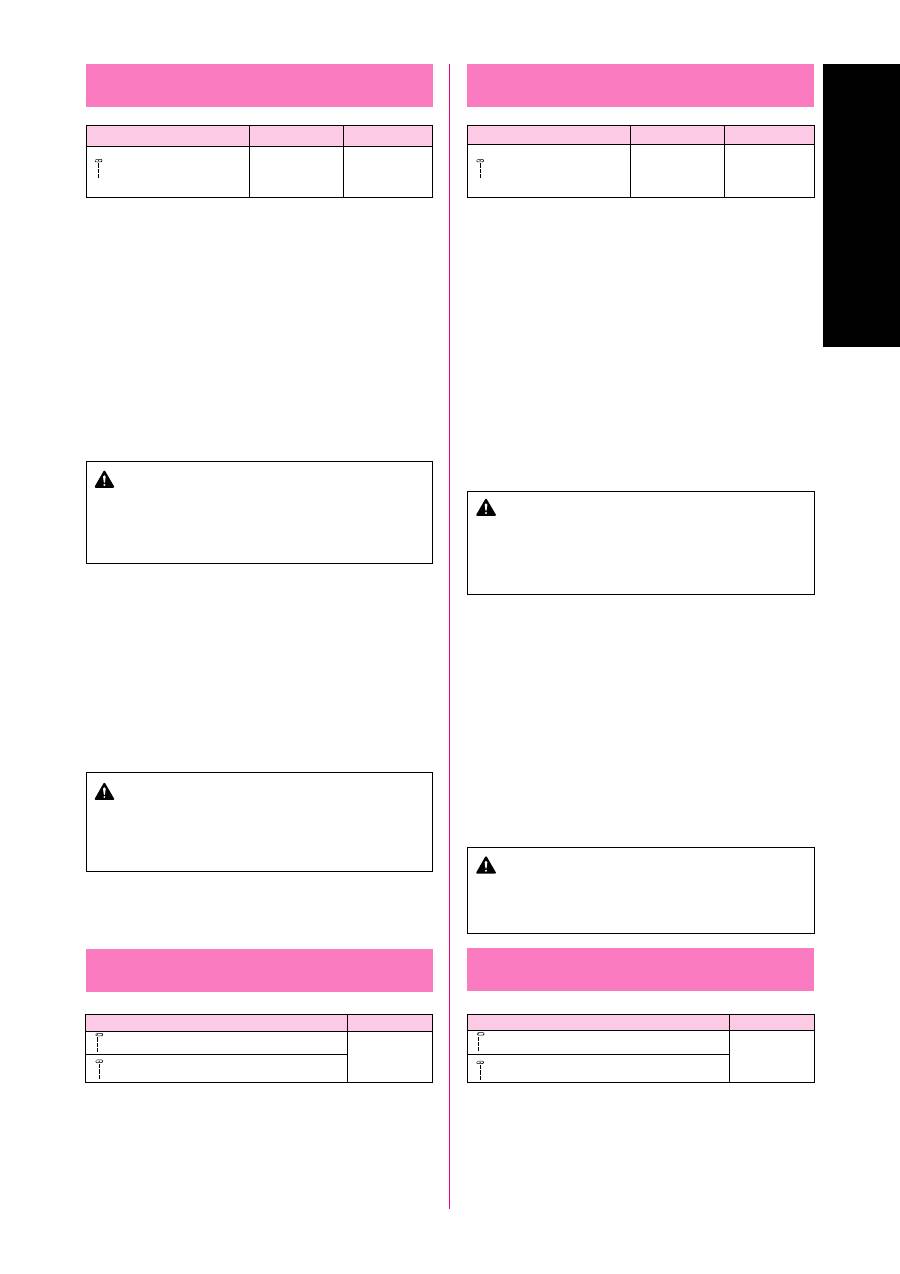
66
USING ATTACHMENTS AND APPLICATIONS
HEFTEN UND APPLIZIEREN
ИСПОЛЬЗОВАНИЕ ПРИСПОСОБЛЕНИЙ И ИЗГОТОВЛЕНИЕ АППЛИКАЦИЙ
Лапка для
вшивания
застежек-
молний
Вшивание застежек-молний
Cтежок
Длина стежка
Лапка
(П ямой стежок
2-3
(Цент альное положение иглы))
Лапка для вшивания застежек-молний п едназначена для
вшивания застежек-молний азличных типов и может быть
установлена спава или слева от иглы.
Во в емя вшивания павой части молнии пик еп
ите
де жатель нажимной лапки к левому штифту лапки для
вшивания застежек-молний. Во в емя вшивания левой части
молнии п ик епите де жатель нажимной лапки к п авому
штифту лапки для вшивания застежек-молний. (См.
ис. А
)
1. Установите учку выбо а типа стежка на п ямой стежок.
(цент альное положение иглы). Задайте длину стежка от 2 до 3.
2. Опустите ычаг нажимной лапки и п ик епите де жатель
нажимной лапки к левому или п авому штифту лапки для
вшивания застежек-молний.
3. Подогните к омку ткани на 2 см (3/4 дюйма) и подложите
молнию под подве нутый участок ткани.
4. Опустите иглу в п о езь с левой или п авой сто оны лапки
для вшивания застежек-молний.
ПРЕДОСТЕРЕЖЕНИЕ
Пове ните маховик для того, чтобы убедиться в том, что
игла не задевает нажимную лапку. Если на машине выб ан
д угой тип стежка, игла уда ится о нажимную лапку, что
п иведет к ее поломке и, возможно, к получению т авмы.
5. П ошейте молнию от нижней части к ве хней с обеих сто он.
Для обеспечения наилучших езультатов игла относительно лапки
должна находиться со сто оны молнии. (См.
ис. B
)
6. Для вшивания потивоположной сто оны молнии необходимо
отжать кнопку, асположенную с задней части нажимной лапки,
после чего установить лапку для вшивания застежек-молний на
д угую сто ону молнии и подолжить ст очку, исп
ользуя
по езь с д угой сто оны лап
ки.
1
Лапка для вшивания застежек-молний
2
П авый штифт для вшивания левой сто оны
молнии
3
Левый штифт для вшивания павой сто оны
молнии
ПРЕДОСТЕРЕЖЕНИЕ
Убедитесь в том, что игла не задевает молнию во в емя
шитья. Если игла уда ит о молнию, игла может
сломаться и п ичинить т авму.
Об аботка сбо ок
Стежок
Длина стежка
(П ямой стежок (Левое положение иглы))
4
(П ямой стежок (Цент альное положение иглы))
1. Установите учку выбо а типа стежка на п ямой стежок.
2. Ослабьте натяжение ве хней нитки с тем, чтобы нижняя
нитка асполагалась на изнаночной сто оне мате иала.
3. П ост очите один или несколько швов пямым стежком.
4. Потянув за нижнюю нитку (нитки), писбо ьте ткань.
Einnähen eines Reißverschlusses
Stichmuster
Stichlänge
Fuß
(Geradstich
2-3
Reißverschlußfuß
(Nadelposition Mitte))
Der Reißverschlußfuß wird benutzt, um verschiedene Reißverschlüsse
einzunähen und kann einfach auf der linken oder rechten Seite der Nadel
montiert werden.
Wenn Sie die linke Seite des Reißverschlusses nähen, muß sich der Fuß
auf der linken Seite der Nadel befinden. Wenn Sie die rechte Seite des
Reißverschlusses nähen, muß sich der Fuß auf der rechten Seite der Nadel
befinden. (Siehe
Abb. A
)
1. Stellen Sie das Stichmuster-Einstellrad auf den Geradstich (Nadel-
position Mitte) ein. Stellen Sie die Stichlänge zwischen 2 und 3 ein.
2. Senken Sie den Nähfußhebel und befestigen Sie entweder den linken oder den
rechten Stift des Fußes an dem Flansch der Stoffdrückerstange.
3. Falten Sie die Stoffkante etwa 2 cm um und legen den Reißverschluß
unter den umgefalteten Teil.
4. Senken Sie die Nadel in die rechte bzw. linke Kerbe des Reißverschlußfußes.
VORSICHT
Drehen Sie das Handrad, um zu kontrollieren, ob die Nadel den
Nähfuß nicht berührt. Wenn ein anderer Stich gewählt wird,
berührt die Nadel den Nähfuß, wodurch sie abbrechen und zu
Verletzungen führen kann.
5. Nähen Sie auf beiden Seiten vom Anfang des Reißverschlusses bis
zum Ende. Für optimale Ergebnisse sollte sich die Nadel dabei immer
an der Reißverschlußseite des Fußes befinden. (Siehe
Abb. B
)
6. Um die andere Seite des Reißverschlusses zu nähen, lösen Sie den Fuß
mit dem Knopf an der Rückseite, bauen den Fuß für die andere Seite
des Reißverschlusses um und beginnen zu nähen (mit der Nadel in der
anderen Kerbe).
1
Reißverschlußfuß
2
Rechter Stift zum Nähen der linken Verschlußseite
3
Linker Stift zum Nähen der rechten Verschlußseite
VORSICHT
Achten Sie darauf, dass die Nadel den Reißverschluss während
des Nähens nicht berührt. Wenn die Nadel den Reißverschluss
berührt, kann dies zum Abbrechen der Nadel und zu Verletzun-
gen führen.
Reffen
Stichmuster
Stichlänge
(Geradstich (Nadelposition links))
4
(Geradstich (Nadelposition Mitte))
1. Stellen Sie das Stichmuster-Einstellrad auf den Geradstich ein.
2. Lockern Sie die Spannung des Oberfadens, so daß der Unterfaden auf
der Unterseite des Materials liegt.
3. Nähen Sie eine oder mehrere Reihe Geradstiche.
4. Ziehen Sie den Unterfaden, um das Material zu raffen.
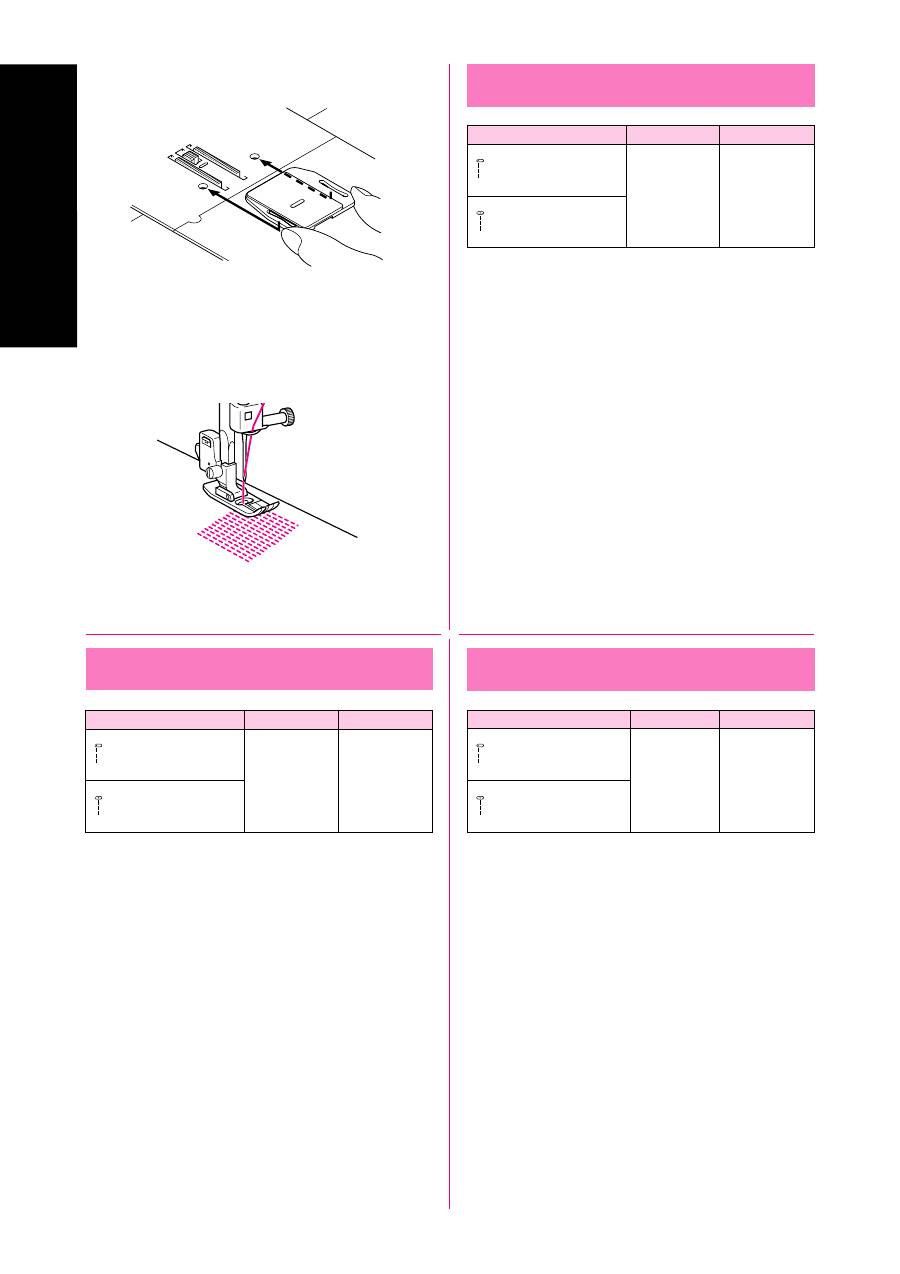
67
USING ATTACHMENTS AND APPLICATIONS
HEFTEN UND APPLIZIEREN
ИСПОЛЬЗОВАНИЕ ПРИСПОСОБЛЕНИЙ И ИЗГОТОВЛЕНИЕ АППЛИКАЦИЙ
Нажимная
лапка зигзаг
Darning
Pattern
Stitch Length
Foot
(Straight Stitch
Any
(Left Needle Position))
(Straight Stitch
(Center Needle Position))
1. Remove the power supply plug from the outlet. And place the
darning plate on the needle plate as shown in
fig. A
. Connect the
power supply plug into a wall outlet.
2. Set the Pattern Selection Dial to Straight Stitch.
3. Place the portion to be darned under the presser foot together
with a fabric for reinforcement.
4. Lower the presser foot.
5. Begin sewing alternating between gently drawing the work away
from you and pulling it toward you.
6. Repeat this motion until the portion to be darned is filled with
parallel lines of stitching.(See
fig. B
)
Stopfen
Stichmuster
Stichlänge
Stichbreite
(Geradstich
Beliebig
(Nadelposition links))
(Geradstich
(Nadelposition Mitte))
1. Schalten Sie die Maschine am Hauptschalter aus. Setzen Sie die
Stopfplatte auf die Nadelplatte, wie in
Abb. A
gezeigt. Schalten Sie die
Maschine am Hauptschalter wieder ein.
2. Stellen Sie das Stichmuster-Einstellrad auf den Geradstich ein.
3. Legen Sie die zu stopfende Stelle zusammen mit einer Stoffunterlage
zur Verstärkung unter den Nähfuß.
4. Senken Sie den Nähfuß.
5. Beginnen Sie mit dem Nähen, während Sie den Stoff leicht vor und
zurück bewegen.
6. Wiederholen Sie diese Bewegung, bis die betreffende Stelle mit
parallelen Stichlinien ausgefüllt ist. (Siehe
Abb. B
)
B
A
Zigzag Presser
Foot
Zickzack-
Nähfuß
Штопка
Стежок
Длина стежка Нажимная лапка
(П ямой стежок
(Левое положение иглы))
Любая
(П ямой стежок
(Цент альное положение иглы))
1. Отсоедините штепсель шну а питания от озетки.
Разместите пластину для штопки на игольной пластине,
как показано на
ис. А
. Подсоедините штепсель шну а
питания к озетке.
2. Установите учку выбо а типа стежка на п ямой стежок.
3. Поместите участок изделия, подлежащий емонту, вместе
с подложенной под него заплаткой под нажимную лапку.
4. Опустите нажимную лапку.
5. Начните ст очку, попе еменно медленно пе емещая
пошиваемую деталь в напавлении от себя и на себя.
6. Повто яйте эти движения до тех по , пока вся
емонти уемая часть не пок оется па аллельными
стежками. (См.
Рис. В
)
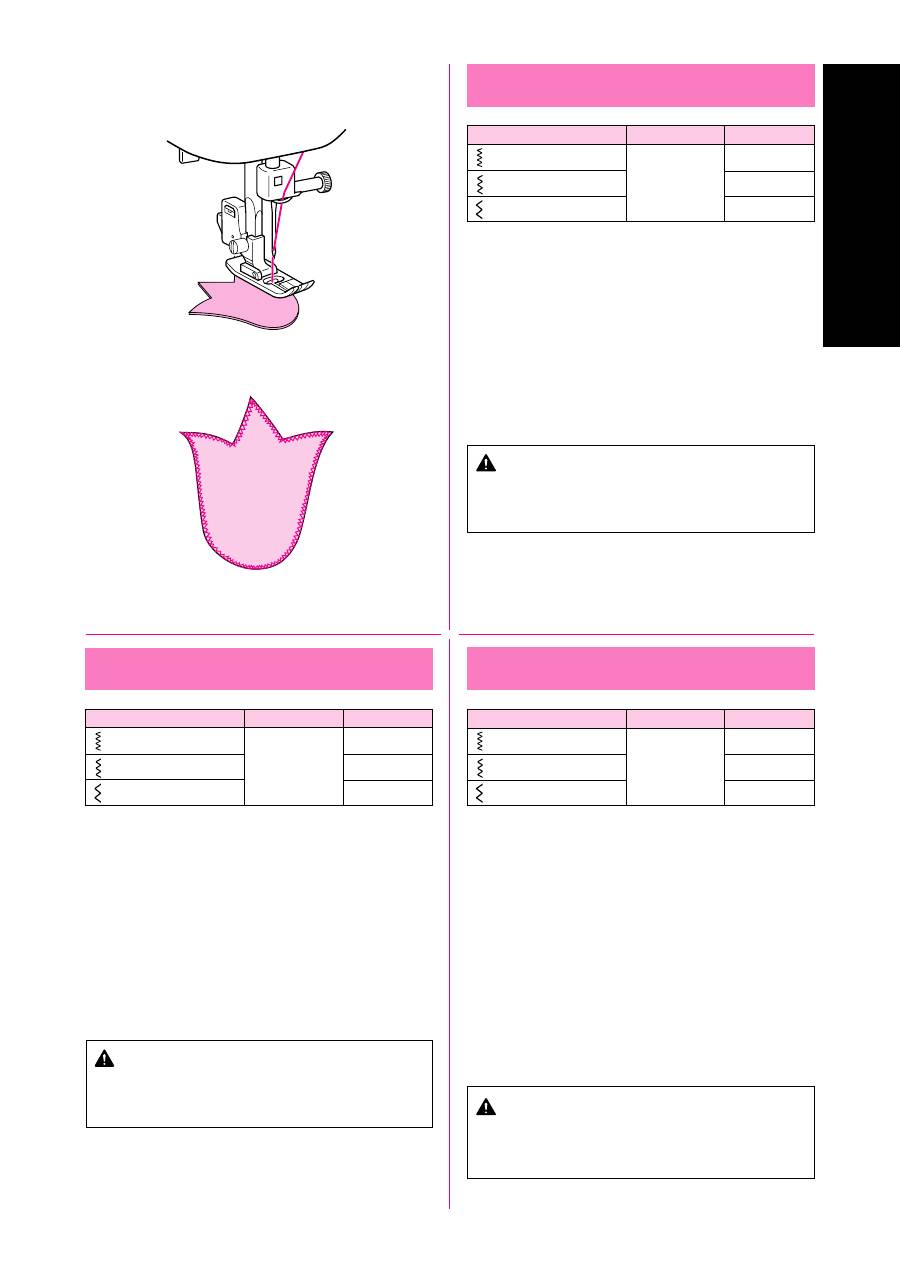
68
USING ATTACHMENTS AND APPLICATIONS
HEFTEN UND APPLIZIEREN
ИСПОЛЬЗОВАНИЕ ПРИСПОСОБЛЕНИЙ И ИЗГОТОВЛЕНИЕ АППЛИКАЦИЙ
Appliqués
Pattern
Stitch Length
Stitch Width
(Zigzag Stitch)
Fixed 1.5
(Zigzag Stitch)
F-2
Fixed 3.5
(Zigzag Stitch)
Fixed 5
An appliqué is created by cutting a contrasting piece of fabric into
a shape to be used as a decoration on a garment or project.
1. Baste the cut design to the fabric in the location where desired.
2. Carefully sew around the edge of the cutout design with a Zigzag
Stitch in the fine stitch length.
3. Cut away the surplus fabric outside of the stitching.
4. Remove the basting, if necessary.
NOTE:
Make reinforcing Straight Stitches at the beginning and the end of
the stitching to secure.
CAUTION
Be careful that the needle does not strike a basting pin
during sewing. Striking a pin can cause the needle to break,
resulting in injury.
Applizieren
Stichmuster
Stichlänge
Stichbreite
(Zickzackstich)
Fixiert 1,5
(Zickzackstich)
F-2
Fixiert 3,5
(Zickzackstich)
Fixiert 5
Eine Applikation wird hergestellt, indem ein Stück kontrastierenden
Stoffes ausgeschnitten und als Dekoration auf einem Kleidungsstück oder
einer anderen Arbeit aufgebracht wird.
1. Heften Sie den zugeschnittenen Stoff an den gewünschten Platz.
2. Nähen Sie sorgfältig entlang der Schnittkante mit einem Zickzackstich
und mit geringer Stichlänge.
3. Schneiden Sie den überstehenden Stoff außerhalb der Naht ab.
4. Entfernen Sie die Heftung, wenn nötig.
NOTIZEN:
Nähen Sie zur Befestigung ein paar Geradstiche an Anfang und Ende der
Nähte.
VORSICHT
Achten Sie darauf, dass die Nähnadel während des Nähens keine
Stecknadeln berührt. Dies kann zum Abbrechen der Nadel und zu
Verletzungen führen.
Аппликации
Стежок
Длина стежка
Ши ина стежка
(Зигзагооб азный стежок)
Фикси . 1,5
(Зигзагооб азный стежок)
F-2
Фикси . 3,5
(Зигзагооб азный стежок)
Фикси . 5
Для изготовления аппликации необходимо вы езать из ткани
конт асти ующего с основным мате иалом цвета кусочек
желаемой фо мы, кото ый нашивается в качестве
деко ативного элемента на пошиваемое изделие или п едмет
одежды.
1. Наметайте вы езанную фо му на желаемый участок изделия.
2. Тщательно п ошейте аппликацию по конту у, используя
зигзагооб азный стежок с малой длиной стежка.
3. От ежьте лишнюю к омку аппликации с на ужной сто оны
ст очки.
4. Удалите сметочную нить.
ПРИМЕЧАНИЕ:
В начале и конце ст очки для зак епления используйте п ямые
стежки.
ПРЕДОСТЕРЕЖЕНИЕ
Следите за тем, чтобы во в емя шитья игла не уда ила
о сметочную булавку. Это может вызвать поломку
иглу и получение т авмы.
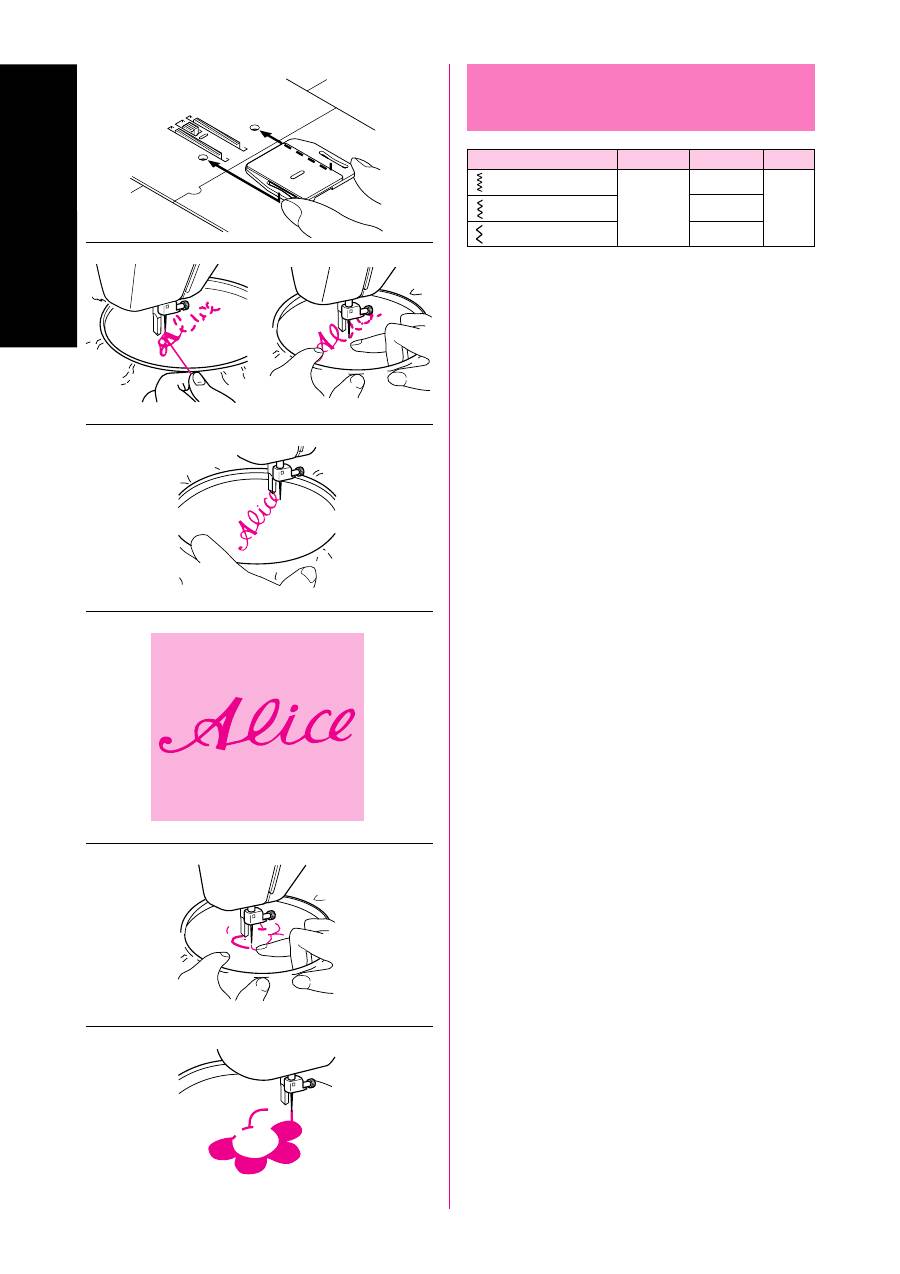
69
USING ATTACHMENTS AND APPLICATIONS
HEFTEN UND APPLIZIEREN
ИСПОЛЬЗОВАНИЕ ПРИСПОСОБЛЕНИЙ И ИЗГОТОВЛЕНИЕ АППЛИКАЦИЙ
Monogramming and
Embroidering
Pattern
Stitch Length Stitch Width
Foot
(Zigzag Stitch)
Fixed 1.5
(Zigzag Stitch)
Any
Fixed 3.5
None
(Zigzag Stitch)
Fixed 5
PREPARING FOR MONOGRAMMING AND EMBROIDERING
1. Remove the power supply plug from the outlet. And place the
darning plate on the needle plate as shown in
fig. A
. Connect the
power supply plug into a wall outlet.
2. Set the Pattern Selection Dial to the appropriate Zigzag Stitch
setting.
3. Draw the lettering (for monogramming) or design (for embroi-
dering) on the surface of the fabric.
4. Stretch the fabric between embroidery hoops as firmly as
possible with the underside of the fabric on the bottom of the
inside hoop.
5. Place the work under the needle and lower the presser bar with
the foot removed.
6. Pull the lower thread up through the work at the starting position
by turning the balance wheel and make a few holding stitches.
7. Grip the hoop with the thumb and forefingers of both hands while
pressing the fabric with the middle and third fingers and support-
ing the outside of the hoop with your smaller fingers.
MONOGRAMMING
1. Sew, moving the hoop slowly along the lettering at a constant
speed.
2. Secure with a few straight stitches at the end of the last letter.
EMBROIDERING
1. Stitch the outline of the design by moving the embroidery hoop.
2. Fill in the design alternating from the outline of the design to the
inside and from the inside to the edge of the outline until the
design is completely filled in. Keep the stitching close together.
NOTE:
A long stitch is made by moving the embroidery hoop rapidly and a
short stitch is made by moving it slowly.
3. Secure with a few Straight Stitches at the end of the design.
A
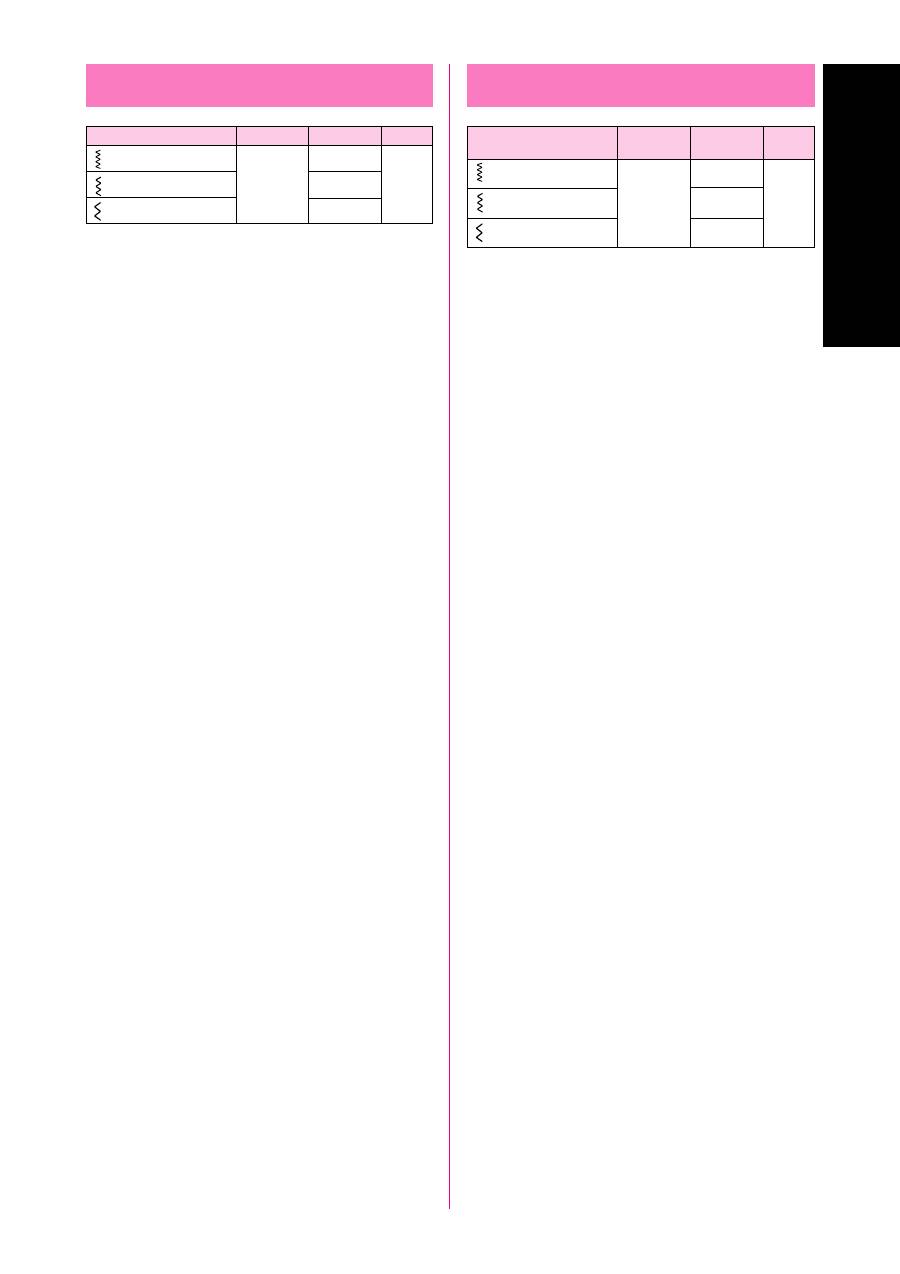
70
USING ATTACHMENTS AND APPLICATIONS
HEFTEN UND APPLIZIEREN
ИСПОЛЬЗОВАНИЕ ПРИСПОСОБЛЕНИЙ И ИЗГОТОВЛЕНИЕ АППЛИКАЦИЙ
(Зигзагооб азный стежок)
Фикси . 1,5
(Зигзагооб азный стежок)
Любая
Фикси . 3,5 Не нужна
(Зигзагооб азный стежок)
Фикси . 5
ПОДГОТОВИТЕЛЬНЫЕ ОПЕРАЦИИ ПЕРЕД ИЗГОТОВЛЕНИЕМ
МОНОГРАММ И ВЫШИВАНИЕМ
1. Отсоедините штепсель шну а питания от озетки.
Разместите пластину для штопки на игольной пластине,
как показано на
ис. А
. Подсоедините штепсель шну а
питания к озетке.
2. Установите учку выбо а типа стежка на соответствующий
зигзагооб азный стежок.
3. На исуйте буквы моног аммы или соответствующий узо
для вышивания на пове хности об абатываемой ткани.
4. Как можно сильнее астяните ткань и зажмите ее пяльцами,
пи этом ткань должна асп
олагаться с нижней сто оны
внут еннего об уча пялец.
5. Поместите ткань под иглу и опустите механизм нажимной
лапки (без самой лапки).
6. Вытяните вве х нижнюю нитку че ез ткань в начальной
точке, пове нув для этого маховик и выполнив несколько
фикси ующих стежков.
7. Де жите пяльцы большими и указательными пальцами
обеих ук и однов еменно пижимайте ткань вниз с едними
и безымянными пальцами. Мизинцами п иде живайте
пяльцы сна ужи. Начните ст очку.
ИЗГОТОВЛЕНИЕ МОНОГРАММ
1. Выполните ст очку, пе емещая с постоянной ско остью
пяльцы с натянутой тканью вдоль конту а на исованных
букв.
2. Зак епите начало и конец ст очки несколькими п ямыми
стежками.
ВЫШИВАНИЕ
1. Выполните ст очку по на ужному конту у нанесенного
узо а пе емещением пялец с натянутой тканью.
2. Вышивайте узо , попе еменно меняя нап авление ст очки
от на ужного конту а к цент у и об атно до тех по , пока
не будет вышита вся пове хность узо а. П и этом в
поцессе вышивания необходимо следить за тем, чтобы
смежные стежки ложились как можно ближе д уг к д угу.
ПРИМЕЧАНИЕ:
Длинные стежки фо ми уются пи быст ом п
е емещении
пялец, для получения ко отких стежков пе емещайте пяльцы
медленно.
3. Для фикси ования ст очки в конце узо а следует сделать
несколько пямых стежков.
Стежок
Длина стежка
Ши ина
Лапка
стежка
Monogramme und Stickarbeiten
Stichmuster
Stichlänge
Stichbreite
Fuß
(Zickzackstich)
Fixiert 1,5
(Zickzackstich)
Beliebig
Fixiert 3,5
Kein
(Zickzackstich)
Fixiert 5
VORBEREITUNG FÜR MONOGRAMME UND STICKARBEITEN
1. Schalten Sie die Maschine am Hauptschalter aus. Setzen Sie die
Stopfplatte auf die Nadelplatte, wie in
Abb. A
gezeigt. Schalten Sie die
Maschine am Hauptschalter aus.
2. Stellen Sie das Stichmuster-Einstellrad auf den entsprechenden
Zickzackstich.
3. Zeichnen Sie die Umrandung des Monogramms oder des Stickobjektes
auf die Stoffoberseite.
4. Spannen Sie den Stoff so fest wie möglich in einen Stickrahmen, so daß
sich die Stoffunterseite am unteren Rand des inneren Rahmens befin-
det.
5. Demontieren Sie den Nähfuß. Platzieren Sie die Arbeit unter der Nadel
und senken Sie den Nähfußhebel.
6. Ziehen Sie den Unterfaden an der Startposition nach oben durch,
indem Sie am Handrad drehen und ein paar Befestigungsstiche ausfüh-
ren.
7. Ergreifen Sie den Rahmen mit Daumen und Zeigefinger beider Hände,
während Sie den Stoff mit Mittel- und Ringfinger und die Außenseite
des Rahmens mit dem kleinen Finger unterstützen.
MONOGRAMME
1. Nähen Sie mit gleichbleibender Geschwindigkeit entlang der Buchsta-
ben, indem Sie den Rahmen langsam bewegen.
2. Befestigen Sie die Naht am Ende des letzten Buchstabens mit einigen
Geradstichen.
STICKARBEITEN
1. Sticken Sie die Umrandung des Motivs durch Bewegung des Stickrah-
mens.
2. Füllen Sie das Motiv aus, indem Sie von der Umrandung nach innen
und wieder nach außen bis zur Umrandung sticken, bis das Motiv
vollständig ausgefüllt ist. Halten Sie die Stiche eng beieinander.
NOTIZEN:
Ein langer Stich wird durch schnelle, ein kurzer Stich durch langsame
Bewegung des Stickrahmens erzeugt.
3. Befestigen Sie die Naht am Ende des Motivs mit einigen Geradstichen.
Изготовление моног амм и вышивание
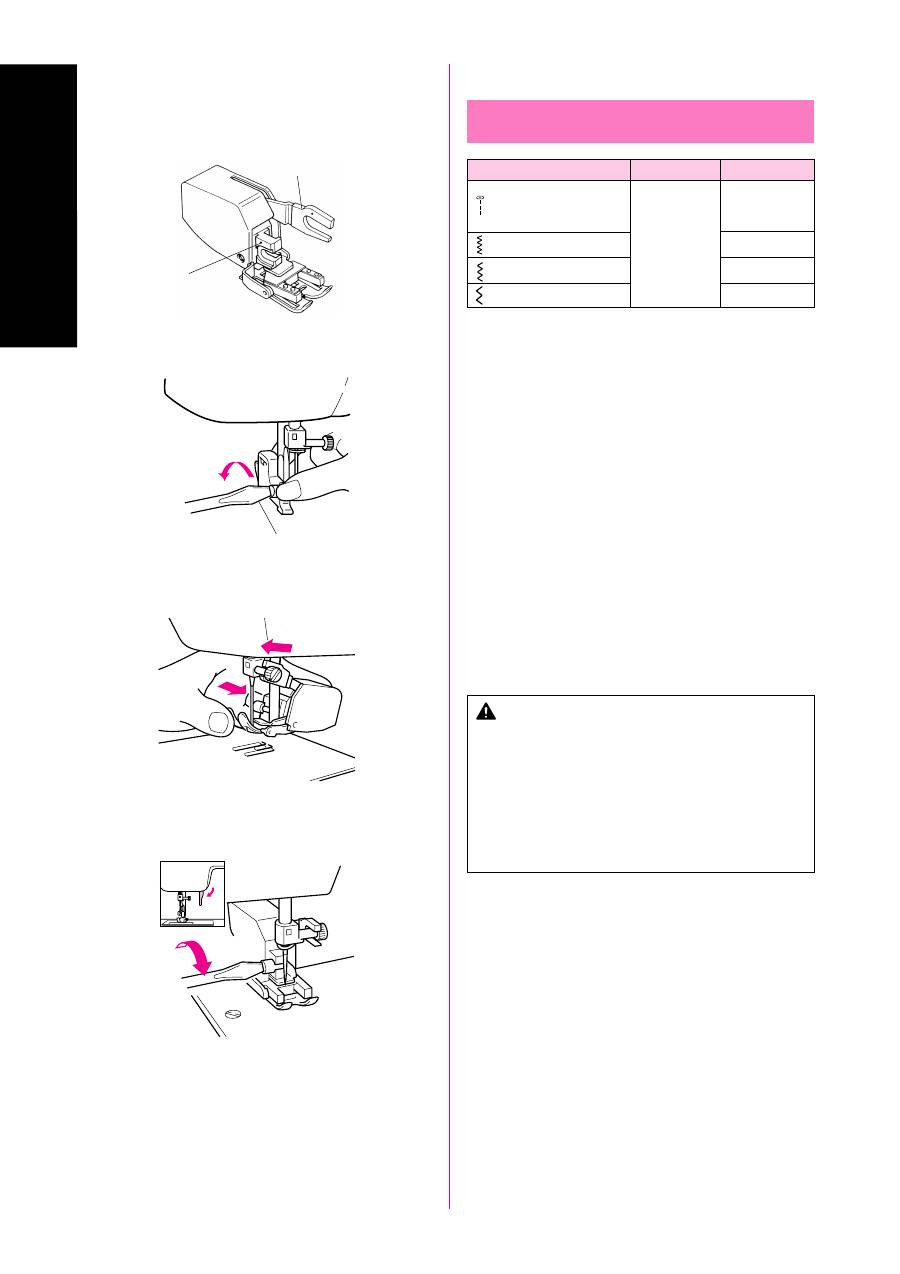
71
USING ATTACHMENTS AND APPLICATIONS
HEFTEN UND APPLIZIEREN
ИСПОЛЬЗОВАНИЕ ПРИСПОСОБЛЕНИЙ И ИЗГОТОВЛЕНИЕ АППЛИКАЦИЙ
1
2
C
B
A
1
OPTIONAL ACCESSORIES
Using the Walking Foot
Pattern
Stitch Length
Stitch Width
(Straight Stitch
0
(Center Needle Position))
(Zigzag Stitch)
1-4
Fixed 1.5
(Zigzag Stitch)
Fixed 3.5
(Zigzag Stitch)
Fixed 5
This foot is very useful for sewing materials such as vinyl cloth,
synthetic leather, thin leather, etc. These materials are difficult to
feed when sewing. The walking foot prevents such materials from
crumpling, slipping or sticking between presser foot and material
due to even feeding of upper and lower materials.
NOTE:
Use this foot only for straight sewing (Center Needle Position) and
zigzag stitching. Do not use other patterns.
1. Remove the power supply plug from the outlet.
2. Raise the needle and the presser foot.
3. Loosen the presser foot screw to remove the presser foot holder.
(See
fig. A
)
4. Attach the forked section of the connecting lever to the needle
clamp, install the walking foot to the presser bar. (See
fig. B
)
5. Lower the presser foot lever and then tighten the accessory
presser bar holder fixing screw. (See
fig. C
)
1
Forked part of operation lever
2
Presser bar holder
1
Use a screwdriver
CAUTION
•
Use the screwdriver to tighten the screw securely. If the
screw is loose, the needle may strike the presser foot
and cause injury.
•
Be sure to turn the balance wheel toward the front of the
machine to check that the needle does not strike the
presser foot. If the needle strikes the presser foot, injury
may result.
•
Be careful not to touch the needle during this time,
otherwise injury may result.
CAUTION
When sewing with the walking foot, sew at medium to low
speeds.
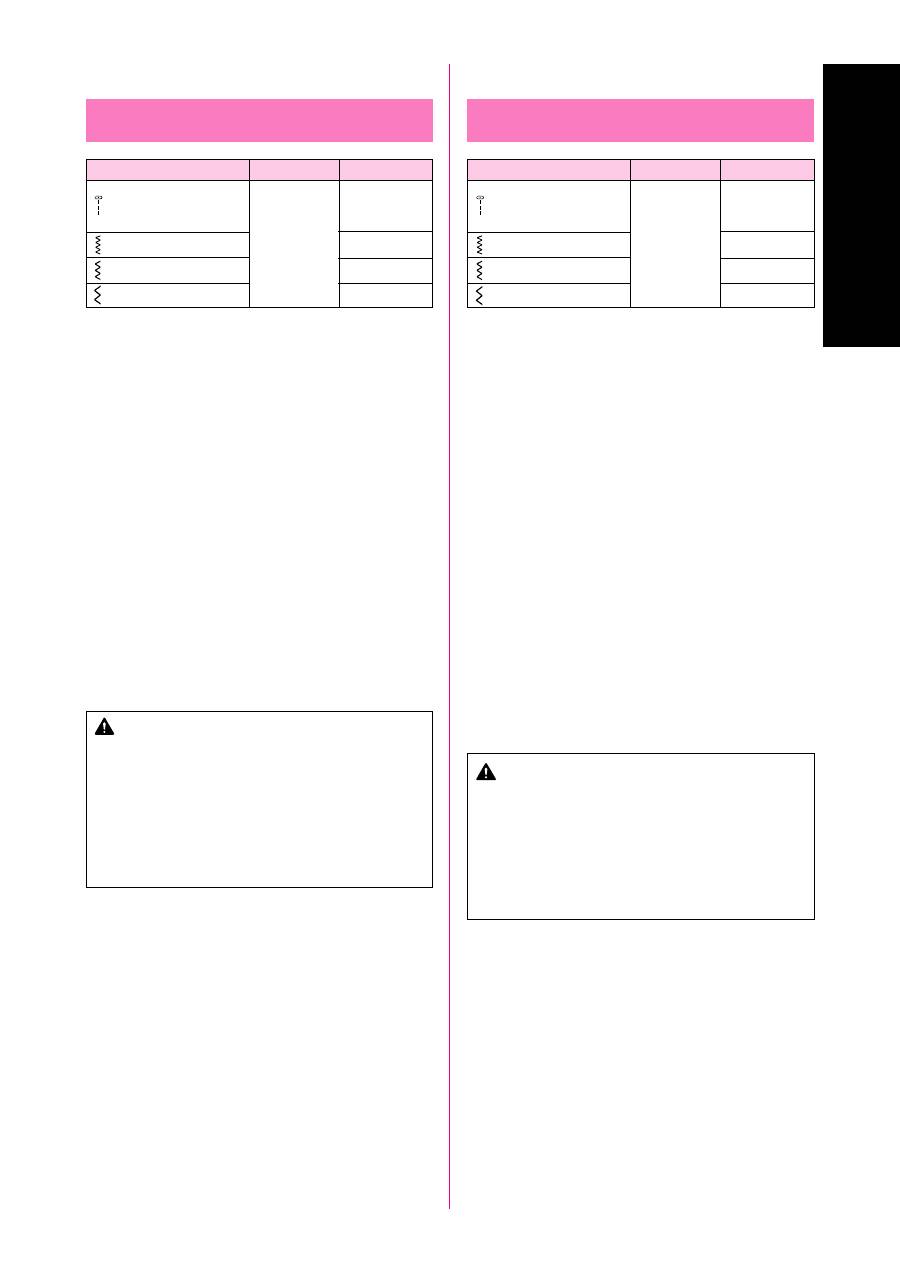
72
USING ATTACHMENTS AND APPLICATIONS
HEFTEN UND APPLIZIEREN
ИСПОЛЬЗОВАНИЕ ПРИСПОСОБЛЕНИЙ И ИЗГОТОВЛЕНИЕ АППЛИКАЦИЙ
OPTIONALES ZUBEHÖR
Einsatz des Obertransporteurs
Stichmuster
Stichlänge
Stichbreite
(Geradstich
0
(Nadelposition Mitte))
(Zickzackstich)
1-4
Fixiert 1,5
(Zickzackstich)
Fixiert 3,5
(Zickzackstich)
Fixiert 5
Dieser Fuß eignet sich besonders beim Nähen von Materialien wie
Vinylstoffen, synthetischem Leder, dünnem Leder etc. Diese Materialien
sind schwer zu transportieren. Der Obertransporteur verhindert bei sol-
chen Stoffen Faltenwurf, Verrutschen oder Haftenbleiben am Nähfuß
durch gleichmäßigen Transport an der Stoffober- und -unterseite.
NOTIZEN:
Diesen Fuß können Sie nur für Geradstich (Nadelposition Mitte) und
Zickzackstich und nicht für andere Stichmuster verwenden.
1. Schalten Sie die Maschine am Hauptschalter aus.
2. Heben Sie Nadel und Nähfuß an.
3. Lösen Sie die Nähfußschraube, um den Nähfuß abzubauen (Siehe
Abb. A
).
4. Bringen Sie den gabelförmigen Teil des Betätigungshebels an der
Nadelklemme an und befestigen Sie den Obertransporteur an der
Stoffdrückerstange (Siehe
Abb. B
).
5. Senken Sie den Nähfußhebel und ziehen Sie die Befestigungsschraube
der Stangenhalterung am Nähfuß an (Siehe
Abb. C
).
1
Gabelförmiger Teil des Betätigungshebels
2
Stangenhalterung
1
Benutzen Sie einen Schraubendreher
VORSICHT
•
Ziehen Sie die Schraube mit Hilfe des Schraubendrehers
fest an. Ist die Schraube nicht fest genug angezogen, kann die
Nadel auf den Nähfuß treffen, was Verletzungen zur Folge
haben kann.
•
Drehen Sie das Handrad zur Vorderseite der Maschine, um zu
kontrollieren, dass die Nadel den Nähfuß nicht berührt. Wenn die
Nadel den Nähfuß berührt, kann dies zu Verletzungen führen.
•
Achten Sie darauf, daß Sie die Nadel während dieser Zeit nicht
berühren, da es sonst zu Verletzungen kommen kann.
VORSICHT
Nähen Sie bei Benutzung des oberen Transporteurs mit geringer bis
mittlerer Geschwindigkeit.
ДОПОЛНИТЕЛЬНЫЕ ПРИНАДЛЕЖНОСТИ
Использование шагающей лапки
Стежок
Длина стежка Ши ина стежка
(П ямой стежок
0
(Цент альное положение иглы))
(Зигзагооб азный стежок)
1-4
Фикси . 1,5
(Зигзагооб азный стежок)
Фикси . 3,5
(Зигзагооб азный стежок)
Фикси . 5
Эта лапка очень полезна п и сшивании таких мате иалов,
как клеенка, синтетическая кожа, тонкая нату альная кожа
и т.д. Во в емя шитья подача этих мате иалов ч езвычайно
зат уднена. Шагающая лапка позволяет уст анить смятие,
скольжение и пилип
ание данных мате иалов между
нажимной лапкой и п ишиваемым куском мате иала за счет
овной подачи ве хнего и нижнего слоя мате иала.
ПРИМЕЧАНИЕ:
Данная лапка п игодна только п и пошиве мате иалов п ямым
(цент альным положением иглы) и зигзагооб азным стежком.
П именение иных типов стежка зап ещено.
1. Отсоедините штепсель шну а питания от озетки.
2. Поднимите иглу и нажимную лапку.
3. Ослабьте к епежный винт нажимной лапки для того, чтобы
снять де жатель нажимной лапки. (См.
ис. A
)
4. П ик епите вилочную часть соединительного ычага к
игловодителю и вставьте шагающую лапку в механизм
нажимной лапки. (См.
ис. В
)
5. Опустите ычаг нажимной лапки и затем затяните
к епежный винт механизма нажимной лапки. (См.
ис. C
)
1
Вилочная часть абочего ычага
2
Де жатель механизма нажимной лапки
1
Используйте отве тку
ПРЕДОСТЕРЕЖЕНИЕ
• Воспользуйтесь отве ткой, чтобы надежно затянуть
винт. Если винт ослаблен, игла может уда ить о
нажимную лапку и п ичинить т авму.
• Пове нув маховик на себя, убедитесь в том, что
игла не задевает нажимную лапку. Если игла уда ит
о нажимную лапку, возможно получение т авмы.
• Ста айтесь не п икасаться к игле во в емя
выполнения этой опе ации, чтобы избежать т авмы.
ПРЕДОСТЕРЕЖЕНИЕ
П и пошиве мате иала с использованием шагающей
лапки, выполняйте ст очку на низкой или с едней
ско ости.
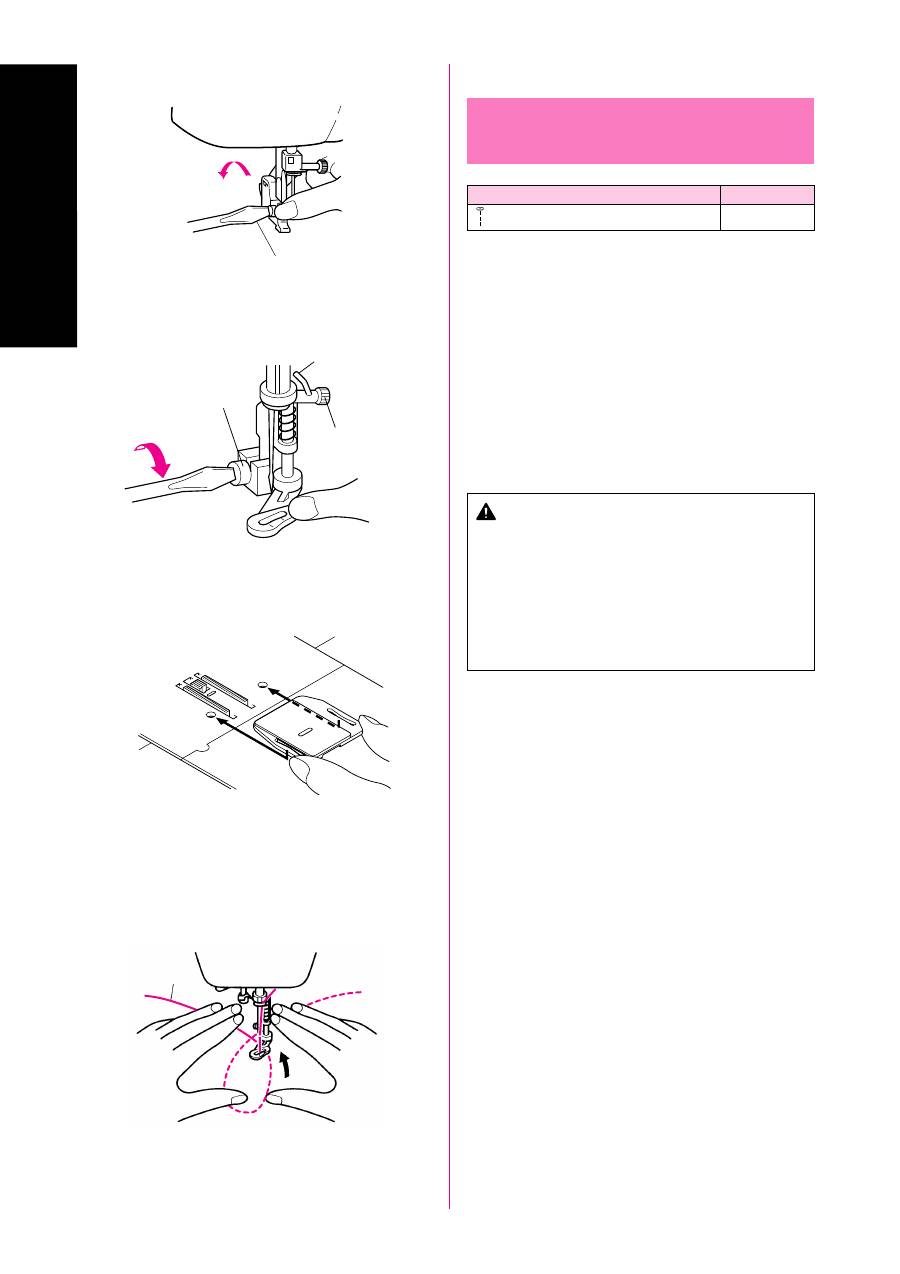
73
USING ATTACHMENTS AND APPLICATIONS
HEFTEN UND APPLIZIEREN
ИСПОЛЬЗОВАНИЕ ПРИСПОСОБЛЕНИЙ И ИЗГОТОВЛЕНИЕ АППЛИКАЦИЙ
OPTIONAL ACCESSORIES
Using the Spring-action
Quilting Foot
Pattern
Stitch Length
(Straight Stitch (Center Needle Position))
Any
The Spring -action Quilting Foot is useful for darning and freemotion
machine quilting.
1. Remove the power supply plug from the outlet.
2. Raise the needle and the presser foot.
3. Loosen the presser foot screw to remove the presser foot holder.
(See
fig. A
)
4. Attach the quilting foot, making sure that part indicated by
A
in
the illustration is above the needle clamp screw, then lower the
Presser Foot Lever and tighten the presser foot screw.
*
Be sure that the needle clamp screw is firmly tightened. (See
fig.
B
)
1
Use a screwdriver.
2
Presser Foot Screw
3
Needle Clamp Screw
CAUTION
•
Be careful not to touch the needle during this time,
otherwise injury may result.
•
Use the screwdriver to tighten the presser foot holder
screw securely. If the screw is loose, the needle may
strike the presser foot and cause injury.
•
Be sure to turn the balance wheel toward the front of the
machine to check that the needle does not strike the
presser foot. If the needle strikes the presser foot, injury
may result.
5. Place the darning plate on the needle plate as shown in
fig. C
.
Connect the power supply plug into a wall outlet.
6. Set the Pattern Selection Dial to Straight Stitch.
*
Before starting to sew, draw the quilting design on the fabric.
7. Use both hands to keep the fabric firmly stretched and move the
fabric to sew over the drawn design. (See
fig. D
)
B
Quilting design (Line)
8. The stitch length depends on how quickly the fabric is moved
and on the machine’s sewing speed. Sew while moving the
fabric slowly.
B
A
1
A
3
2
D
C
B
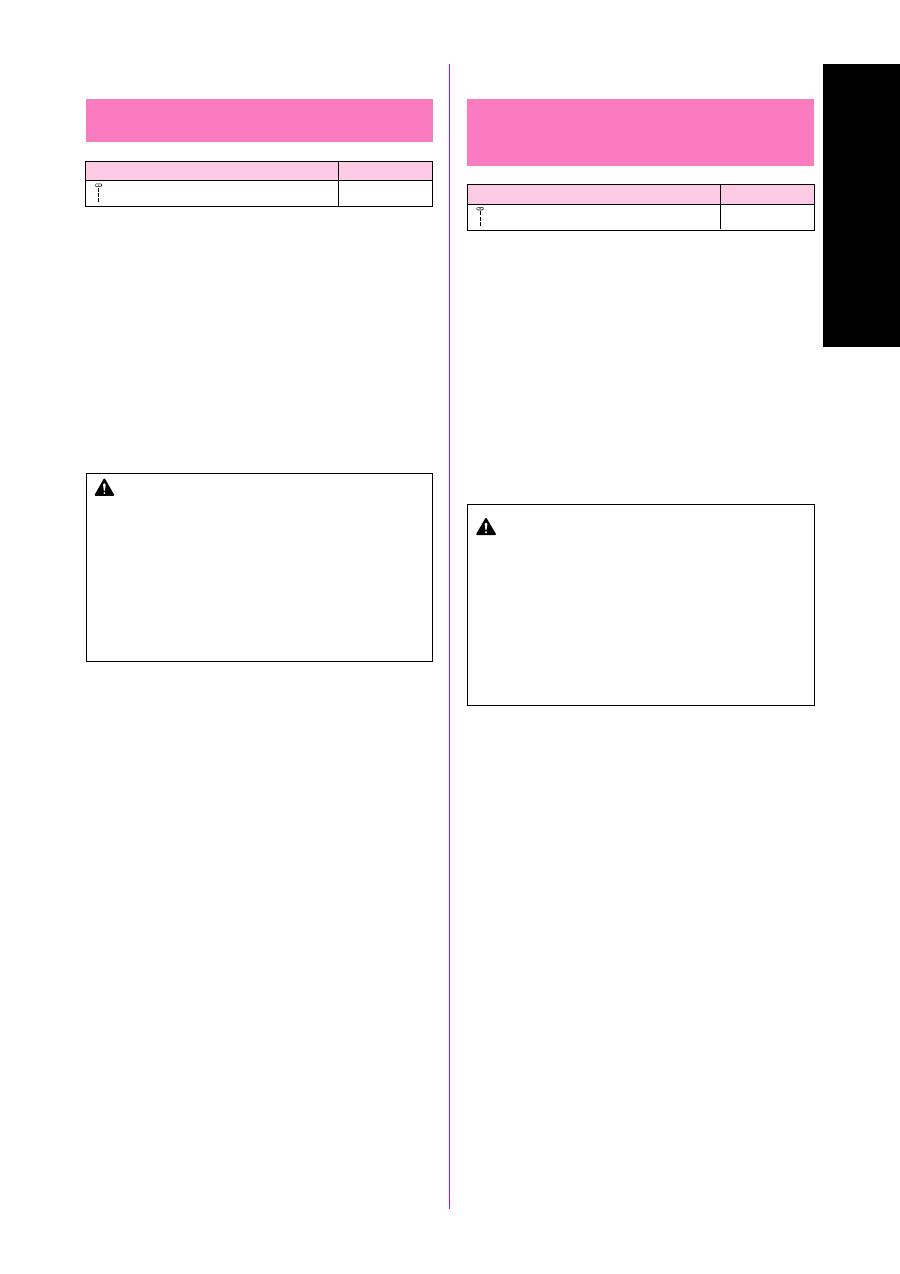
74
USING ATTACHMENTS AND APPLICATIONS
HEFTEN UND APPLIZIEREN
ИСПОЛЬЗОВАНИЕ ПРИСПОСОБЛЕНИЙ И ИЗГОТОВЛЕНИЕ АППЛИКАЦИЙ
ДОПОЛНИТЕЛЬНЫЕ ПРИНАДЛЕЖНОСТИ
Использование лапки штопки-
вышивки
Стежок
Длина стежка
(П ямой стежок (Цент альное положение иглы))
Любая
Лапка штопки-вышивки полезна п и выполнении штопки и
машинной об аботке стеганых изделий.
1. Отсоедините штепсель шну а питания от озетки.
2. Поднимите иглу и нажимную лапку.
3. Ослабьте к епежный винт нажимной лапки для того, чтобы
снять де жатель нажимной лапки. (См.
ис. A
)
4. П ик епите лапку штопки-вышивки, п оследив за тем,
чтобы область
A
на исунке асполагалась над к епежным
винтом игловодителя, а затем опустите ычаг нажимной
лапки и затяните к епежный винт нажимной лапки.
*
Убедитесь в том, что винт иглоде жателя затянут надежно.
(См.
ис. B
)
1
Используйте отве тку.
2
Винт нажимной лапки
3
К епежный винт на игловодителя
ПРЕДОСТЕРЕЖЕНИЕ
• Не п икасайтесь к игле во в емя выполнения данной
опе ации, в п отивном случае возможно получение
т авмы.
• Воспользуйтесь отве ткой, чтобы надежно затянуть
винт де жателя нажимной лапки. Если винт
ослаблен, игла может уда ить о нажимную лапку и
п ичинить т авму.
• Пове нув маховик на себя, убедитесь в том, что
игла не задевает нажимную лапку. Если игла уда ит
о нажимную лапку, возможно получение т авмы.
5. Положите пластину для штопки на игольную пластину, как
показано на
ис. С
. Подсоедините штепсель шну а питания
к озетке.
6. Установите учку выбо а типа стежка на п ямой стежок.
*
Пе ед началом ст очки на исуйте стеганый узо на
мате иале.
7. Обеими уками астягивая мате иал, пе емещайте его
для выполнения ст очки по конту у на исованного узо а.
(См.
ис. D
)
B
Стеганый узо (Линия)
8. Длина стежка опеделяется ско остью п
е емещения
мате иала и ско остью машины. Рекомендуется
поизводить ст очку, медленно п
е емещая мате иал.
OPTIONALES ZUBEHÖR
Einsatz des Stopffußes
Stichmuster
Stichlänge
(Geradstich (Nadelposition Mitte))
Beliebig
Der Stopffuß eignet sich für Stopfarbeiten und für manuelles Steppen.
1. Ziehen Sie den Netzstecker aus der Steckdose.
2. Heben Sie Nadel und Nähfuß an.
3. Lösen Sie die Nähfußschraube, um den Nähfuß abzubauen (Siehe
Abb. A
).
4. Bringen Sie den Stopffuß an, während Sie darauf achten, daß das Teil
mit der Bezeichnung
A
in der Abbildung sich an der Nadel-
klemmschraube befindet. Senken Sie dann den Nähfuß und ziehen Sie
die Nähfußschraube an.
* Achten Sie darauf, daß die Nadelklemmschraube fest angezogen ist
(Siehe
Abb. B
).
1
Benutzen Sie einen Schraubendreher
2
Nähfußschraube
3
Nadelklemmschraube
VORSICHT
•
Achten Sie darauf, daß Sie die Nadel während dieser Zeit nicht
berühren, da es sonst zu Verletzungen kommen kann.
•
Ziehen Sie die Schraube des Nähfußhalters fest mit Hilfe des
Schraubendrehers an. Ist die Schraube nicht fest genug ange-
zogen, kann die Nadel auf den Nähfuß treffen, was Verletzun-
gen zur Folge haben kann.
•
Drehen Sie das Handrad zur Vorderseite der Maschine, um zu
kontrollieren, dass die Nadel den Nähfuß nicht berührt. Wenn
die Nadel den Nähfuß berührt, kann dies zu Verletzungen
führen.
5. Setzen Sie die Stopfplatte auf die Stichplatte, wie in
Abb. C
gezeigt.
Stecken Sie den Netzstecker in eine Netzsteckdose.
6. Stellen Sie das Stichmuster-Einstellrad auf Geradstich ein.
* Zeichnen Sie vor Nähbeginn die Steppnaht auf dem Stoff an.
7. Benutzen Sie beide Hände zum Spannen des Stoffes, und bewegen Sie
den Stoff so, daß die angezeichnete Steppnaht genäht wird (Siehe
Abb. D
).
B
Angezeichneter Nahtverlauf
8. Die Stichlänge hängt von der Nähgeschwindigkeit ab und auch davon,
wie schnell der Stoff bewegt wird. Nähen Sie, während Sie den Stoff
langsam bewegen.
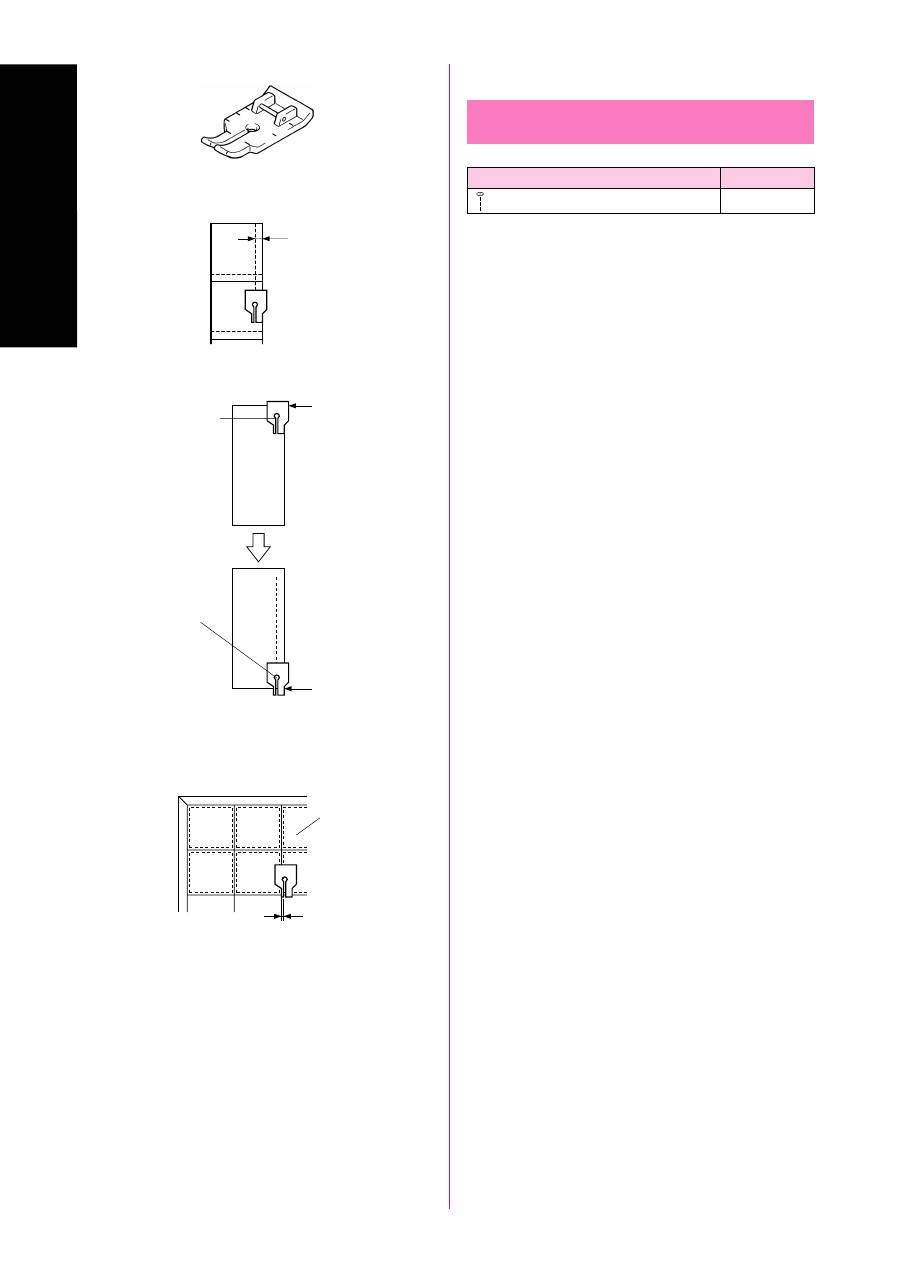
75
USING ATTACHMENTS AND APPLICATIONS
HEFTEN UND APPLIZIEREN
ИСПОЛЬЗОВАНИЕ ПРИСПОСОБЛЕНИЙ И ИЗГОТОВЛЕНИЕ АППЛИКАЦИЙ
1
3
2
4
5
6
7
A
B
C
OPTIONAL ACCESSORIES
Using the 1/4-Inch Quilting Foot
Pattern
Stitch Length
(Straight Stitch (Center Needle Position))
2-2.5
The 1/4-Inch Quilting Foot is used to sew fixed seam allowance 6.5
mm (1/4") when piecing together a quilt. (See
fig. A
)
1. Set the Pattern Selection Dial to Straight Stitch.
Set the Stitch Length between 2 and 2.5.
2. Change the foot to the 1/4-Inch Quilting Foot.
1
Seam allowance (1/4", 6.5 mm)
3. Position the presser foot over the fabric and sew as shown in
fig.
B
and
C
.
•
Achieving an accurate seam allowance. (See
fig. B
)
2
Beginning of stitching.
3
Align this mark with edge of fabric.
4
End of stitching
5
Align this mark with edge of fabric.
•
Quickly stitch together a quilt. (See
fig. C
)
6
Top of fabric.
7
Seam (1/8", 3.2 mm)

76
USING ATTACHMENTS AND APPLICATIONS
HEFTEN UND APPLIZIEREN
ИСПОЛЬЗОВАНИЕ ПРИСПОСОБЛЕНИЙ И ИЗГОТОВЛЕНИЕ АППЛИКАЦИЙ
OPTIONALES ZUBEHÖR
Einsatz des Patchworkfuß
Stichmuster
Stichlänge
(Geradstich (Nadelposition Mitte))
2-2,5
Der Patchworkfuß wird benutzt, um z. B. bei Stepparbeiten mit einer
festen Nahtzugabe von 6,5 mm zu nähen (siehe
Abb. A
).
1. Stellen Sie das Stichmuster-Einstellrad auf Geradstich ein.
Stellen Sie die Stichlänge auf einen Wert zwischen 2 und 2,5 ein.
2. Bringen Sie den Patchworkfuß an.
1
Nahtzugabe (6,5 mm)
3. Positionieren Sie den Nähfuß auf dem Stoff, und nähen Sie wie in
Abb.
B
und
C
gezeigt.
•
Um eine präzise Nahtzugabe zu erzielen. (Siehe
Abb. B
)
2
Nahtbeginn
3
Richten Sie diese Markierung mit der Stoffkante aus.
4
Nahtende
5
Richten Sie diese Markierung mit der Stoffkante aus.
•
Schnelles Nähen einer Steppdecke. (Siehe
Abb. C
)
6
Stoffoberseite
7
Saum (3,2 mm)
ДОПОЛНИТЕЛЬНЫЕ ПРИНАДЛЕЖНОСТИ
Использование нап авляющей
лапки 1/4 дюйма (6,5 мм)
Стежок
Длина стежка
(П ямой стежок (Цент альное положение иглы))
2-2,5
Напавляющая лапка ј дюйма (6,5 мм) позволяет выполнять
соединительный шов на асстоянии 6,5 мм (1/4 дюйма) от к омки
ткани п и изготовлении лоскутного одеяла. (См.
ис. A
)
1. Установите учку выбо а типа стежка на п ямой стежок.
Установите длину стежка в педелах между 2 и 2,5.
2. Замените лапку на нап авляющую лапку 1/4 дюйма (6,5 мм).
1
П ипуск шва (1/4 дюйма, 6,5мм)
3. Расположите нажимную лапку над тканью и выполните
ст очку, как показано на
ис.
B
и
C
.
• Достижение точного пип
уска шва. (См.
ис. B
)
2
Начало ст очки.
3
Установите данную отметку на одну линию с
к омкой ткани.
4
Конец ст очки
5
Установите данную отметку на одну линию с
к омкой ткани.
• Позволяет быст о сшить лоскутное одеяло. (См.
ис. C
)
6
Лицевая сто она ткани.
7
Шов (1/8 дюйма, 3,2мм)
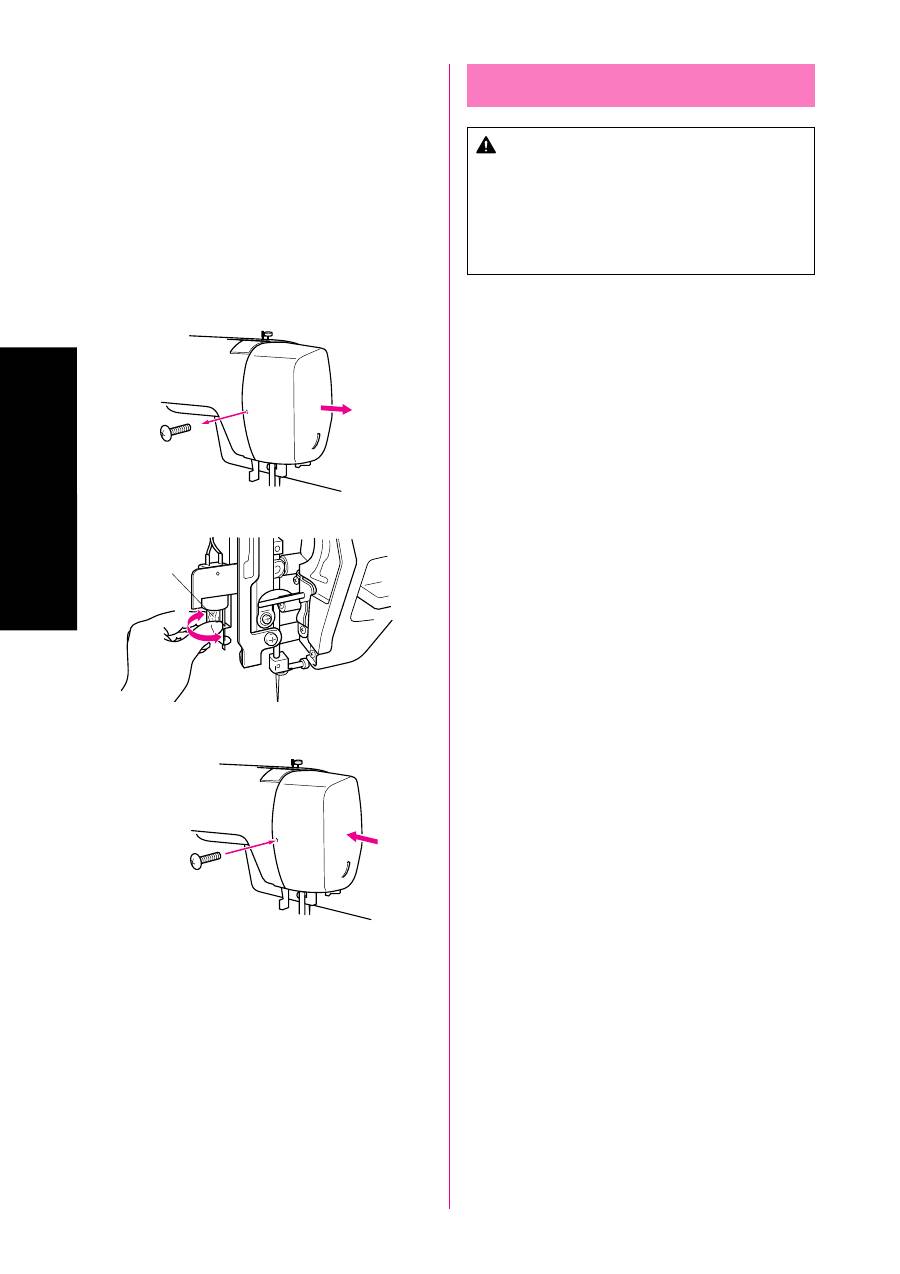
77
MAINTENANCE
WARTUNG
ТЕХНИЧЕСКОЕ ОБСЛУЖИВАНИЕ
Changing the Light Bulb
CAUTION
•
Turn off the main power switch and unplug the machine
before changing the light bulb. If the main power switch
is on when the light bulb is changed, an electric shock
may result. If the machine is on and foot controller is
stepped on, injuries may result.
•
To avoid burns, give the light bulb time to cool before
changing it.
1. Remove the power supply plug from the outlet.
2. Loosen the screw on the reverse side of sewing head as shown
in
fig. A
.
3. Remove the light cover from the machine as illustrated in
fig. A
.
4. Replace the sewing light bulb. (Se
fig. B
)
1
Bulb
1
Loosen
2
Tighten
5. Reattach the light cover and fasten the screw as shown in
fig.
C
.
A
1
1
2
B
C
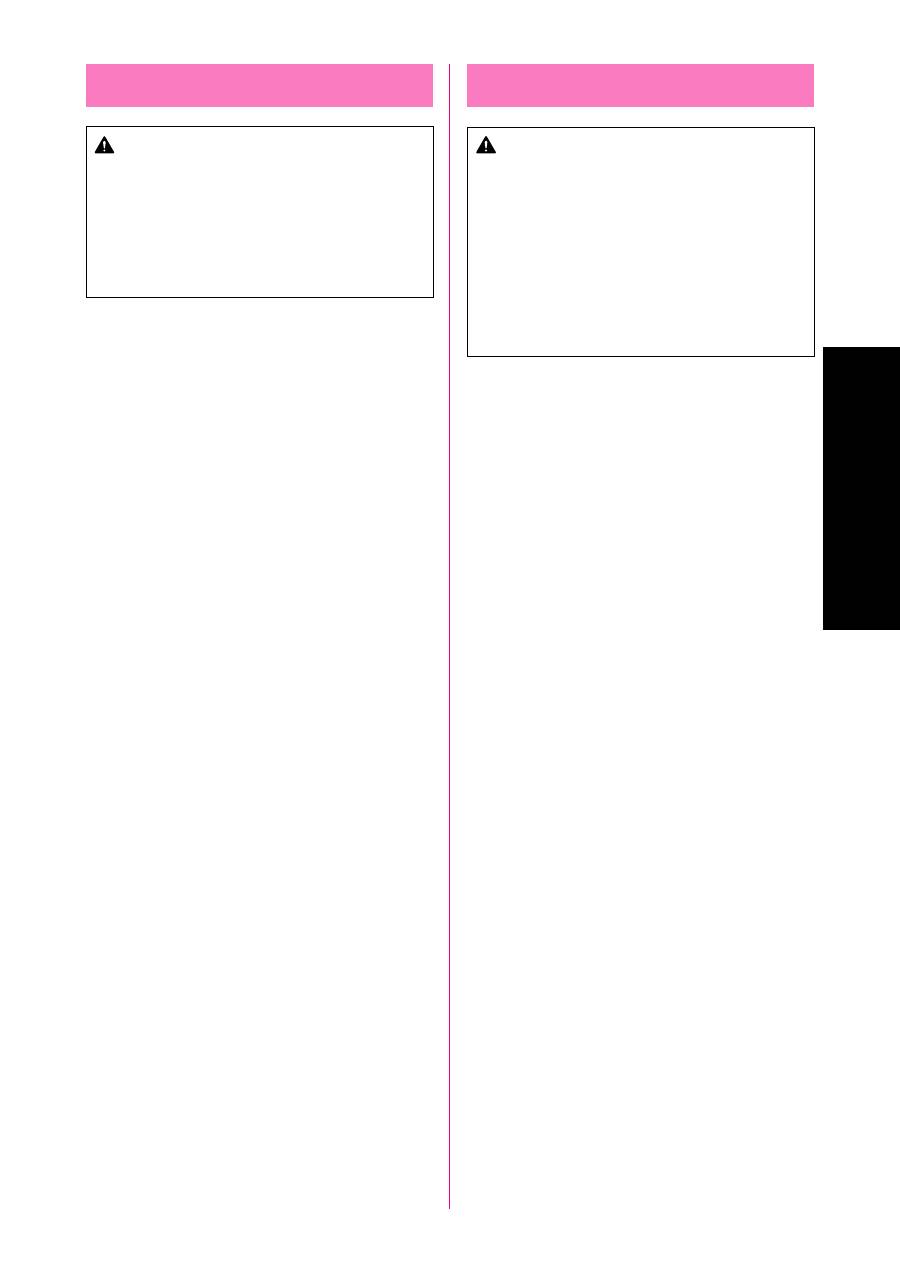
78
MAINTENANCE
WARTUNG
ТЕХНИЧЕСКОЕ ОБСЛУЖИВАНИЕ
Замена лампочки освещения
ПРЕДОСТЕРЕЖЕНИЕ
• Пе ед заменой лампочки освещения выключите
выключатель питания на машине и отсоедините
штепсель шну а питания от
озетки. Если
выключатель питания останется в положении
«включено» во в емя замены лампочки освещения,
возможно по ажение элект ическим током. Если
машина включена, то п и случайном нажатии на
педель ножного конт олле а возможно получение
т авмы.
• Чтобы избежать ожогов, пе ед заменой лампочки
освещения подождите некото ое в емя, чтобы
лампочка остыла.
1. Отсоедините штепсель шну а питания от озетки.
2. Отвинтите винт к епления к ышки с об атной сто оны
швейной головки, как показано на
ис. А
.
3. Снимите к ышку с машины, как показано на
ис. А
.
4. Замените лампочку. (См.
ис. B
)
1
Лампочка
1
Напавление вывинчивания
2
Напавление завинчивания
5. Установите к ышку на место и завинтите винт, как показано
на
ис. C
.
Nählichtlampe auswechseln
VORSICHT
•
Schalten Sie den Netzschalter aus und ziehen Sie vor dem
Auswechseln der Glühbirne den Netzstecker aus der Steckdose.
Wenn der Netzschalter auf Ein “ON” steht, wenn die Glühlam-
pe gewechselt wird, besteht die Gefahr elektrischer Schläge.
Wenn die Maschine eingeschaltet ist und das Fußpedal betätigt
wird, kann es zu schweren Verletzungen kommen.
•
Lassen Sie die Glühlampe zuerst abkühlen, damit Sie sich beim
Auswechseln nicht verbrennen.
1. Ziehen Sie den Netzstecker aus der Netzsteckdose.
2. Lösen Sie die Schraube an der Rückseite des Nähfußes, wie in
Abb. A
gezeigt.
3. Nehmen Sie die Abdeckplatte von der Maschine, wie in
Abb. A
gezeigt.
4. Ersetzen Sie die Nählichtlampe. (Siehe
Abb. B
)
1
Lampe
1
Lösen
2
Festziehen
5. Setzen Sie die Abdeckplatte wieder auf und ziehen Sie die Schraube
wieder fest –
Abb. C
.
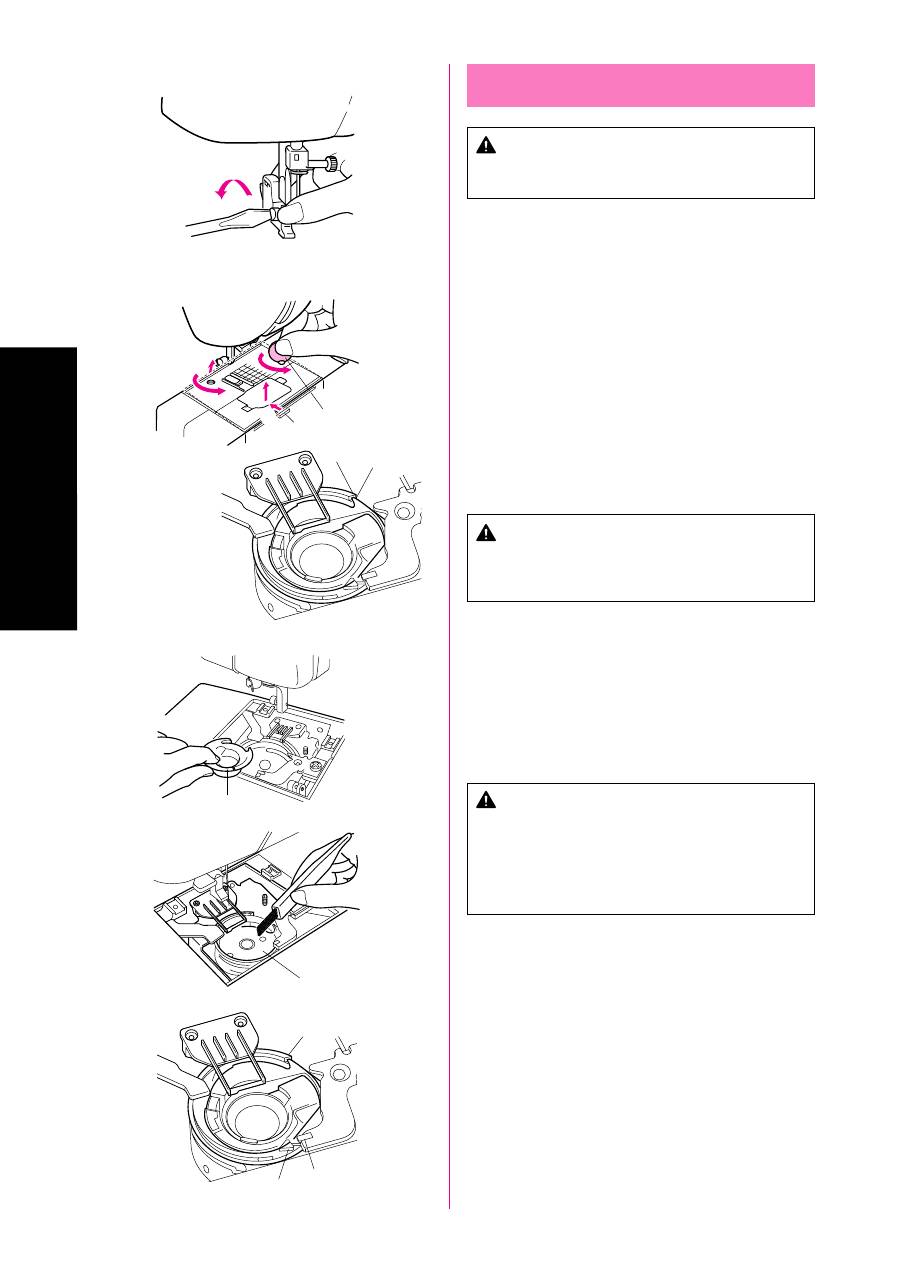
79
MAINTENANCE
WARTUNG
ТЕХНИЧЕСКОЕ ОБСЛУЖИВАНИЕ
Cleaning
CAUTION
Be sure to unplug the machine before cleaning it. Other-
wise, electric shock or injury may result.
1. Remove the power supply plug from the outlet.
2. Raise the needle and the presser foot.
3. Loosen the presser foot screw and the needle clamp screw to
remove the presser foot holder and the needle. (See
fig. A
)
4. Usibg a coin, remove the screws.
The tab at the front of the needle plate is hooked into the
machine.
Slightly raise the back of the needle plate
1
, and slide it back to
remove the tab
2
.
Then lift the plate to remove it
3
.
1
Use a coin or screwdriver.
2
Tab
5. Turn the balance wheel toward you until the notch of shuttle
aligns with the shelf of race as shown in the illustration.
3
Notch of shuttle race
4
Shelf of race
CAUTION
Be sure to turn the balance wheel towards the front of the
machine. Turning the balance wheel in the other direction
may damage the machine.
6. Remove the race. (See
fig. C
)
7. Clean out lint and dust.
*
Use soft fabric to clean the race. DO NOT OIL the race or shuttle.
(See
fig. D
)
5
Race
6
Shuttle
*
DO NOT OIL.
CAUTION
•
Do not use a damaged race or shuttle. Otherwise, the
thread may tangle and cause a poor finish, or the needle
may break. You can get the proper parts from your
authorized dealer.
•
Be sure to insert the race in the correct position. Other-
wise, the needle may break.
8. Assemble the race first then the needle plate.
When installing the race, be sure that the notch of shuttle is in the
same position that it was when the shuttle hook was removed
and that the shelf on the race aligns with the spring.
Install the needle plate by sliding it to the left (the reverse of its
removal procedure).
7
Notch of shuttle
8
Shelf
9
Spring
A
B
1
1
2
3
2
4
3
C
D
5
6
7
8
9
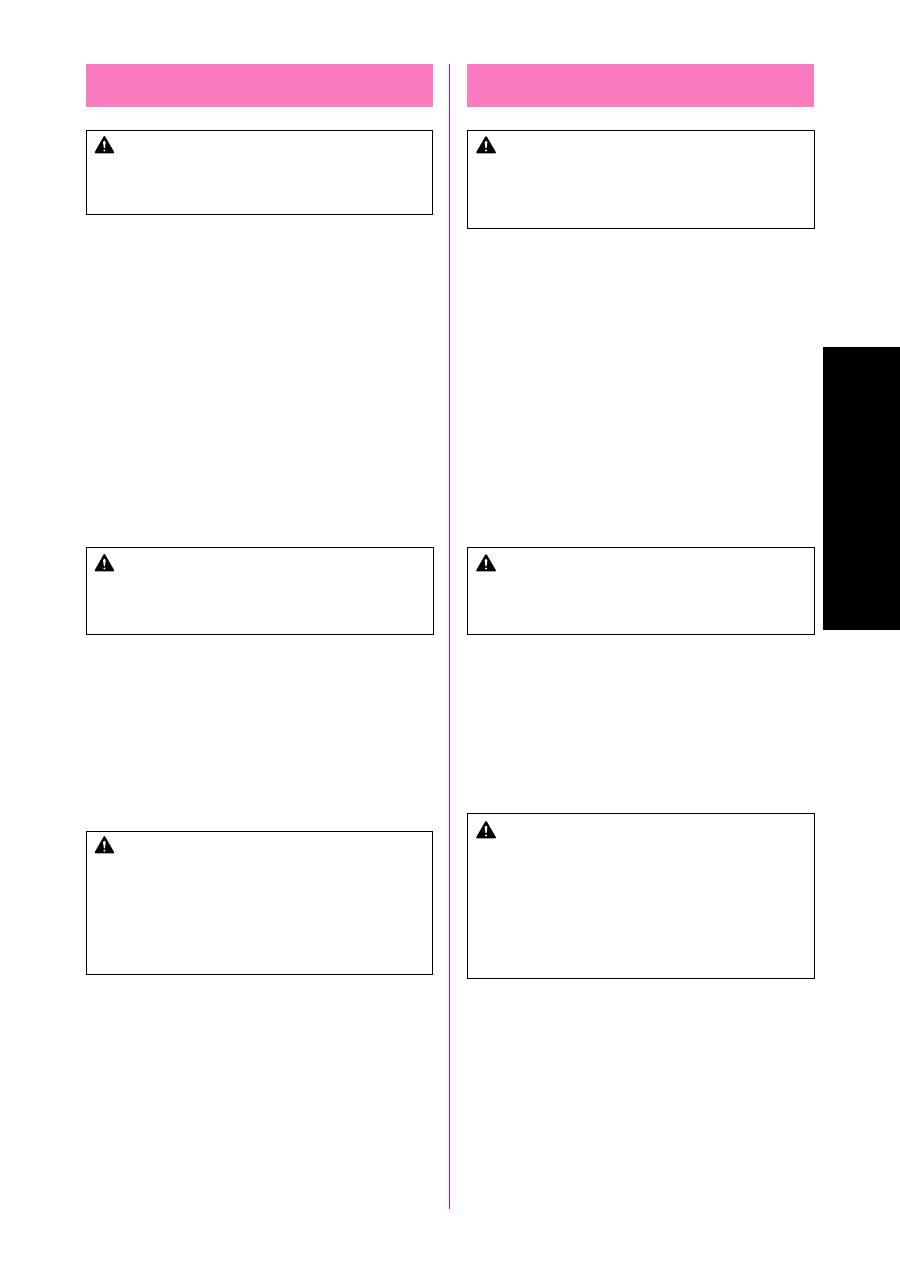
80
MAINTENANCE
WARTUNG
ТЕХНИЧЕСКОЕ ОБСЛУЖИВАНИЕ
Чистка машины
ПРЕДОСТЕРЕЖЕНИЕ
Пе ед чисткой машины обязательно отсоедините
штепсель шну а питания от озетки. В п отивном
случае возможно по ажение элект ическим током или
получение иной т авмы.
1. Отсоедините штепсель шну а питания от озетки.
2. Поднимите иглу и нажимную лапку.
3. Ослабьте винт нажимной лапки и к епежный винт на
игловодителе, чтобы снять де жатель нажимной лапки и
иглу. (См.
ис. A
)
4. Отвинтите винты монеткой.
Язычок, асположенный в пе едней части игольной
пластины, зацеплен за машину.
Слегка п иподнимите заднюю часть игольной пластины
1
и затем сдвиньте ее назад, чтобы освободить язычок
2
.
Затем поднимите пластину и снимите ее с машины
3
.
1
Воспользуйтесь отве ткой или монеткой.
2
Язычок
5. Пове ните маховик на себя, чтобы паз челнока был на
одной линии с выступом обоймы, как показано на исунке.
3
Паз челнока
4
Выступ обоймы
ПРЕДОСТЕРЕЖЕНИЕ
Убедитесь в том, что Вы пово ачиваете маховик на
себя. Пово ачивая маховик в об атном нап авлении,
Вы можете пов едить машину.
6. Снимите обойму. (См.
ис. C
)
7. Удалите пух и пыль.
*
П от ите обойму мягкой салфеткой. НЕ СМАЗЫВАЙТЕ
обойму и челнок. (См.
ис. D
)
5
Обойма
6
Челнок
* НЕ СМАЗЫВАТЬ.
ПРЕДОСТЕРЕЖЕНИЕ
• Зап ещается использовать пов ежденную обойму
или челнок. В п отивном случае возможно
запутывание нитки и получение некачественной
ст очки или поломка иглы. Новые детали можно
заказать у Вашего диле а.
• П оследите за тем, что Вы вставили обойму в
п авильном положении. В п отивном случае
возможна поломка иглы.
8. Сначала установите на место обойму, а затем - игольную пластину.
Во в емя установки обоймы, последите за тем, чтобы
выступ челнока был в том же положении, в кото ом он
была в момент снятия к ючка челнока, а также за тем,
чтобы выступ обоймы был на одной линии с п ужиной.
Вставьте игольную пластину, сдвинув ее влево (в
напавлении, об атном напавлению ее снятия).
7
Паз челнока
8
Выступ
9
П ужина
Reinigung
VORSICHT
Ziehen Sie zum Reinigen der Nähmaschine das Netzkabel aus der
Steckdose, da Sie sonst der Gefahr von Verletzung und Strom-
schlag ausgesetzt sind.
1. Ziehen Sie den Netzstecker aus der Steckdose.
2. Bringen Sie die Nadel auf die höchste Position und heben Sie den
Nähfuß an.
3. Lösen Sie die Nähfußschraube und die Nadelbefestigungsschraube, und
nehmen Sie den Nähfußhalter und die Nadel heraus. (Siehe
Abb. A
)
4. Entfernen Sie die Schrauben mit einer Münze.
Der Zapfen vorne an der Stichplatte ist in die Maschine gehakt. Heben
Sie die Rückseite der Stichplatte
1
leicht an, und schieben Sie sie
zurück, um den Zapfen
2
zu entfernen.
Dann heben Sie die Platte zum Entfernen
3
an.
1
Benutzen Sie eine Münze oder einen Schraubendreher
2
Zapfen
5. Drehen Sie das Handrad in Ihre Richtung, bis die Kerbe im Greifer-
innenteil auf die Greiferbahn ausgerichtet ist, wie in der Abbildung
gezeigt.
3
Kerbe im Greifergehäuse
4
Spitze des Greifers
VORSICHT
Drehen Sie das Handrad immer nur auf sich zu, nie von sich weg.
Drehen des Handrads in die andere Richtung kann eine Beschä-
digung der Maschine zur Folge haben.
6. Nehmen Sie das Greiferinnenteil heraus. (Siehe
Abb. C
)
7. Entfernen Sie jegliche angesammelte Stofffasern und Fadenreste aus
dem Greifergehäuse.
* Benutzen Sie ein weiches Tuch, um das Greiferinnenteil zu reinigen.
Ölen Sie KEINESFALLS das Greifergehäuse, den Lauf oder den
Greifer. (Siehe
Abb. D
)
5
Greiferinnenteil
6
Greifer
*
NICHT ÖLEN.
VORSICHT
•
Benutzen Sie keinen Greifer und keine Spulenkapsel, die beschä-
digt sind. Der Faden könnte sich verwickeln, was zu einem Mißlin-
gen des Stick- bzw. Nähmusters oder einem Abbrechen der Nadel
führen kann. Die richtigen Ersatzteile für Ihre Maschine erhalten
Sie bei Ihrem Händler.
•
Achten Sie darauf, dass Sie den Greifer richtig einsetzen. Die
Nadel könnte sonst abbrechen.
8. Setzen Sie zuerst die Bahn ein, und bringen Sie dann die Stichplatte
wieder an.
Achten Sie beim Einsetzen der Bahn darauf, daß die Kerbe im Greifer
sich in der gleichen Position befindet, in der sie beim Herausnehmen
war, und daß die Bahn des Greifers gegen die Feder anliegt.
Setzen Sie die Stichplatte wieder ein durch Schieben nach links
(umgekehrt wie beim Herausnehmen).
7
Kerbe im Greifergehäuse
8
Haken
9
Feder
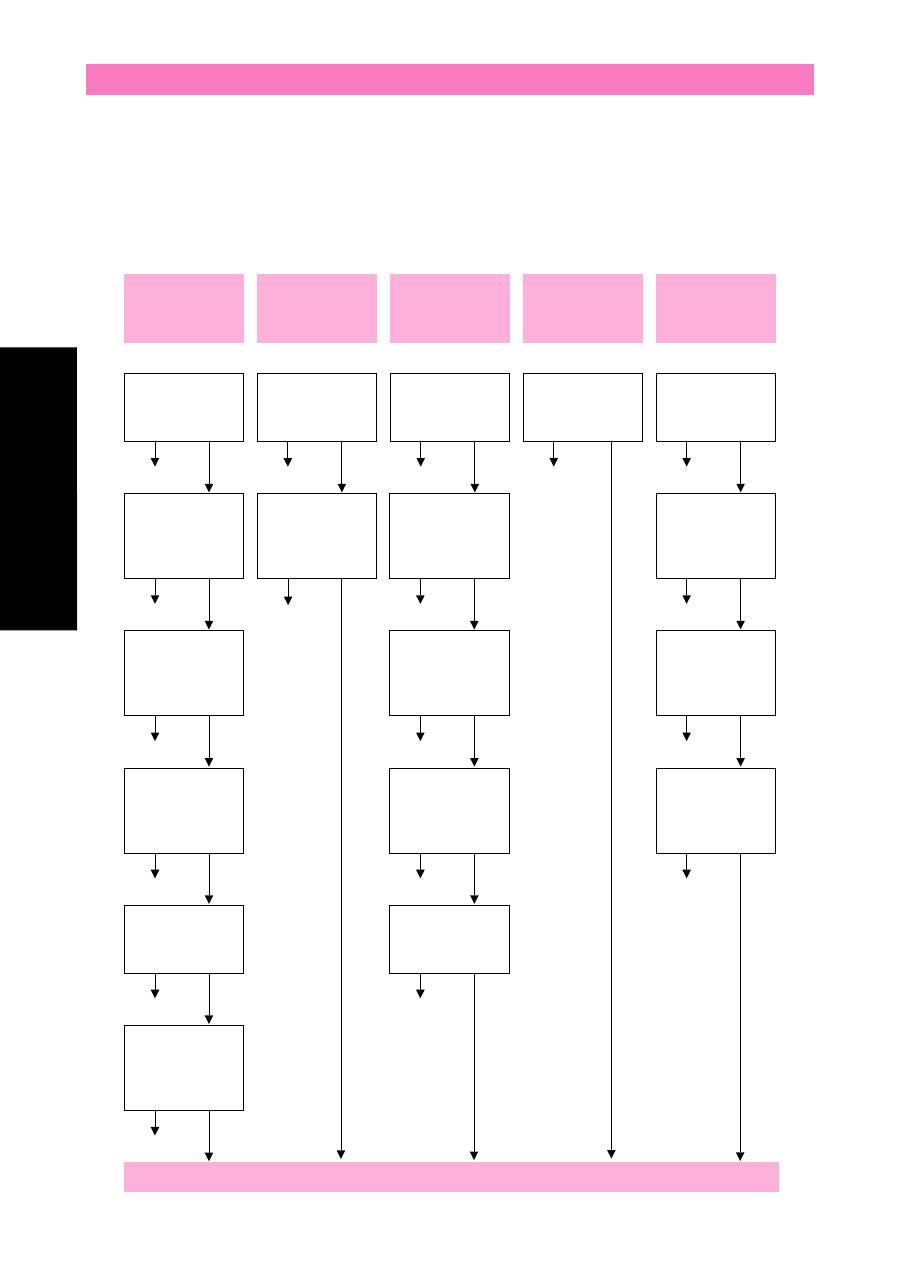
81
MAINTENANCE
WARTUNG
ТЕХНИЧЕСКОЕ ОБСЛУЖИВАНИЕ
No
Page 31
No
Page 39
No
Page 79
No
Page 9
Bobbin is not
threaded properly in
the race.
Inferior needle is
used.
Lint is clinging to the
bottom of the needle
plate.
The combination of
needle size/thread
size/fabric is
incorrect.
SKIPPED
STITCHES
LOOP IN SEAM
FABRIC
PUCKERS
CONTACT YOUR LOCAL SERVICE CENTER
LOWER THREAD
BREAKS
UPPER THREAD
BREAKS
PERFORMANCE CHECK LIST
Whenever sewing difficulties are encountered, review the section in this instruction manual that details the operation you are performing to
make sure you are correctly using the machine. If the problem continues, the following check list may help you to improve the operation.
If you still have difficulties, contact your nearest authorized service center.
No
Page 33
Upper thread is not
correctly installed.
No
Page 31
No
Page 9
No
Page 38
No
Page 38
Lower thread is
tangled.
Needle is incorrectly
inserted.
Thread tension is
incorrect.
Thread tension is
too tight.
No
Page 33
Upper thread is
tangled.
No
Page 33
Threading is not
correct.
No
Page 38
Upper thread
tension is too tight.
No
Page 39
No
Page 9
Wrong needle is
used.
The combination of
needle size/thread
size/fabric is
incorrect.
No
Page 33
Spool of thread is
not correctly
installed.
No
Page 9
Needle is bent or
not sharp.
No
Page 39
The combination of
needle size/thread
size/fabric is
incorrect.
No
Page 33
Threading is not
correct.
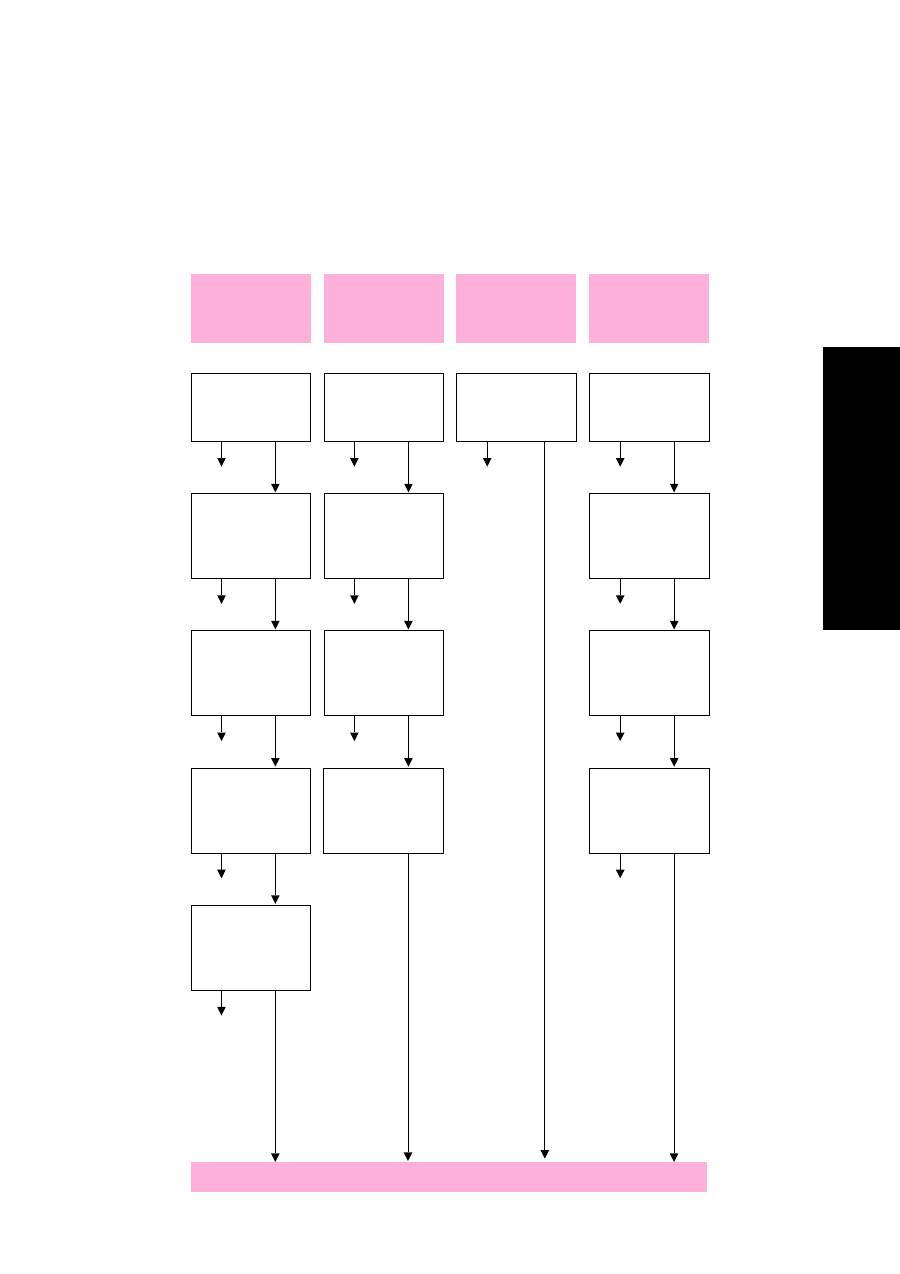
82
MAINTENANCE
WARTUNG
ТЕХНИЧЕСКОЕ ОБСЛУЖИВАНИЕ
No
Page 8
Foot controller is not
used correctly.
MACHINE IS
NOISY OR SLOW
MACHINE DOES
NOT START
CONTACT YOUR LOCAL SERVICE CENTER
FABRIC DOES
NOT FEED
PROPERLY
No
Page 24
Stitch Length Dial is
set at no feeding.
("0")
No
Page 79
No
Page 5
Lint is clinging to the
bottom of the needle
plate.
Power supply plug is
removed from outlet.
No
Page 39
The combination of
needle size/thread
size/fabric is
incorrect.
No
Page 7
Main power switch
is turned off.
No
Page 9
Inferior needle is
used.
No
Page 29
The bobbin winder
shaft is slid to the
right.
No
Page 33
Thread is tangled.
No
Page 55
(Not available on models
XL-6040, XL-6041,
XL-6042, and XL-6043)
The buttonhole lever
is pushed toward the
back of the machine.
NEEDLE
BREAKS
No
Page 9
Needle is not
correctly inserted.
No
Page 9
Inferior needle is
used.
No
Page 39
The combination of
needle size/thread
size/fabric is
incorrect.
No
Fabric is pulled
excessively. Let the
feed dogs move the
fabric. Do not pull
the fabric.
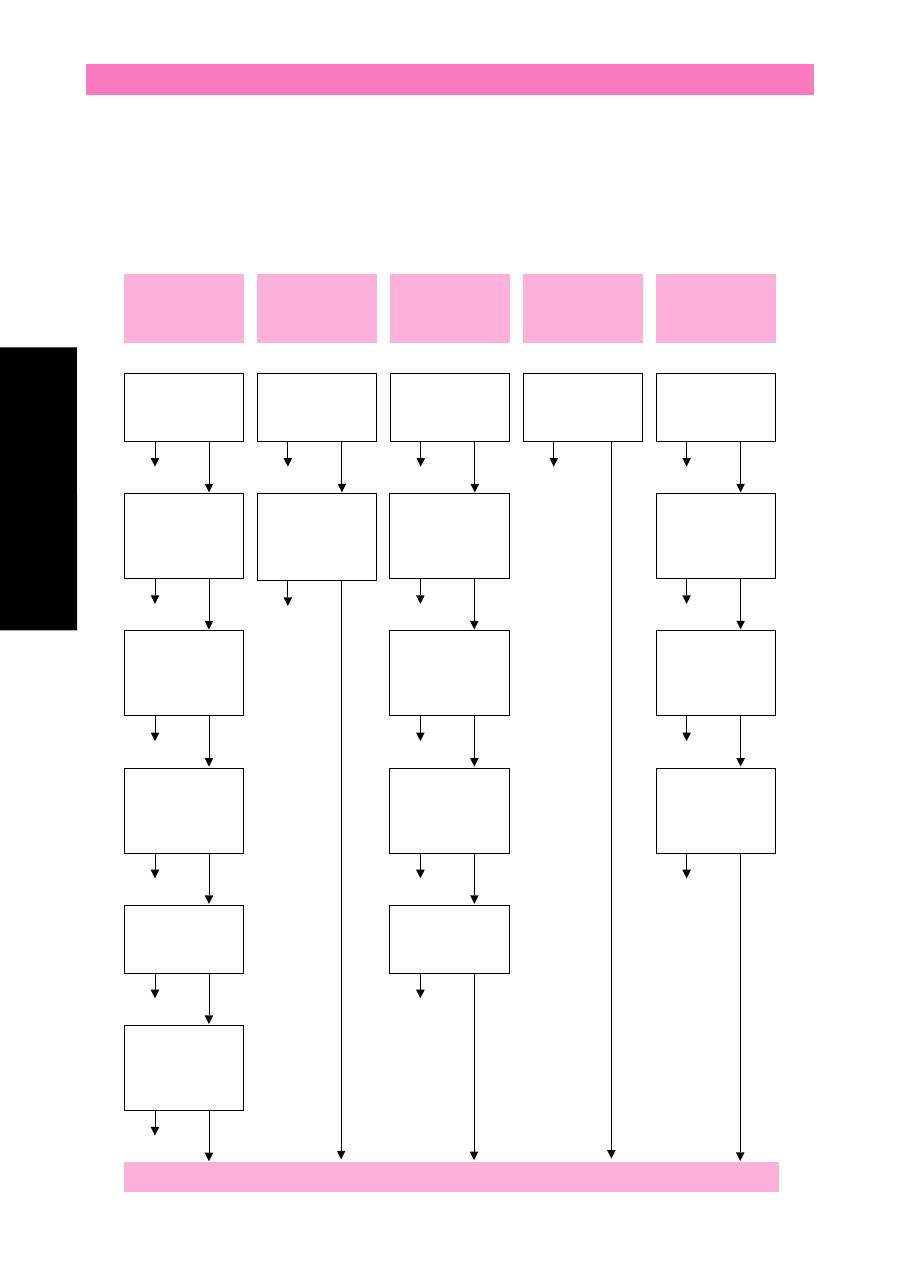
83
MAINTENANCE
WARTUNG
ТЕХНИЧЕСКОЕ ОБСЛУЖИВАНИЕ
Nein
Seite 39
Nein
Seite 80
Nein
Seite 10
Nein
Seite 32
WENDEN SIE SICH AN EINE WERKSTATT
CHECKLISTE
Wann immer Sie beim Nähen auf Schwierigkeiten stoßen, lesen Sie den Abschnitt dieser Anleitung, die den Vorgang beschreibt, den Sie gerade
durchführen, um sicherzugehen, daß Sie die Nähmaschine richtig bedienen. Wenn das Problem dadurch nicht gelöst wurde, kann die folgende Checkliste
bei der Analyse behilflich sein.
Wenn die Probleme weiterbestehen, wenden Sie sich an den nächsten Reparaturservice.
Nein
Nein
Seite 32
Nein
Seite 10
Nein
Seite 38
Nein
Seite 38
Nein
Seite 34
Nein
Seite 34
Nein
Seite 38
Nein
Seite 39
Nein
Seite 10
Nein
Seite 34
Nein
Seite 10
Nein
Seite 39
Nein
Seite 34
Der Oberfaden ist
nicht richtig
eingefädelt.
Oberfadenspannung
ist zu hoch.
Oberfaden ist
verheddert.
Nadel ist verbogen
oder stumpf.
Die Kombination
Nadelstärke/
Fadenstärke/Stoff ist
nicht richtig.
Unterfaden ist
verheddert.
Nadel ist falsch
eingesetzt.
Schlechte Nadel
wurde verwendet.
Die Kombination
Nadelstärke/
Fadenstärke/Stoff ist
nicht richtig.
Fadenführung ist
nicht richtig.
Fadenspannung ist
nicht richtig.
Fadenspannung ist zu
hoch.
Fadenführung ist
nicht richtig.
Falsche Nadel wurde
verwendet.
Die Kombination
Nadelstärke/
Fadenstärke/Stoff ist
nicht richtig.
SCHLAUFEN IN
DER NAHT
UNTERFADEN
REISST
OBERFADEN
REISST
STOFF
STICHE WER-
DEN AUSGE-
LASSEN
Unter der Stichplatte
befinden sich Fasern
oder Fusseln.
Garnrolle ist nicht
richtig installiert.
Spule wurde nicht
richtig eingefädelt.
Seite 34
KRÄUSELT
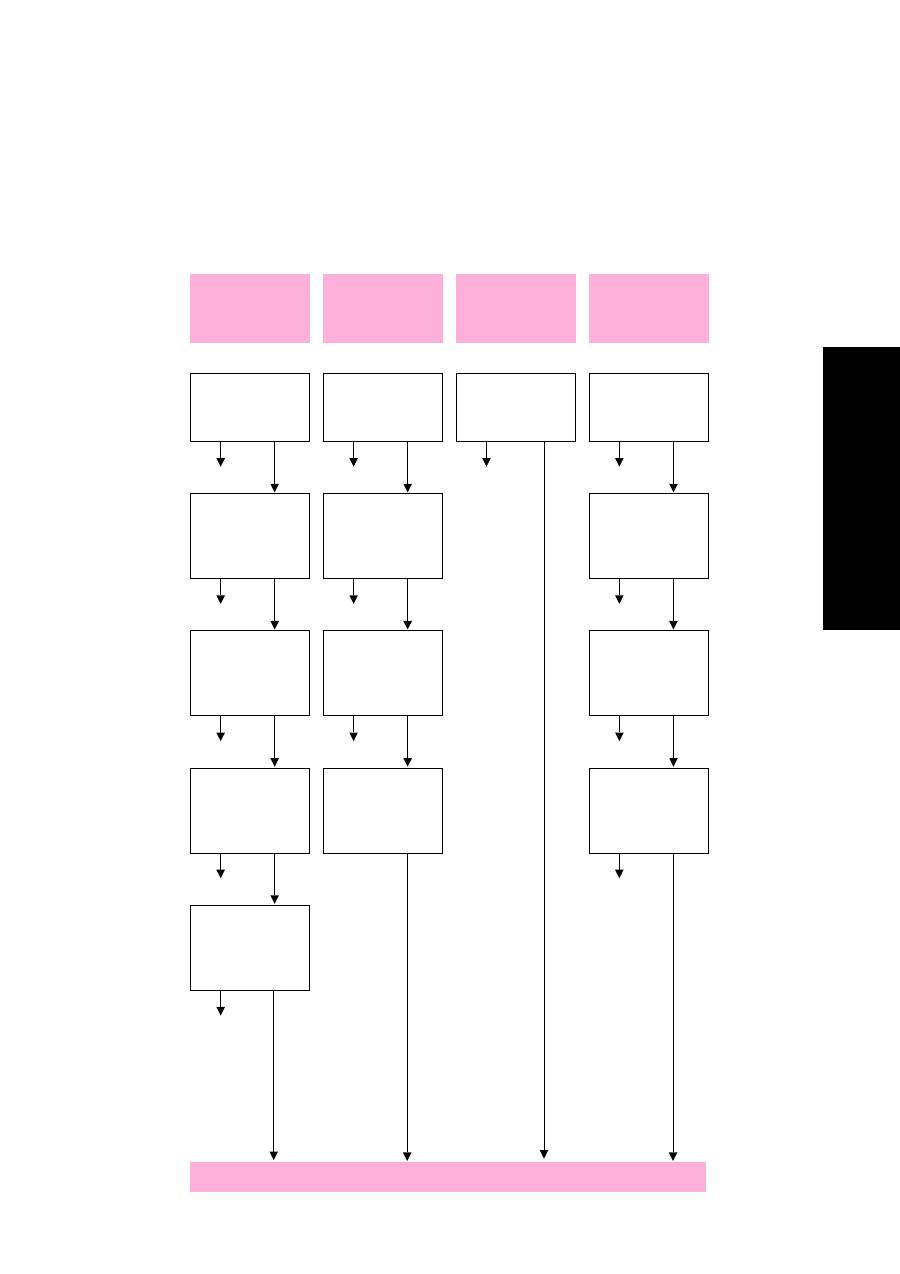
84
MAINTENANCE
WARTUNG
ТЕХНИЧЕСКОЕ ОБСЛУЖИВАНИЕ
Nein
Seite 56
(Nicht bei den Modellen XL-
6040, XL-6041, XL-6042 und
XL-6043 erhältlich.)
Der Knopflochhebel ist
nach hinten gestellt.
Nein
Seite 8
WENDEN SIE SICH AN EINE WERKSTATT
Nein
Seite 25
Nein
Seite 80
Nein
Seite 6
Nein
Seite 39
Nein
Seite 7
Nein
Seite 10
Nein
Seite 30
Nein
Seite 34
Nein
Seite 10
Nein
Seite 10
Nein
Seite 39
Nein
Nadel ist nicht richtig
eingesetzt.
Die Kombination
Nadelstärke/
Fadenstärke/Stoff ist
nicht richtig.
Schlechte Nadel
wurde verwendet.
Schlechte Nadel
wurde verwendet.
Die Kombination
Nadelgröße/
Fadenstärke/Stoff ist
nicht richtig.
Der Netzstecker steckt
nicht in der Steckdose.
Netzschalter ist
ausgeschaltet.
Der Stoff wird zu sehr
gezogen. Lassen Sie den
Transporteur den Stoff
transportieren. Ziehen
Sie nicht am Stoff.
Die Spulerwelle ist
nach rechts geschoben.
MASCHINE IST
LAUT ODER
LANGSAM
STOFF WIRD
NICHT RICHTIG
TRANSPOR-
TIERT
NADEL BRICHT
MASCHINE
LÄUFT NICHT AN
Stichlängen-
Drehschalter ist auf
niedrigster Stellung.
(“0”)
Unter der Stichplatte
befinden sich Fasern
oder Fusseln.
Fußanlasser wird
nicht richtig benutzt.
Faden ist verheddert.
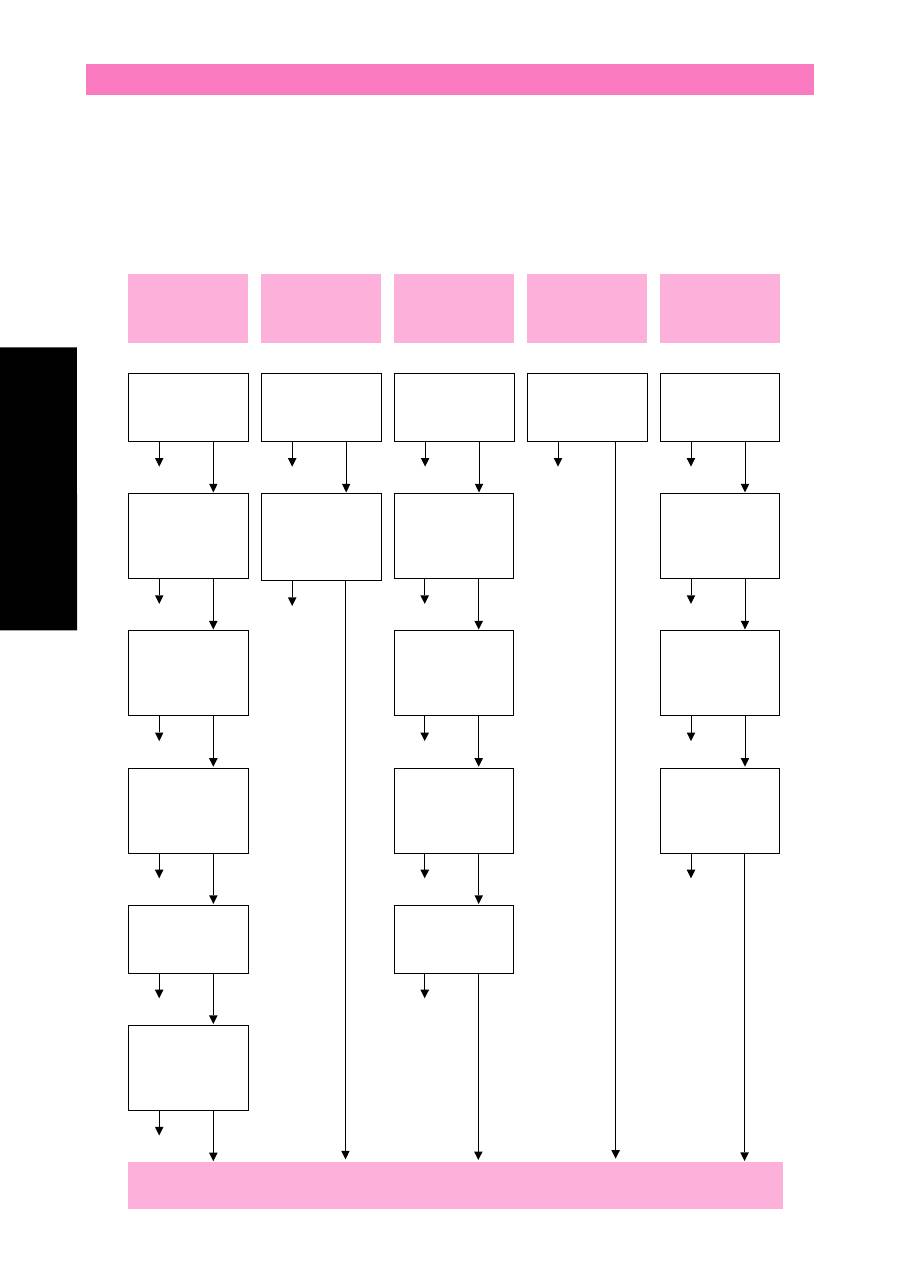
85
MAINTENANCE
WARTUNG
ТЕХНИЧЕСКОЕ ОБСЛУЖИВАНИЕ
ТАБЛИЦА ВОЗМОЖНЫХ НЕИСПРАВНОСТЕЙ
Если в поцессе аботы возникли какие-либо поблемы, об атитесь к соответствующему азделу настоящего уководства,
чтобы убедиться в том, что та или иная опе ация выполняется Вами п авильно. Если и после этого не удается уст анить
возникшие поблемы, об атитесь к пиведенной ниже таблице. Если уст анить дефект, исп
ользуя екомендации данной
таблицы, не педставляется возможным, об атитесь за квалифици ованной консультацией в ближайший цент технического
обслуживания.
Нет
Ст .40
Нет
Ст .80
Нет
Ст .10
Нет
Ст .32
Нитка шпульки
непавильно
запавлена за
челночный
к ючок.
Используется
пов ежденная
игла.
Налипание пуха на
нижней
пове хности
игольной
пластины.
Непавильная
комбинация номе
иглы/номе нитки/
тип ткани.
ПРОПУСКИ
СТЕЖКОВ
ОБРАЗОВАНИЕ
ПЕТЕЛЬ НА ШВЕ
ОБРАЗОВАНИЕ
МОРЩИН НА
ТКАНИ
ОБРАТИТЕСЬ ЗА ДОПОЛНИТЕЛЬНОЙ КОНСУЛЬТАЦИЕЙ В
БЛИЖАЙШИЙ ЦЕНТР ТЕХНИЧЕСКОГО ОБСЛУЖИВАНИЯ
ОБРЫВ
НИЖНЕЙ НИТКИ
ОБРЫВ
ВЕРХНЕЙ НИТКИ
Нет
Ст .34
Непавильная
запавка ве хней
нитки.
Нет
Ст .32
Нет
Ст .10
Нет
Ст .38
Нет
Ст .38
Спутывание
нижней нитки.
Непавильная
установка иглы.
Непавильная
установка
натяжения ниток.
Ч езме ное
натяжение ниток.
Нет
Ст .34
Спутывание
ве хней нитки.
Нет
Ст .34
Непавильная
запавка ниток.
Нет
Ст .38
Ч езме ное
натяжение
ве хней нитки.
Нет
Ст .40
Нет
Ст .10
Используемая игла
не соответствует
типу опе ации.
Непавильная
комбинация номе
иглы/номе нитки/
тип ткани.
Нет
Ст .34
Непавильно
установлена
катушка с ниткой.
Нет
Ст .10
Игла иск ивлена
или затуплена.
Нет
Ст .40
Непавильная
комбинация номе
иглы/номе нитки/
тип ткани.
Нет
Ст .34
Непавильная
запавка ниток.
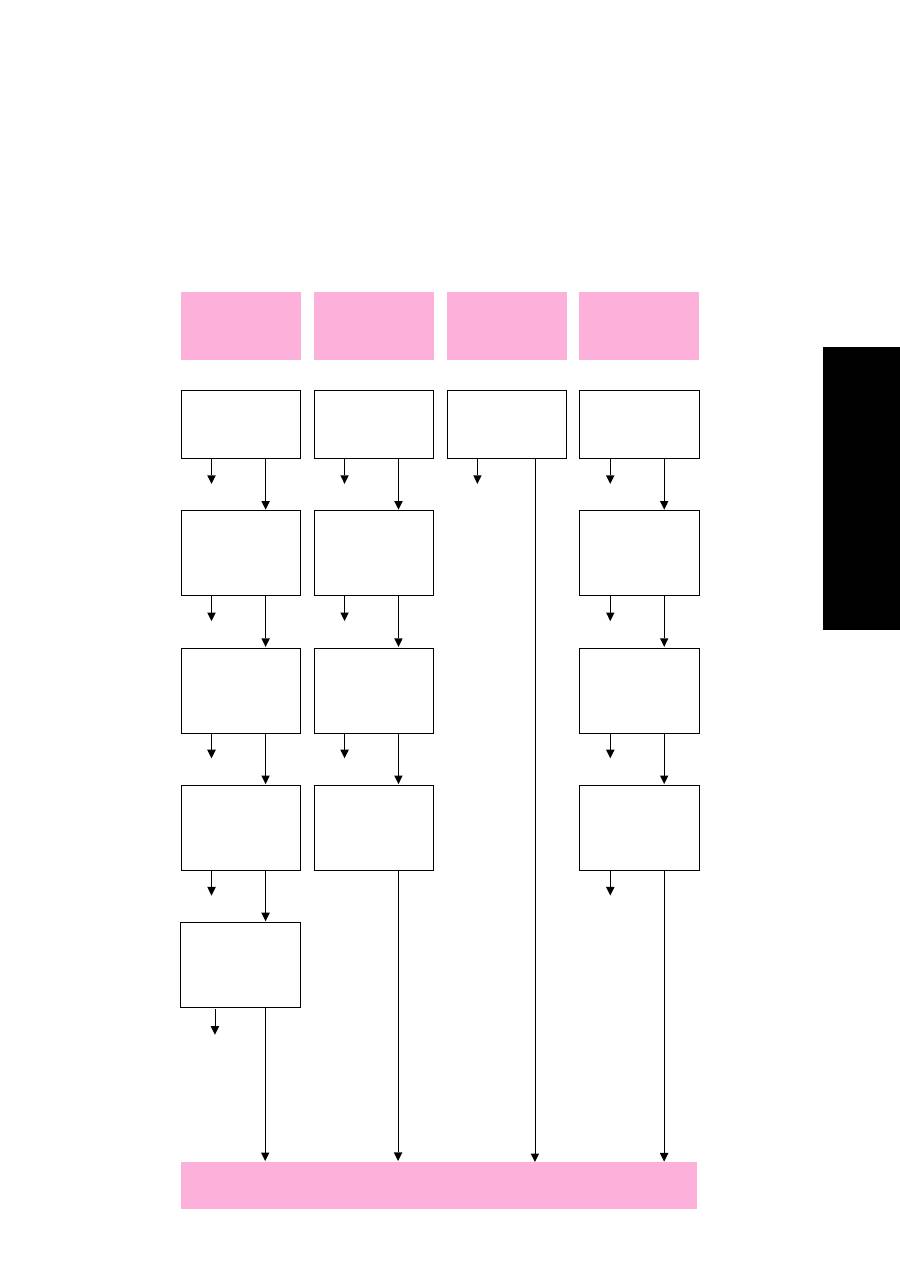
86
MAINTENANCE
WARTUNG
ТЕХНИЧЕСКОЕ ОБСЛУЖИВАНИЕ
Нет
Ст . 8
Нет
Ст .80
Нет
Нет
Ст .56
Неве но
используется
ножной
конт олле .
ЧРЕЗМЕРНЫЙ ШУМ И
НИЗКАЯ СКОРОСТЬ
В РАБОТЕ МАШИНЫ
МАШИНА НЕ
ЗАПУСКАЕТСЯ
ОБРАТИТЕСЬ ЗА ДОПОЛНИТЕЛЬНОЙ КОНСУЛЬТАЦИЕЙ В
БЛИЖАЙШИЙ ЦЕНТР ТЕХНИЧЕСКОГО ОБСЛУЖИВАНИЯ
НЕПРАВИЛЬНАЯ
ПОДАЧА ТКАНИ
Нет
Ст .25
Ручка егули ования
длины стежка
установлена в положение
нулевой подачи. (“0”)
Нет
Ст . 6
Налипание пуха на
нижнюю
пове хность
игольной пластины.
Штепсель шну а
питания не
вставлен в
озетку.
Нет
Ст .40
Непавильная
комбинация номе
иглы/номе нитки/
тип ткани.
Нет
Ст . 7
Выключен главный
выключатель
питания.
Нет
Ст .10
Используется
пов ежденная
игла.
Нет
Ст .30
Мотальный вал
шпульки сдвинут
впаво.
Нет
Ст .34
Спутывание нитки.
(Отсутствует на моделях XL-6040,
XL-6041, XL-6042, and XL-6043.)
Рычаг механизма обметывания
петель нажат от себя.
ПОЛОМКА ИГЛЫ
Нет
Ст .10
Игла установлена
непавильно.
Нет
Ст .10
Используется
пов ежденная
игла.
Нет
Ст .40
Непавильная
комбинация номе
иглы/номе нитки/
тип ткани.
Ч езме ное пинудительное
вытягивание ткани. Не тяните
ткань. Обеспечьте ее движение
только за счет действия зубчатой
ейки механизма подачи ткани.
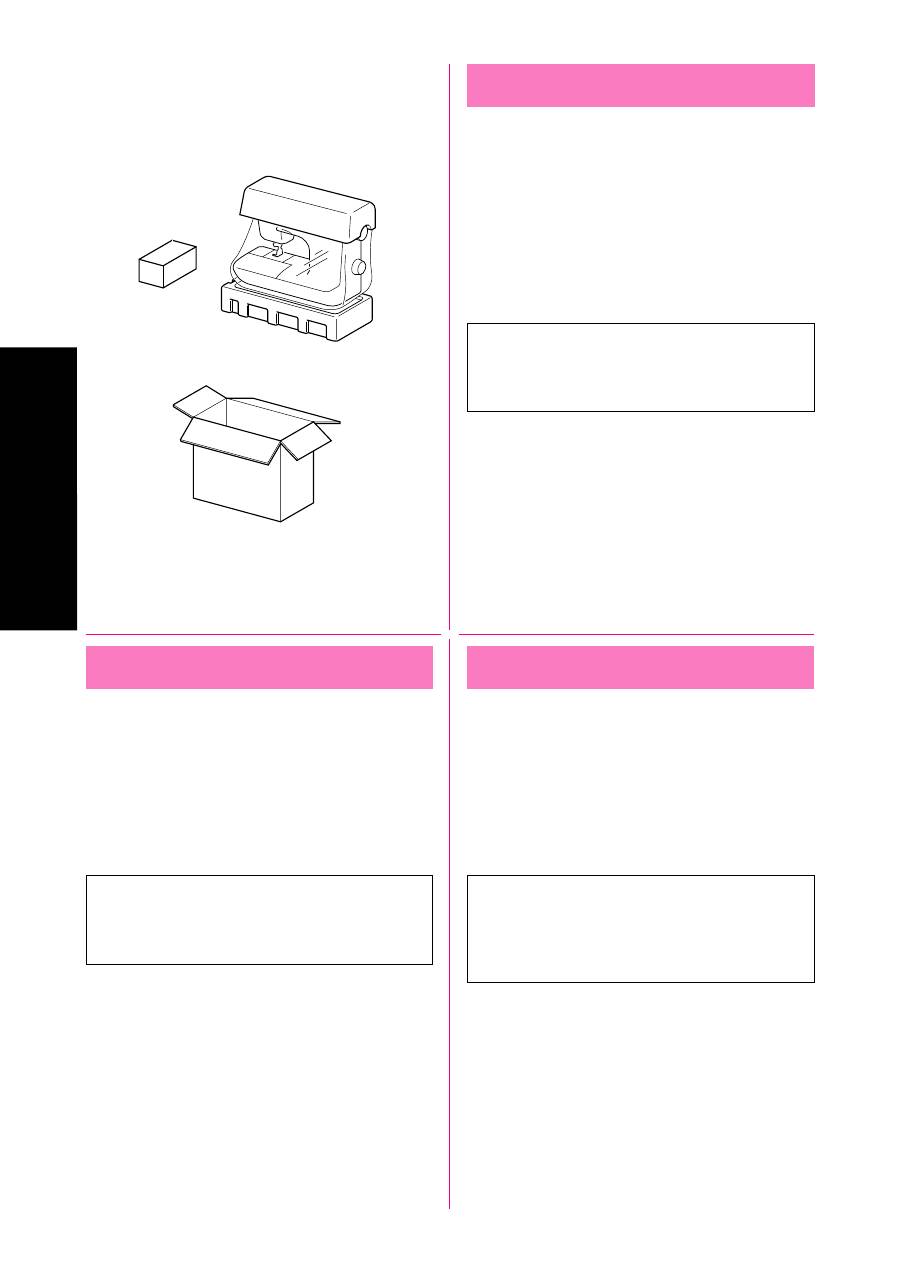
87
MAINTENANCE
WARTUNG
ТЕХНИЧЕСКОЕ ОБСЛУЖИВАНИЕ
Repacking the Machine
Keep the carton and packing materials for future use. It may
become necessary to reship the machine. Improper packing or
improper packing material could result in damage during shipping.
Instructions for repacking the machine are illustrated.
IMPORTANT
This packing material is designed to prevent damage in
transit. Save this packing material in the event it is needed to
transport this machine.
Maschine verpacken
Bewahren Sie Karton und Verpackungsmaterial für zukünftigen Ge-
brauch auf. Es kann erforderlich sein, die Maschine einzuschicken.
Unsachgemäße Verpackung oder falsches Verpackungsmaterial kann die
Maschine beim Transport beschädigen. Die Anweisungen zum verpacken
der Maschine sind hier abgebildet.
WICHTIG
Dieses Verpackungsmaterial ist dazu gedacht, Schäden beim Trans-
port zu vermeiden. Bewahren Sie dieses Verpackungsmaterial für
den Fall auf, daß die Maschine transportiert werden muß.
Пе еупаковка машины
Сох аните упаковочную ко обку и п очие упаковочные
мате иалы на будущее. Они могут пигодиться, если
пот ебуется пе евозить машину. Плохая упаковка и
использование случайных упаковочных мате иалов могут
п ивести к пов еждению машины п и т анспо ти овке.
Инст укции по пе еупаковке машины п иведены в
иллюст и ованной фо ме на исунке.
ВНИМАНИЕ!
Упаковочная та а данной машины специально
аз аботана для защиты от пов еждений во в емя
т анспо ти овки. Сох аните упаковку на случай
возможной повто ной т анспо ти овки.

88
INDEX
INDEX
УКАЗАТЕЛЬ
Page
1/4-Inch Quilting Foot ............................................... 3, 75
A
Accessories .................................................................... 3
Appliqués ..................................................................... 68
Arrowhead Stitch .......................................................... 51
B
Bead Stitch ................................................................... 51
Blind Hem Stitch ........................................................... 46
Bobbin Winder .............................................................. 28
Bridging Stitch .............................................................. 49
Buttonhole .................................................................... 55
Buttonhole Fine Adjustment Screw .............................. 61
Buttonhole Lever .......................................................... 55
Button Sewing .............................................................. 64
C
Changing the Light Bulb ............................................... 77
Changing the Presser Foot .......................................... 11
Checking the Needle ...................................................... 9
Cleaning ....................................................................... 79
Comb Stitch .................................................................. 53
Connecting Plugs ........................................................... 5
D
Darning ......................................................................... 67
Decorative Hem Stitch ................................................. 49
Decorative Stitch .......................................................... 51
Double Action Stitch ..................................................... 49
Drawing Up Lower Thread ........................................... 35
E
Elastic Overlock Stitch ................................................. 53
Elastic Shell Tuck Stitch ............................................... 53
Elastic Stitch ................................................................. 48
Embroidering ................................................................ 69
F
Fabric/Thread/Needle Combinations ........................... 39
Fagoting Stitch ............................................................. 52
Feather Stitch ............................................................... 54
Flat bed attachment with accessory compartment .. 12, 27
Foot Controller ............................................................... 8
Foot Controller Jack ....................................................... 5
Free-arm Style ............................................................. 27
G
Gathering ..................................................................... 65
H
Hole for Vertical Spool Pin ........................................... 37
L
Lower Threading .......................................................... 31
M
Main Power/Sewing Light Switch ................................... 7
Monogramming ............................................................ 69
Page
N
Needle
Inspection ............................................................. 9
Replacement ........................................................ 9
O
Overedge Stitching ....................................................... 53
P
Parallelogram Stitch ..................................................... 51
Patchwork .................................................................... 52
Pattern Indication Window ........................................... 13
Pattern Selection Dial ................................................... 13
Performance Check List ............................................... 81
Presser Foot Lever ....................................................... 33
Principal parts ................................................................ 1
R
Race ............................................................................ 79
Rampart Stitch ............................................................. 49
Repacking the Machine ................................................ 87
Reverse Sewing Lever ................................................. 26
S
Scallop Stitch ............................................................... 50
Sewing Light
Light Bulb Replacement ................................. 77
Switch ............................................................... 7
Shell Tuck Stitch .......................................................... 47
Shuttle .......................................................................... 79
Slant Overlock Stitch .................................................... 53
Spool Pin and Spool Cap ....................................... 28, 33
Springaction Quilting Foot ........................................ 3, 73
Stitch Length Dial ................................................... 13, 24
Straight Stitch ................................................... 42, 65, 67
Stretch Blind Hem Stitch .............................................. 46
T
Thread Tension ............................................................ 38
Triangle Stitch .............................................................. 51
Triple Stretch Stitch ...................................................... 42
Triple Zigzag Stretch Stitch .......................................... 54
Troubleshooting ........................................................... 81
Twin Needle Sewing .................................................... 36
U
Upper Tension Control Dial .......................................... 38
Upper Threading .......................................................... 33
W
Walking Foot ............................................................ 3, 71
Winding the Bobbin ...................................................... 28
Z
Zigzag Presser Foot ................................................. 3, 11
Zigzag Stitch .............................................. 45, 64, 68, 69
Zipper Foot ............................................................... 3, 65
Zipper Insertion ............................................................ 65
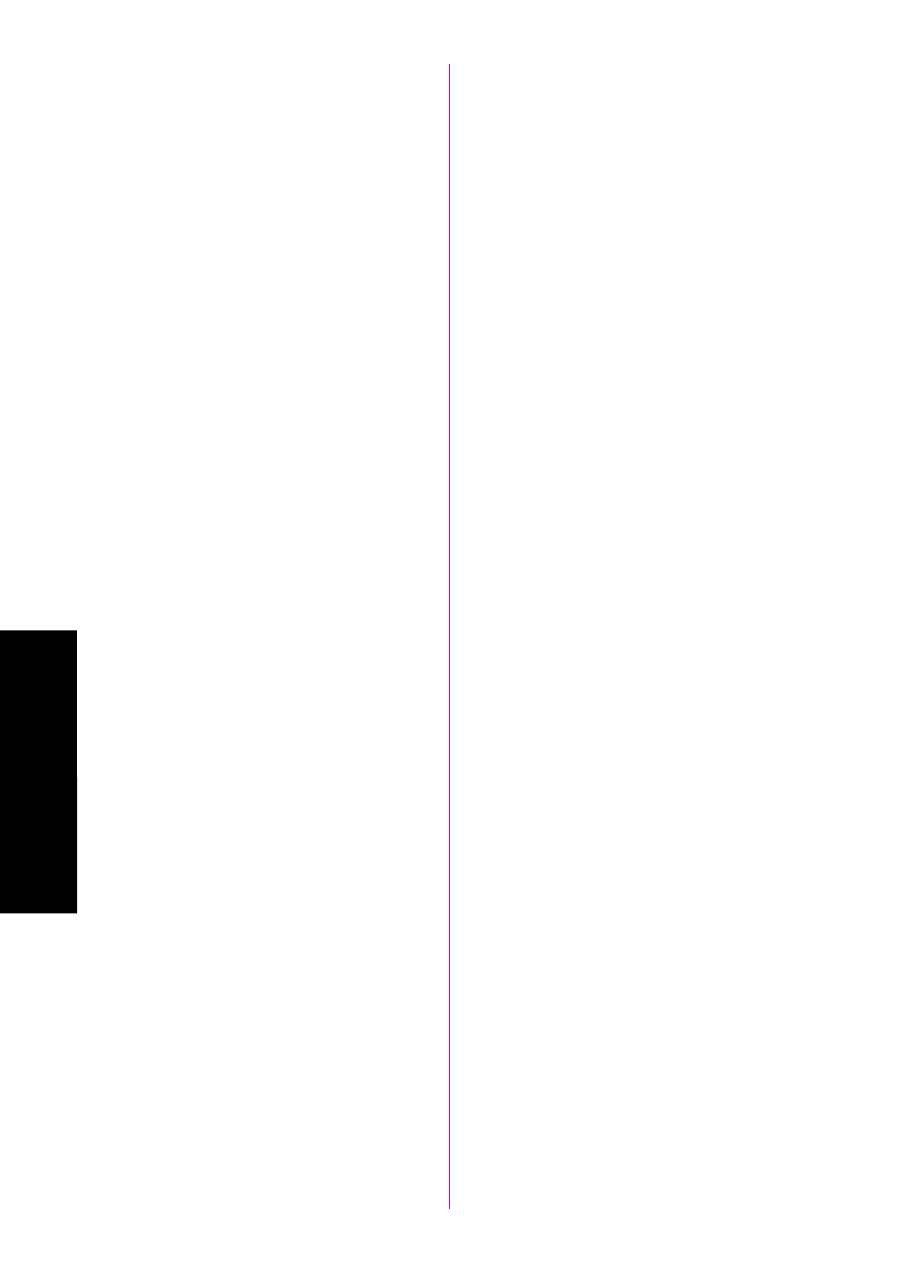
89
INDEX
INDEX
УКАЗАТЕЛЬ
Seite
A
Anschiebetisch & Zubehörfach ....................................... 12, 27
Applizieren ............................................................................ 68
Aufspulen .............................................................................. 28
Automatischer Einfädler ........................................................ 56
B
Biesenstich ............................................................................. 47
Blindsaumstich ...................................................................... 46
Bogennaht .............................................................................. 50
Brückenstich .......................................................................... 49
C
Checkliste .............................................................................. 83
D
Dekorativer Stich ................................................................... 51
Dreiecksstich ......................................................................... 51
Dreifach-Zickzackstich .......................................................... 54
E
Einnähen eines Reißverschlusses .......................................... 66
Elastik-Muschelstich ............................................................. 53
Elastikstich ............................................................................ 48
Elastische Schrittnaht ............................................................ 49
Elastischer Blindstich ............................................................ 46
F
Fadenspannung ...................................................................... 38
Flachnaht ............................................................................... 49
Freiarm .................................................................................. 27
Fußanlasser .............................................................................. 8
Fußanlasserbuchse ................................................................... 6
G
Garnrollenstift und -Halter .............................................. 28, 34
Geradstich .................................................................. 42, 66, 67
Grätenstich ............................................................................. 54
Greifer .................................................................................... 80
Greiferinnenteil ...................................................................... 80
H
Hauptbestandteile .................................................................... 2
Heraufholen des Unterfadens ................................................ 35
Hexenstich ............................................................................. 52
K
Kabelanschlüsse ...................................................................... 6
Kammstich ............................................................................. 53
Ketteln & Versäubern ............................................................ 53
Knöpfe annähen ..................................................................... 64
Knopfloch .............................................................................. 56
Knopfloch-Feineinstellung .................................................... 62
M
Maschine verpacken .............................................................. 87
Monogramme ........................................................................ 70
Seite
N
Nadel
ersetzen ....................................................................... 10
prüfen .......................................................................... 10
Nadel prüfen .......................................................................... 10
Nähen mit Doppelnadel ......................................................... 36
Nähfuß wechseln ................................................................... 11
Nähfußhebel .......................................................................... 34
Nählich
Ersetzen der Lampe .................................................... 78
-Schalter ........................................................................ 7
Nählichtlampe auswechseln .................................................. 78
Netz-/Nählichtschalter ............................................................. 7
O
Oberfadenführung .................................................................. 34
Oberfadenspannung ............................................................... 38
Obertransportfuß ................................................................ 4, 72
Öffnung für Vertikalen Garnrollenhalter ............................... 37
Overlock-Schrägstich ............................................................ 53
P
Palisadenstich ........................................................................ 49
Parallelogrammstich .............................................................. 51
Patchwork .............................................................................. 52
Patchworkfuß ..................................................................... 4, 76
Pfeilspitzenstich ..................................................................... 51
Perlzierstich ........................................................................... 51
Problemlösungen ................................................................... 83
R
Reffen .................................................................................... 66
Reinigung .............................................................................. 80
Reißverschlußfuß ............................................................... 4, 66
Rückwärtstaste ....................................................................... 26
S
Schraube für Knopflochfeineinstellung ................................. 62
Spuler .................................................................................... 28
Stichlängen-Einstellrad .................................................... 14, 25
Stichmuster - Einstellrad ....................................................... 14
Stichmusteranzeige ................................................................ 14
Stickarbeiten .......................................................................... 70
Stoff-/Faden-/Nadelkombinationen ....................................... 39
Stopf/Quiltfuß .................................................................... 4, 74
Stopfen ................................................................................... 67
Stretch-Geradstich ................................................................. 42
U
Überwendlingnaht ................................................................. 53
Unterfadenfühung .................................................................. 32
Z
Zickzacknähfuss ................................................................ 4, 11
Zickzackstich ....................................................... 45, 64, 68, 70
Zubehör ................................................................................... 4

90
INDEX
INDEX
УКАЗАТЕЛЬ
Ст аница
А
Аппликации ................................................................. 68
Б
Бисе ный стежок ....................................................... 51
В
Винт тонкой наст ойки для обметывания петель ........... 62
Возможные неиспавности и сп
особы их уст анения ........... 85
Вшивание застежек-молний ..................................... 66
Выключатель ................................................................ 7
Вытягивание нижней нитки ...................................... 35
Вышивание ................................................................. 70
Г
Главный выключатель питания
/ освещения зоны ст очки ........................................... 7
Гнездо для ве тикального катушечного сте жня .. 37
Д
Двухигольная ст очка ............................................... 36
Деко ативный под убочный стежок ....................... 49
Деко ативный стежок ............................................... 51
З
Замена лампочки освещения ................................... 78
Замена нажимной лапки ........................................... 11
Запавка ве хней нитки ........................................... 34
Запавка нижней нитки ............................................ 32
Зигзагооб азный стежок ........................ 45, 64, 68, 70
И
Игла
Замена иглы ...................................................... 10
П ове ка иглы .................................................. 10
Изготовление моног амм .......................................... 70
К
Катушечный сте жень и катушечный колпачок ........ 28, 34
Комбинации тканей, игл и ниток .............................. 40
Л
Лампочка освещения
Замена лампочки освещения .......................... 78
Лапка для вшивания застежек-молний ............... 4, 66
Лапка штопки-вышивки ......................................... 4, 74
Лоскутное шитье ........................................................ 52
M
Мотальный механизм ................................................ 28
Н
Нажимная лапка для ст очки зигзаг ................... 4, 11
Наклонная ове лочная ст очка ............................... 53
Намотка ниток на шпульку ....................................... 28
Напавляющая лап
ка 1/4 дюйма (6,5 мм) ........... 4, 76
Натяжение ниток ....................................................... 38
Ножной конт олле ..................................................... 8
Ст аница
О
Обметочный стежок .................................................. 53
Обметывание петель ................................................. 56
Обойма ........................................................................ 80
Об аботка сбо ок ...................................................... 66
Окошко индикации типа стежка .............................. 14
Основные части машины ............................................. 2
П
Пе еупаковка машины .............................................. 87
Пе истый стежок ....................................................... 54
Платфо ма-пиставка с отделением для
пинадлежностей ................................................ 12, 27
Подшивочная cст очка ............................................. 47
Подшивочная т икотажная ст очка ........................ 46
Потайной под убочный шов ..................................... 46
П инадлежности .......................................................... 4
П ишивание пуговиц ................................................. 64
П ове ка иглы ........................................................... 10
П ямой стежок ............................................... 42, 66, 67
Р
Разъем для ножного конт олле а ............................. 6
Регулято натяжения ве хней нитки ...................... 38
Режим "Free-Arm" ...................................................... 27
Ручка выбо а типа стежка ....................................... 14
Ручка егули ования длины стежка ................. 14, 25
Рычаг лапки для обметывания петель .................... 56
Рычаг нажимной лапки ............................................. 34
Рычаг еве си ования ст очки ............................... 26
С
Соединительные штепсели ......................................... 6
Соединительный стежок ........................................... 52
Стежок ампа т ......................................................... 49
Стежок с двойным эффектом .................................. 49
Ст еловидный стежок .............................................. 51
Ст очка «Г ебешок» ................................................. 53
Ст очка-елочка .......................................................... 50
Ст очка-мостик .......................................................... 49
Ст очка-па аллелог амм ......................................... 51
Т
Таблица возможных неиспавностей ...................... 85
Т еугольный стежок .................................................. 51
T ойная т икотажная ст очка ................................. 42
Т ойная т икотажная ст очка «зигзаг» .................. 54
Ч
Челнок ......................................................................... 80
Чистка машины .......................................................... 80
Ш
Шагающая лапка .................................................... 4, 72
Штопка ........................................................................ 67
Э
Эластичная ове лочная ст очка ............................. 53
Эластичная подшивочная ст очка .......................... 53
Эластичная ст очка .................................................. 48
Оглавление
- ANSCHLIESSEN AN DAS STROMNETZ
- «УКАЗАНИЯ ПО ТЕХНИКЕ БЕЗОПАСНОСТИ»
- PLEASE READ BEFORE USING THIS MACHINE
- BITTE VOR BENUTZUNG DIESER MASCHINE LESEN
- ПОЖАЛУЙСТА, ПРОЧИТАЙТЕ ПЕРЕД НАЧАЛОМ ЭКСПЛУАТАЦИИ МАШИНЫ

